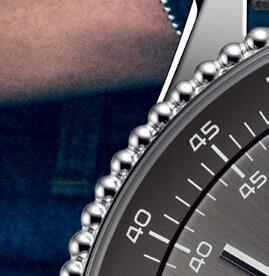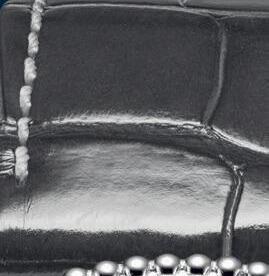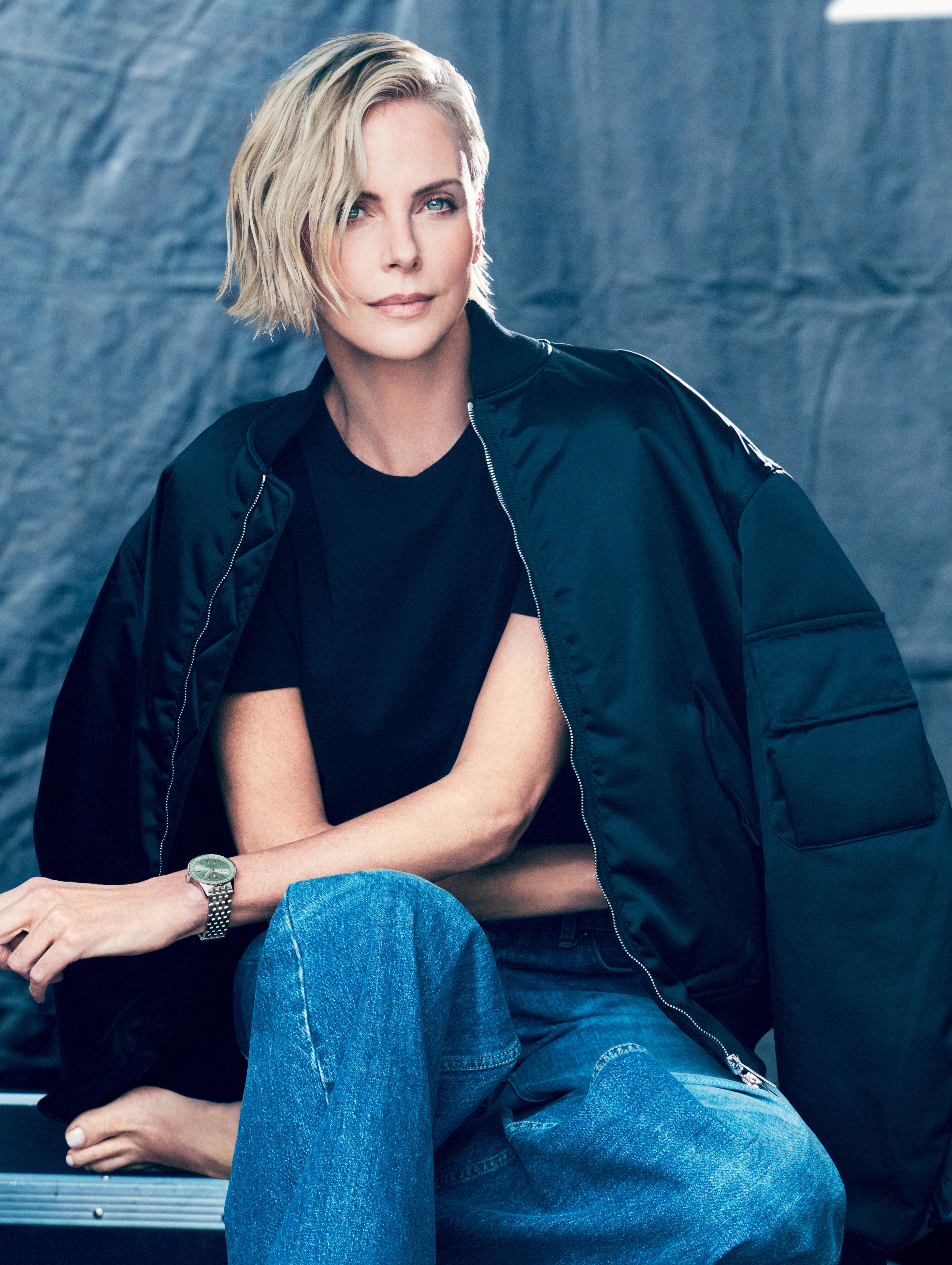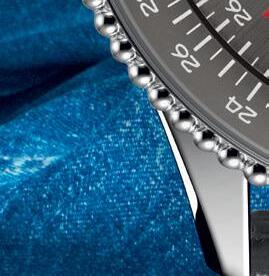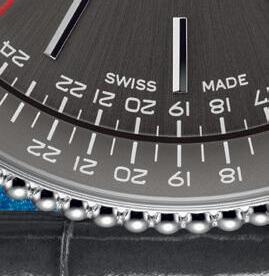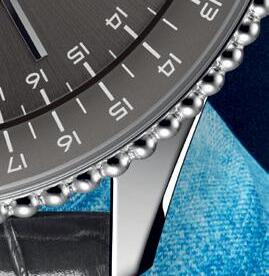BY









BY








18
All-day dining: 24 hours in Hong Kong
This vibrant city offers aroundthe-clock meals from wet markets to white tablecloths.
38 44 52 A modern love a air with Palm Springs
Taking an architecture tour in the desert city that has an unusual link to Hollywood.
Searching for wellness in Ubud
Spring back to life after a water purification ceremony at COMO Shambhala in Bali.
A postcard brought to life in Fiji
The only problem at VOMO in the Mamanucas is how hard it is to book back in again.
Sommeliers’ top desert island sips
We asked Melbourne wine experts the bottle they would save in the event of a shipwreck. 60
Raising the bar in New Zealand
The taste of craft chocolate can change with its surrounds, so what happens in Aotearoa?
The once-sleepy Thai island is set to get even bigger after its starring role in The White Lotus
Head of Content
Penny Cordner-Maas
Creative Lead
Natalie Meneghetti
For all editorial enquiries, contact editorial@luxuryescapes.com
Tourism Boards
Partnerships Manager
Jodie Collins
Strategic Partnerships
Executive
Annika Rothschild
Managing Editor Paul Chai
Content Manager Stephanie Mikkelsen
Strategic Partnerships
Leader
Chris Neill
Partnerships Manager
Michael Grenenger
For all advertising enquiries, contact mediasales@luxuryescapes.com
Luxury Escapes
CEO and Co-founder
Adam Schwab
by
Chief Marketing Officer
Ben Connell
is published by Luxury
(ACN 150 650 927), Level 4, 68 Clarke Street, Southbank, VIC 3006. Ph: 1300 88 99 00. Printed in partnership with Invicium print management company.
What is your favourite island in the world?
We asked Luxury Escapes experts the one place they would happily be marooned.
A wild cycling trip around Sri Lanka
Tea plantations, temples and the odd angry elephant make for a memorable journey.
Stepping back in time on the Greek Islands
A new Australian-owned resort on the island of Folegandros feels like old-school Greece.
e Hawaii we see on the silver screen
From Hawaii FIve-O to Jurassic Park, the island state is a setjetters’ paradise.
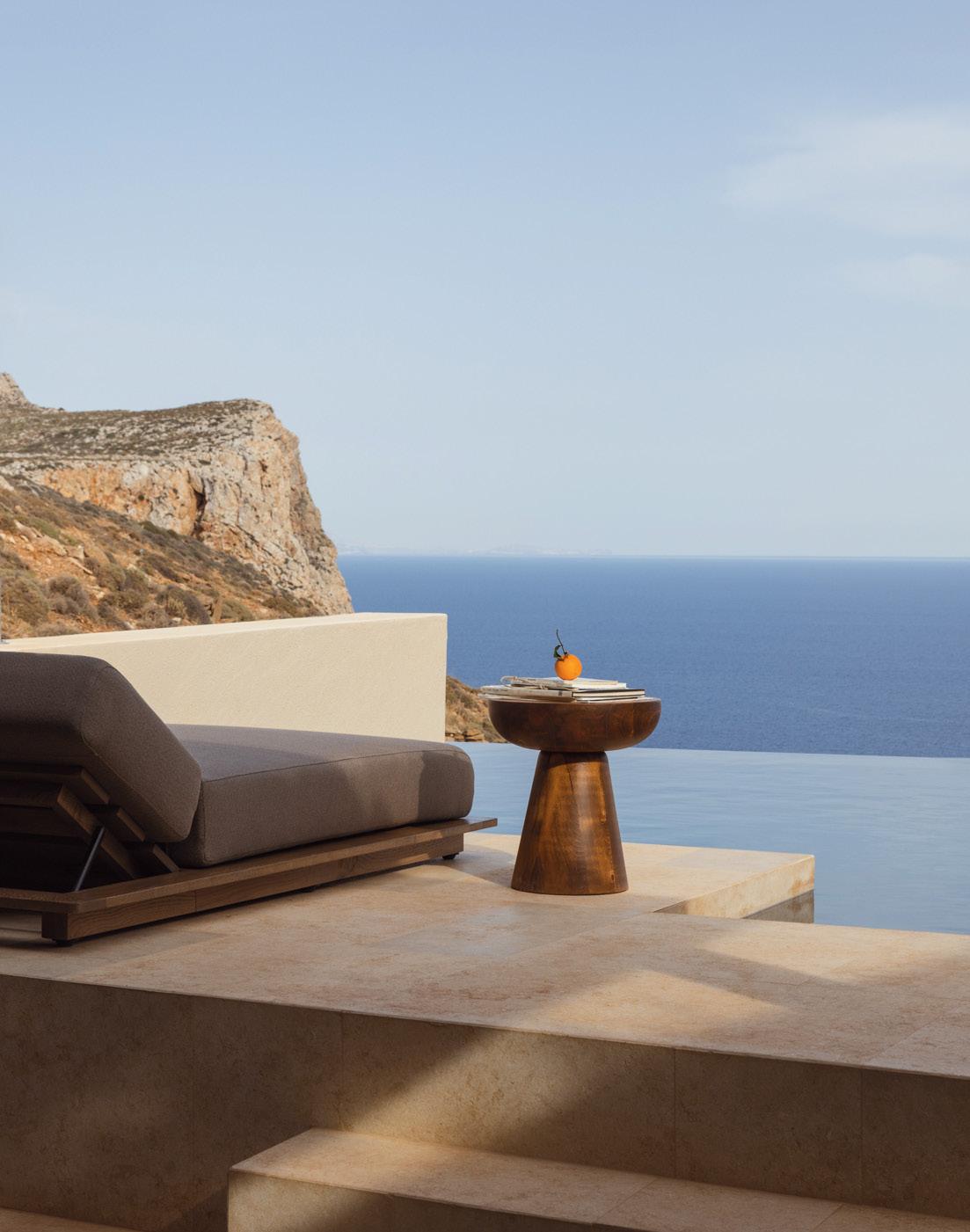
Be inspired by wanderlustworthy destinations, travellers’ tales and the latest travel trends online at Dream by Luxury Escapes.

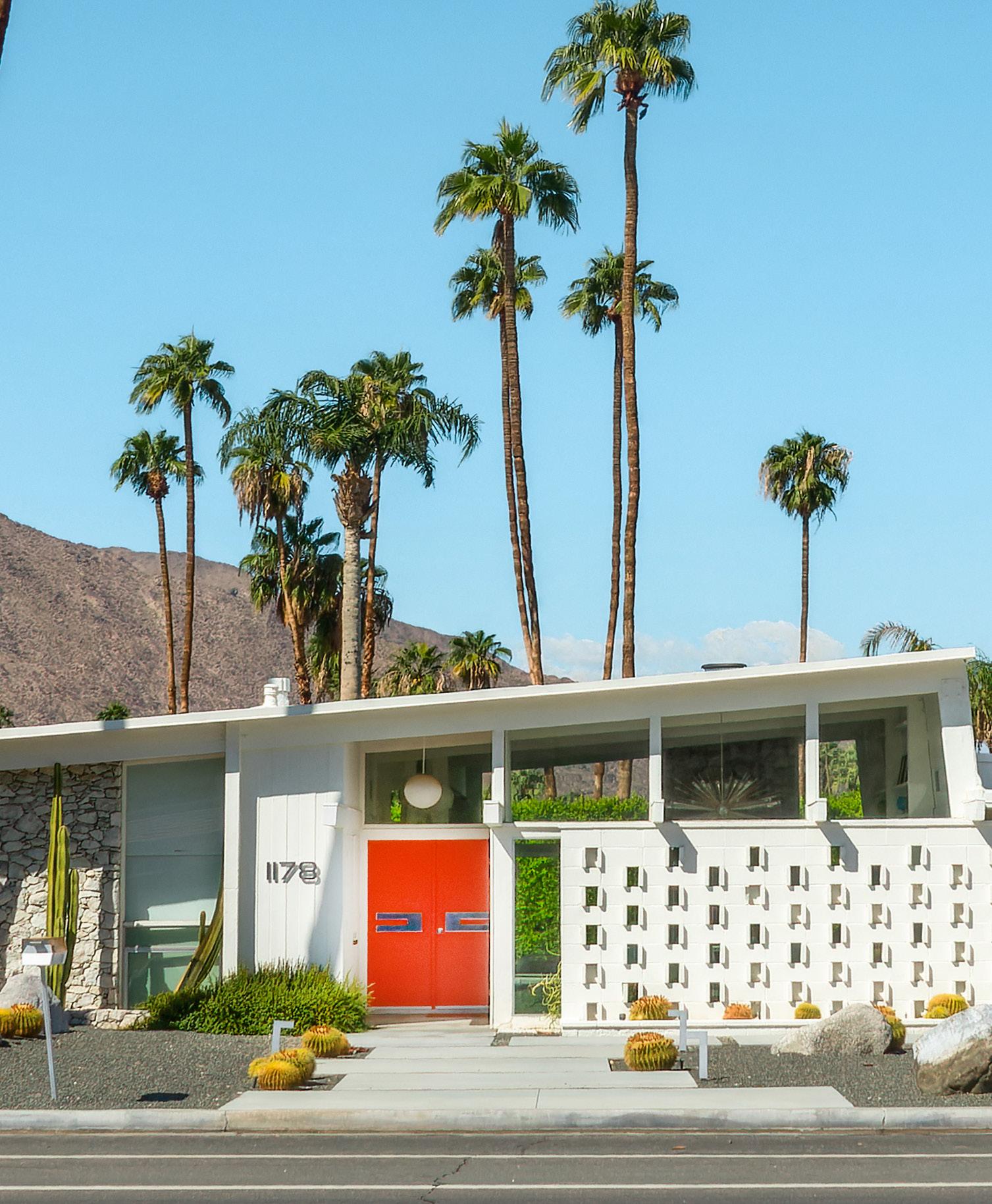
We unravel ve common myths about tour travel.
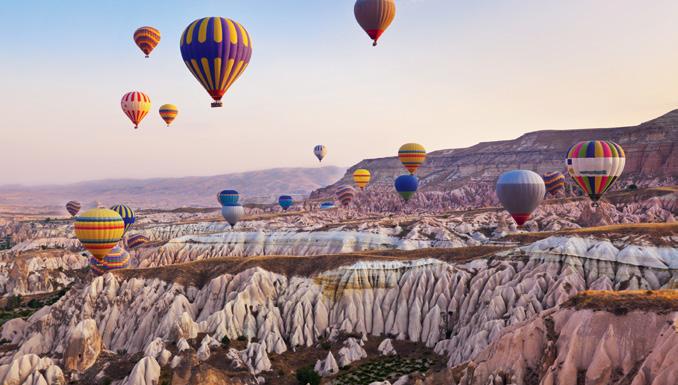

Planes, trains and snowmobiles: the best tours with unique transport.


Also catch us at:
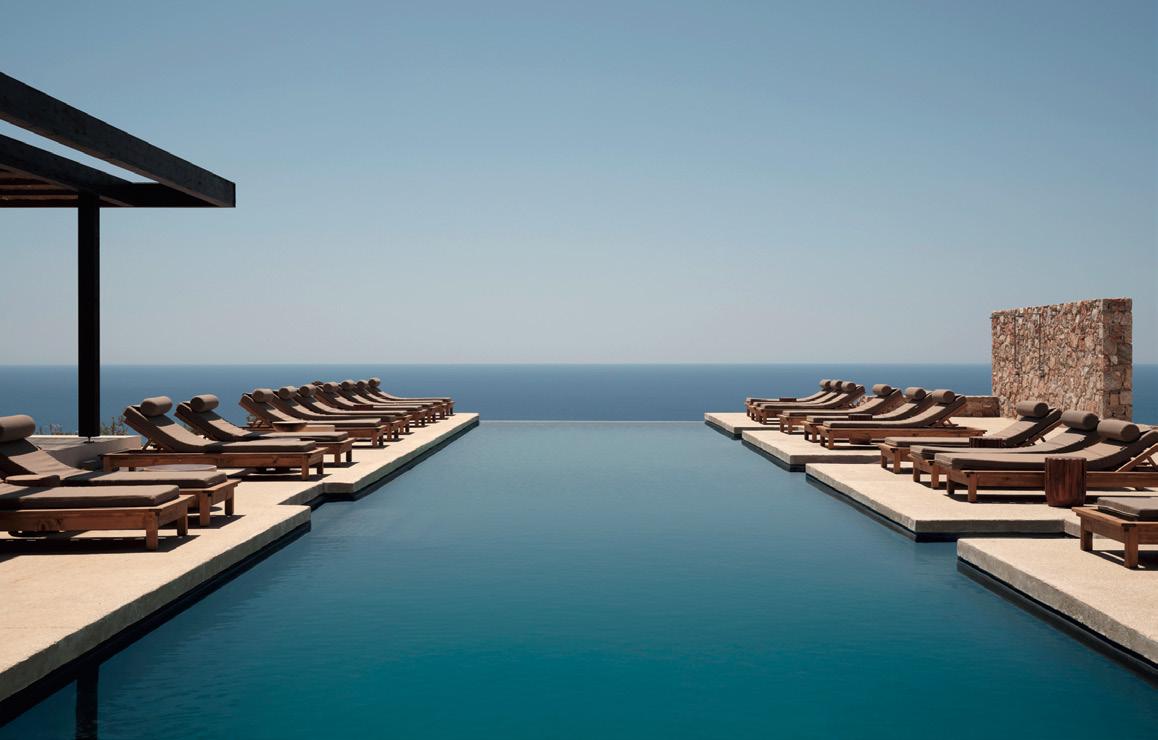
We have done a lot of research lately into what our members consider a luxury getaway and found that for many it is more than just the mod cons and extra trimmings.
For a vast majority of our members the perfect holiday is all about “a unique or special experience that is beyond the ordinary” and coming close second was a bespoke or tailored offering.
This would explain the surge in popularity of our tours, which offer something that is both curated and unusual. For our Signature Series tours we send our celebrity hosts –like ex-MasterChef Australia judges Matt Preston and Gary Mehigan – ahead of the tour to undertake research trips so they can put together the best trip possible. The uniqueness also comes with the fact that each tour has one single departure, so no two groups will have the same experience. We have Matt and Gary heading to Hong Kong
and Taiwan later this year, Diana Chan touring Singapore and Malaysia and Bree Ogilvy and Nick O’Hern are going golfing in Vietnam.
In this issue we also go on a retro architecture tour in Palm Springs (“Darling of the desert”, page 30), a tour of Sri Lanka by bike (“Wild ride”, page 90) and a 24-hour tasting tour of Hong Kong with food writer Dani Valent (“A spice odyssey”, page 18).
We are also using this issue to celebrate island getaways, a perennially popular idea of a luxury escape. I spend some family time on VOMO resort in Fiji (“Picture perfect”, page 44), we have some quiet time on Folegandros in the Greek Islands at a new Australianowned resort (“Rest in Greece”, page 98) and go set-jetting in Hawaii (“Welcome to Hawaiiwood”, page 104). And in our cover feature we ask our Luxury Escapes experts and insiders to tell us about their favourite island holiday. What would your answer be?
Adam Schwab
CEO and Co-founder Luxury Escapes
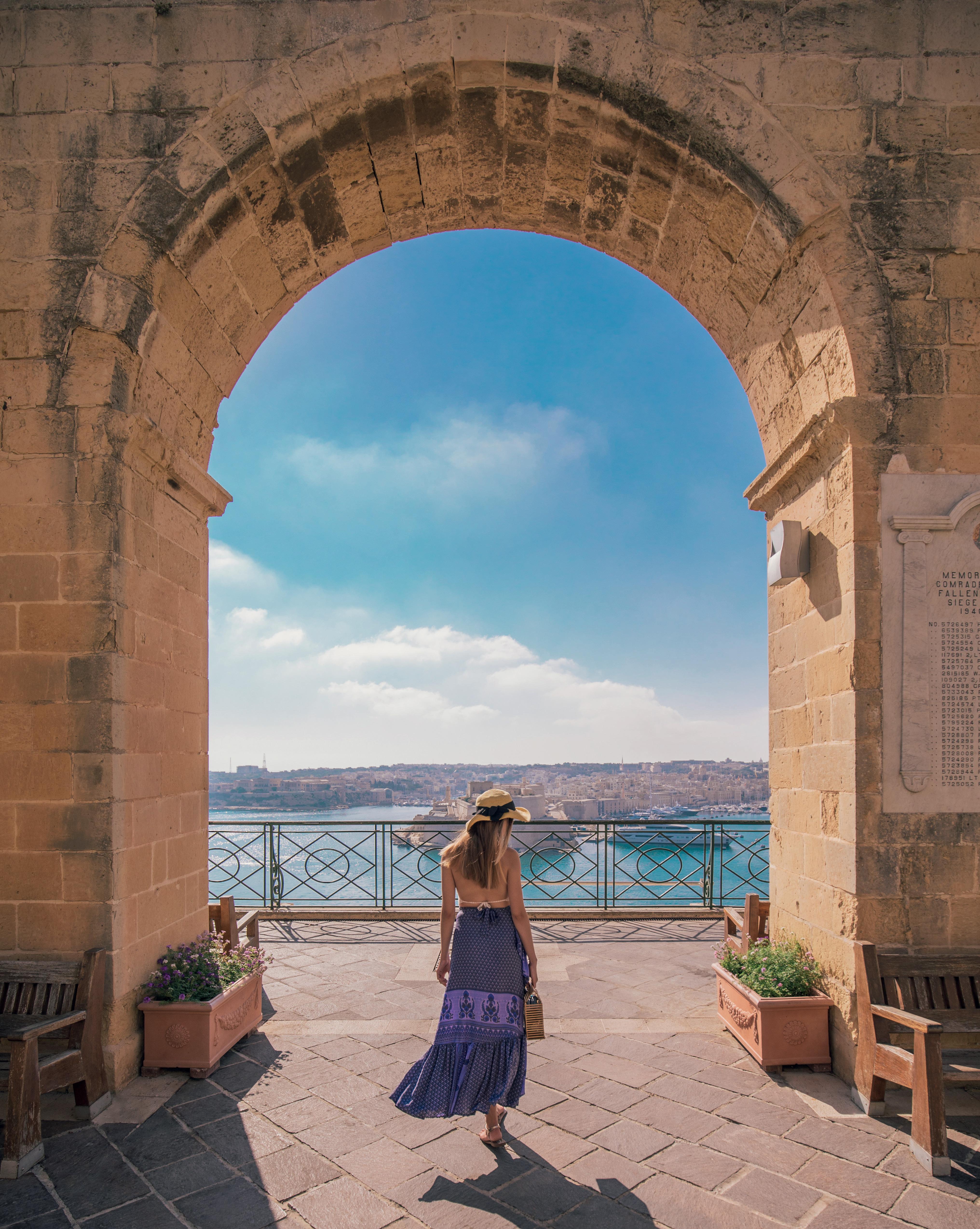

Whether it be exploring the mesmerising lands of the ancient Silk Road, or the captivating cultural centres of Europe and China, we invite you onboard our private trains where elegance and style combine with exploration and adventure for the Voyage Of A Lifetime By Private Train.
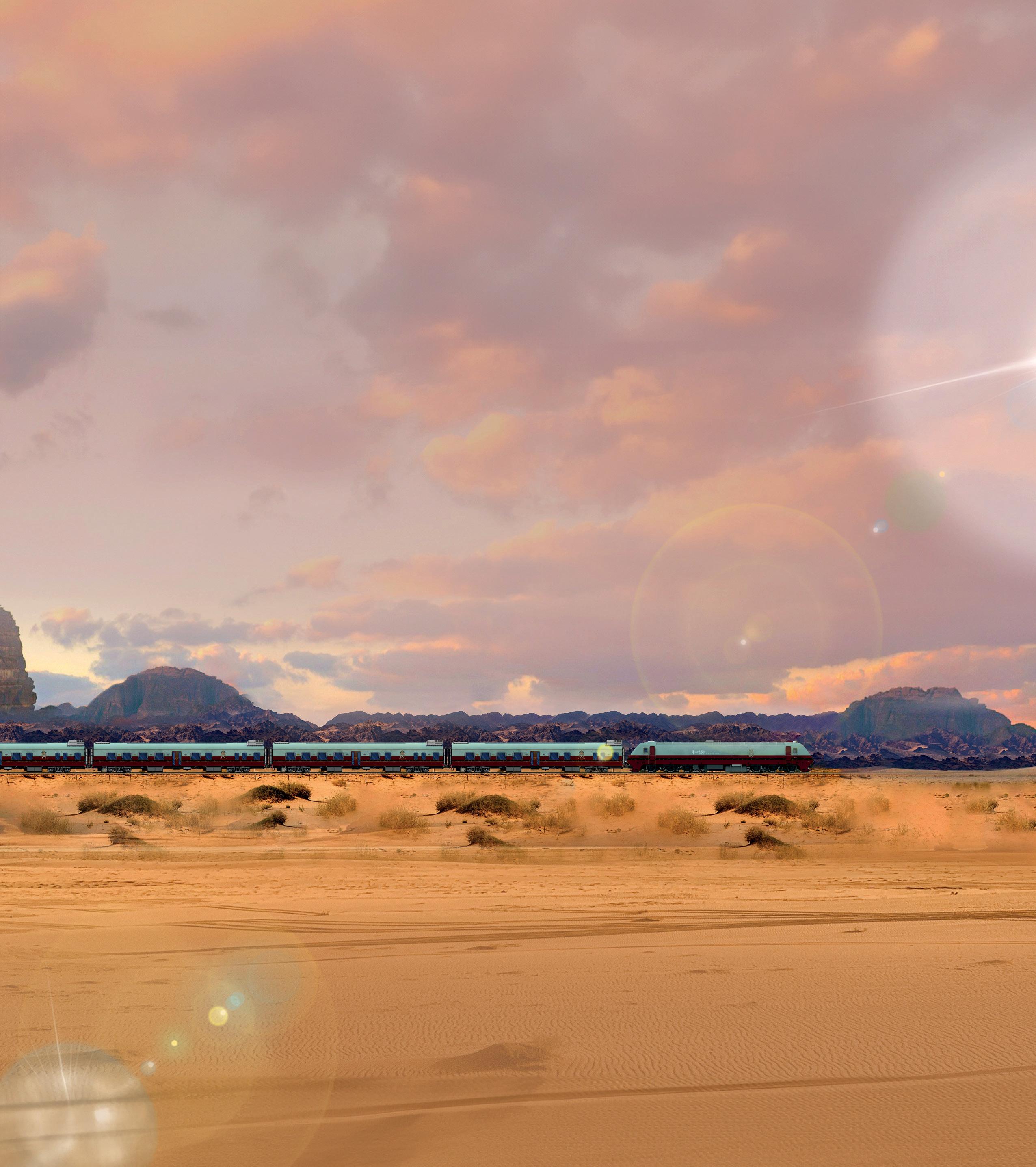
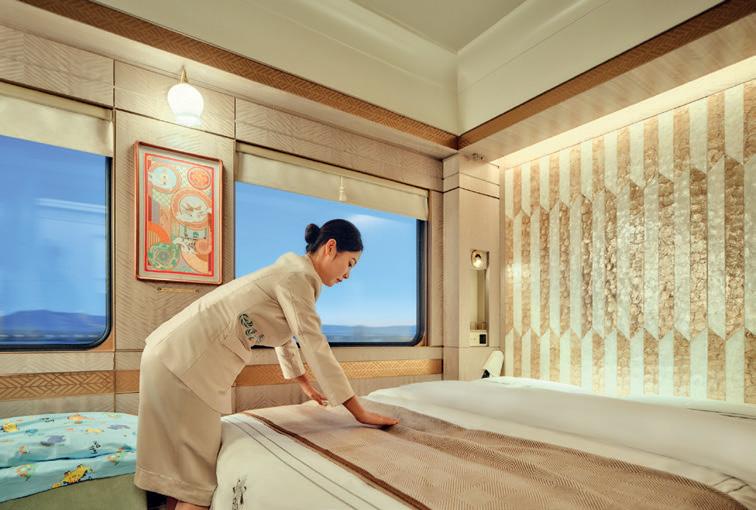
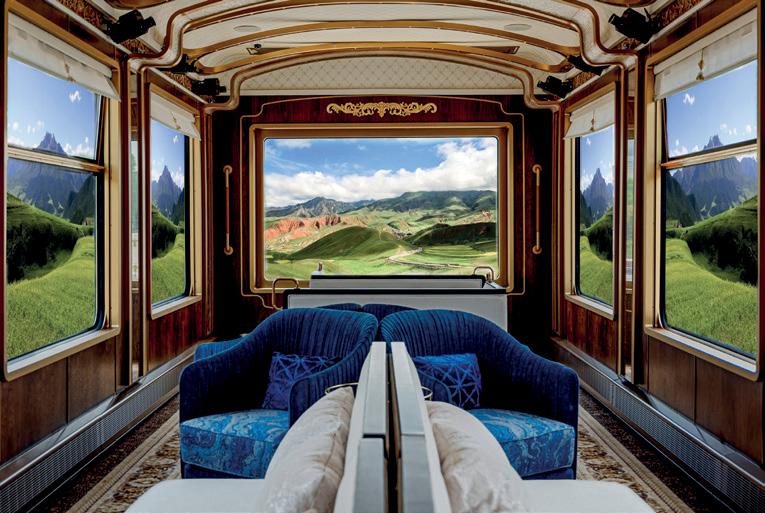


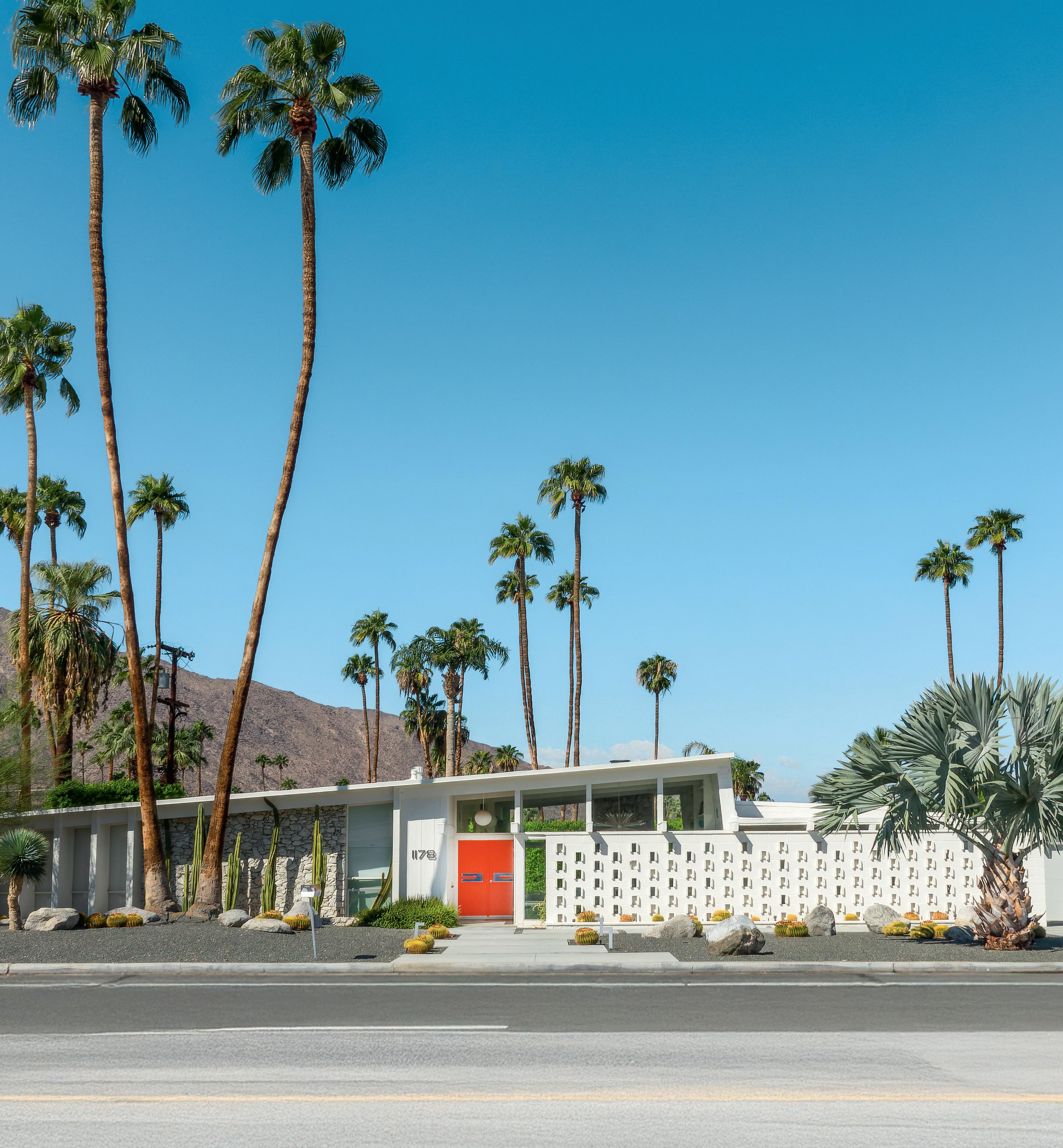

When Cantonese dining legend Golden Century closed its doors in Sydney, fans of late-night seafood and dumplings shed a collective tear. So it was amazing news when the family-run institution announced that it was returning at Crown Towers Sydney.
Billy Wong, co-owner of Golden Century, and son of founders Eric and Linda, said that Crown had not wanted any changes to the classic formula. “We feel that we have a great synergy with Crown’s approach to hospitality – focusing on quality and the guest experience, making them feel welcome and
Victoria’s Mt Buller extends its RockWire experience with a new, more challenging route
Mt Buller’s Rockwire is a guided, fully harnessed experience that lets you conquer the cliffs without fear of falling. Now Route 2 is a bold addition to Australia’s only via ferrata experience, a protected climbing route that was pioneered in the European Alps.
Designed by James Webb, Route 2 offers a steeper, longer and greater challenge than its predecessor. “With Route 2, we’ve pushed the boundaries again of what RockWire offers,” says James. “It’s about creating an experience that’s equal parts daring and aweinspiring, but still completely safe for climbers of all levels. Route 2 is the ultimate playground for thrill-seekers.”
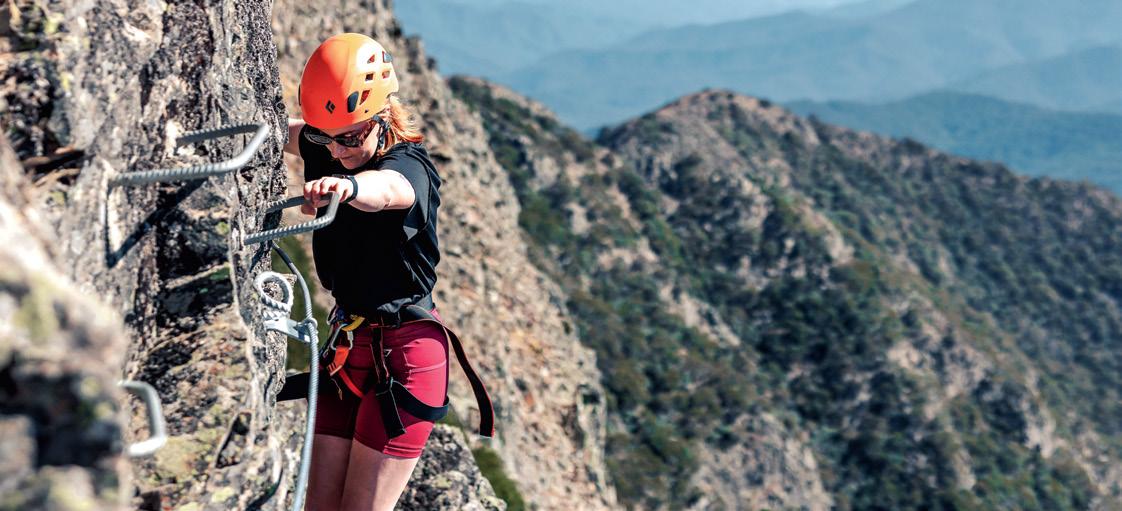
Cygnett launches audio adapter for better in ight experience
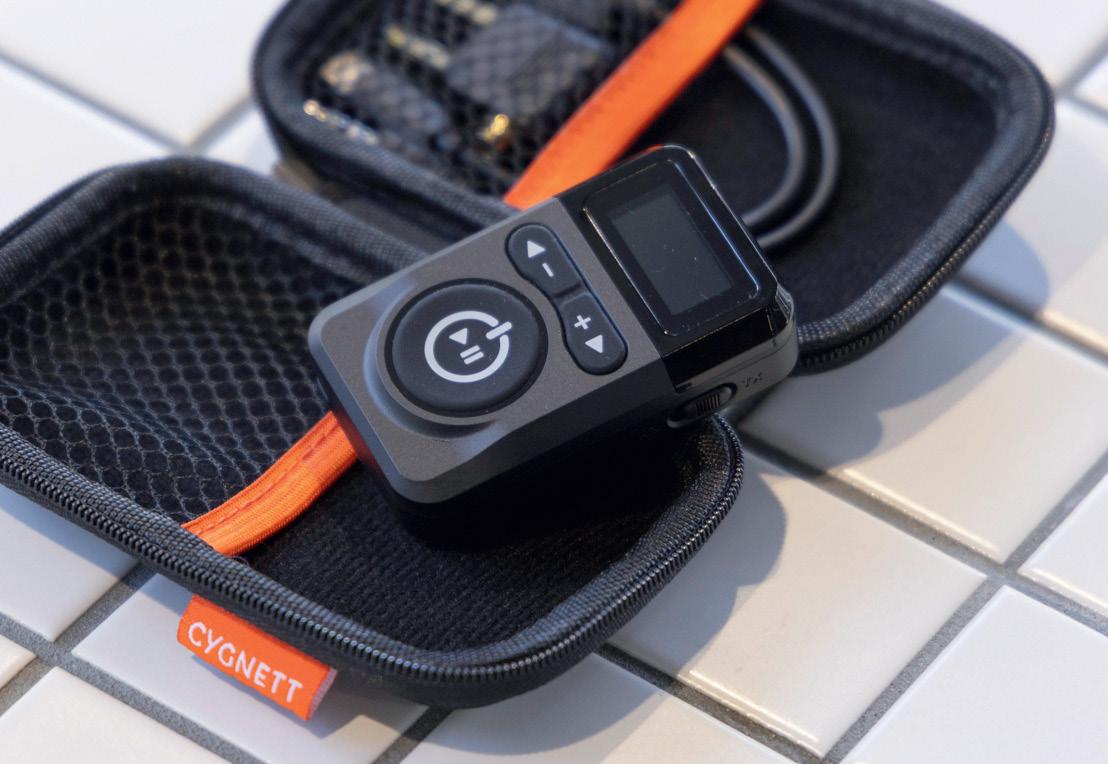
at home,” says Billy. “Golden Century is where it all began and we are excited to once again welcome in our loyal customers, serving our beloved Cantonese classics in a pictureperfect location that overlooks Sydney Harbour and beyond.”
The restaurant has maintained its no-nonsense approach, its tanks of fresh seafood and the selection of over 80 traditional Cantonese dishes including xiao long bao, prawn golden coin dumplings and rice paper rolls with pork ribs and black bean sauce.
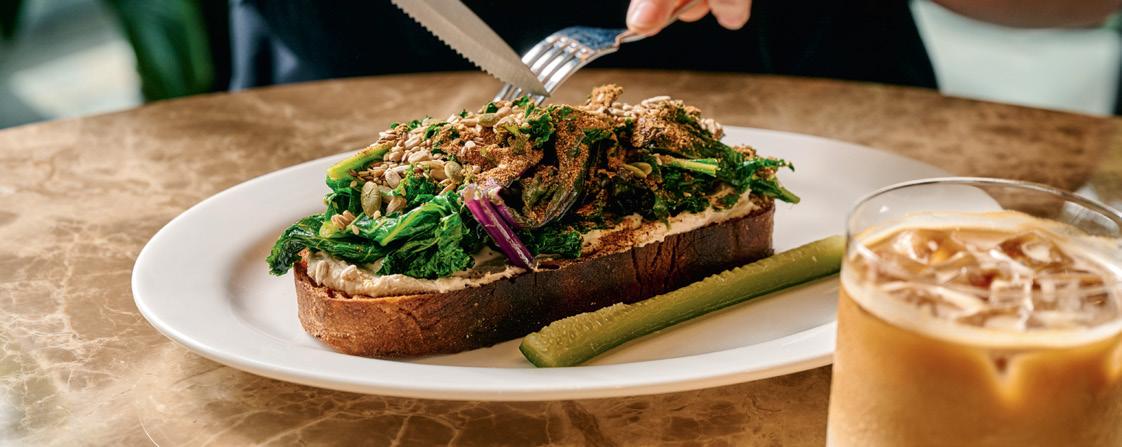
Little Molli welcomes ex-Bar Tartine chef and new preserve range
Chef Caitlin Koether (Bar Tartine) recently joined the Mulberry Group as Head of Fermentation. Mulberry includes Victorian venues like Common Ground, Dessous, Lilac Wine, Molli and its sister venue Little Molli cafe in Abbotsford.
Caitlin has been preparing a ferments and preserves retail range under Common Ground Project Preserves. The products will first be available at Little Molli in Abbotsford, where she’ll be helming the kitchen. Alongside the retail product, Caitlin’s introducing a new deli menu inspired by American bodegas. Open sandwiches (tartines) include the smoked chicken in chickpea miso mayo or sweet options like whipped ricotta with strawberries, rhubarb and honey.
Leading tech accessory brand Cygnett is expanding its travel product range with the Voyager Wireless Elite Audio Adapter. This new product allows for better quality audio for inflight entertainment by using your own headphones. Simply plug the Voyager Audio Adapter into the seat’s headphone jack, and you’re ready to go. You will
get 28+ hours of uninterrupted playtime, while the detailed LCD display ensures effortless control. Voyager comes complete with a plane adapter, USB-A to USB-C cable, and AUX cable, all neatly stored in a sleek zippered travel case. Cygnett Voyager Wireless Elite Audio Adapter; RRP $99.95; cygnett.com
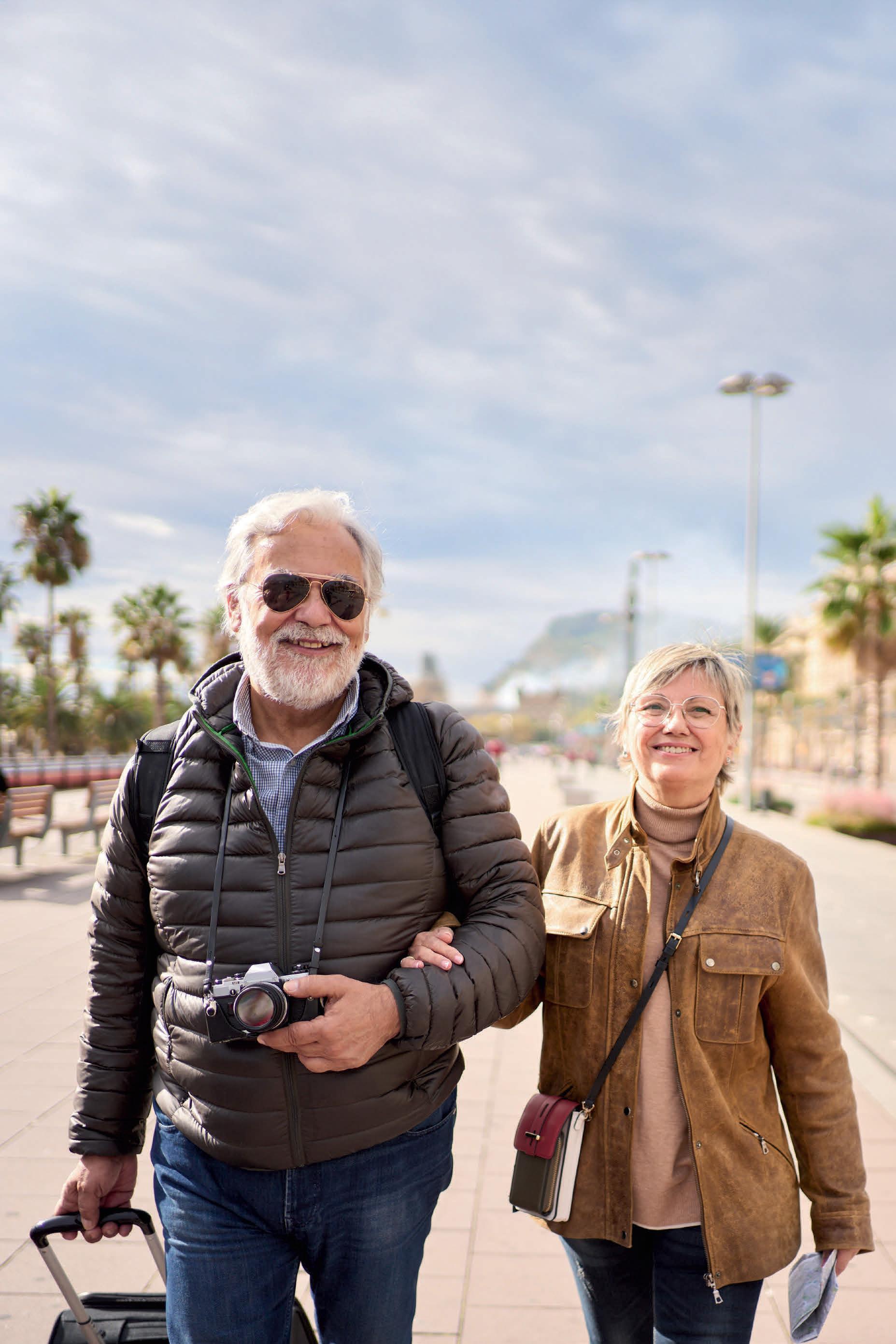
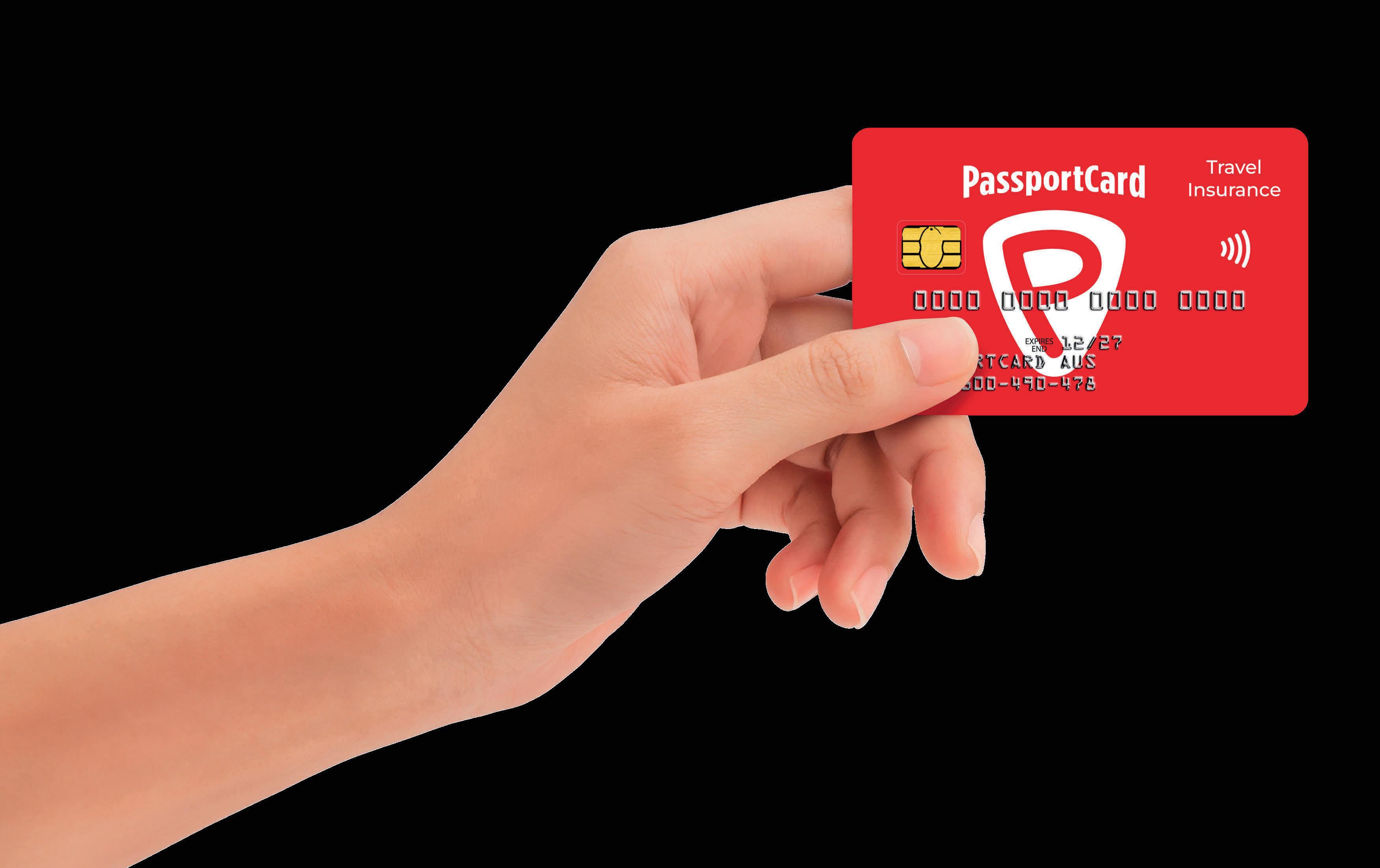
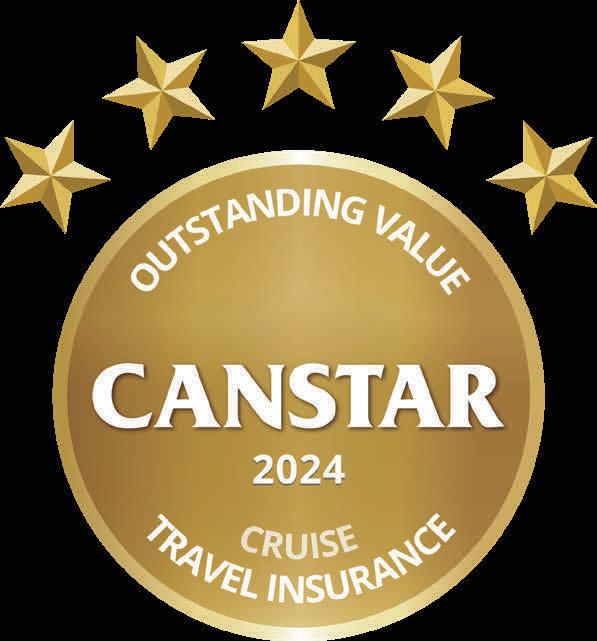
Overlooking a black-sand beach, Oshom Bali is a slick boutique hotel in the new Nuanu City.
Staying in swanky suites or a treehouse hideaway ensconced within a lush mangrove forest, guests can partake in Oshom’s signature wellness offerings, including bespoke herbal therapies and rejuvenating spa rituals. The culinary experience is equally thoughtful, focusing on nourishing, plant-based dishes inspired by local flavours.
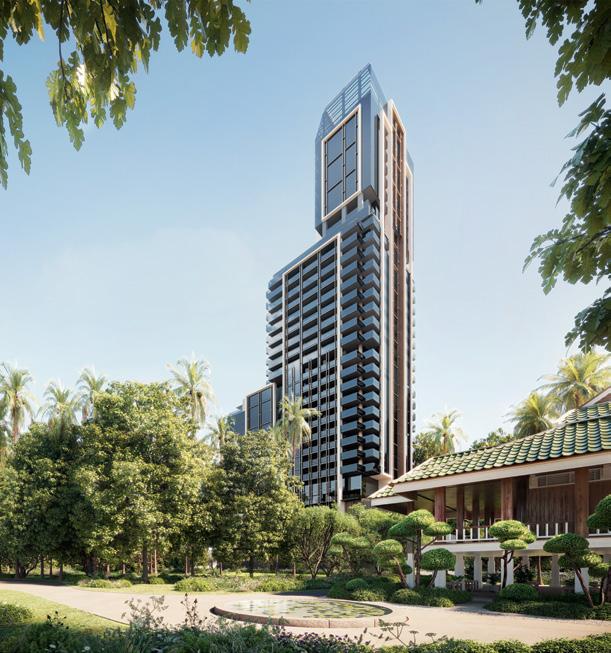
e Ritz-Carlton Bangkok is the latest address to join the ai capital’s line up of high-end high-rises.
Towering over Bangkok’s vibrant skyline and with views over Lumpini Park, the 260key hotel is guided by an old-meets-new philosophy; think original black-and-white photography, sophisticated styling and muted tones throughout.
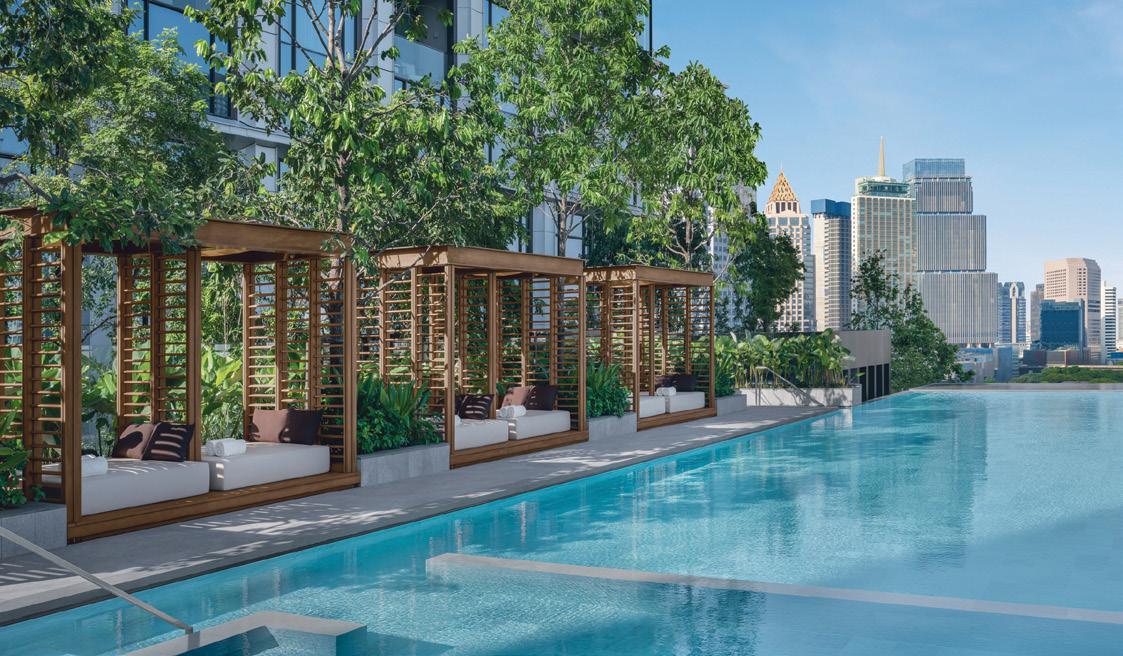
is secluded, 52-suite hotel is a mix of heritage and modernity.
The property will introduce an exclusive Aman Club, a 1,500-square-metre Aman Spa & Wellness centre partnered with Hertitude Clinic, and multiple dining venues including the signature Italian restaurant, Arva. A century-old Sompong tree serves as the property’s centrepiece, embodying the seamless integration of nature and architecture.
Desert Rock Resort is carved directly into the AlUla desert sandstone cli s.
The 64 accommodations – 50 villas, 10 suites – sees dwellings melding into the landscape, highlighting views of the surrounding canyons. Guests can enjoy eco-conscious activities, such as hiking and stargazing, while learning about the region’s ancient Nabataean history through curated cultural programs.
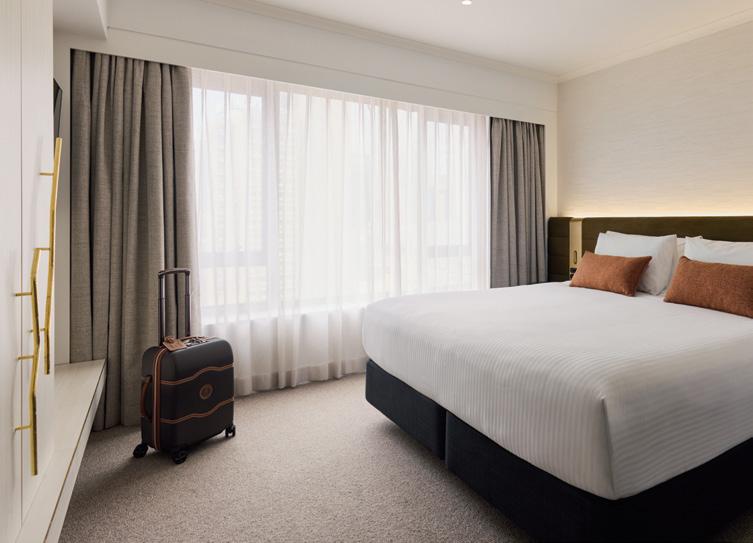
Fresh from a refurbishment, Adina Apartment Hotel Sydney Town Hall has a new style.
With rooms designed to feel more like residences to an inviting lobby-cumliving room, this is a stay guests will hope to return to again and again as they reap the rewards of the hotel’s transformation and location.
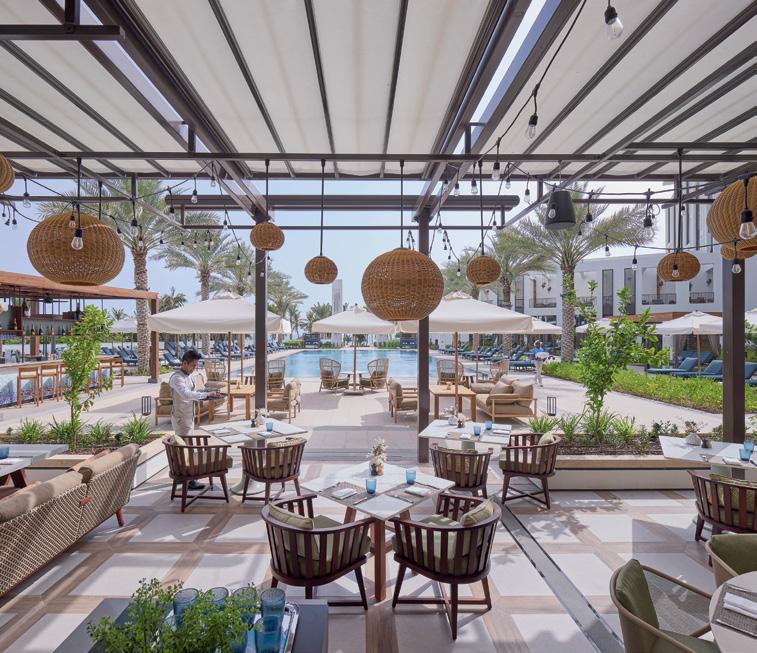
e diverse in uences of Oman are celebrated at the Mandarin Oriental, Muscat.
The hotel offers 103 guestrooms and 47 suites designed with natural materials like Desert Rose marble and Ashwood with handcrafted treasures sprinkled throughout. Essenza restaurant serves Italian classics, Rawya serves the cuisines of the Silk Road and Sawa Lounge is the lobby meeting spot for Muscat socialites.

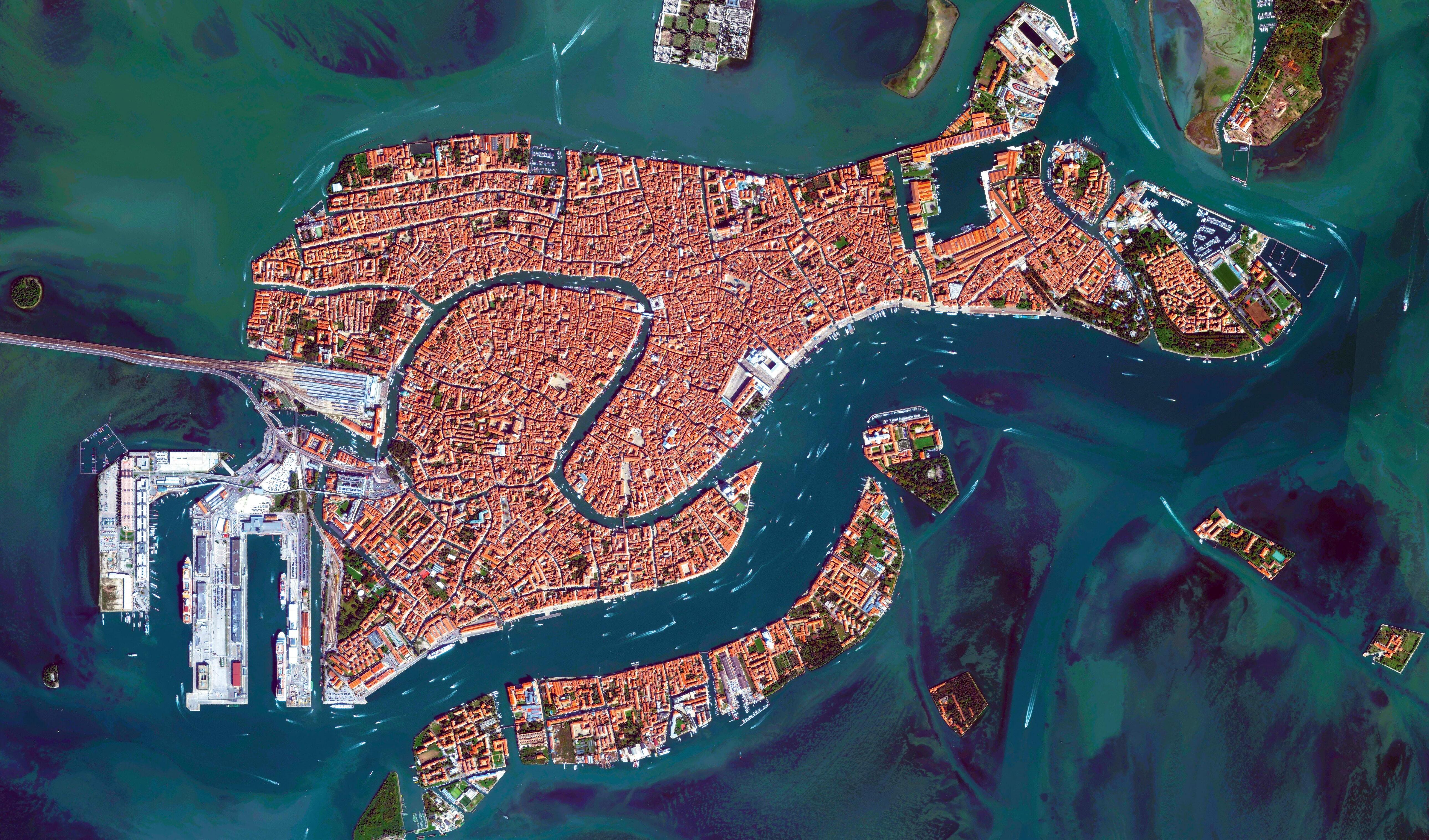

Maui and Sicily are no strangers to the siren call of Hollywood – in particular the popular resort-based series The White Lotus – but the evolution of these islands beckons visitors to explore beyond what has graced the silver screen. Volcanoes and valleys abound, intermingling with intrinsically ingrained cultures, gastronomy to get excited about and sights worth going o -script for.

This intimate adults-only resort, set amongst 15 acres of manicured tropical gardens, feels more like a private sanctuary than a typical hotel thanks to its exclusive enclave address. This all-suite stay is the sole Hawaiian hotel to be inducted into the prestigious Relais & Châteaux collection and offers its guests elegantly styled accommodations, a cabanafringed swimming pool, hyper-local and internationally influenced dining options, and views of neighbouring islands from every vantage point.
A newcomer to Wailea Village, Tikehau Lounge is a local haunt with unassuming service, clever cocktails and excellent bar snacks. Try garnish-led libations like The Hawaiian Samurai (Nikka whisky, Averna, charred pineapple), served with a collectible miniature Katana sword, or embrace tropical vibes with a Rum Cannonball (Plantation pineapple rum, Hawaiian vanilla, lilikoi, lemon, bitters). Zero-proof options are also available. If you do want to sip like the stars of The White Lotus, stop by The Lobby Lounge at Four Seasons Resort Maui at Wailea.
Said to have been hauled from the bottom of the sea by a demigod’s magical hook, it is little wonder Maui is dubbed “the magic isle”. It’s the archetypal postcard thanks to its staggering natural beauty, but frolicking whales, towering volcanoes and black-sand beaches aren’t the only drawcards that keep visitors coming back. From its mountains to the sea, Maui’s bewitching spirit is impossible to ignore.

From chocolate to pineapple, the best way to explore some of Maui’s most distinctive tastes is right at the source. Head into Maui’s Upcountry to tour tropical fruit plantations, learn about native botanicals and flowers, shop at roadside farm stalls and food trucks, and sit down to paddockto-plate lunches. Find farms for macadamias, dragon fruit, coffee, coconut, berries and more.
Helmed by Top Chef alum Sheldon Simeon and his wife, Tin Roof is a takeout-only lunch spot easily identifiable by the lines that snake out the door. Comfort food is on the menu here, with customisable rice or noodle bowls topped with pork belly, garlic shrimp, chopped sirloin steak or double-fried chicken. Chef’s specials and sandos are on rotation too. There is limited bench seating out front or take your bowl to enjoy at one of the benches at nearby Kanaha Beach.
The former go-to retreat of Hawaiian royalty, Kaanapali is also Maui’s first resort town. Its threemile stretch of white-sand beach is one of its calling cards, as are the line-up of oceanfront hotels. On the beach’s north end is Black Rock, a large outcrop with cultural significance for ancient Hawaiians and where 18th-century monarch King Kahekili II loved to cliff dive. Whale-watching, snorkelling and sailing tours depart Kaanapali, or try off-roading excursions, golfing and day trips to nearby Lahaina, or shopping at Whaler’s Village.

Cannoli and Corleones aside, Sicily is an island shrouded in myth – be it culinary, cultural or otherwise. is is an isle that has seen civilisations come and go, each leaving its mark in a way that has seen Sicily emerge with an inimitable identity. From its beguiling coastal cities and gritty urban streets to its countryscapes speckled with olive groves and orchards, Sicily rewards the exploration of its extremes.

It’s hard to miss Catania Fish Market. Its sprawl of stands, crowded into the streets around the city’s Duomo, can be heard (and smelled) before rounding the corner to the official entry point just behind Amenano Fountain. The market is open Mondays through Saturdays and is a snapshot of the island’s connection to the ocean. Embrace the cacophony as vendors shout about their morning catch, and amble by displays of swordfish, sardines, octopus and more. Food stalls serving fried anchovies and calamari make a visit here a true feast for the senses.
The quirky, mismatched interiors at Trattoria La Foglia are unlikely to win any beauty pageants, but diners don’t come here solely to eat with their eyes. Down a quiet side street in Syracuse, this homely restaurant feels like stepping into someone’s living room, and on the menu are classic Sicilian flavours that wouldn’t look out of place in nonna’s kitchen: swordfish with onion, tagliatelle with pine nuts and raisins, and sugo-topped polpette. Coeliacs take note, some items are available gluten-free.
This spectacular pile was the first luxury hotel in Taormina and, much like a fine wine, is only getting better with age. It dazzles from the inside out, from its unabashedly lavish rooms to its breathtaking views that extend across terracotta rooftops and terraced gardens to Mount Etna and the Mediterranean. Time here is time spent embracing la dolce vita; moving between sun-dappled pool lounges and cosseting wellness treatments to Michelin-starred cuisine and alfresco aperitifs. Stay at Grand Hotel
Located on the slopes of the mighty Mount Etna, this family-owned winery is one of the newer estates to make its name in Sicilian wine. Visitors to the estate are welcomed with a sommelier-led tour of the vineyards and historic barrel cellar, before sampling varietals and vintages through one of the tasting experiences – some with charcuterie platters, others with chef-prepared larger plates. Elsewhere along Sicily’s eastern coast, try Bar Timeo for sundowners with outstanding views or Enoteca Solaria in Ortigia for natural wines.
With its Baroque good looks, 3,000 years of inhabitation and pasticcerias around every corner, Ortigia hits the Italian trifecta: architecture, history, food. The small isle is easily walkable with elegant piazzas, ancient Greek sites and narrow cobbled alleyways. Pick up one of the famed arancini from Antica Giudecca, explore the former fortifications of 13th-century Castello Maniace, and meander the promenades that snake along the crystalline waterfront.
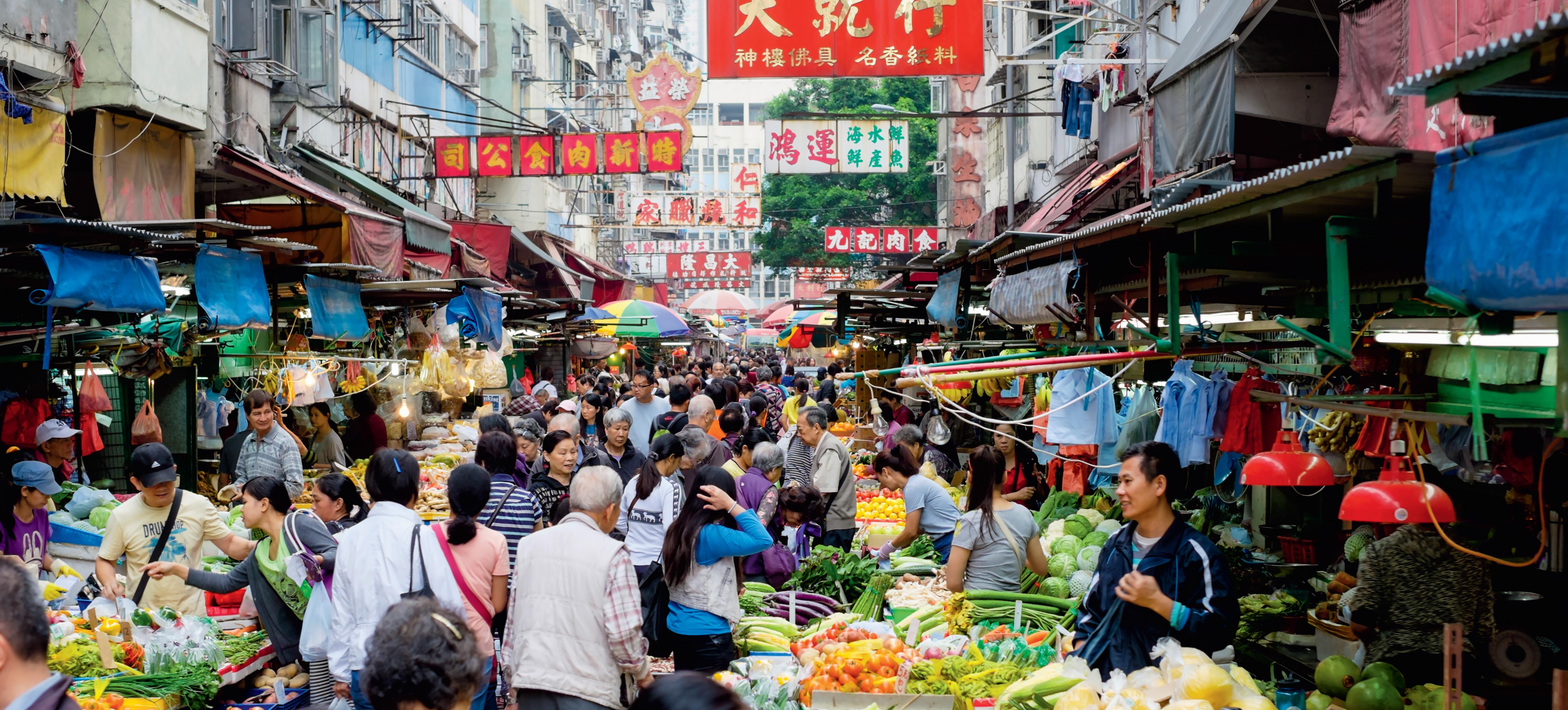
How much fantastic local food can you t into one day on a visit to Hong Kong? Dani Valent gets up early to pack as much avour as she can into her waking hours.
It’s a great time to eat in Hong Kong. And by that, I’m not just thinking of 2025. I mean 6am, 9am, noon, midnight and all the times in between. Wherever the clock hands are ticking, this densely populated Asian metropolis of 7.4 million people
is ready to provoke an appetite and sate your hunger. From street stalls to dumplings afloat to superfine dining, it’s easy to eat your way around Hong Kong from dawn to late.

They call it “temporary”, but the bustling Haiphong Road Temporary Cooked Food Hawker Bazaar (30 Haiphong Rd, Tsim Sha Tsui) has been fuelling Hong Kong since 1978. Dive in for classic local day-starters like French toast, beef balls and milk tea; order from individual stallholders and eat in a shared central space. Kowloon Park is to the north, on the other side of Haiphong Road. If you want a stretch so you can eat more later, there’s a high chance of encountering locals practicing tai chi.
Around the corner from the market, Chiu Fat Porridge Noodle Restaurant (13-19A Lock Rd, Tsim Sha Tsui) is a friendly place with a kitchen at the front and a focus on congee and soup: I love the shrimp wonton noodles in glistening broth. If you need to recover your appetite by queuing (always a popular pastime in Hong Kong), you could line up for a sourdough egg tart at Bakehouse, around the corner on Hankow Road.

Maybe you woke up with Hong Kong-style yuenyeung (half-coffee-half-tea) at Haiphong Road, maybe you prefer to caffeinate at Coco Espresso (50 Stanley Street, Central) where you can have your coffee in espresso form. The team roast their own coffee and do a lovely hand drip filter coffee too.
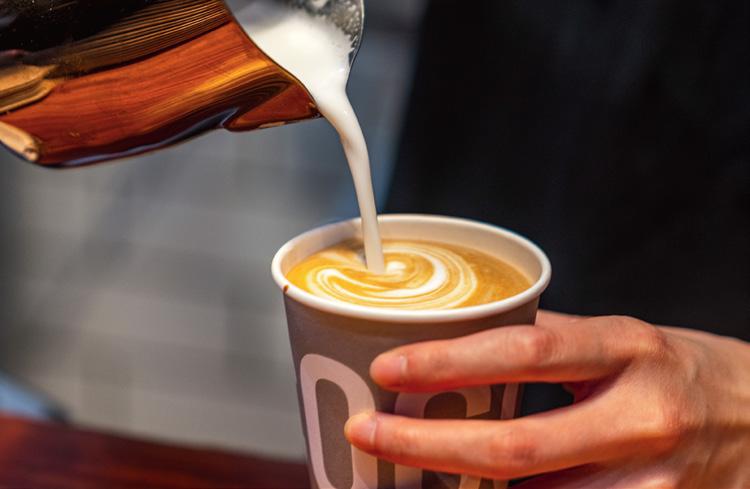

Dumplings are good but dumplings on a boat are even better. Aqualuna (aqualuna.com.hk) runs dim sum cruises on a converted junk boat with red sails stretched taut. Dim sum is
A proper Hong Kong day should include a visit to a cha chaan teng, the city’s particular style of diner that serves milk tea, toast and eggs, and simple rice and noodle dishes. For Kee (200 Hollywood Rd, Sheung Wan) is famous for pork chop and fried egg over rice, strong tea and the cat sitting in a box near the entrance. When there’s a queue, you’ll need to order as you line up. Follow your meal with a walk along Des Voeux Road West to browse dried seafood shops.
brought to you in a bespoke timber tiffin while you journey to and from Lei Yue Mun, an old fishing village.
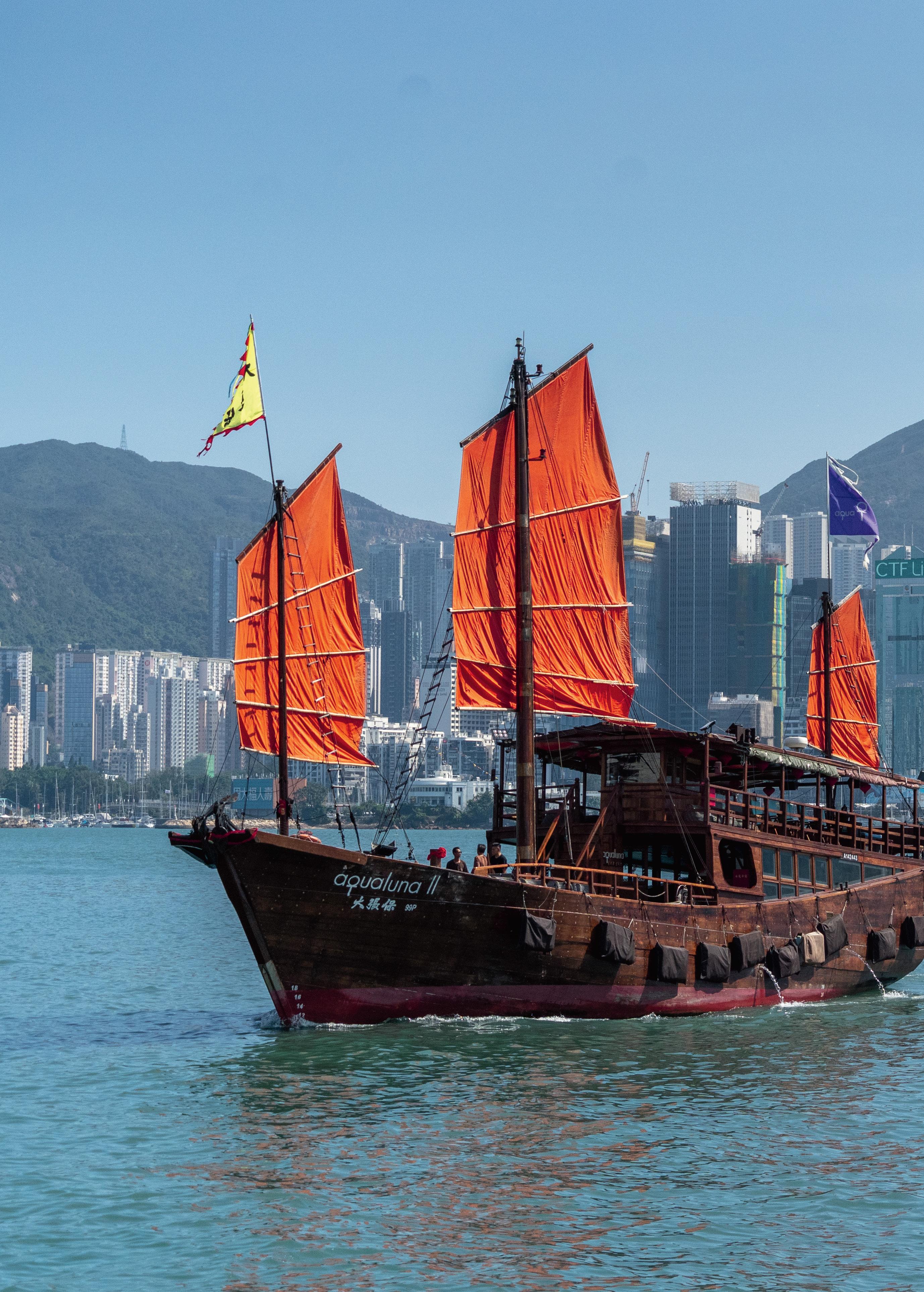
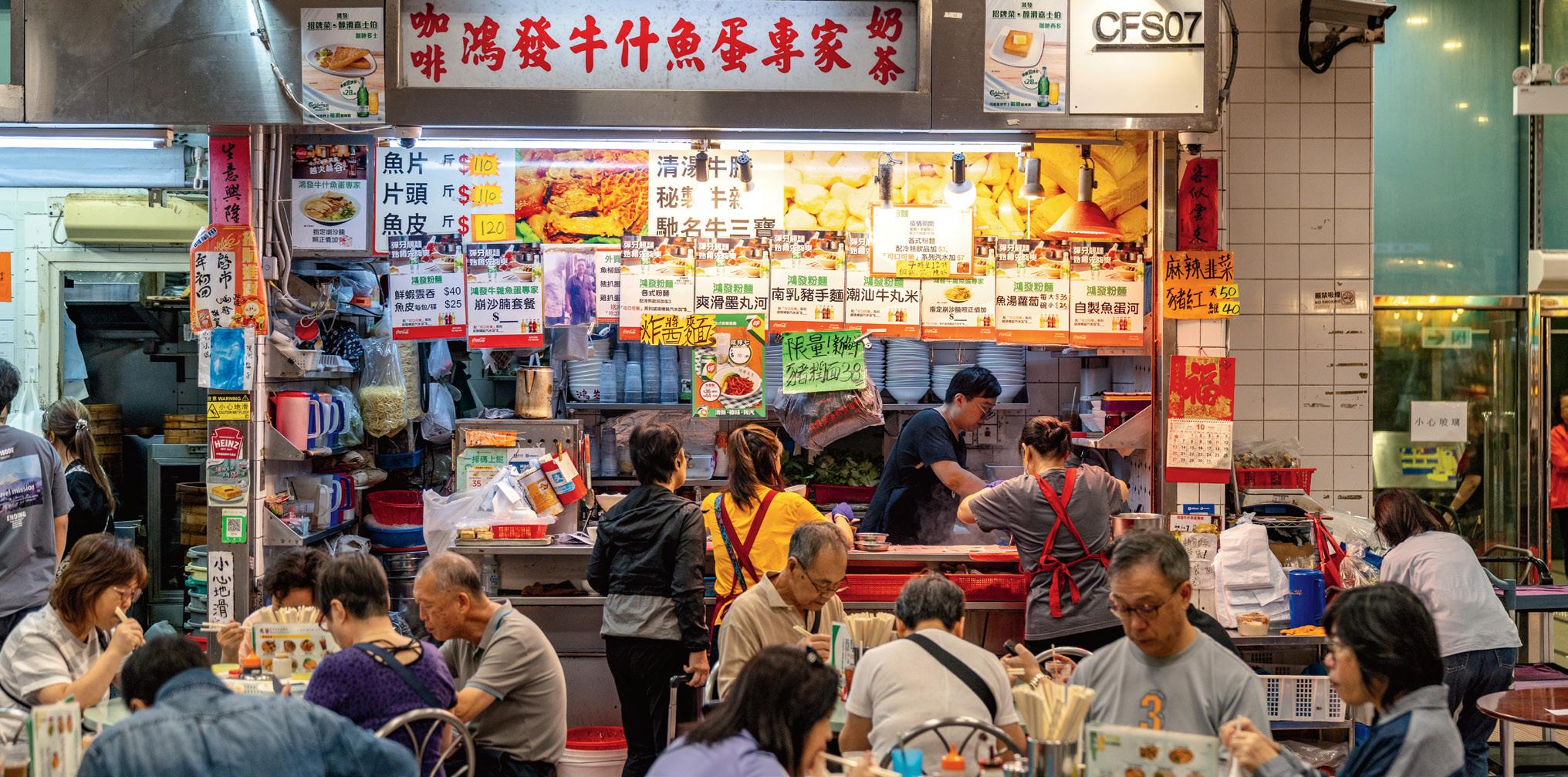
It’s a long time since you started the day at Haiphong bazaar so surely it’s time for another market visit? Take the MTR train to Tai Po Market in Hong Kong’s New Territories, not far from the border with China at Shenzhen. This tourist-free three-level precinct has a wet market at ground level, vegetables and a variety of products on the first floor, and a cooked food hall on the top level. It’s a great place for a snack.

Turn up to Sun Hing (8 Smithfield Road, Kennedy Town) yum cha restaurant at 3am and you’ll be arriving as it opens. This old school treasure runs through dawn and lunch time before closing at 4pm. Ordering is via tick-a-box paper menus and the pace is frenetic: join Hong Kongers tucking into tripe, gnawing on chicken feet and pulling apart fluffy char siu buns. When you’re done – oh, it must be time to head back over to Haiphong Road and eat your way across Hong Kong again.
Are you ready for some real Hong Kong hustle and bustle? Catch the MTR to Sham Shui Po, where it’s a short walk to Kung Wo Bean Curd Factory (118 Pei Ho Street, Sham Shui Po), a hive of activity across two shopfronts. Tofu is made here and served in all kinds of ways. Tofu puffs, deep-fried tofu and tofu fish cakes are all good, sturdy snacks but a tofu pudding really showcases the milky freshness. Rebuild your appetite by walking south to Mong Kok, where there are plenty of spots for key Hong Kong snacks like fish balls and egg waffles.

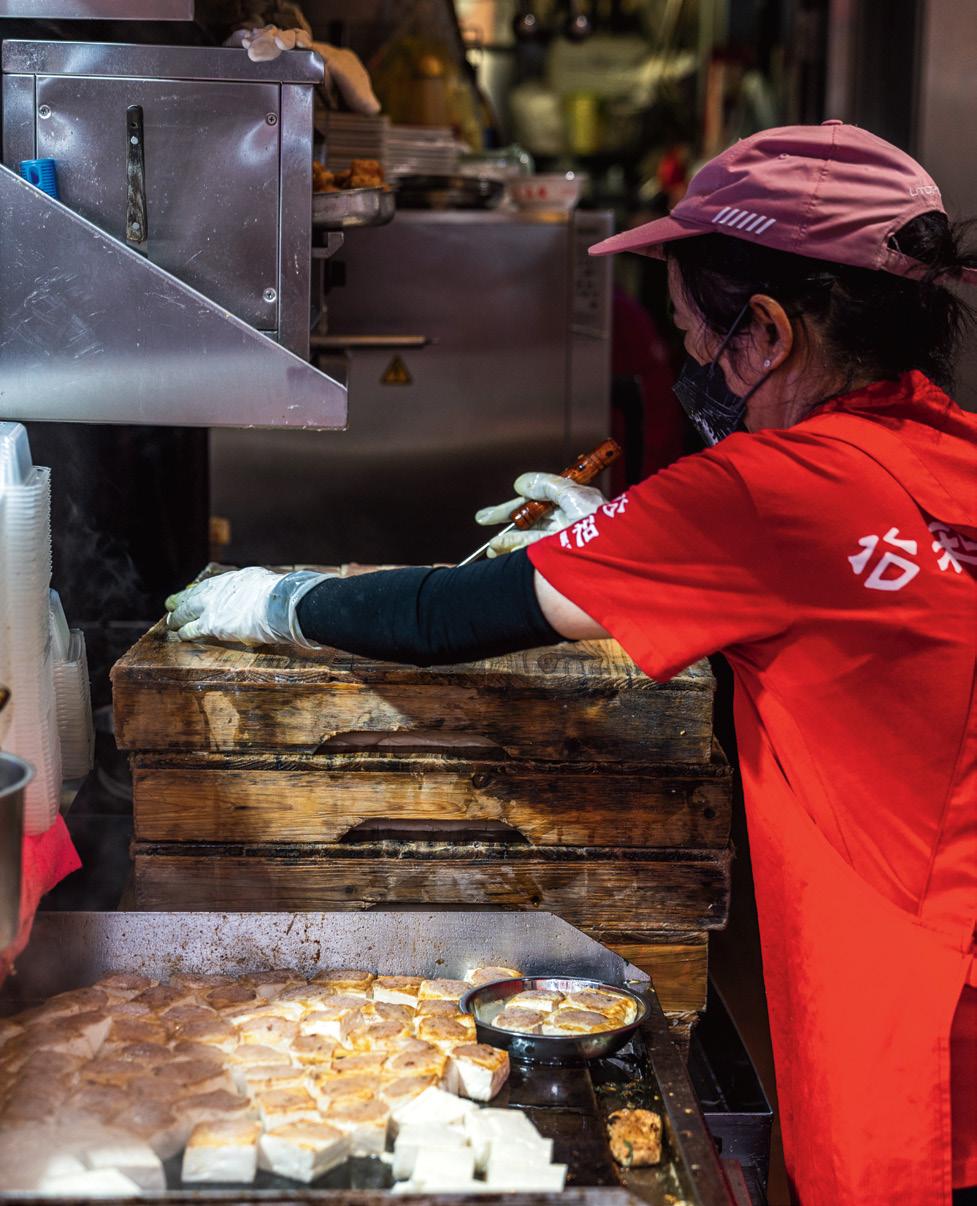
One of the best aspects of eating in Hong Kong is the contrast between high-energy street eats and elegant, poised fine dining with extraordinary hospitality. Man Wah (Mandarin Oriental Hong Kong, 5 Connaught Road, Central) is one of the best exponents of refined Cantonese cuisine. The 25th floor restaurant overlooks Victoria Harbour from a serene woodpanelled dining room.
THIS SPREAD: Hong Kong is one big all-you-can-eat buffet that rewards the curious traveller.
Hong Kong’s bar scene is thrilling. You could start at the Mandarin Oriental’s Aubrey bar, which has restrained Japanese-influenced cocktails then head to the hills of Central’s Soho hood. Quinary (56-58 Hollywood Road, Central) does conceptual, theatrical drinks like the Earl Grey Caviar Martini with a precarious tower of foam. Bar-hop your
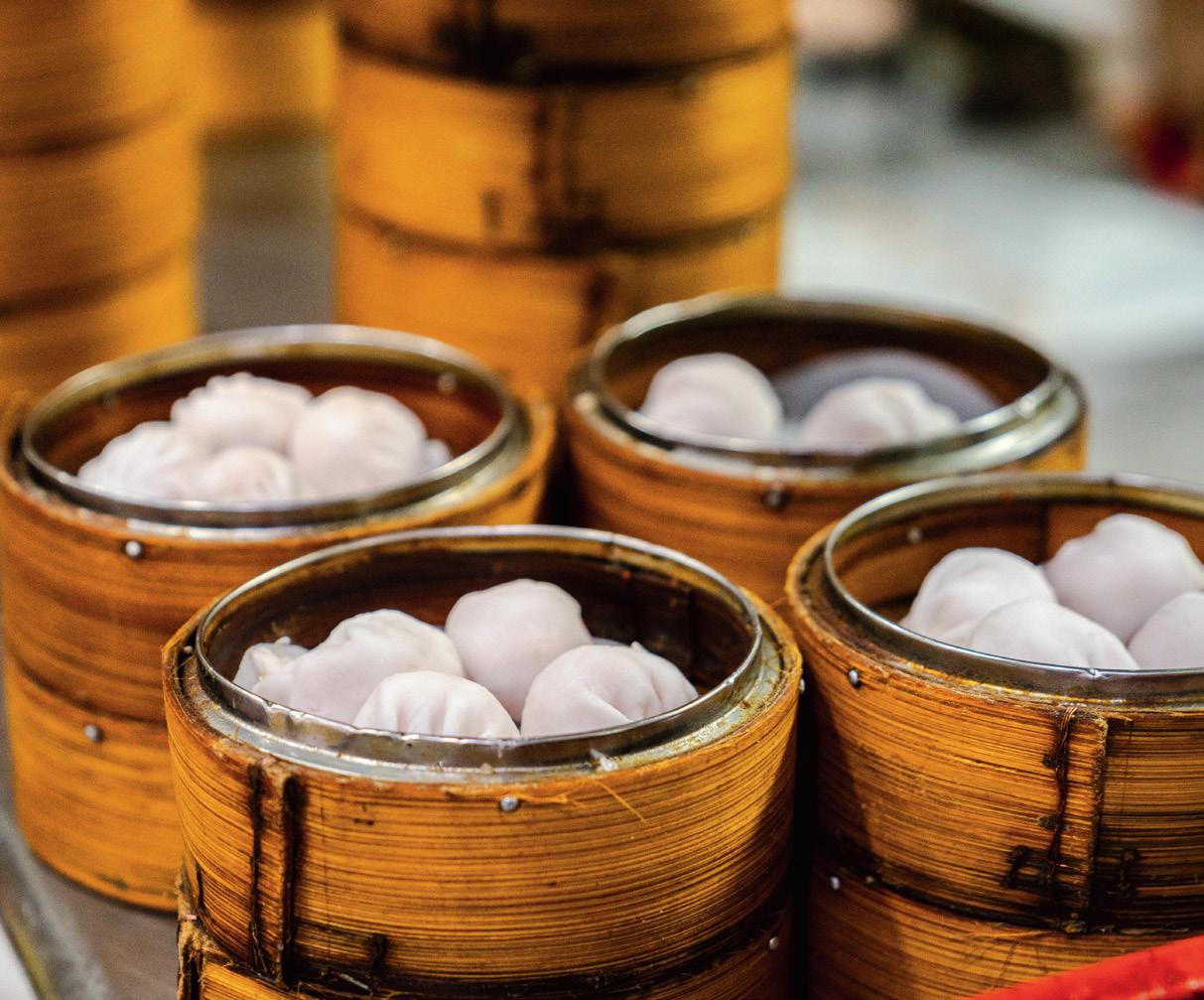
way to The Savory Project (4 Staunton Street, Central) which crafts curious cocktails based on dishes like Thai beef salad and teriyaki. Weird? Yes, but strangely good too. The Old Man (37-39 Aberdeen Street, Central) is an intimate Soho late-nighter, staying open till 2am Thursday to Saturday.

On Australia’s doorstep, Vanuatu is a destination that o ers a more exciting way to relax, packed with natural beauty, soft adventure, hiking, diving and incredible attractions. Whether you want to swim alongside historic shipwrecks, witness the re show from an active volcano or simply oat in a kayak down clear tropical rivers to blue holes, there is an adventure for everyone. If you yearn for culture or a new experience, Vanuatu is calling. But nothing is matched by the warm Paci c welcome of the Ni-Vanuatu people. Laughter lls the air and you can tell you’re in for the holiday of a lifetime.
Experiential travel is at the top of Australian travellers’ lists with people seeking exciting adventures that make amazing travel stories, and lifelong memories Vanuatu is just under three hours’ flight from the east coast of Australia, making it as accessible as it is exciting. This is the birthplace of naghol, or “land diving”, the greatgrandfather of bungee jumping, where men tie vines to their ankles and leap from tall wooden towers.
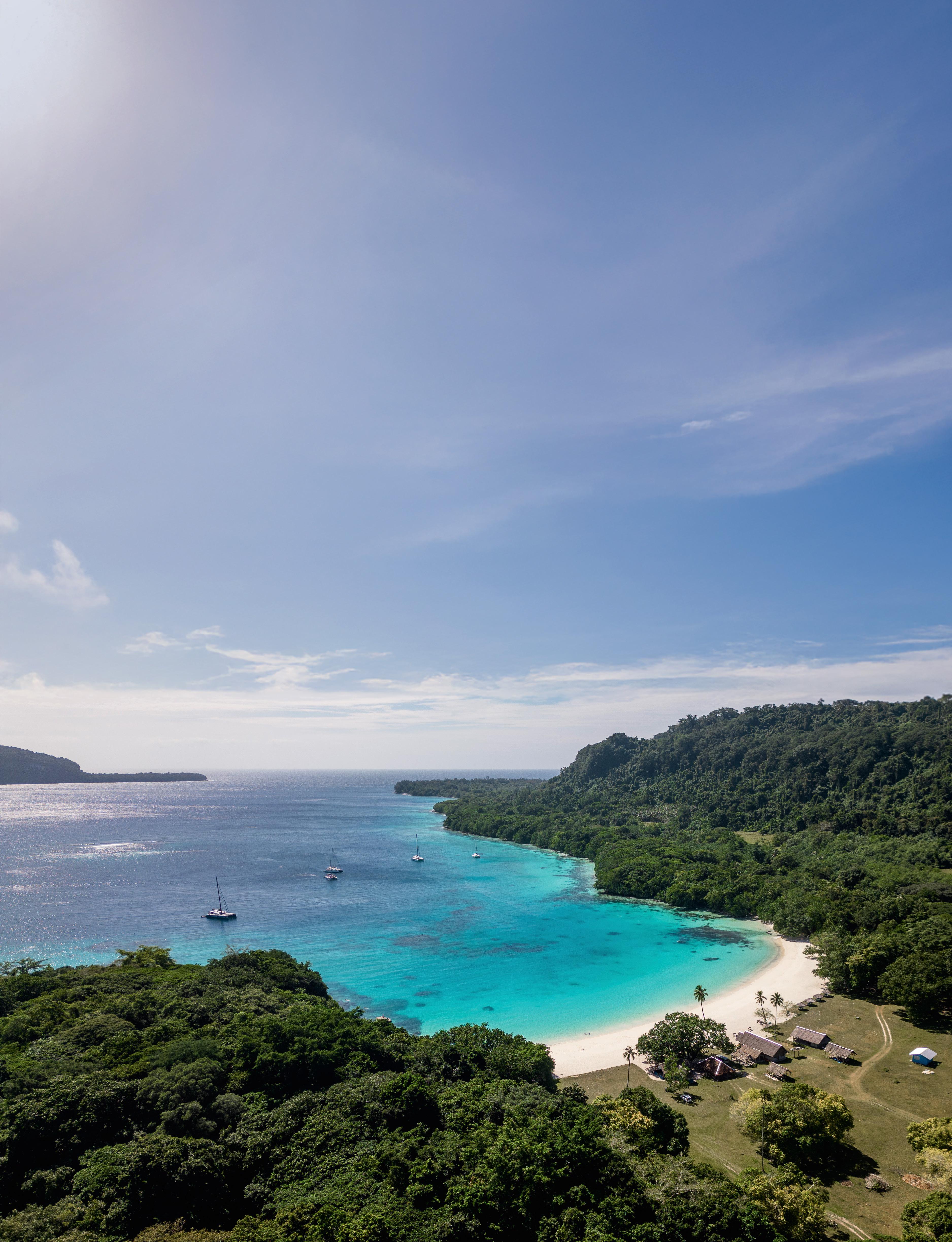


Champagne Beach is one of the best, most beautiful stretches of sand in the world. Near to this sparkling paradise you can kayak rivers or snorkel the fringing reef. Located at the southern end of Santo, Million Dollar Point is where the US Navy sunk millions of dollars of equipment after the Second World War. It is now slowly being covered by coral and is one of the most interesting dive sites in the world.
Swing like Tarzan from ropes and vines into the naturally occurring swimming pools known as the Blue Holes. These aquatic marvels are surrounded by ancient rainforests that cool the waters and provide a stunning backdrop to your dip.
You can also bathe in the amber glow of an active volcano on the island of Tanna where local guides will take you close enough for you to feel the heat straight from the centre of the earth.

Kastom is the local term for culture in Vanuatu. In this island nation, kastom is the heart and soul of a true island experience and locals are excited to share their traditions with curious travellers. Kastom is lived every day in Vanuatu, it is visceral and a way of the life that can be contagious. You will feel it all around you and at every turn.
You can see Ni-Vanuatu dancing and everyday life on a visit to a kastom village like Lenakel (Tanna), Leweton (Santo) or Eksaup on Efate.
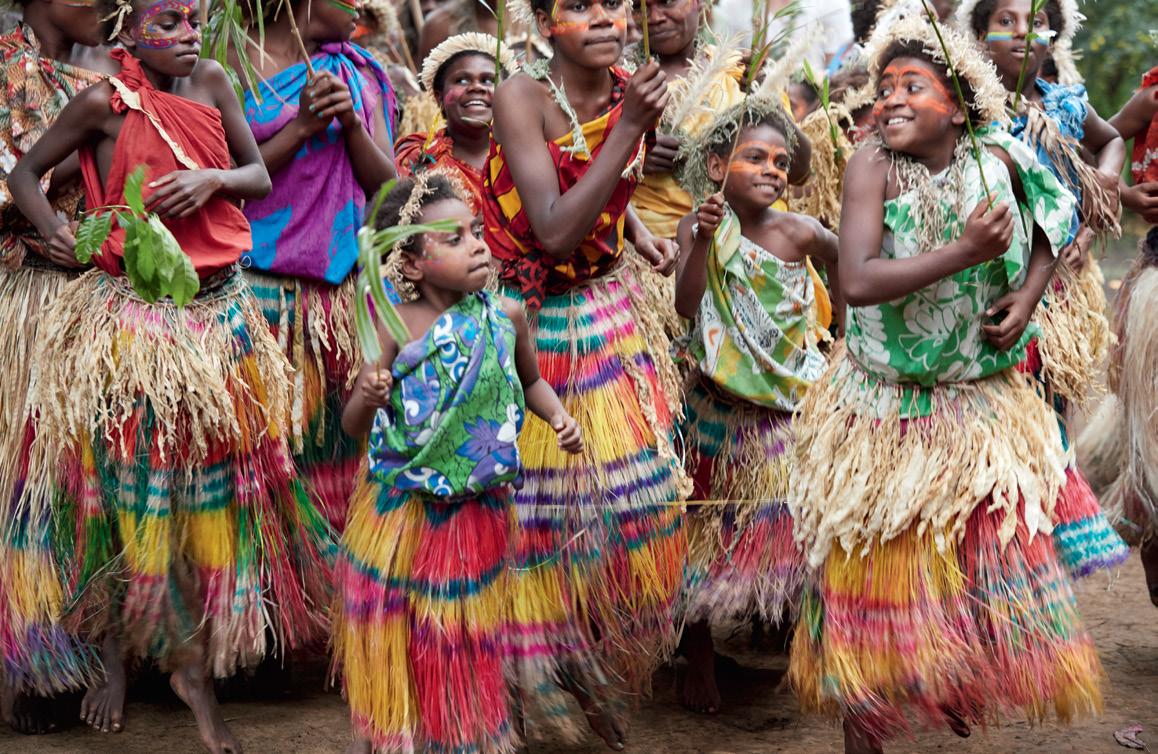
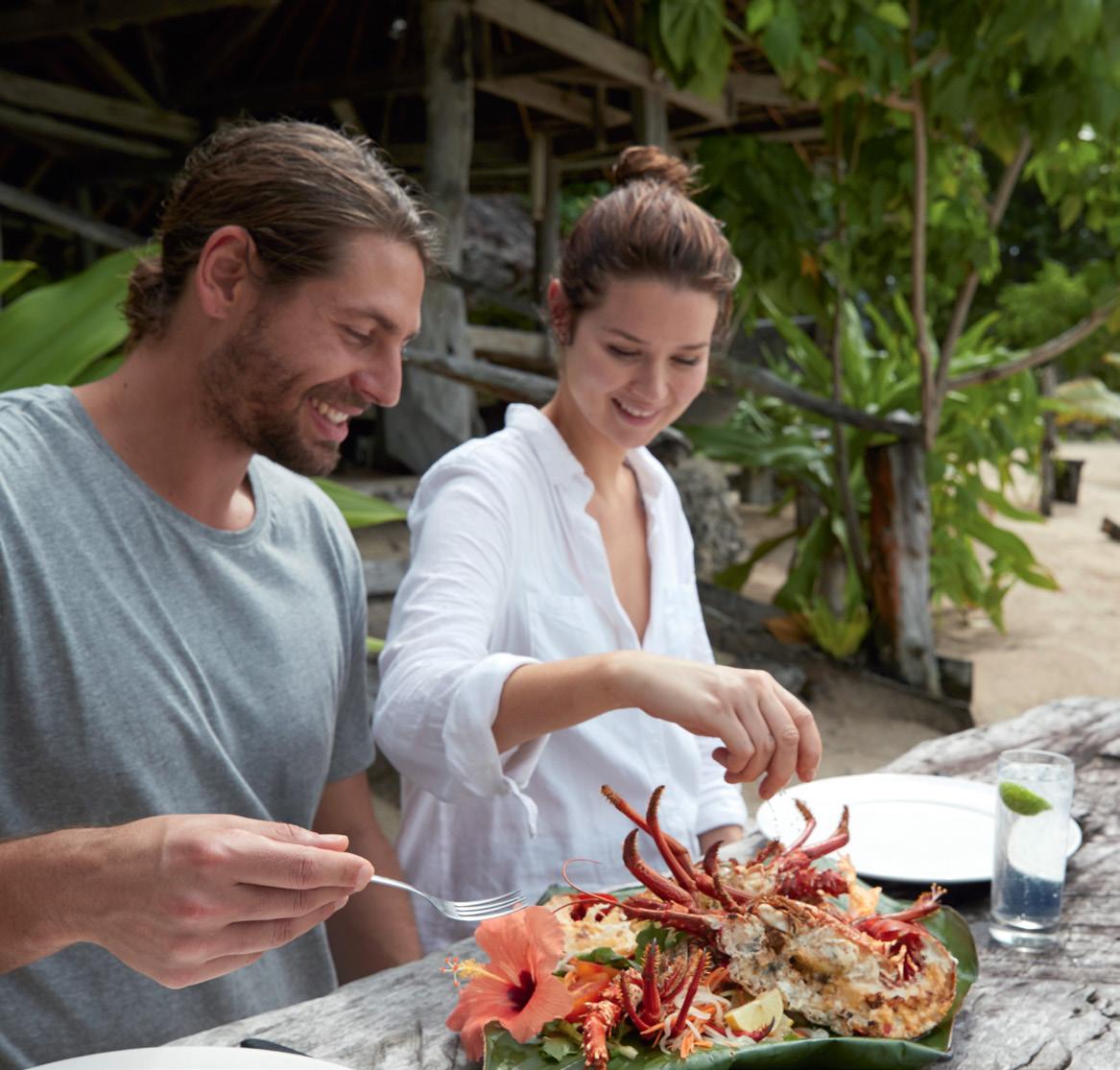
Take your tastebuds on a tropical getaway with the flavours of Vanuatu. Over 80 of the 118 species of kava grow in Vanuatu so you can visit a kava bar for this unique island tipple that is said to invoke a feeling of euphoria.
Port Vila has an amazing array of local restaurants for visitors to enjoy like Waterfront Bar and Grill, Café Vila or K2 Kitchen and Stone Grill or Chez Louis in Espiritu Santo.
For a luxurious food experience try “Trust the Chef” at Mangoes Resort, a special degustation meal selected by the hotel’s chef.
Beachfront dining is a highlight of any trip to Vanuatu. Everything from local beers, fancy tropical cocktails or casual dining can all be done with your feet in the sand and the waves lapping in the background. All accompanied by the amazing voices of Ni-Vanuatu singers in the background.
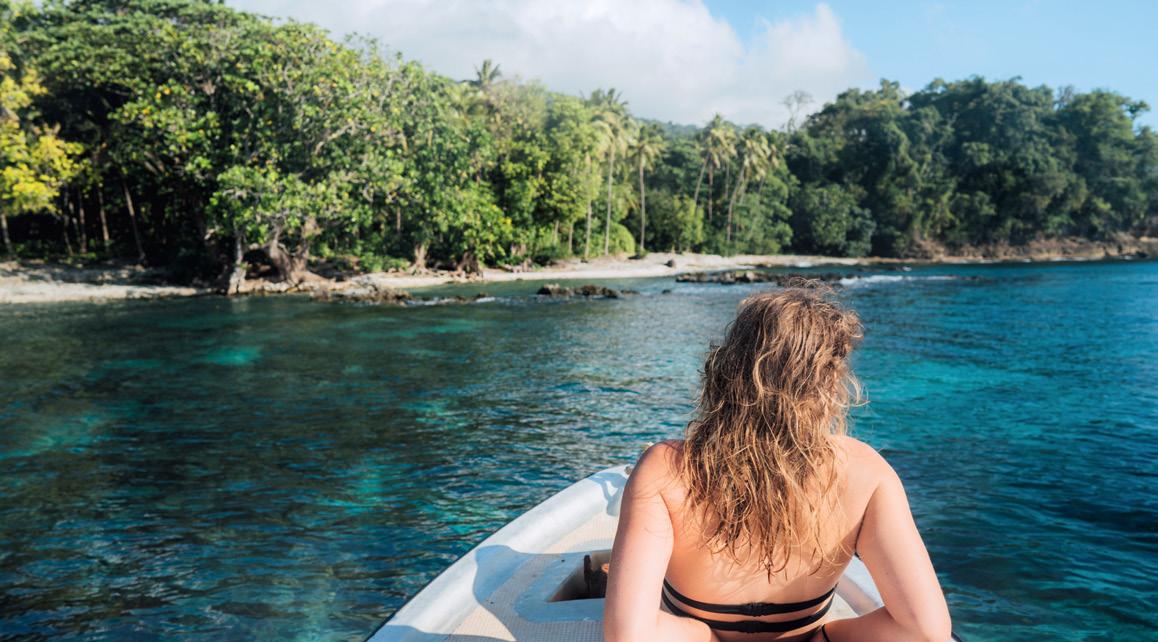
Whether you choose Santo, Tanna or Port Vila and Efate we know Vanuatu has the adventure you are looking for.
Answer the call of Vanuatu.
e bartender’s handshake is the traditional greeting between hospitality workers; it might take the form of a signature cocktail or a simple shot. We shake hands with Rox Moldovan, the Bar Lead at Crown Melbourne’s white-hot new LA-themed venue, Marmont.
Grant Smillie (ex Ponyfish Island) is bringing a sunny slice of Los Angeles to the Melbourne riverside with Marmont, named for the celebrity bolthole known for excess.
On a corner plot in Crown, Marmont is dominated by a colourful mural of Hollywood types wining and dining while Melbourne’s well-heeled set do the very same thing underneath the artwork in secretive booths, high tables and a deck covered in CampariSpritz-red umbrellas.
Food is fun and shareable with Skull Island prawns in Calabrian chilli butter and beef tartare punched up with some fermented chillies. There is also a corn bread topped with peach butter that can’t decide if it’s a brunch dish, a side or a dessert, but that just means you can eat it all day long.

drinks menu which has a whole page dedicated to martinis and martini-adjacent concoctions
“At Marmont, you can expect fun and inventive drinks, delicious food, and an atmosphere that feels warm and inviting,” Rox says. “We’ve built something very cool together and that energy comes through in everything we do. Whether it’s the music, the food, or the drinks, you’ll feel the love and effort we’ve put into making Marmont a place that’s welcoming, unique, and a little bit cheeky.”
If a fellow hospo worker hit the bright and cheery bar, Rox would offer up a signature Melrose Mezcalina. “Bartenders appreciate drinks that are a little unexpected, and this one delivers,” she says.
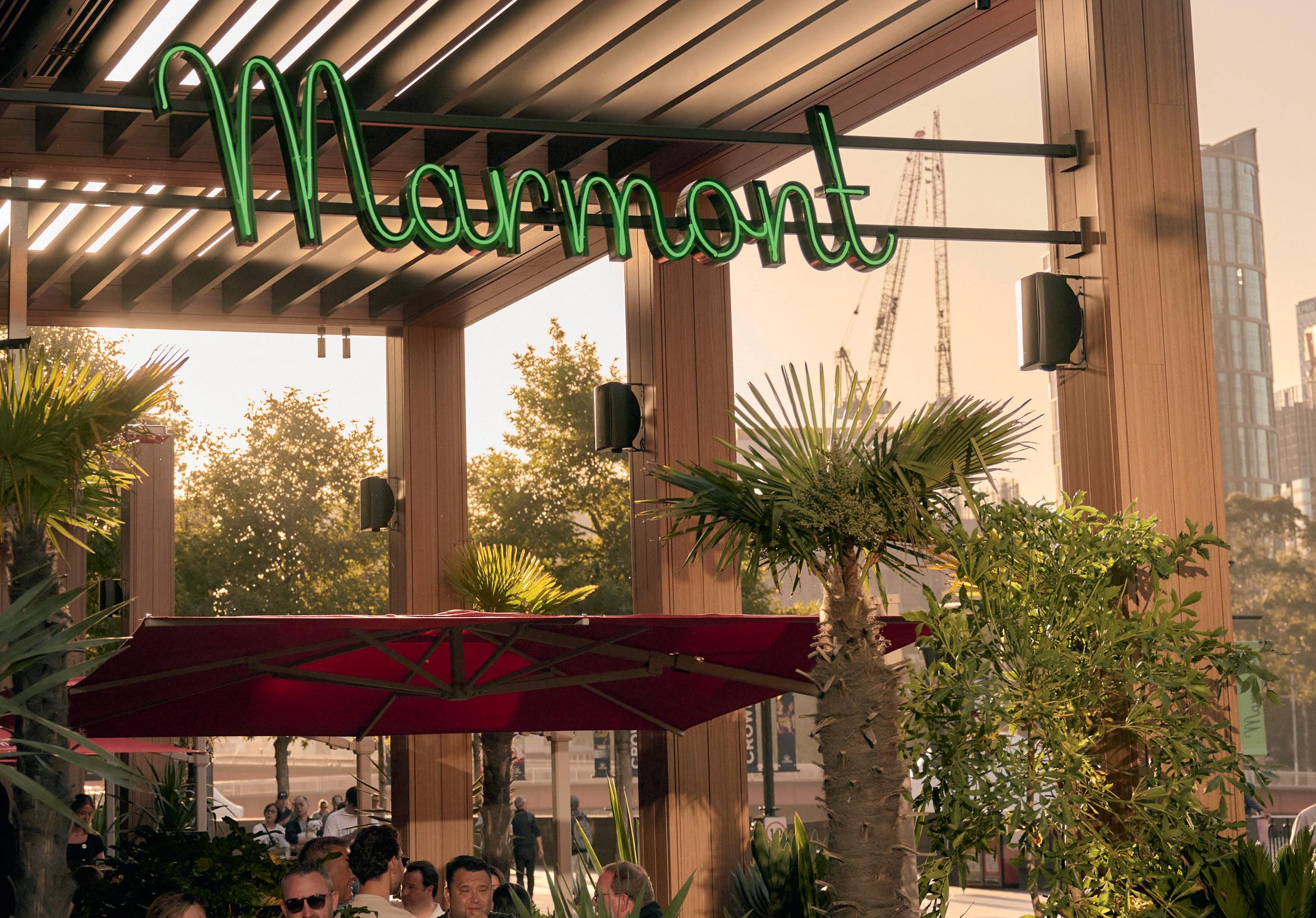
“I had their ‘Speed Bump’ and it was a game-changer. The balance of flavours was incredible, and the caviar bump was the kind of thoughtful touch that takes a drink to the next level. I’m looking forward to exploring more of the amazing bar scene here, it’s an exciting city for hospitality.”
“This is the perfect spot for a summer’s day, sitting outside on the lawn while having one of their amazing and inventive cocktails.”
“It is great to have this spot back open again, and it’s back better than ever.”
“This is the perfect spot if you’re looking for one of Melbourne’s original Yarra bars and is my absolute pick of the bunch.”
“Go to this bar for the clarified Paloma with fluffy grapefruit; it’s refined and delicious.”
SIGNATURE DRINK
Melrose Mezcalina
While the exact recipe is under wraps Rox says: “It’s got a mezcal base with a sweet-leaning but complex flavour profile that is unexpected and yum. It’s the kind of drink that feels like a journey – interesting, bold, and a bit different, just like Marmont.”
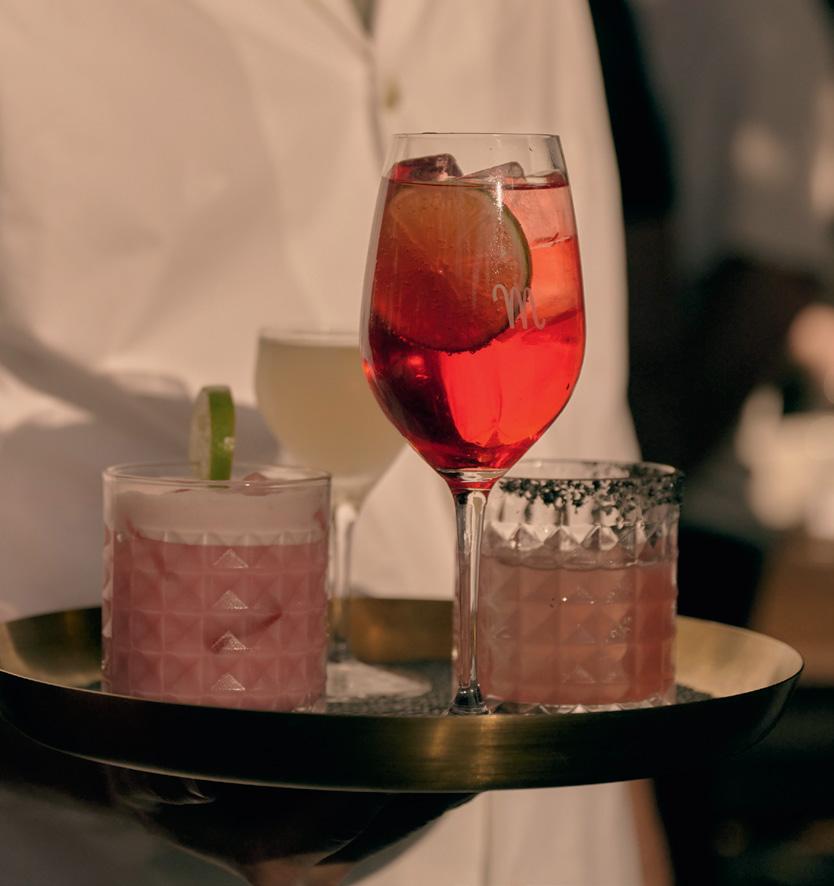


Located in Farmers Park, a community green space bordered by a redwood boardwalk in Anaheim, Poppy & Seed is bringing fresh-picked produce and attention-getting avours to this food lovers’ precinct. We pull up a table in the garden with Michael and Kwini Reed.
Celebrating its 10th anniversary, Anaheim’s Packing District has turned a former orange-packing facility into a foodie wonderland featuring over 20 vendors in the historic Packing House (one of the last remaining in Orange County). Situated in the adjacent Farmer’s Park, Poppy & Seed is the second restaurant from Michael and Kwini Reed after launching Poppy & Rose, a brunch spot in Downtown LA.
Arriving at Poppy & Seed early evening as strings of fairy lights come on and the outdoor fireplaces spring to life, you can see why the pair were excited by the space.
“Michael has always wanted a garden close to where he was creating and cultivating the menus so this place just worked perfectly,” Kwini says.
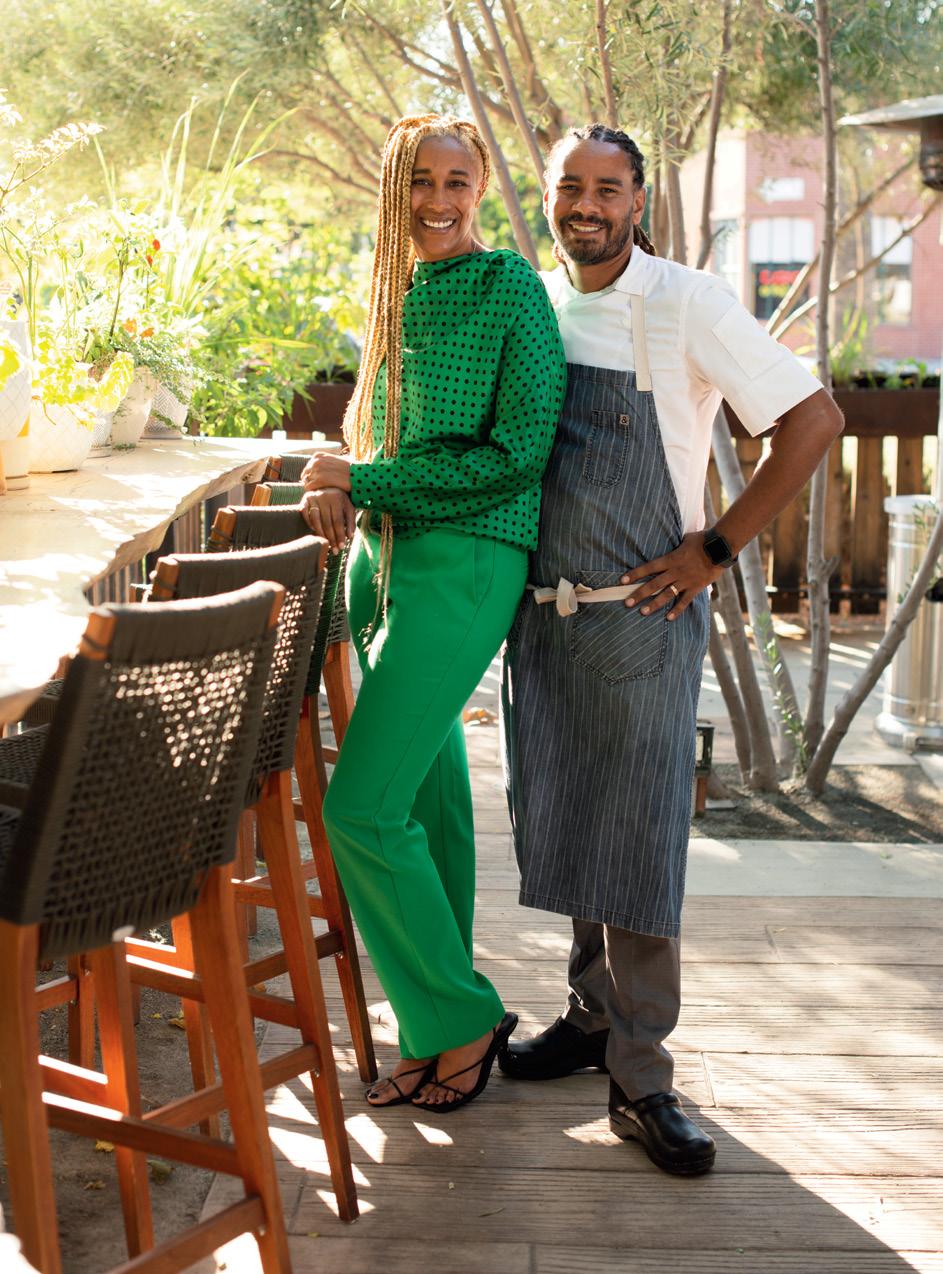
“We really needed an outdoor space because you can’t find that in Downtown LA and this restaurant had really good bones,” Michael adds.
If the LA Poppy is a morning person, Poppy & Seed is more at home in the evening with a seasonal menu that might include lobster risotto or coffee-rubbed smoked pork belly.
“The ethos of our restaurant is really about sustainability, we really want to make an environment that is inviting,” says Kwini. “But we are also really big on partnering with small and local farms because we feel like we are a small business and we like to patronise other small businesses.”
It’s a community-first approach that suits the Packing District with restaurants spread out all through the repurposed orange-packing hub.
“We like to cultivate conversation and to bring hospitality back to where it used to be, where people gathered and dined to celebrate things at a warm space with great food and drinks,” says Kwini.
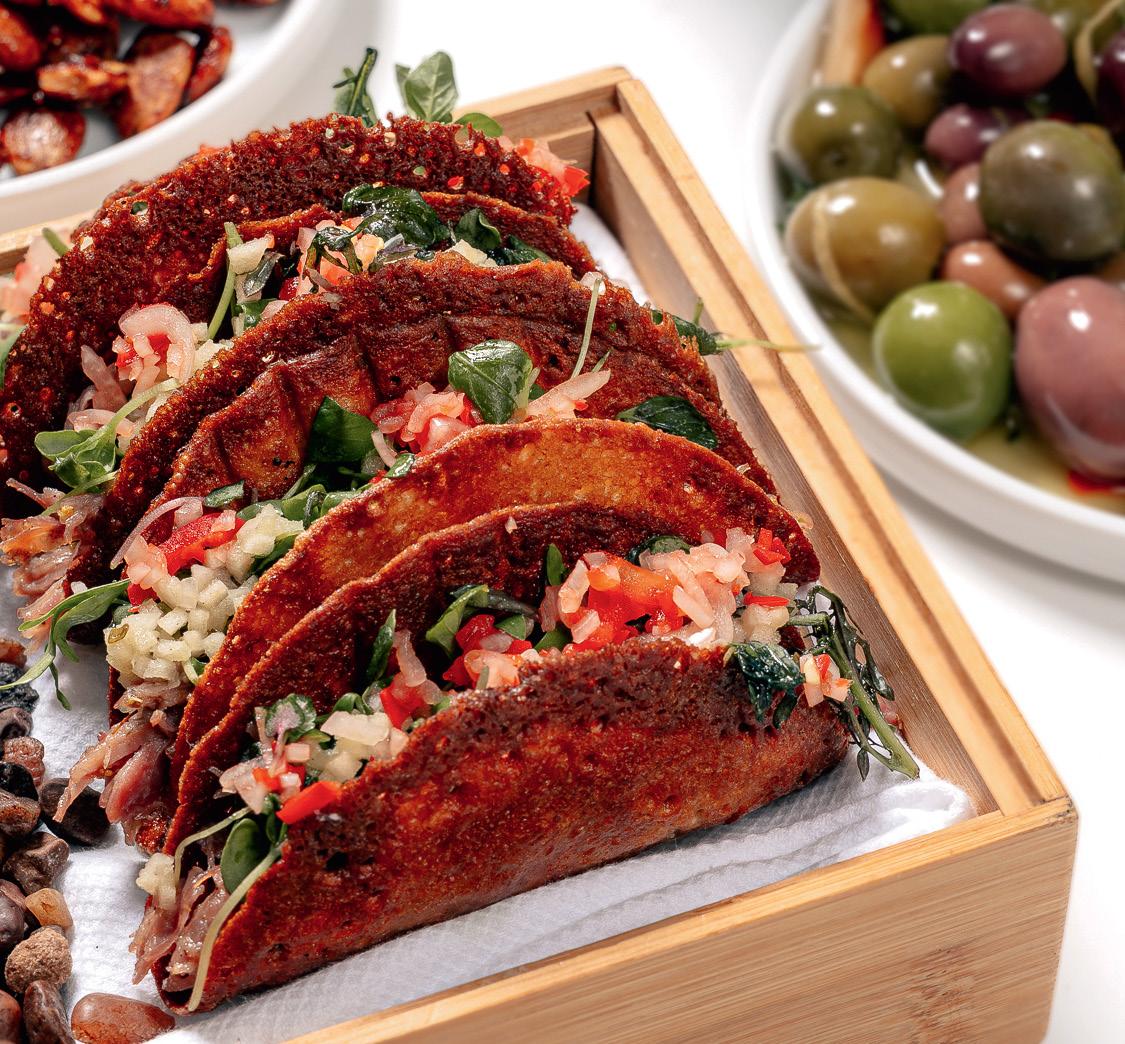
KWINI
Michelin-starred Italian from James Beard Award-winning chef Nancy Silverton. Osteria Mozza has an all-Italian wine list, a white-marble mozzarella bar and delicious handmade pasta.
“When we are looking for an authentic burrito, this is where we go,” says Kwini. Tere’s celebrates the unique cuisine from the Mexican state of Michoacan with regional twists on enchiladas, empanadas and tacos.
“Tatsu was my first introduction to ramen when Michael and I started dating and we have not found a better ramen place,” says Kwini. “They only do a couple of things and they do them well.” Dishes include the “Hippie” ramen (vegan), “Cheeky” ramen (chicken) and the “Soul” ramen with slow-cooked pork broth and black garlic oil.
“This is Stephanie Izard’s restaurant and we thoroughly love her menu,” Kwini says. Girl & the Goat began in Chicago but now champions the bounty of fresh produce on offer throughout California in dishes like BBQ pork belly in crab butter and (appropriately) goat curry.
“Our signature dish is probably the duck tacos. It is duck confit in a crisp fried crepe with herbs and apple relish.”
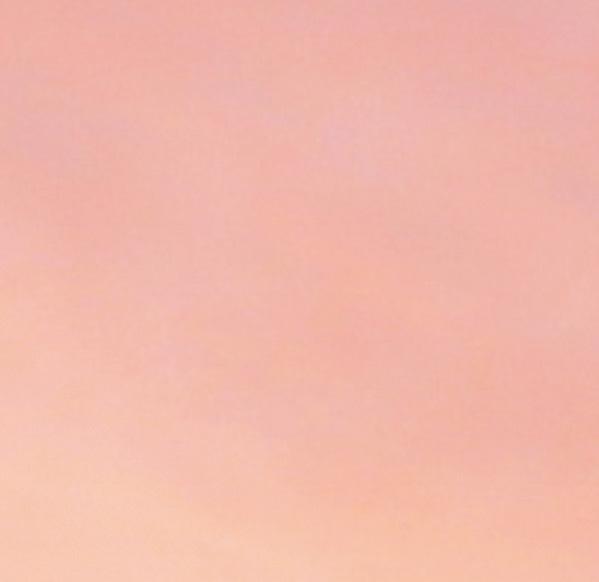
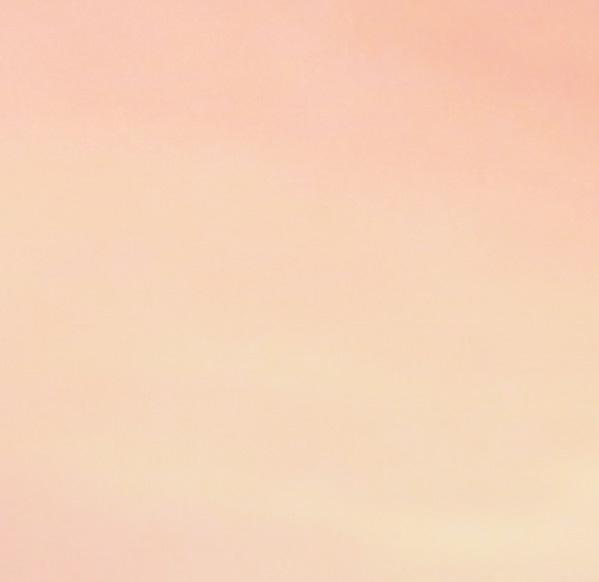
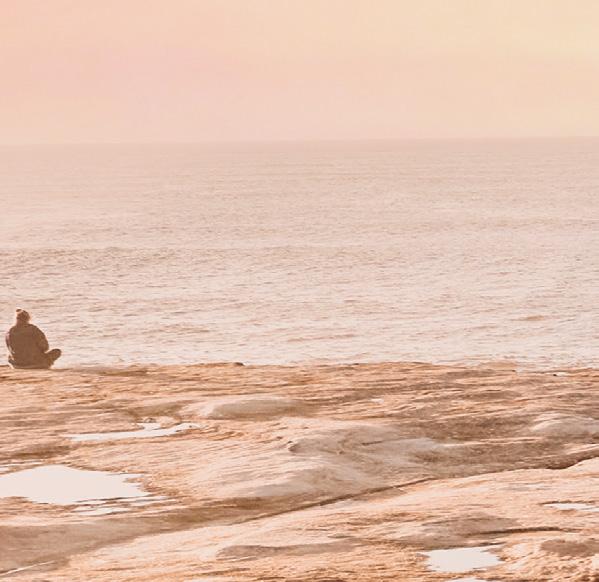
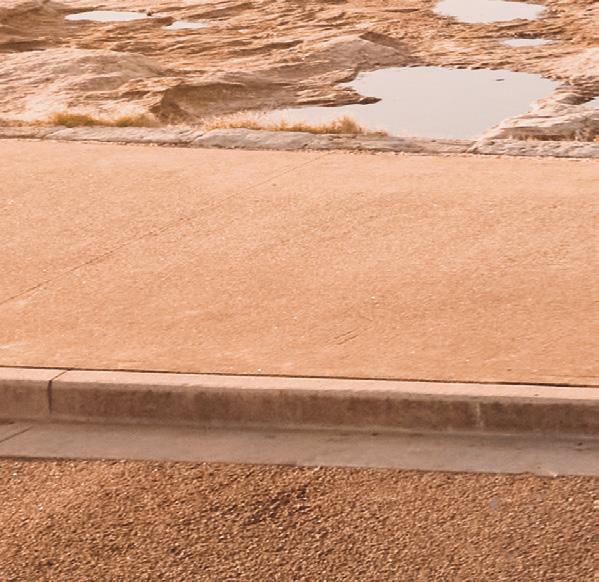

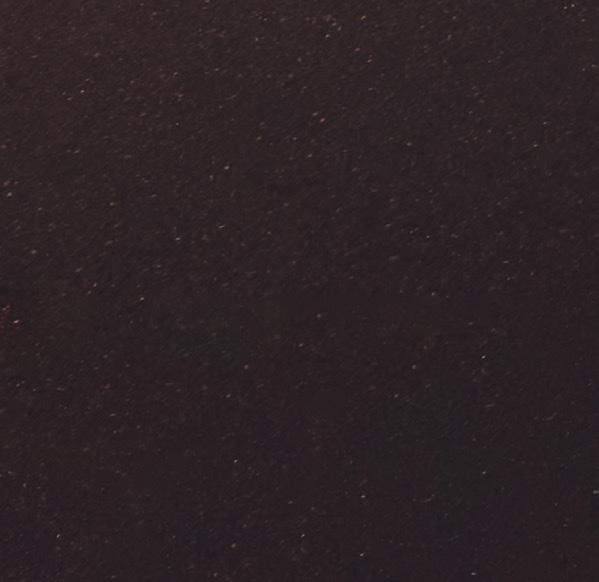

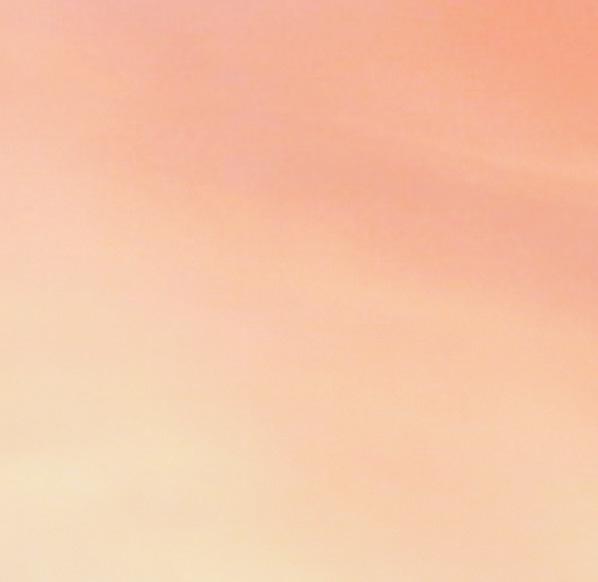

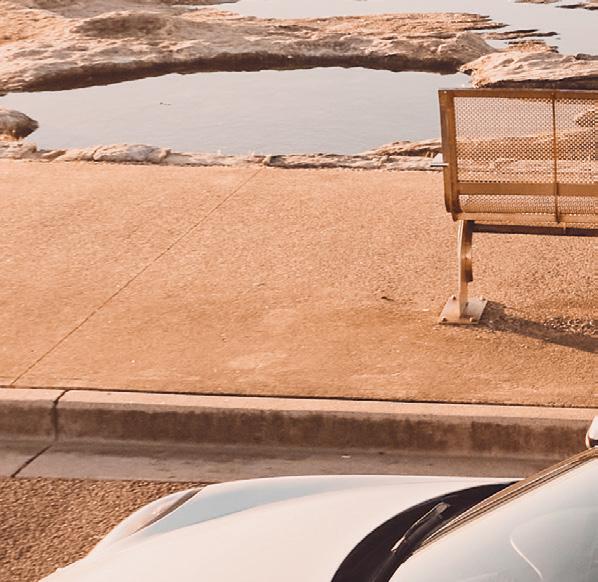
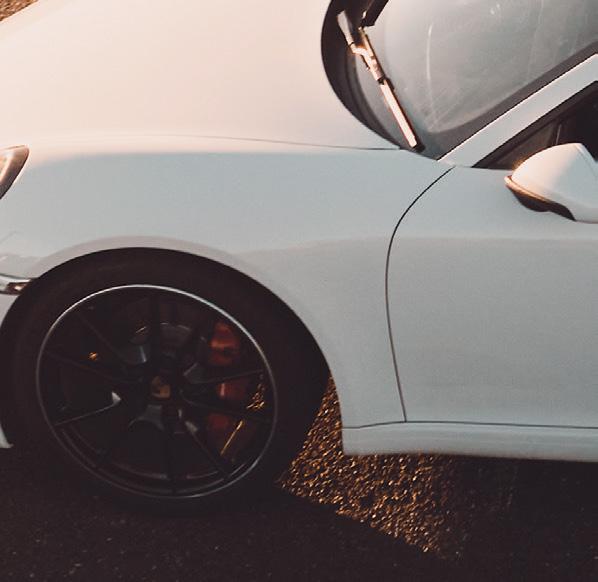

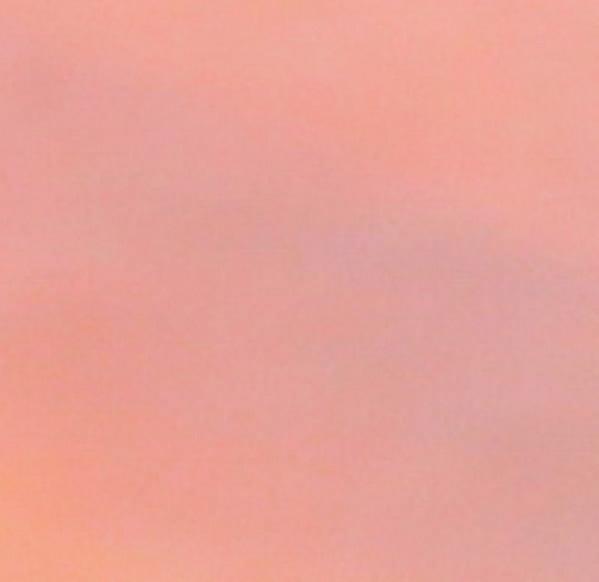
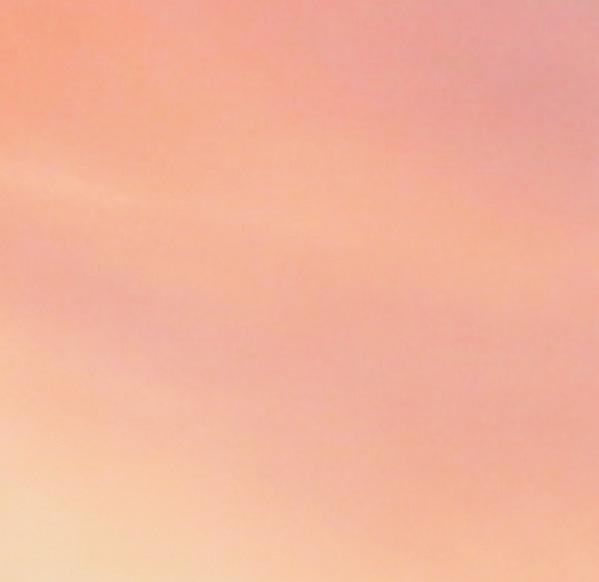
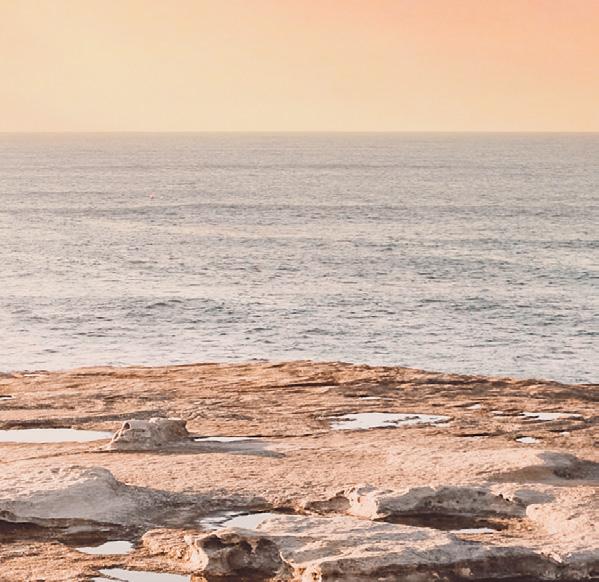

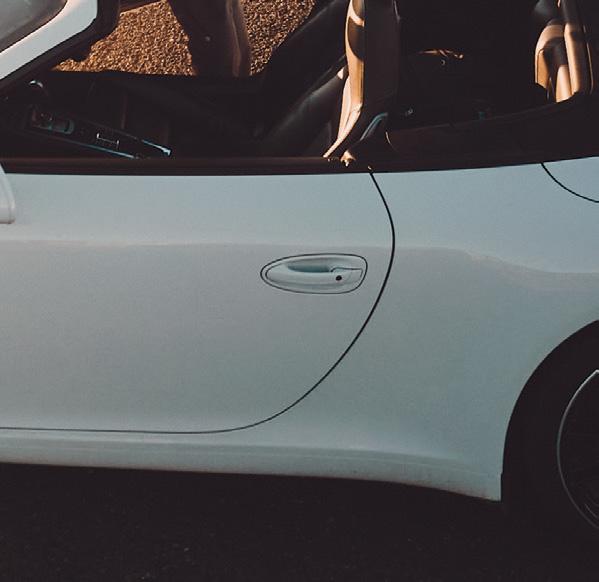

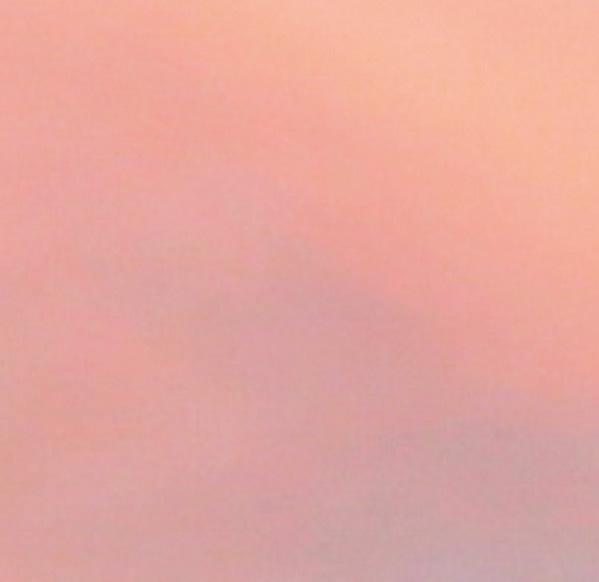

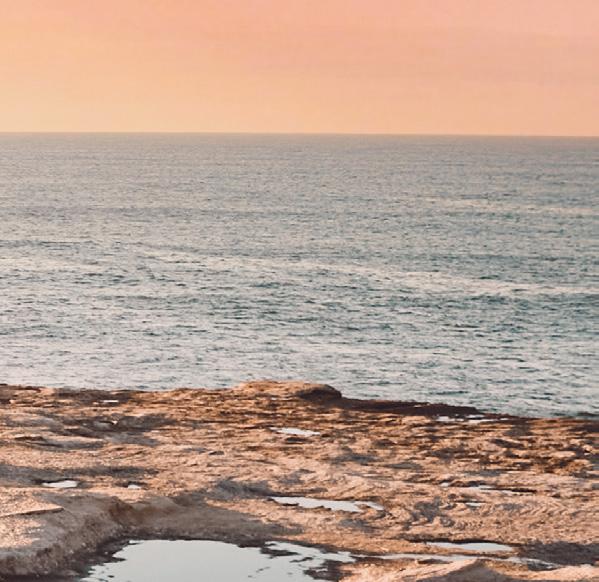

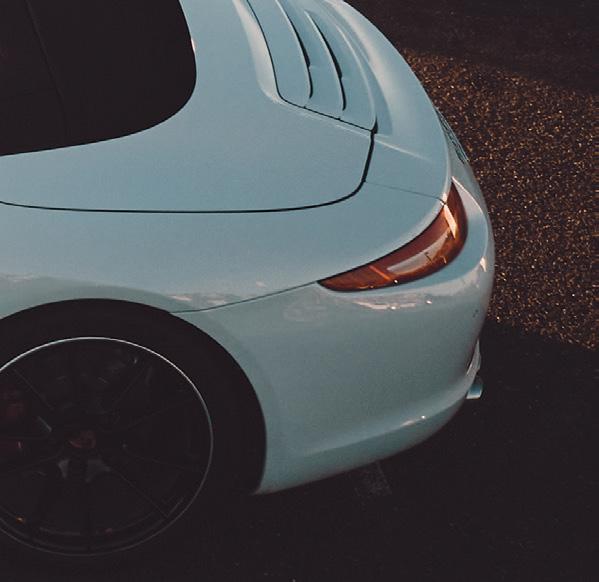


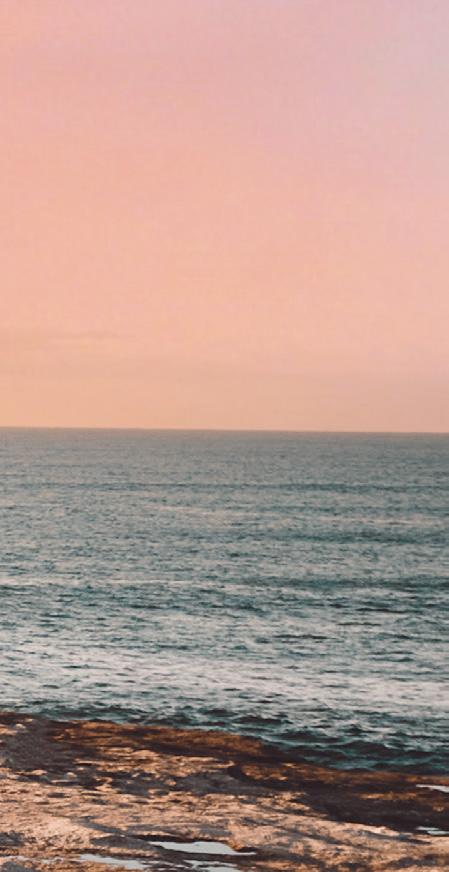
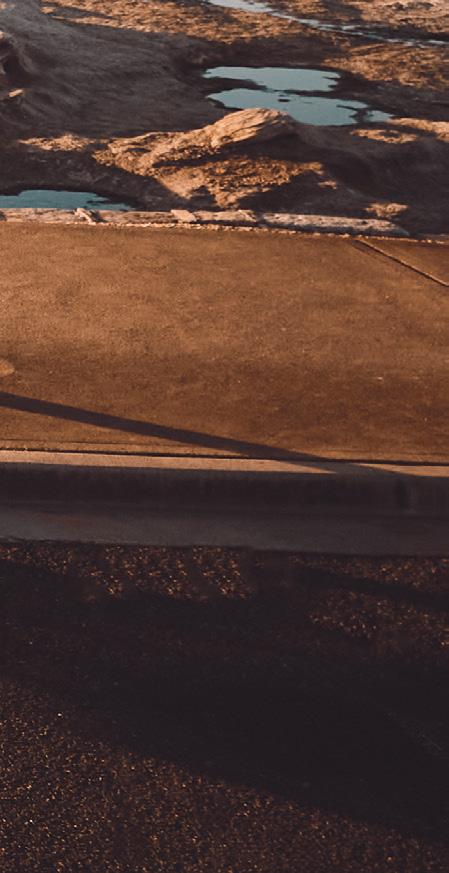

Discover our 5-star riverside escape perfectly located on the Chao Phraya River in Bangkok, with every room featuring panoramic river views. Catch the hotel’s complimentary shuttle boat across to Bangkok’s largest shopping mall, Icon Siam, or experience the original Bangkok by strolling the surrounding streets of Talat Noi and China Town.

The Royal Orchid Sheraton Riverside Hotel Bangkok is the perfect vacation destination boasting a selection of dining options, including Thara Tong, a Thai restaurant located in a traditional teak house overlooking the river, featuring traditional Thai dancing and music. Enjoy a choice of two pools, with the terrace pool overlooking the river or enjoy drink at the swim up pool bar in our resort style garden pool. At the end of the day, enjoy a massage in Mandara Spa or happy hour at Siam Yacht Club watching the sunset over the river.

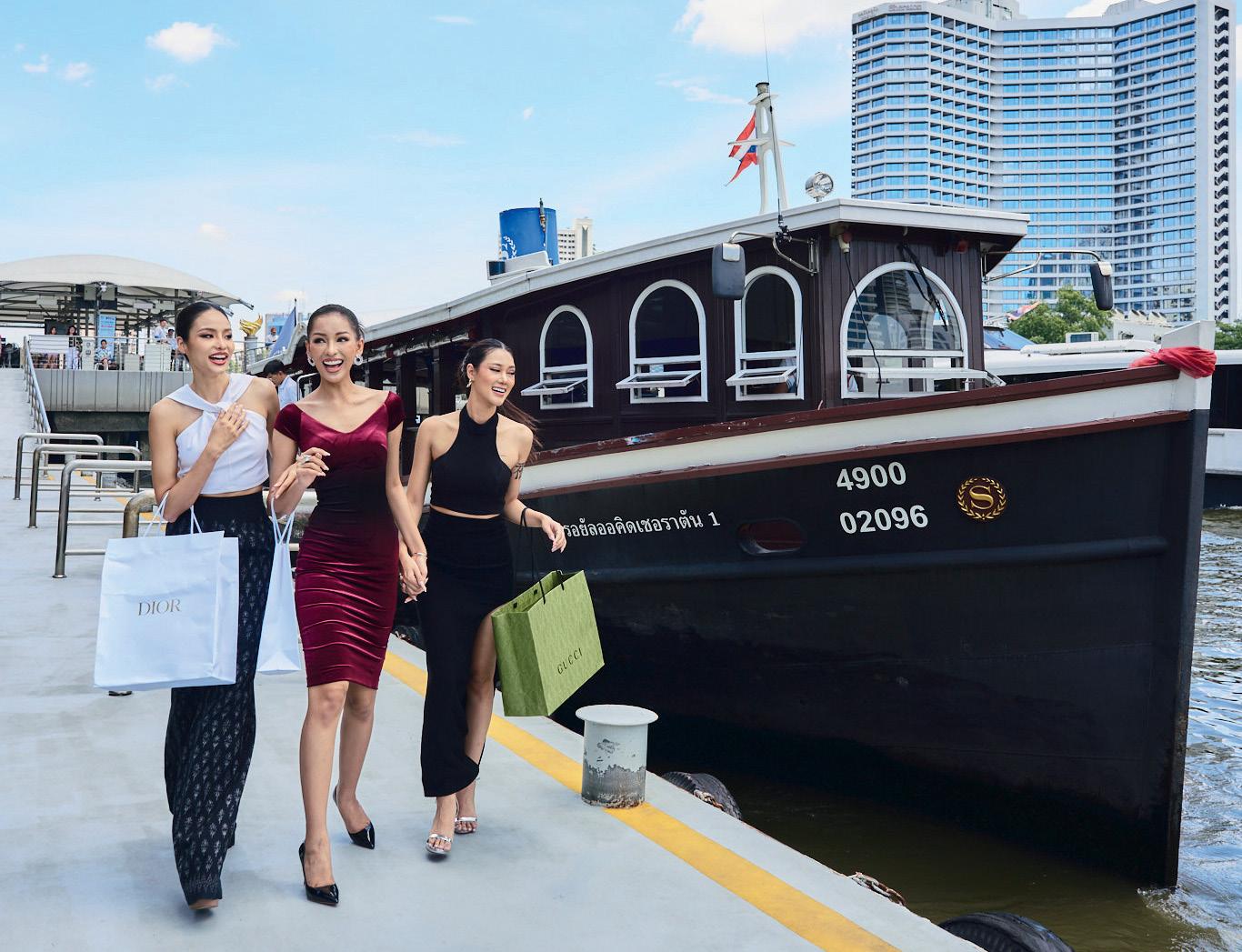

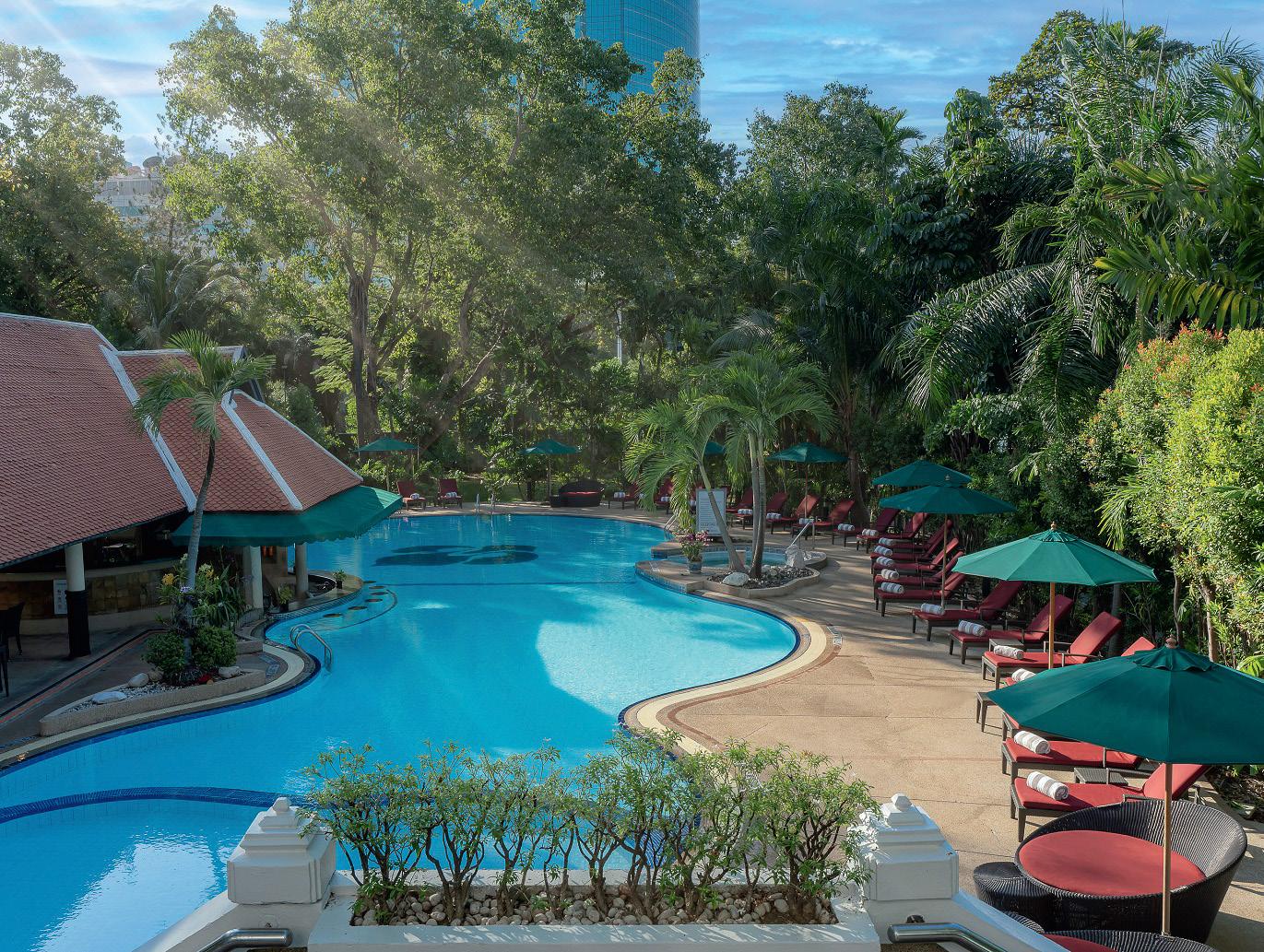
Recharge at our riverside hotel in Bangkok
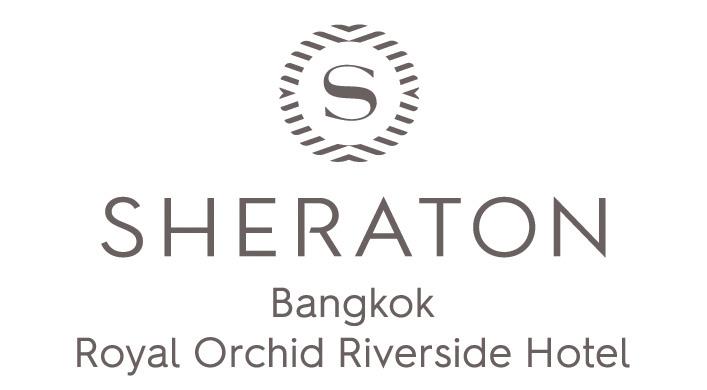
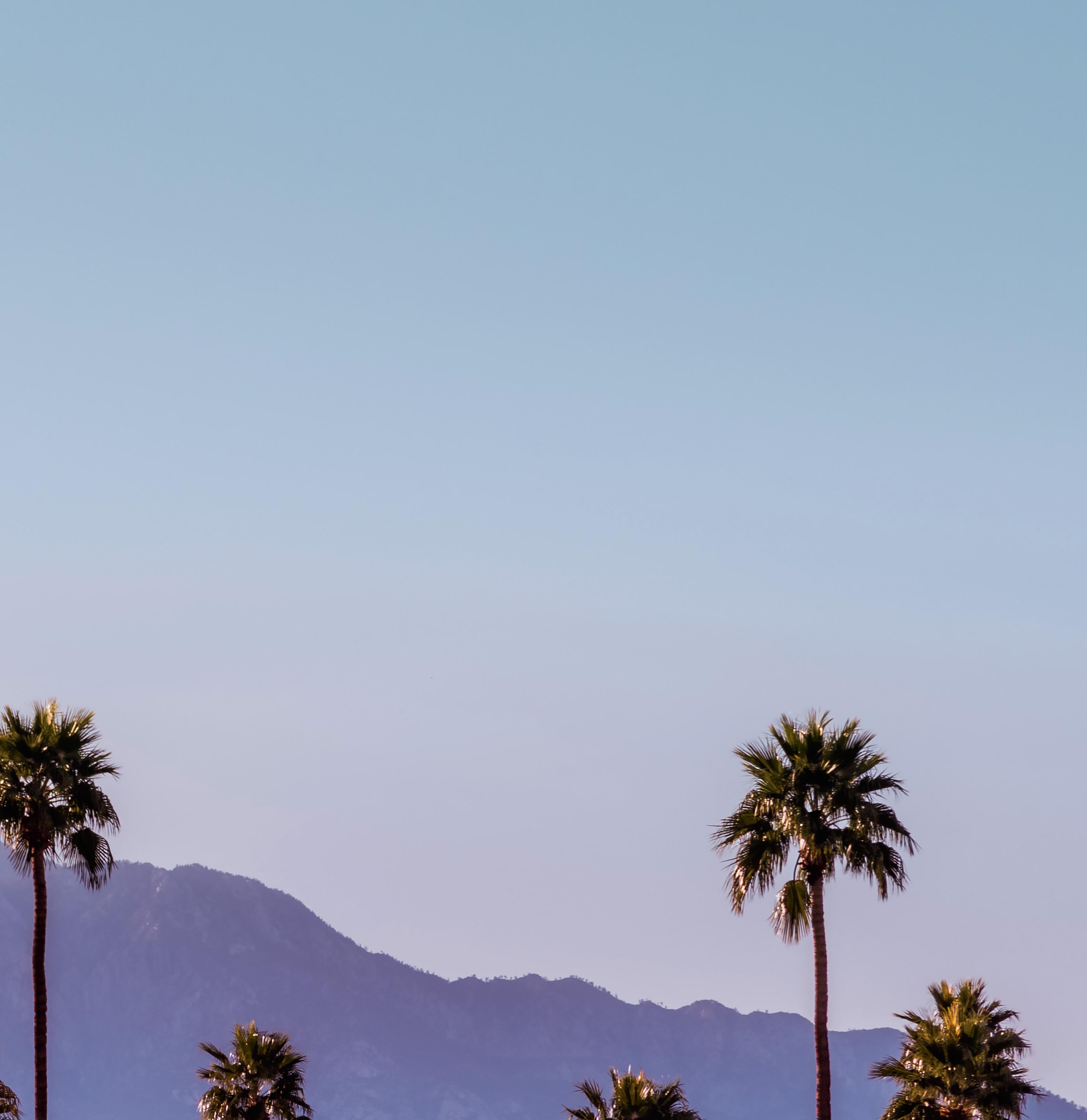
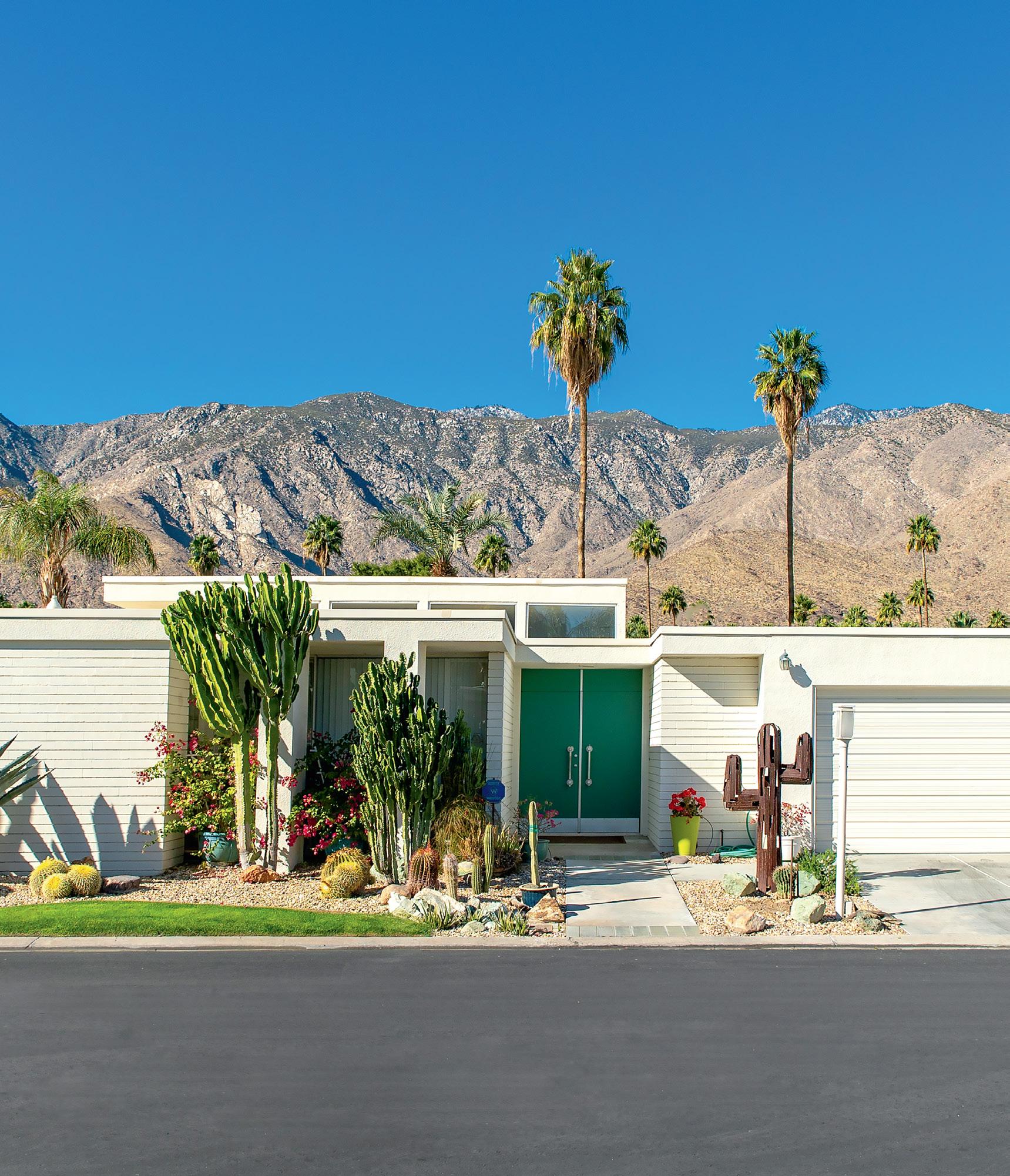
Unforgiving heat collides with inimitable style in the oasis community of Palm Springs. Paul Chai takes an architectural tour, rides a vertiginous tramway and nds a little slice of Hollywood in the desert.

In the film Don’t Worry Darling, Harry Styles and Florence Pugh may have received top billing, but it is the mid-century-modern homes of Palm Springs that are the true stars of the show. There is something beautifully simple about the decorative screening walls and giant perforated panels of Desert Modernism, the architecture style that has come to define this oasis just a few hours’ drive from Los Angeles.
Desert Modernism began in the 1930s and created rooflines like the wings of the butterfly roof (that appear to hover at night) and the jagged edges of the folded-plate roof. These buildings are beloved by Hollywood and are instantly recognisable to fans of The Flintstones ( Hanna Barbera animation chief Joseph Barbera had a Palm Springs home) and artist Shag (Josh Agle, who has a flagship print store in the centre of town). These houses have shielded Elvis and Priscilla
Presley from paparazzi on their honeymoon, one has a crack in the sink from Ava Gardner hurling a Champagne bottle at Frank Sinatra and they have hosted parties for Dean Martin. If these avant-garde abodes were a cocktail, they would be a bone-dry martini.
I am joining the Palm Springs Mod Squad tour to learn more about these mid-century marvels, and my waiting room is the Saguaro Palm Springs, one of the most Instagrammed spots in the city. The Saguaro is a rare splash of colour in a town that adheres to very strict planning codes to keep it looking like a slice of the 1950s. Permission was originally denied as the proposed multi-colour façade was not deemed “natural” enough, but the savvy owners altered the colours slightly to reflect the vibrant desert wildflower blooms to get the ok from local government. It’s a lively spot with pool parties, Taco Tuesdays and El Jefe tequila bar.
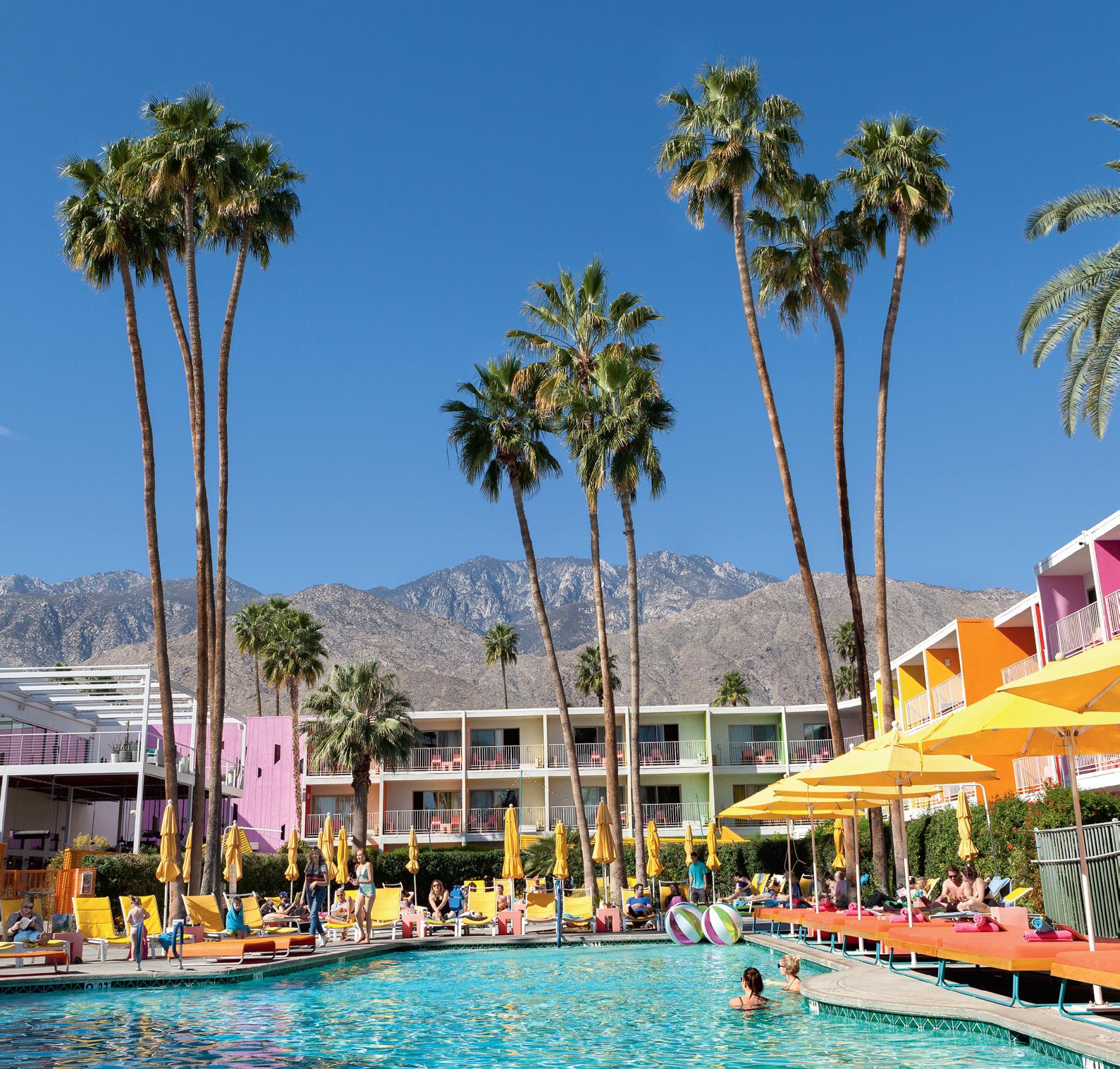
My Mod Squad van pulls up and out jumps tour guide Kurt Cyr, an expert in Desert Modernism buildings.
“Here in Palm Springs, we lead a very contrary life,” he says. “Half the year we celebrate the sun and the other half we hide away from it, in a kind of summer hibernation.”
Kurt drives around the neat Palm Springs neighbourhoods, pointing out homes owned by members of the Rat Pack, William Holden and Tippi Hedren, star of Alfred Hitchcock’s The Birds. Palm Springs has a strong connection to Hollywood, celebrated with a two-storey-high Marilyn Monroe statue and its very own Walk of Fame.
Kurt explains that, back in the golden age of Hollywood, stars were locked into contracts that forbade them from travelling more than 100 miles from the studios in case they needed to be called back for retakes.
“And guess how far Palm Springs is from Hollywood?” says Kurt. “So, it satisfied the
holiday clause and that is why Hollywood flocked to the desert, because it was as far as the ‘golden leash’ would allow.”
Driving through Canyon View Estates (Harry’s house in Don’t Worry Darling) we zoom past homes once owned by Cary Grant, John Wayne and comedian Jack Benny. We stand outside Frank Sinatra’s joint which has a piano-shaped swimming pool and is named for the twin palms that were illuminated so the crooner’s cronies could find their way across the desert at night. We also visit The Kaufmann House which starred as Frank’s (Chris Pine’s) residence in Don’t Worry Darling and once belonged to department store owner Edgar Kauffman; the home is the most famous Desert Modernism building in the whole of Palm Springs.
We drive through the little “pocket of Polynesia” that celebrates the tiki-inspired “Hawaiiana” houses with roofs shaped like the upturned prow of a boat.

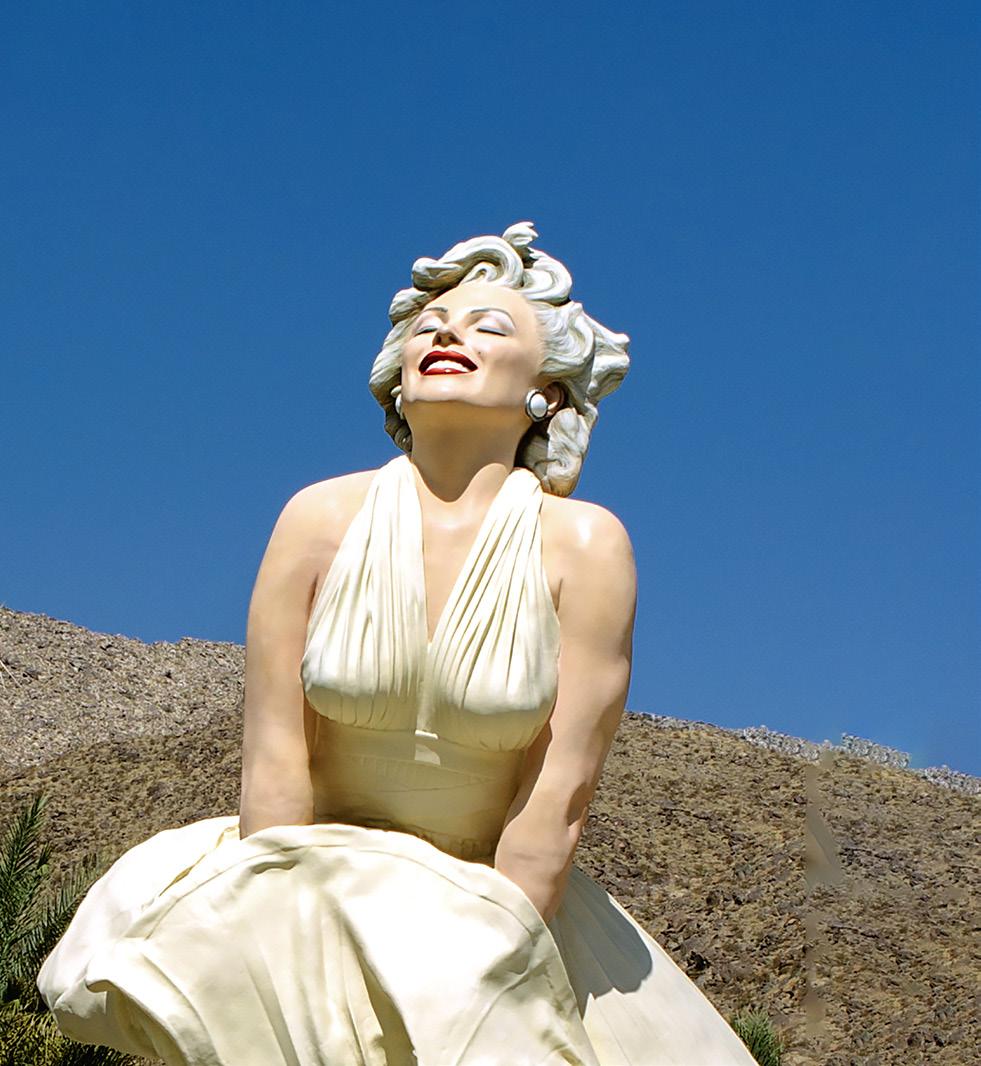
Palm Springs

Situated in the “pocket of Polynesia”, The Royal Sun is a revamped retro stay gathered around a pool stacked with colourful party floaties and just across the road from the soaring Palm Springs mountain range. The rooms are dressed in simple desert ochres and local art. Minervas (marked by a topless Alfa Romeo filled with cacti growing out of it) is the all-day dining spot where you can start the day with a breakfast burrito or order snacks and drinks poolside.
Tucked away in the prestigious enclave of Nusa Dua, this exclusive villa retreat is a haven of privacy and sophistication. Each villa is a secluded sanctuary, complete with a private pool, open-air living spaces, and lush tropical gardens, seamlessly blending contemporary luxury with timeless Balinese elegance. Thoughtfully curated 24-hour butler service ensures every need is met with precision and care, creating a truly bespoke experience.
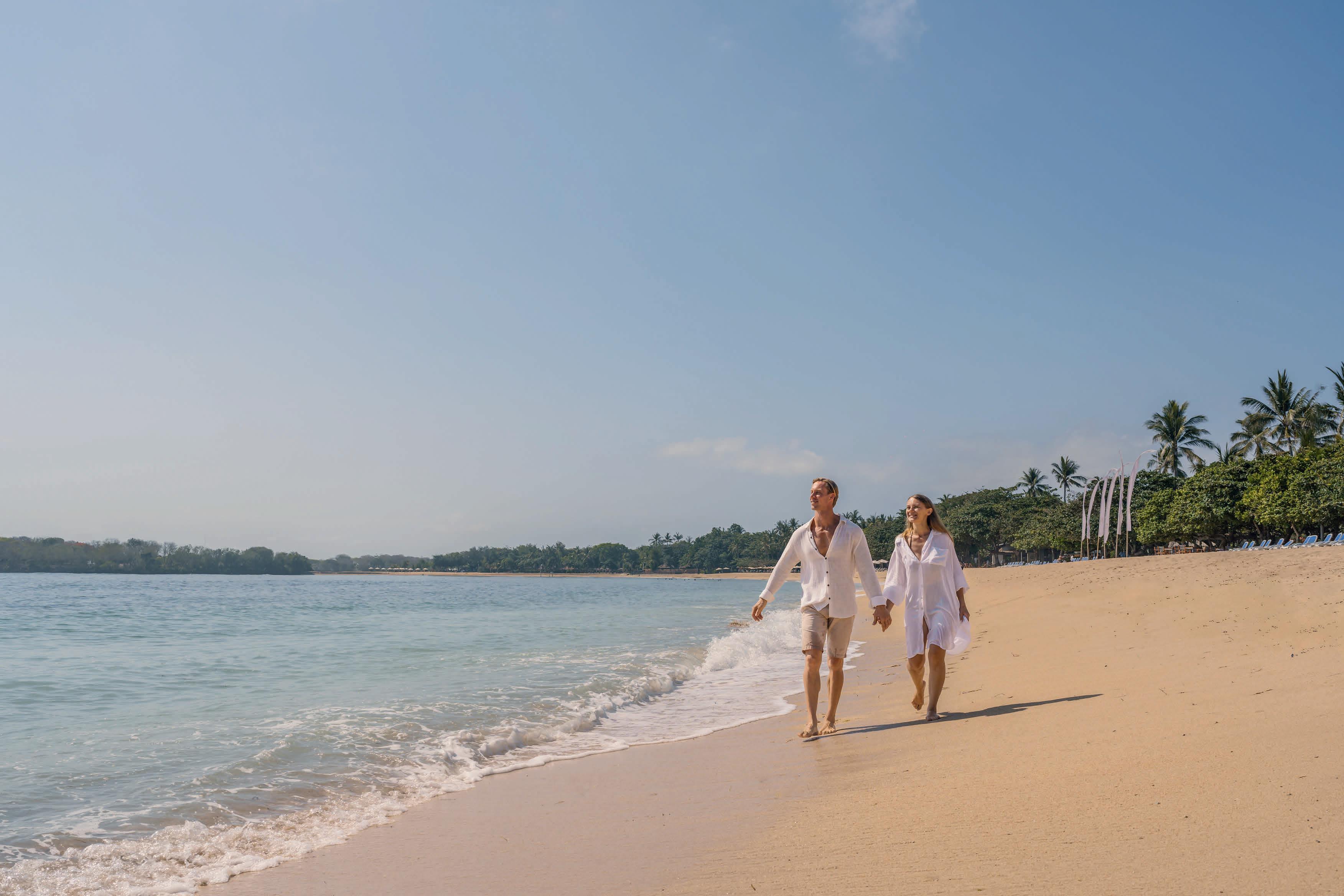

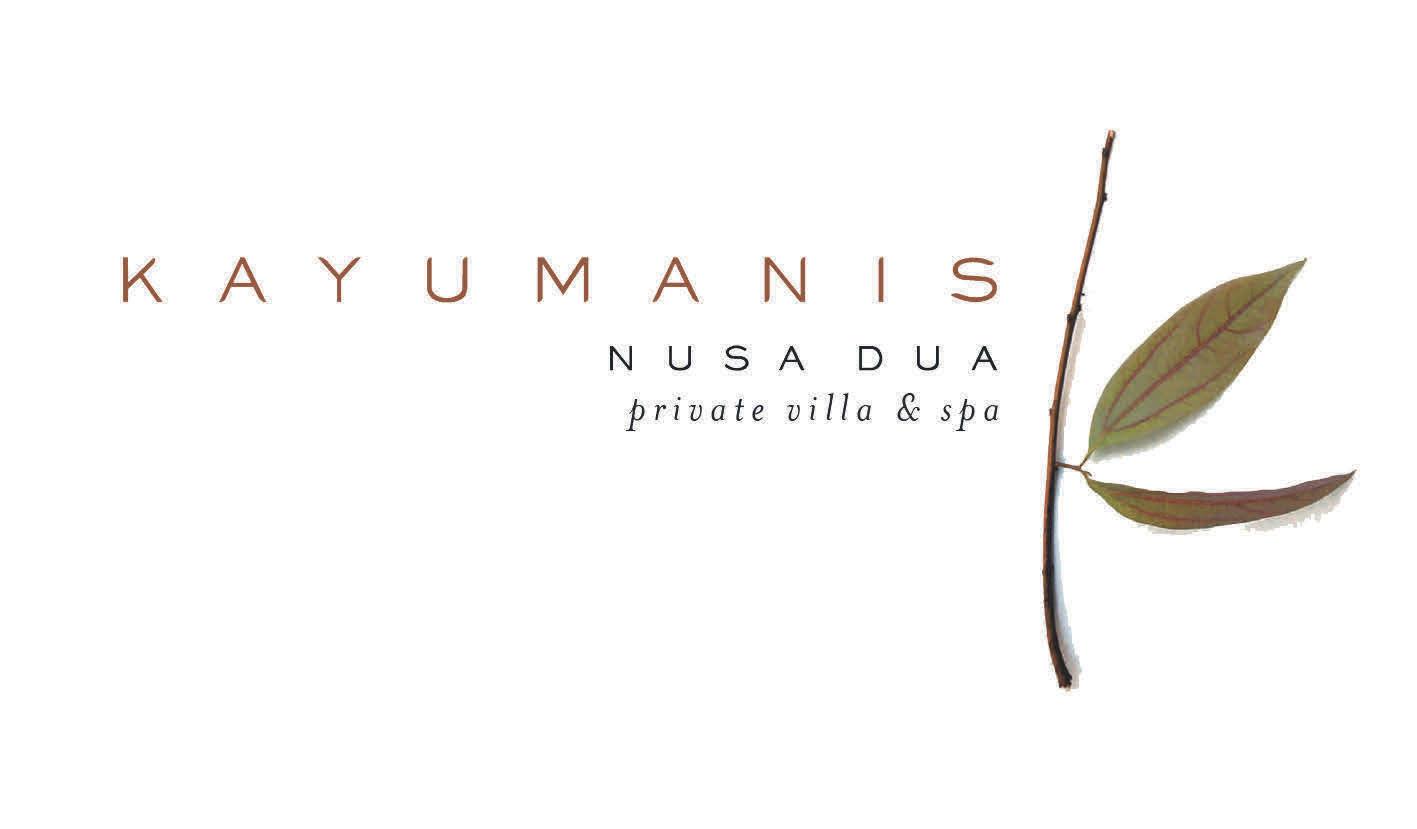
Indulge in the art of relaxation with authentic Balinese spa rituals, savor gourmet dining crafted to perfection, or unwind at exclusive beach facilities, where private sun loungers and impeccable service set the scene for moments of pure serenity. Whether for a romantic escape, a refined family retreat, or an intimate getaway, this hidden gem offers an unparalleled journey into tranquility and indulgence.
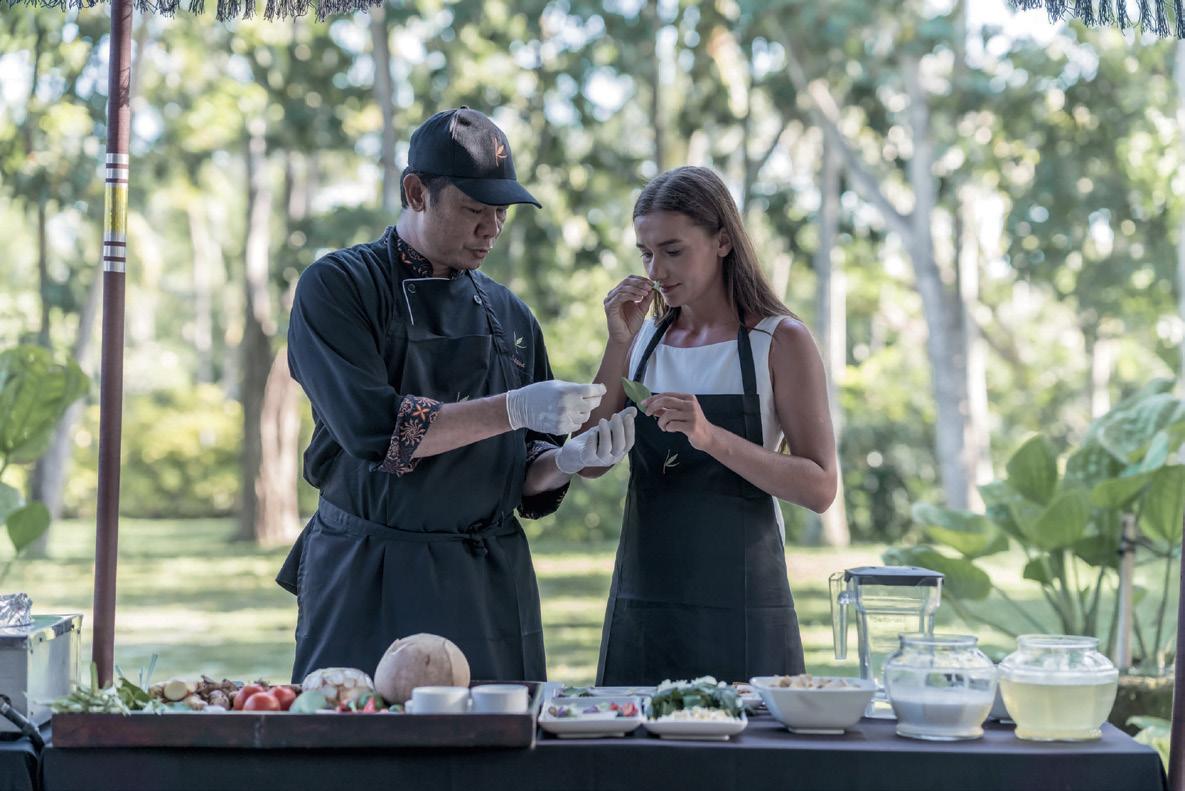
“Hawaii and Palm Springs have a lot in common,” says Kurt. “ ey have mountains, palm trees and sand and there are around 48,000 people living in Palm Springs and over 40,000 swimming pools –so everyone has a resort in their backyard.”
Kurt deposits us back in the Saguaro parking lot and I scramble off to my lunch engagement.
Originally designed as a gas station, the Palm Springs Aerial Tramway visitor centre is another Desert Modernism masterpiece designed by architect Albert Frey. The airy space is where you board the world’s largest rotating tram car and then get carried over two miles straight up a cliff into the Mt. San Jacinto State Park. What is amazing about this journey is not only that you get the whole
of Palm Springs laid out before you, so you can fully appreciate the scale of this desert town, but also that you arrive in pine forest that would make Smokey Bear proud. At the top sits Peak The Restaurant where I dine on pan-seared salmon and sip margaritas. The lush greenery and log cabins are jarring after the sleek lines and retro architecture of Palm Springs, but this is a town of incredible contrasts, of quirky celebrity history and all of it done with a very big dash of style.
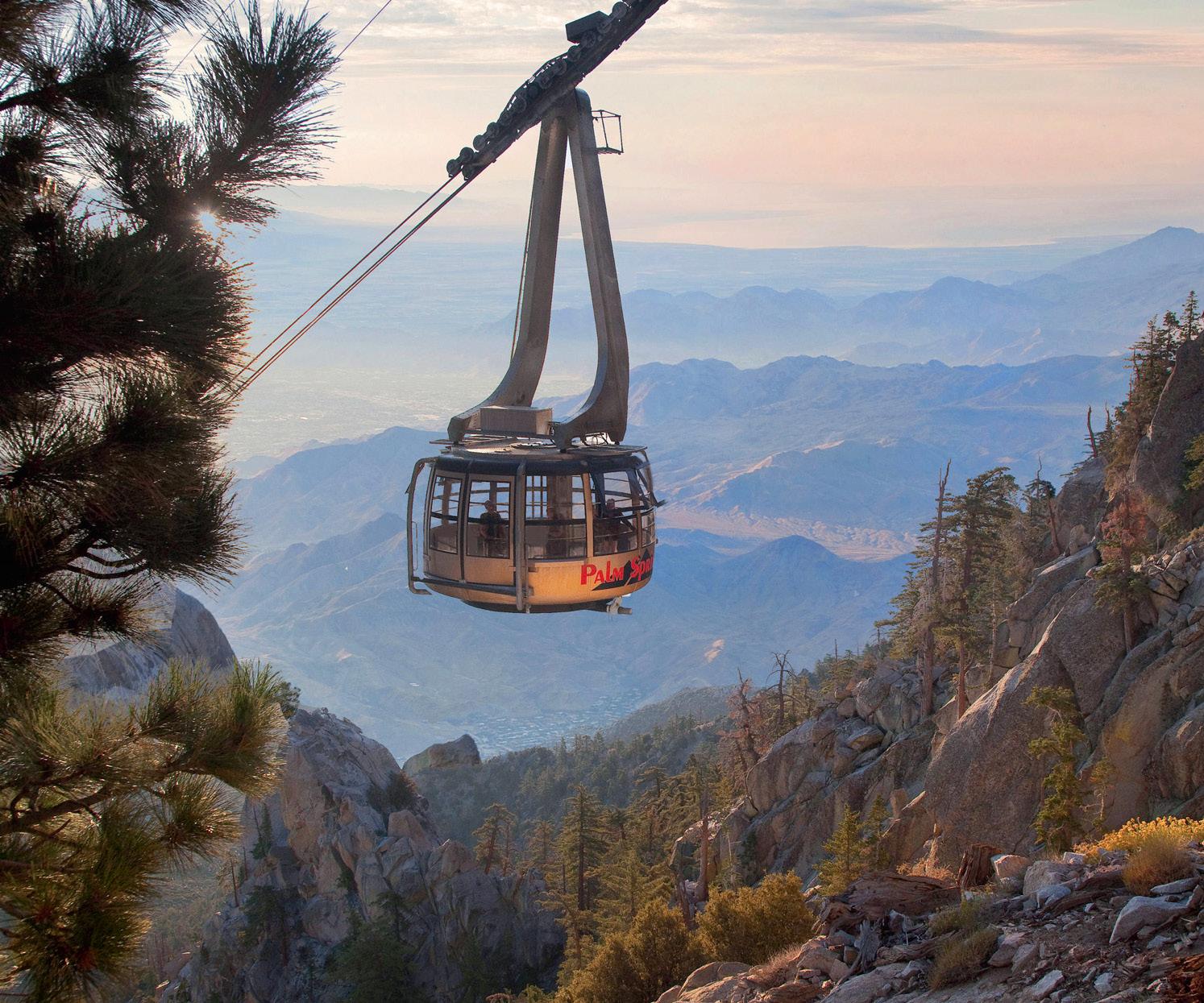

A pooch-friendly retro dining spot with a great sharing menu of shrimp and grits with maple drizzle, garlic noodles and rice cakes with gochujang. The cocktails are off the leash, too, try the Boozehounds Margarita with smoked chilli.
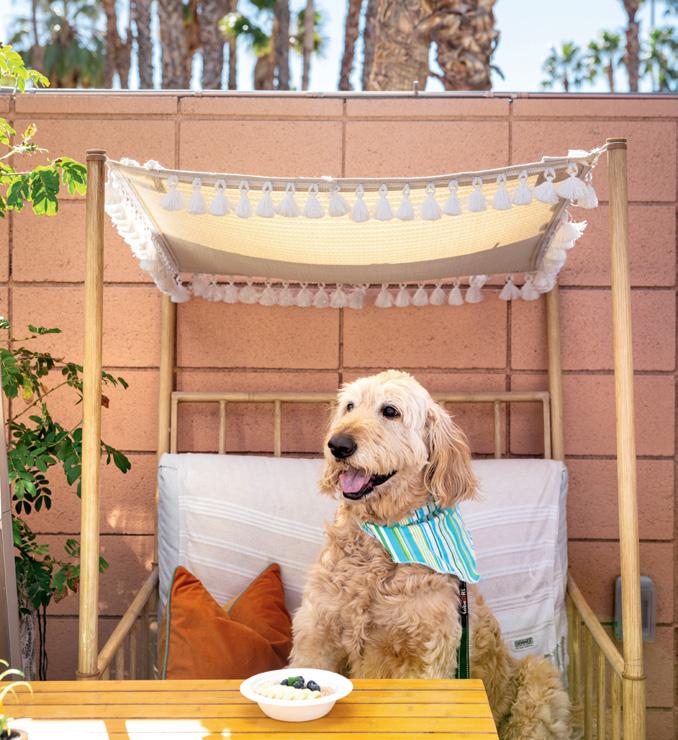
This vibrant indoor-outdoor diner is just a few metres from the city’s giant Marilyn Monroe statue and stars the flavours of Jalisco in Mexico. Grab fish tacos and handcrafted cocktails (yes, margaritas again, several types).


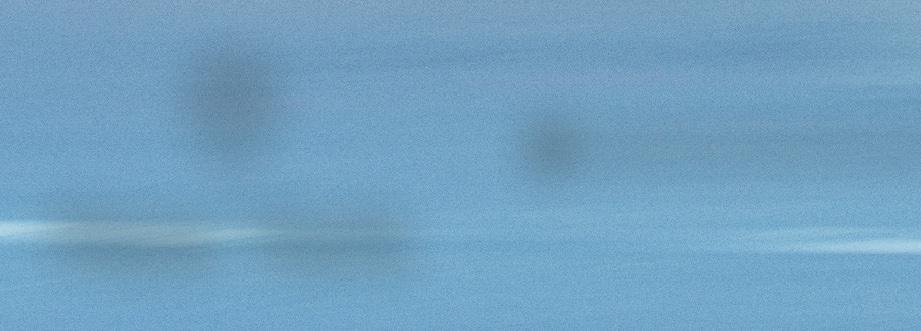

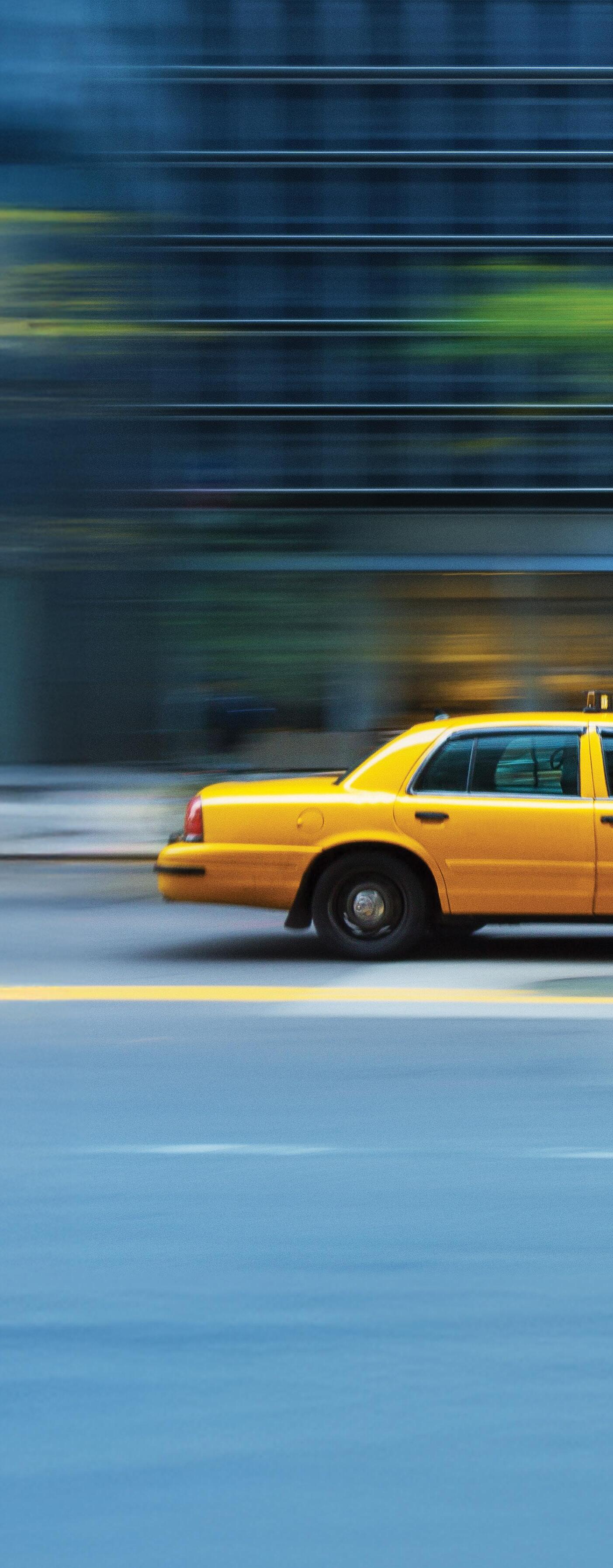





ONE NIGHT IN...
Melburnians love a night out, and with intimate classic cocktail bars, dirty rock ‘n’ roll and a martini that was nine months in the planning, who can blame them.

Here is your planner for a perfect night in Melbourne.
6pm Behind the curtain
There’s a frisson of excitement as you wait for the thick red curtains at the entrance of Apollo Inn to be opened for you. With a heavy swoosh, the curtains are closed after you enter and time passes differently: the moody surrounds, unexpected flavours and service that comes before you even know you need it speak to a different age of bartending (it’s named after an 1844 public house) and a single cocktail feels like an event to be savoured. Order the rosy Lucien Gaudin.
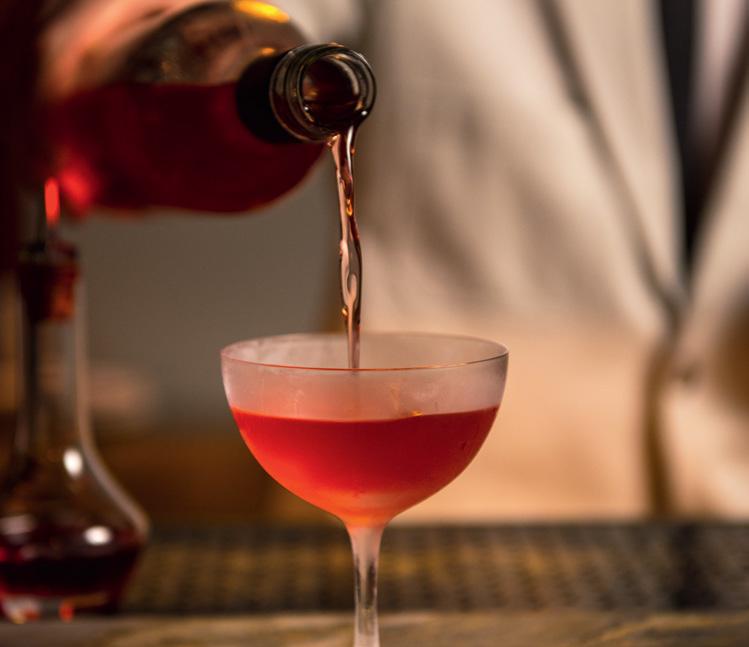
The Never Never Triple Dry Martini at Gimlet is billed as the world’s driest martini and took nine months of research to perfect. Served tableside from a decanter next to a pile of fresh lemons and with a dash of seasonal tincture, in that first sip you can taste the months of finessing. Every mouthful at Gimlet feels this curated whether it is the famous gnocco fritto with bresaola and parmesan or buffalo mozzarella, anchovy and chilli on toasted sourdough; or a main of John Dory with artichoke and fennel. Then it’s time to get that tableside trolley back to your gilded booth for the sgroppino where lemon gelato, Meletti limoncello and DOC prosecco are whisked together in a frozen bowl and topped with more bubbly. Gimlet is the pinnacle of Melbourne dining.
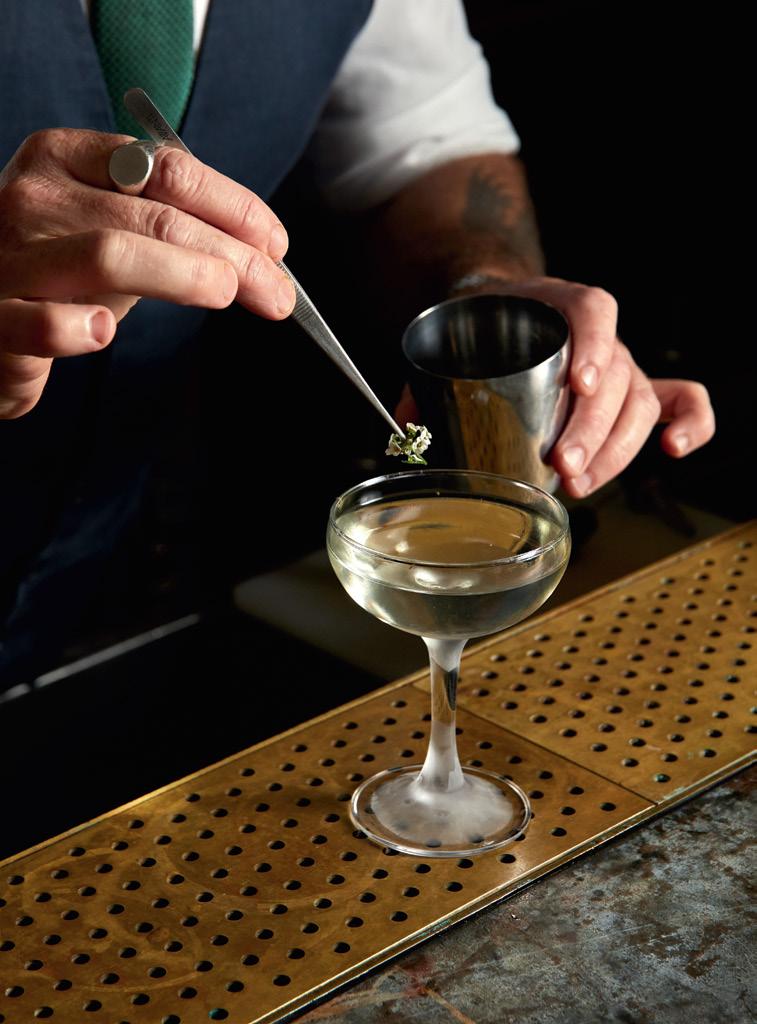
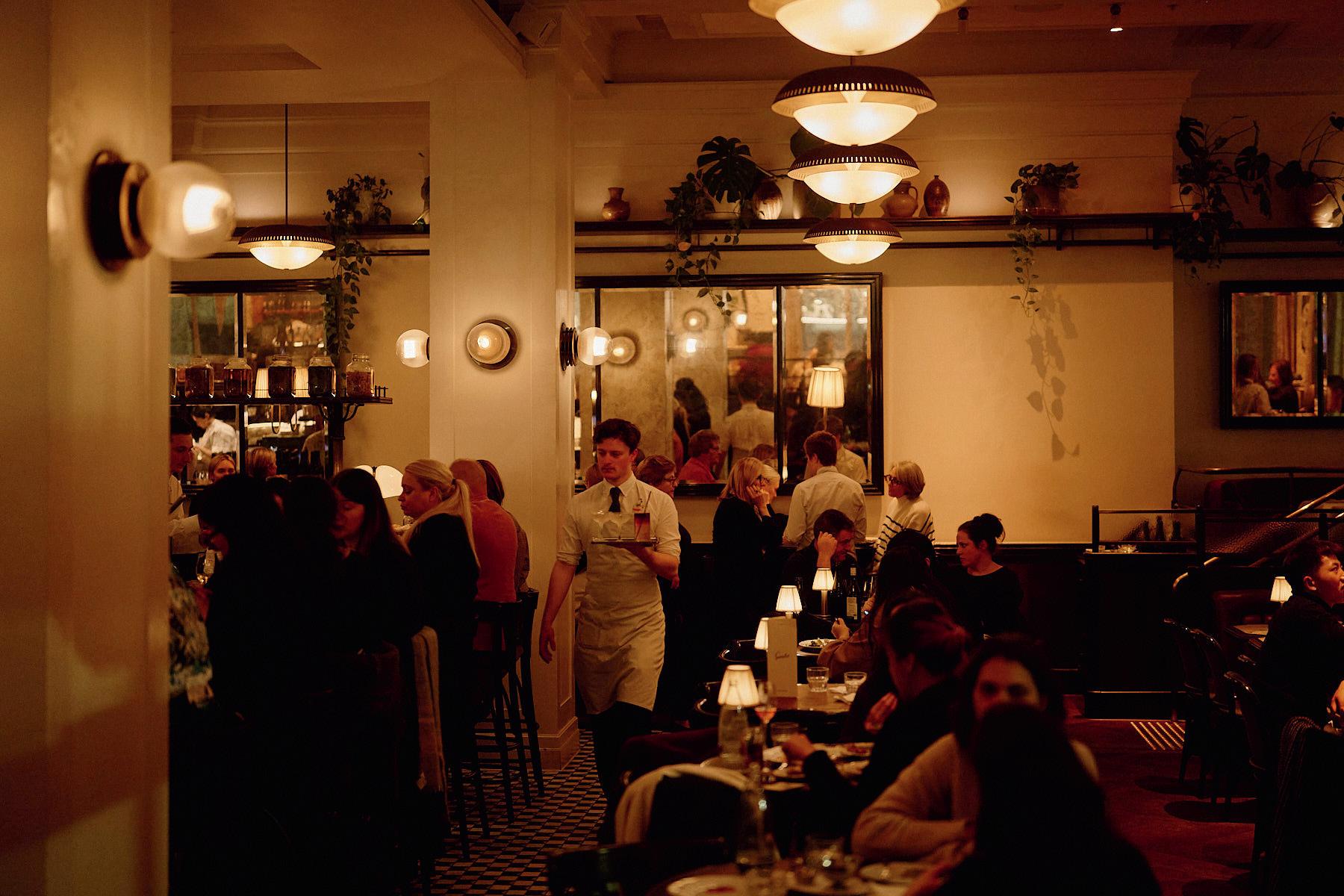
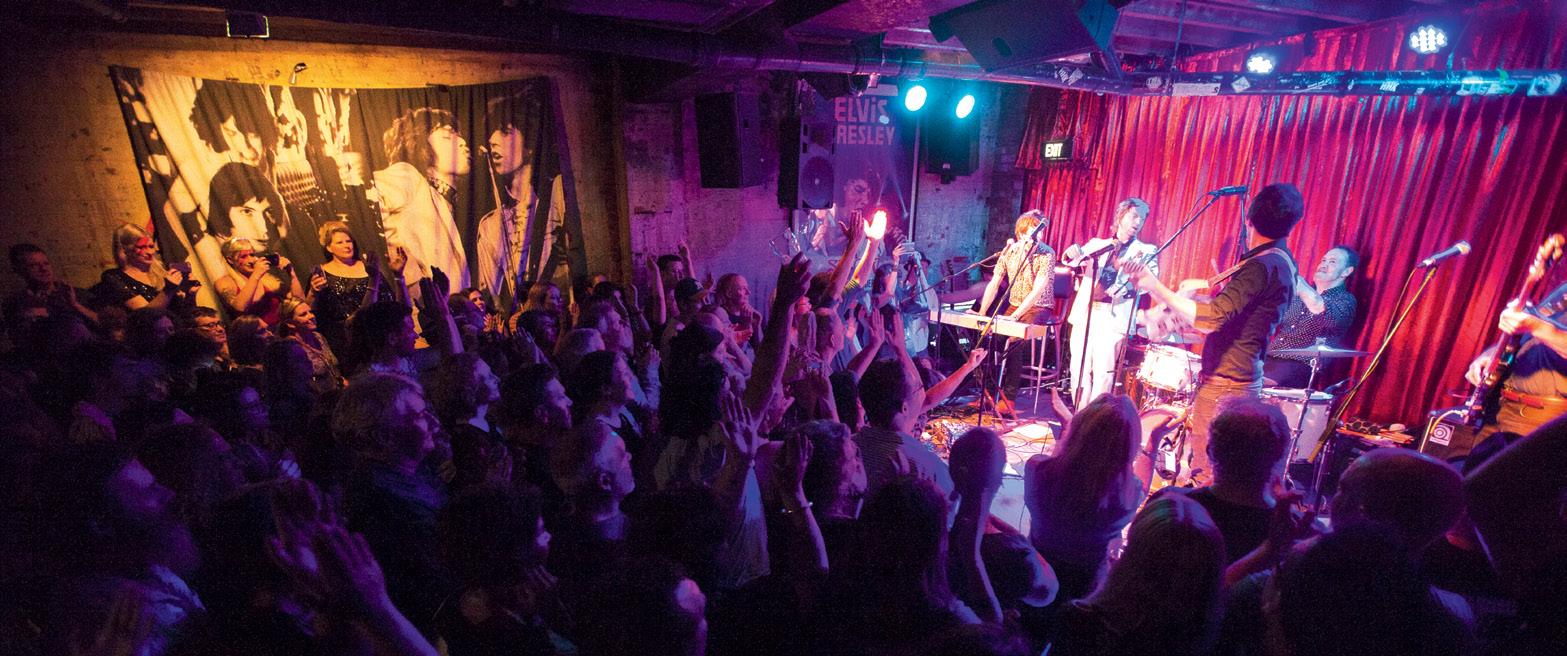
It’s a change of pace, but squeeze yourself out of the Gimlet booth and into the heaving mass of humanity at The Old Bar in Fitzroy. This shambolically charming rock joint has live music seven nights a week in a skinny brick building that looks like it is held together by the old rock posters on the walls. There’s a tiny stage, vintage pinball machines and a toilet covered from head to cistern in band stickers and graffiti. It’s the type of venue that makes names for local bands so they can hit the bigger stages.
Deep End Pizza is the passion project of chef Paul Kasten and celebrates regional pizza styles from around the US. Pop in for Pequod’s Chicago Deep Dish by the slice, the traditional pizza pie with more cheese than an ’80s sitcom.
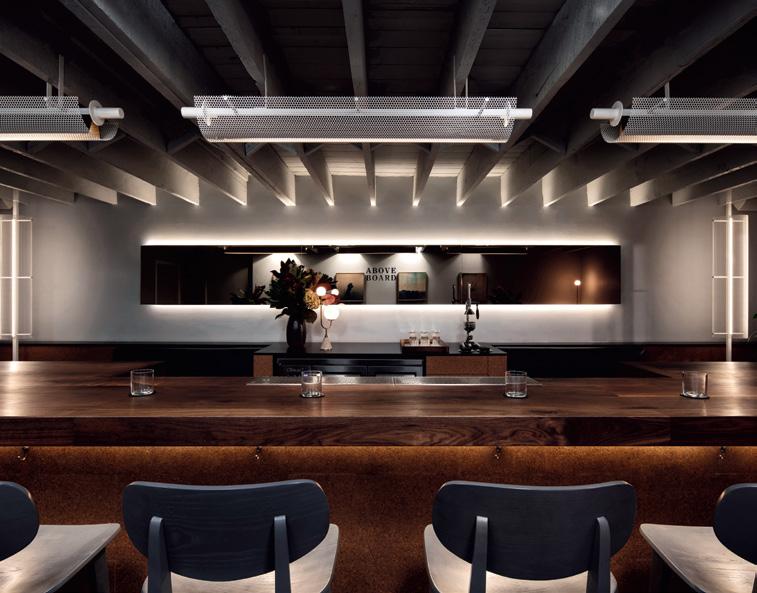
Calm things back down again at Above Board, Hayden Lambert’s almost austere cocktail bar that keeps all its bottles tucked away in drawers. This lack of distraction allows you to fully appreciate the skill on display as Hayden serves up a shaken concoction with a side of bartender banter. Seating just 12 this bar offers a memorable drink in a town that is not short on competition. Try the H.S.L Special, amaro Montenegro, Creme de Mure, lime juice and a dash of absinthe.
Back in the city, drop into Cherry Bar, where you can get one for the road (or the Highway to Hell). Dark, loud, no-frills and no-dills it’s a Melbourne institution and completes a night where you have been wined, dined, rocked and rolled, and explored the full breadth of the city.
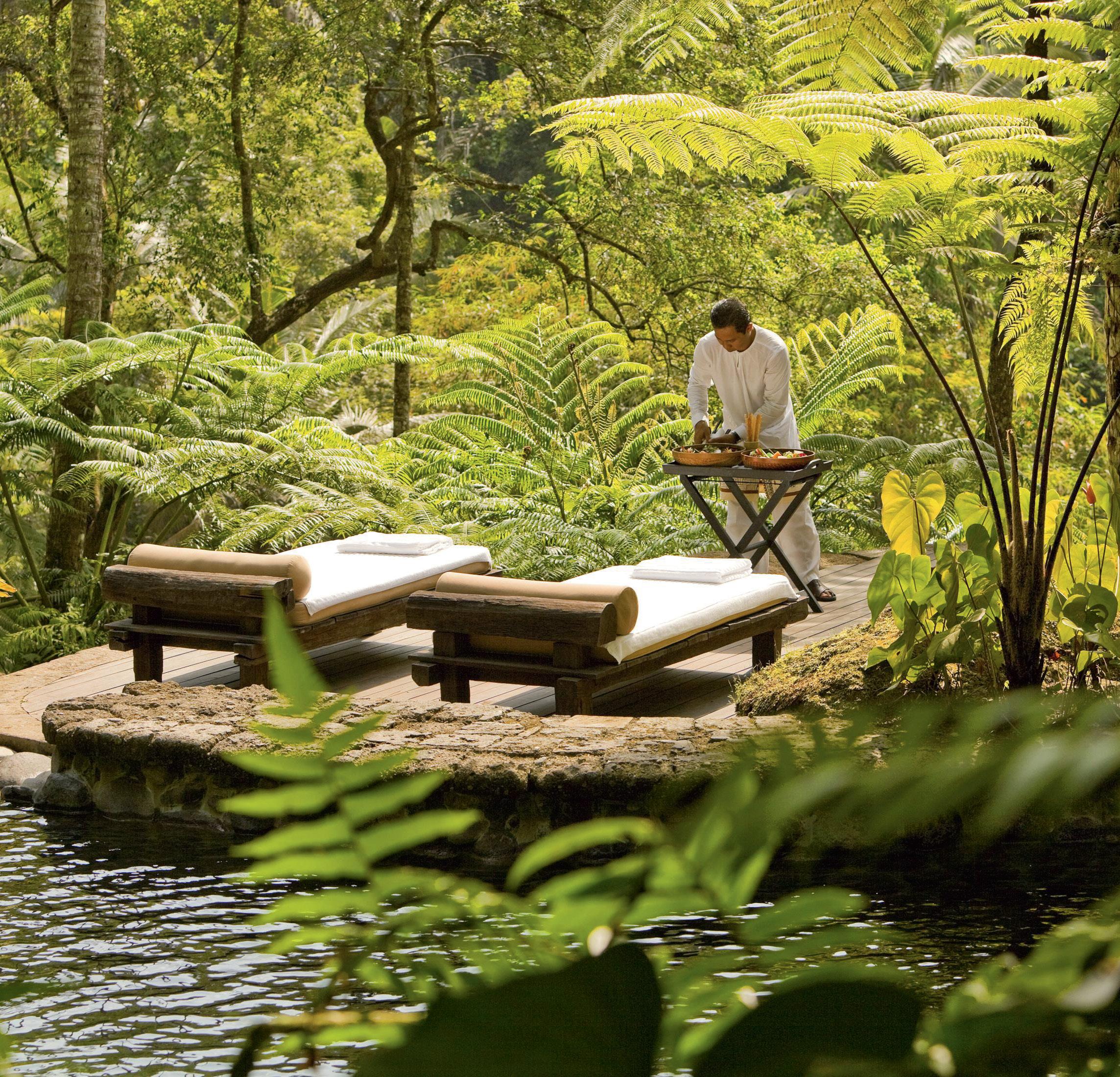

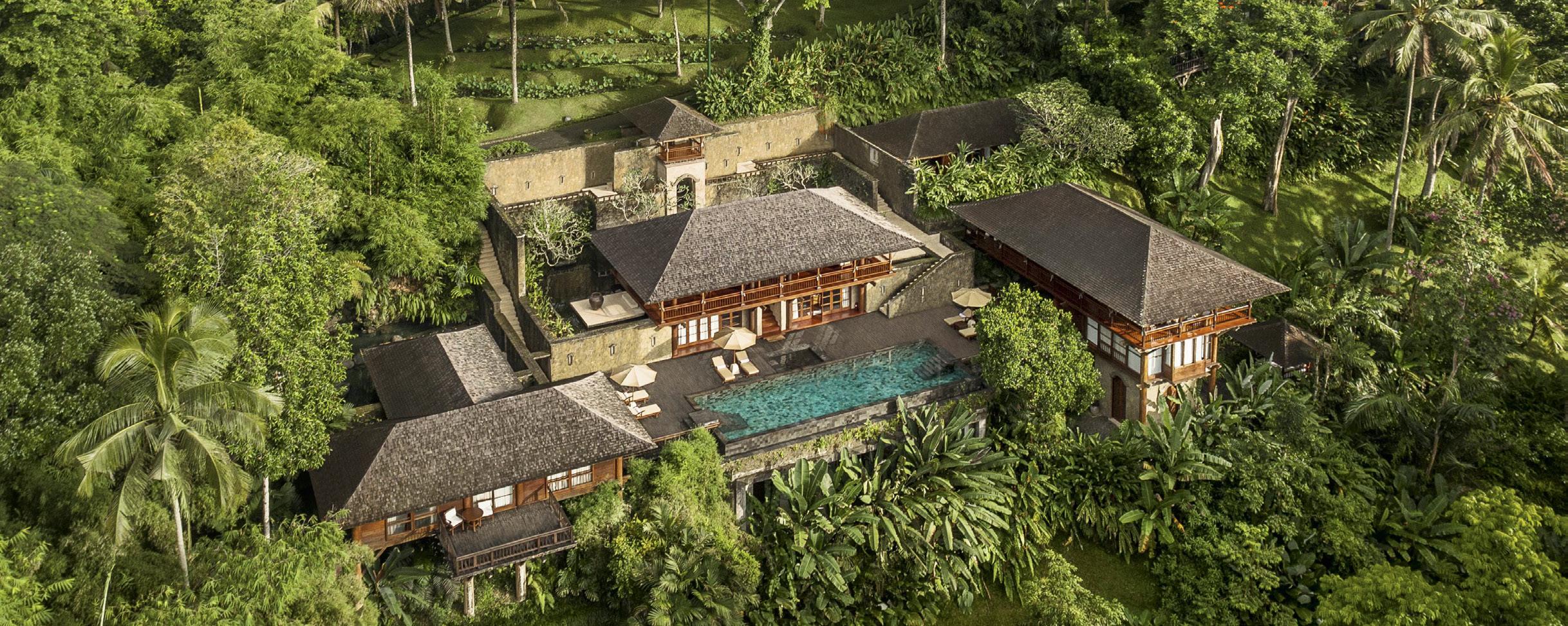
Cocooned in the lush jungle forest of Ubud, the COMO Shambhala (which means “peace”) is the agship wellness o ering for the COMO brand. Rebecca Ellwood takes a break from the everyday, hoping to return feeling renewed and refreshed.
Like everyone from time to time, life has flung me a few lemons of late but a stay at COMO Shambhala in the jungles of Ubud offers a chance to turn my “stressed” into zest. Meaning “peace” in Sanskrit, COMO Shambhala is one of the world’s most respected and awarded wellness resorts, that has, if the rumours are true, hosted the likes of the Obamas, Julia Roberts, and Daniel Craig when he was in training for Bond (the brand will neither confirm nor deny, yet I can’t help but wonder if he preferred his juice blends shaken, not stirred).
A world away from Bali’s roaring mopeds and bustling streets, this is a pocket of emerald-green serenity; a yawning chasm of leafy canopies, swaying fronds and lilypad-dotted pools, at the bottom of which trickles the Ayung River and a sacred spring. Peace prevails, bar a loud chittering from the jungle surrounds. The reverberations come from cicadas; an insect that emerges from its exoskeleton, or shell, progressively until it’s strong enough to take flight. What would become the soundtrack of our stay was also a symbol of the Shambhala journey.
Shambhala is the flagship of 18 COMO hotels globally, whose brand
of quiet luxury appeals to those who enjoy the finer things in life with none of the ostentation. Wellness has always been a core element of the COMO offering, with Shambhala the satellite that determines the global program, continually honed by Head of Wellness, Lisa Manser.
But whilst a founding pillar, it’s by no means compulsory: here, it’s very much optional to pick up the fitness and spa offerings.
“There are some guests we don’t even see when they’re here,” says Eugene Feklistov, Cluster Director of Sales and Marketing for COMO’s Bali and Maldives properties. “While others like to be pushed out of their comfort zone and participate in all the activities. Either way, a visit is an investment in yourself.”
It’s easy to see why such guests would be tempted to hide, cocoon-like, in their accommodation among the trees. I stay in an Umabona Residence, all dark wood and intricate carvings, with a princess-like four-poster bed overlooking the jungle. Wellbeing is a clear consideration, from the bedside SleepHub sound wave device developed by Cambridge University, to wholesome minibar fare like homemade flaxseed crackers and juice blends.
Optional wellness activities from the daily schedule include yoga and Pilates, meditation and breathwork. In-house are globally trained experts in Chinese medicine and ayurveda, offering compassionate guidance for how to fit the principles into your personal lifestyle.
Everything on the field-to-table menu is nutritionally balanced, from traditional Indonesian dishes to raw salad bowls, fresh fish and even wholesome desserts, like a flourless chocolate coconut cake that tastes too naughty to be good.
After therapeutic hydrotherapy, as I lay beneath the intricate canopy of an ancient tree that has likely been on this earth longer than I have, I reflect on the hectic nature of modern life and how transformative it must be to return here even just once a year. Wellness aficionado or not, this, for me, is the beauty of the experience: it’s an invite to hit pause and escape the noise of day-today reality.
Or perhaps it’s the undeniable spirituality of the place that has me so pensive. Right at the foot of the ravine is a 10th century temple site with an ancient spring, whose holy waters are used for Balinese purification ceremonies – not only for visiting guests here,
but by locals in search of healing and hope.
After exploring the nine-hectare estate, relaxation is in order. COMO founder Christina Ong (an incredibly busy businesswoman) was so particular in her quest for the perfect massage that she enlisted the help of a team of specialists, from ayurvedic practitioners to aromatherapists, to design the brand’s signature Shambhala treatment more than 20 years ago.
The time investment clearly paid off, of all the massages I’ve indulged in at luxury hotels around the world, I would proclaim this as the ultimate. It’s a spot-on alternating tempo of long, sweeping strokes down the length of the body and fingertip pressure, all using COMO’s own oil blends. Add in carefully considered elements like a hot towel compress to the neck post-treatment and I’m resigned that no massage elsewhere will ever compare.
The therapists I speak to have been with the resort for over 20 years, in the knowledge that the offering here is among the best places in the world to practice their craft, with continual innovation and training. They are part of the resort and the resort is part of them. Staff and guests alike are united in their appreciation for this truly special place.
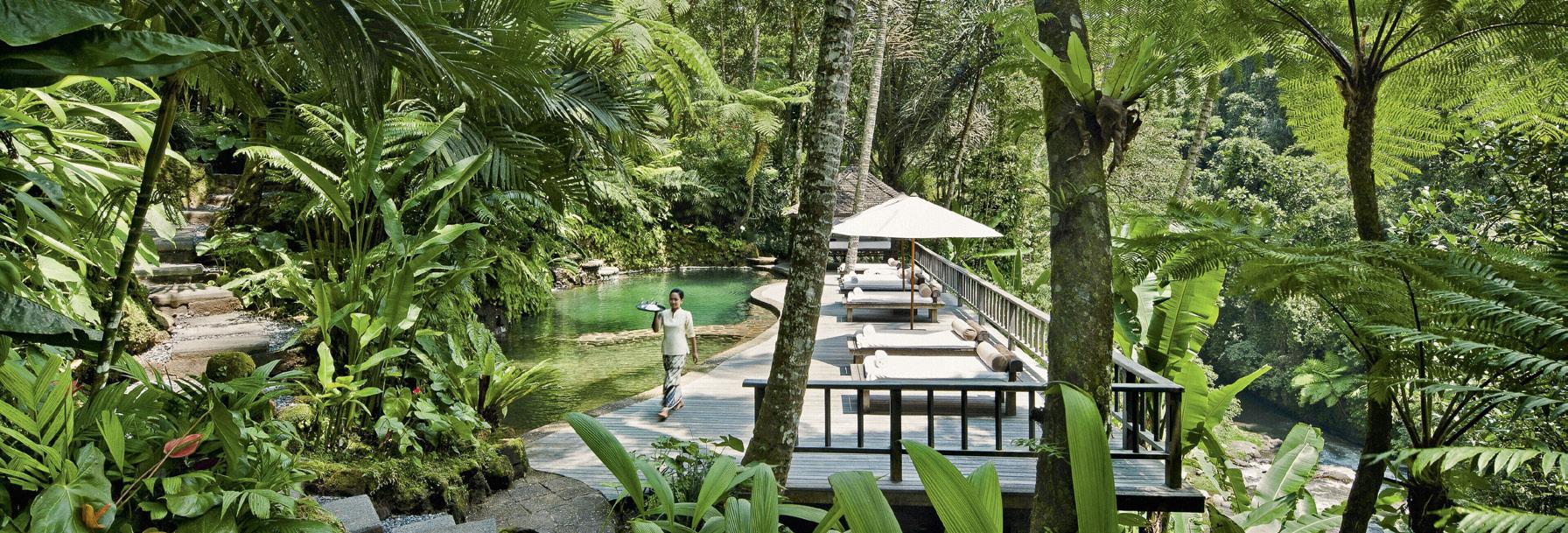
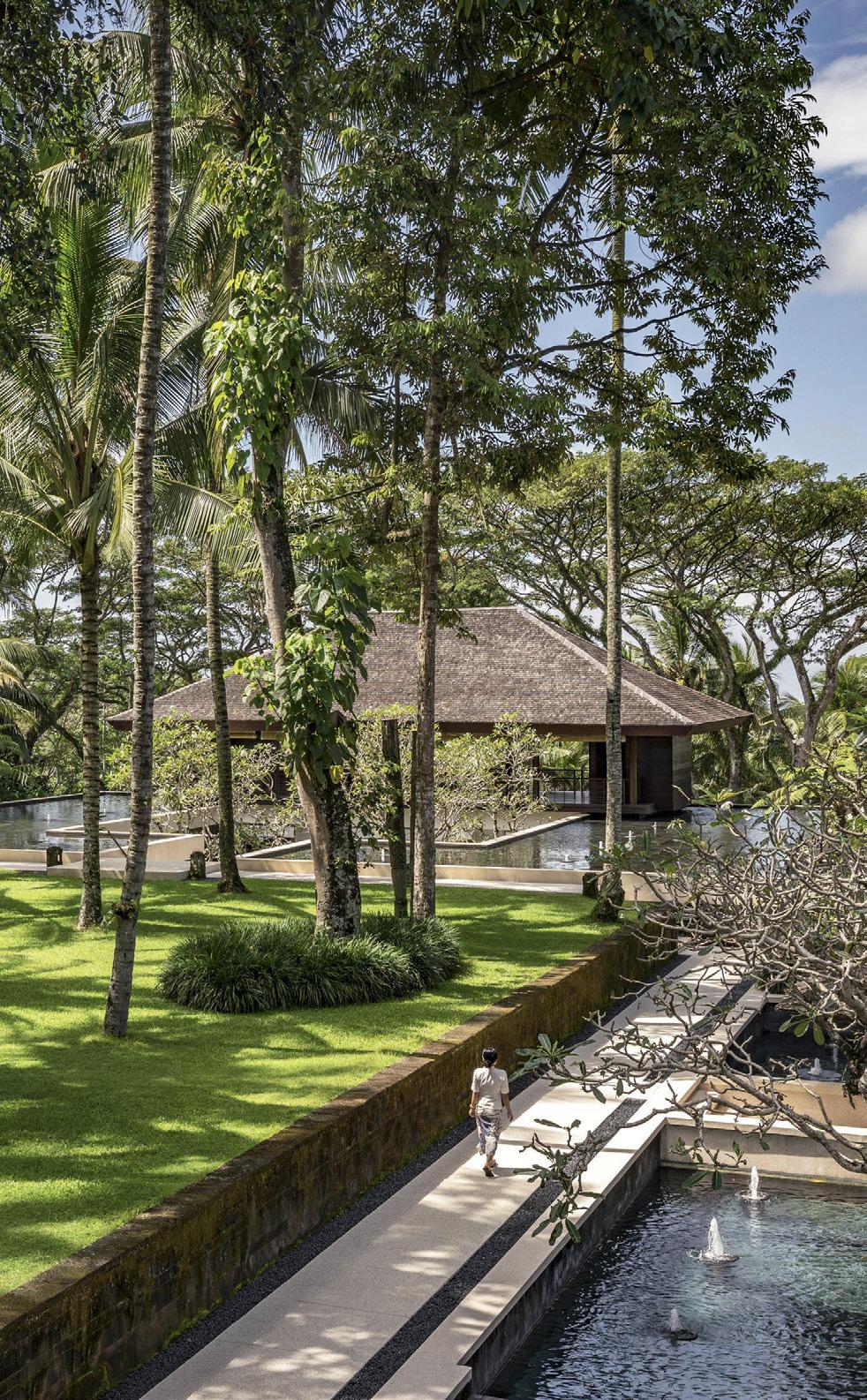
Book a stay at COMO
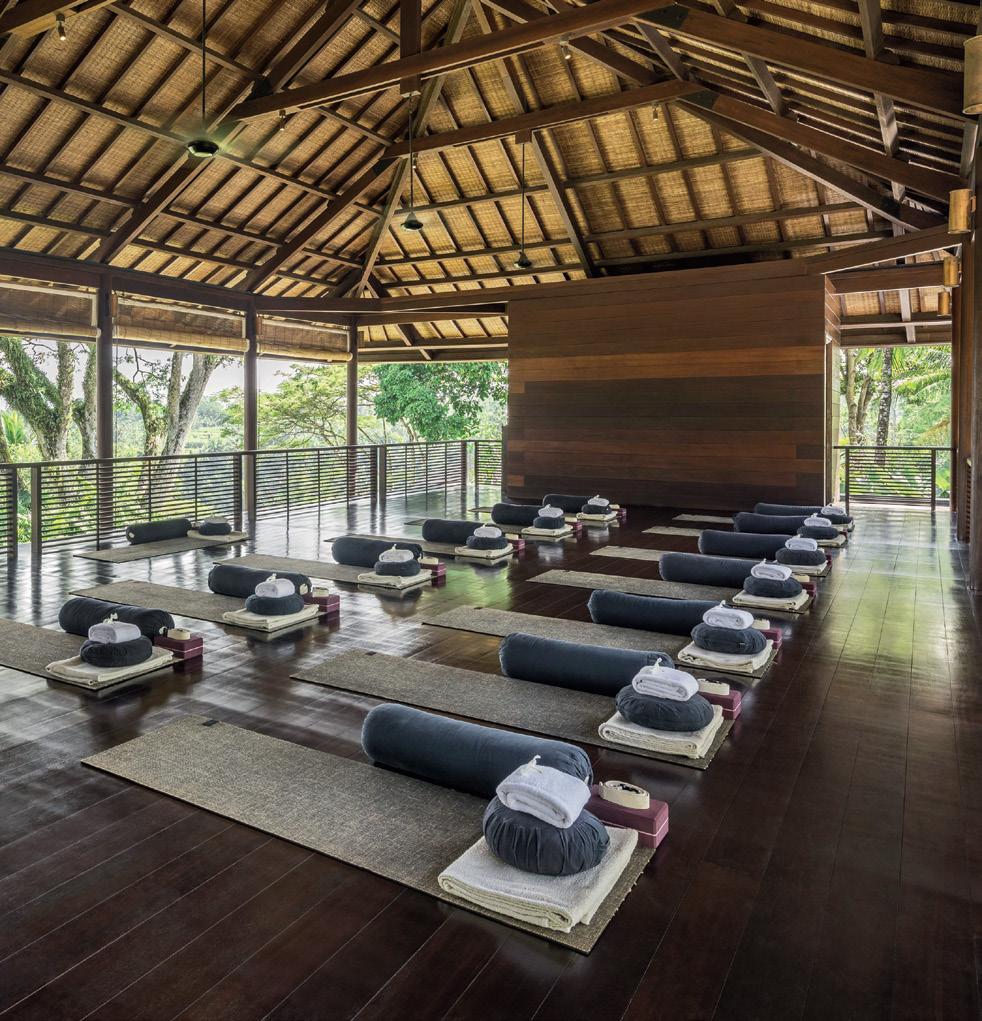
PREVIOUS PAGES:
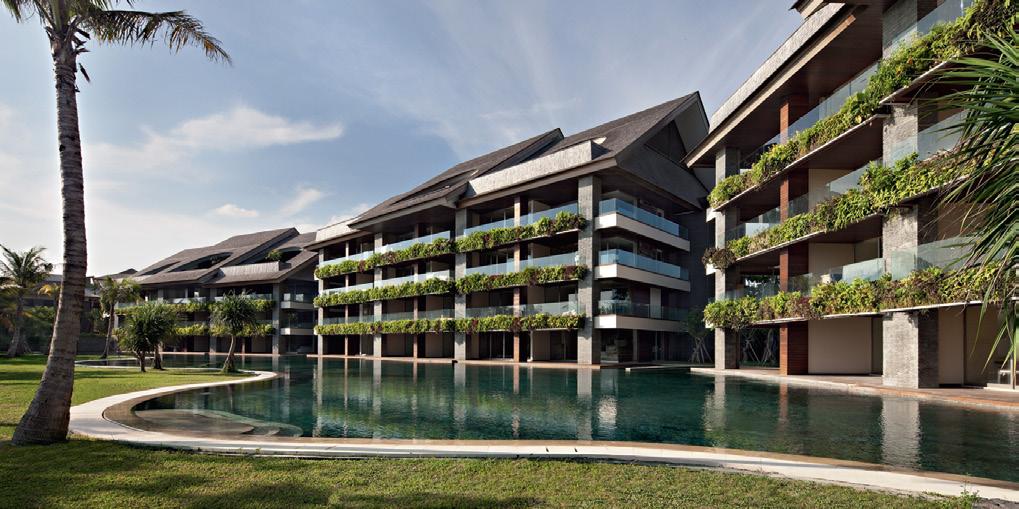
For beach club cool, head south to COMO Uma Canggu in Bali’s surf capital. More contemporary in style, it centres around the buzzing oceanfront COMO Club, with a fitness offering like no other, together with COMO’s signature wellness-led menu and Shambhala spa treatments.
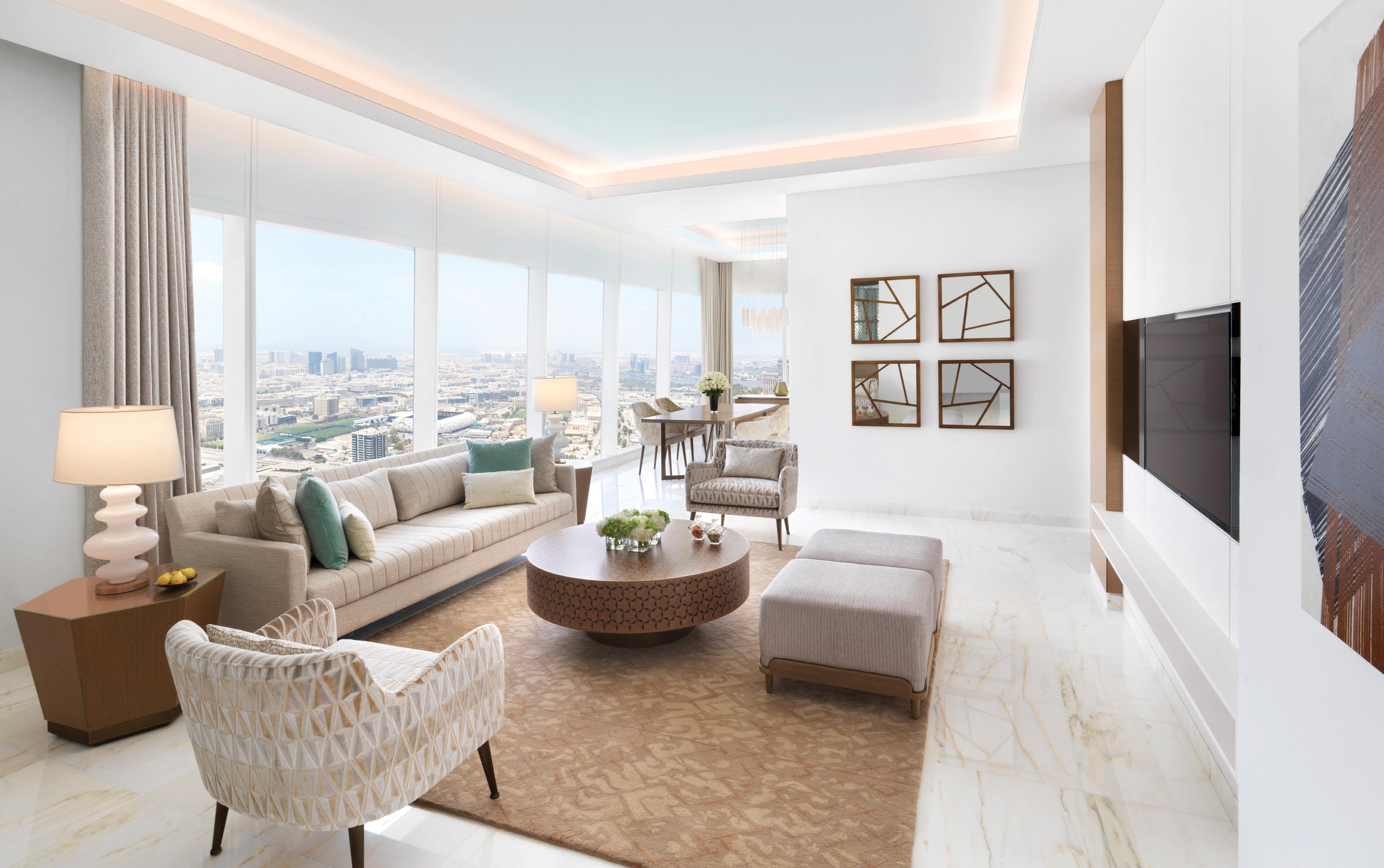
with Ancient Egyptian opulence. Discover the Art Deco elegance of a luxurious stay, enhanced by award-winning dining, spa facilities, and heartfelt hospitality in a landmark destination.
+971 4 324 9999 dubaitheobelisk@sofitel.com sofiteltheobelisk Sheikh Rashid Road - Wafi - Dubai
Just o the coast of Port Lincoln lies South Australia’s rst luxury eco-resort on a private island. Seeking southern seclusion on the renowned Eyre Peninsula, Finn Doyle settles in at Rumi on Louth.
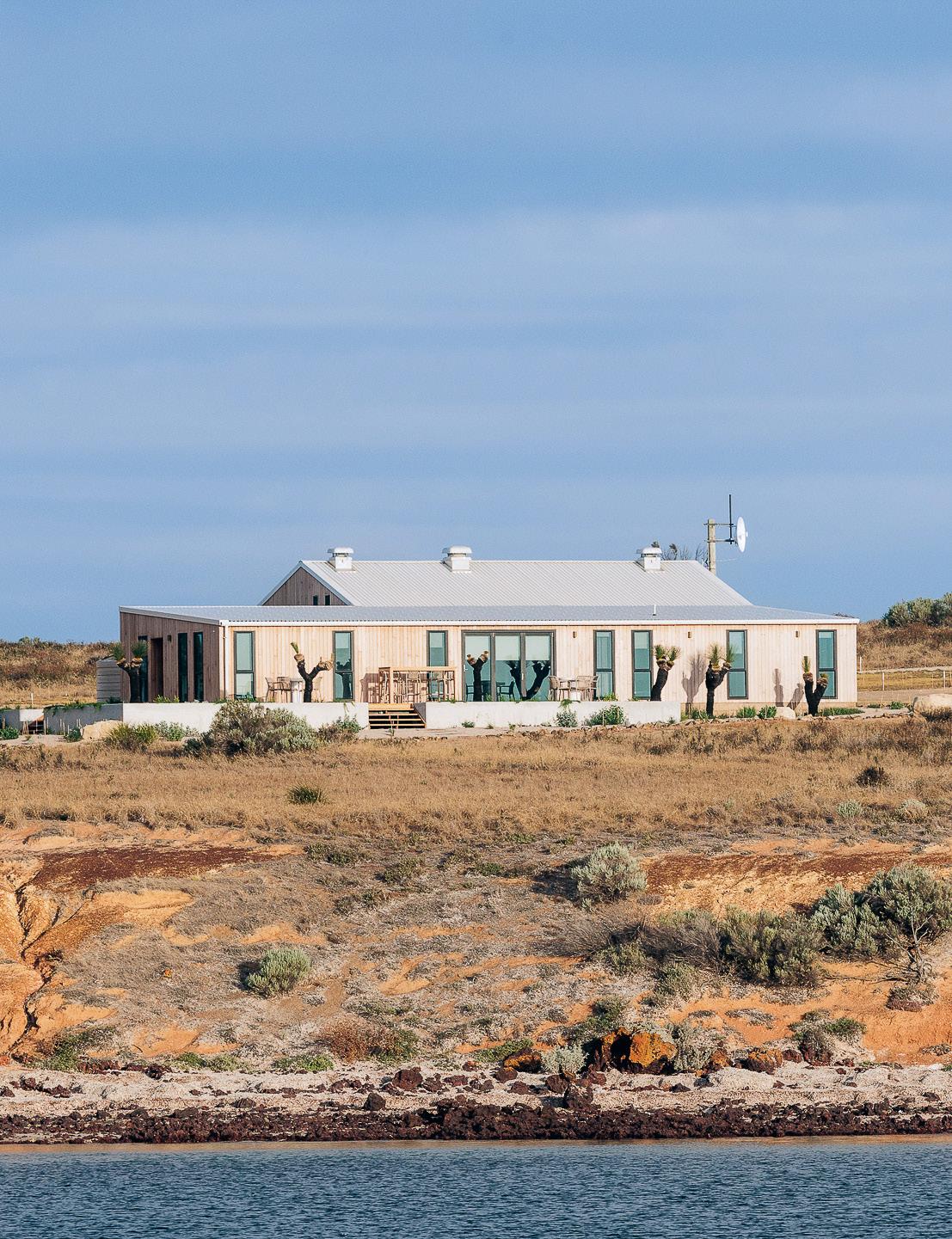
e details


The main building currently hosts four suites and a spacious apartment, featuring a stylish ensuite bathroom with luxurious botanical bath products. The boutique lodgings marry calming earth tones with light, bright spaces and – speaking of marriage – a 10-person private retreat sits just next to the island’s wedding ceremony venue, boasting a painterly backdrop of Louth Bay. But that’s just the beginning – plans for some 27 “hobbit-style” villas are underway, making use of the island’s gentle topography and uninterrupted ocean views.
Under the guidance of award-winning Executive Chef Jono Sweet – an Eyre local – fine-dining restaurant Samphire highlights the region’s freshest seafood (paired with local Eden and Clare Valley white wines), as well as the island’s own native ingredients like saltbush, wattleseed and beach mustard. Everything is considered, from the balance of textures to the sensational
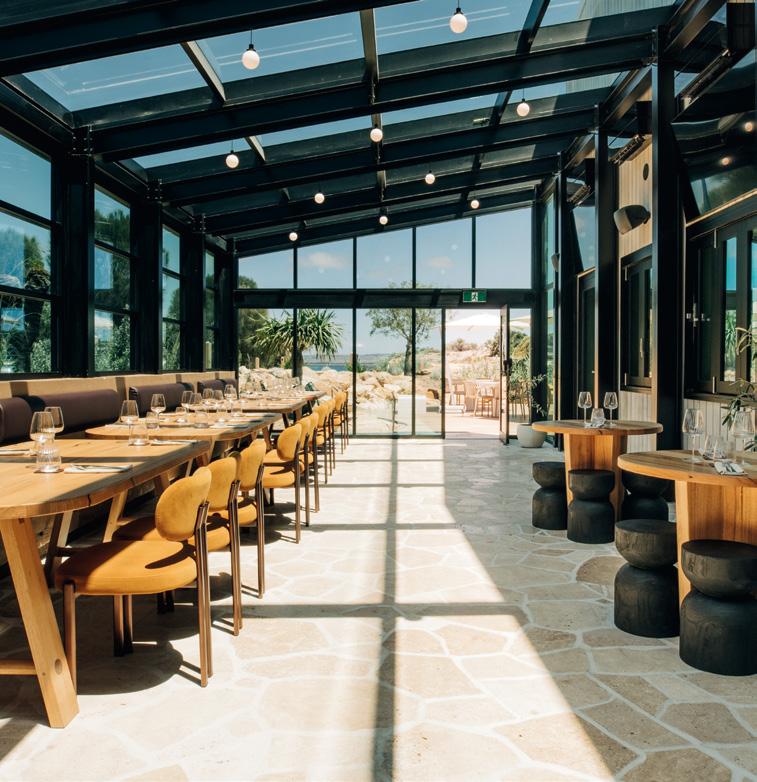
plating, and dietaries are accommodated with creative flare. Try the Peach & Basil Tingle for a refreshing dash of citrus, herbal and sweet peach puree, with tajin for a touch of heat. And while seafood may be the star, the produce is just as spectacular. Tender roasted cauliflower steak is a real showstopper, served on creamy caramelised shallot puree and dusted with bright beetroot.
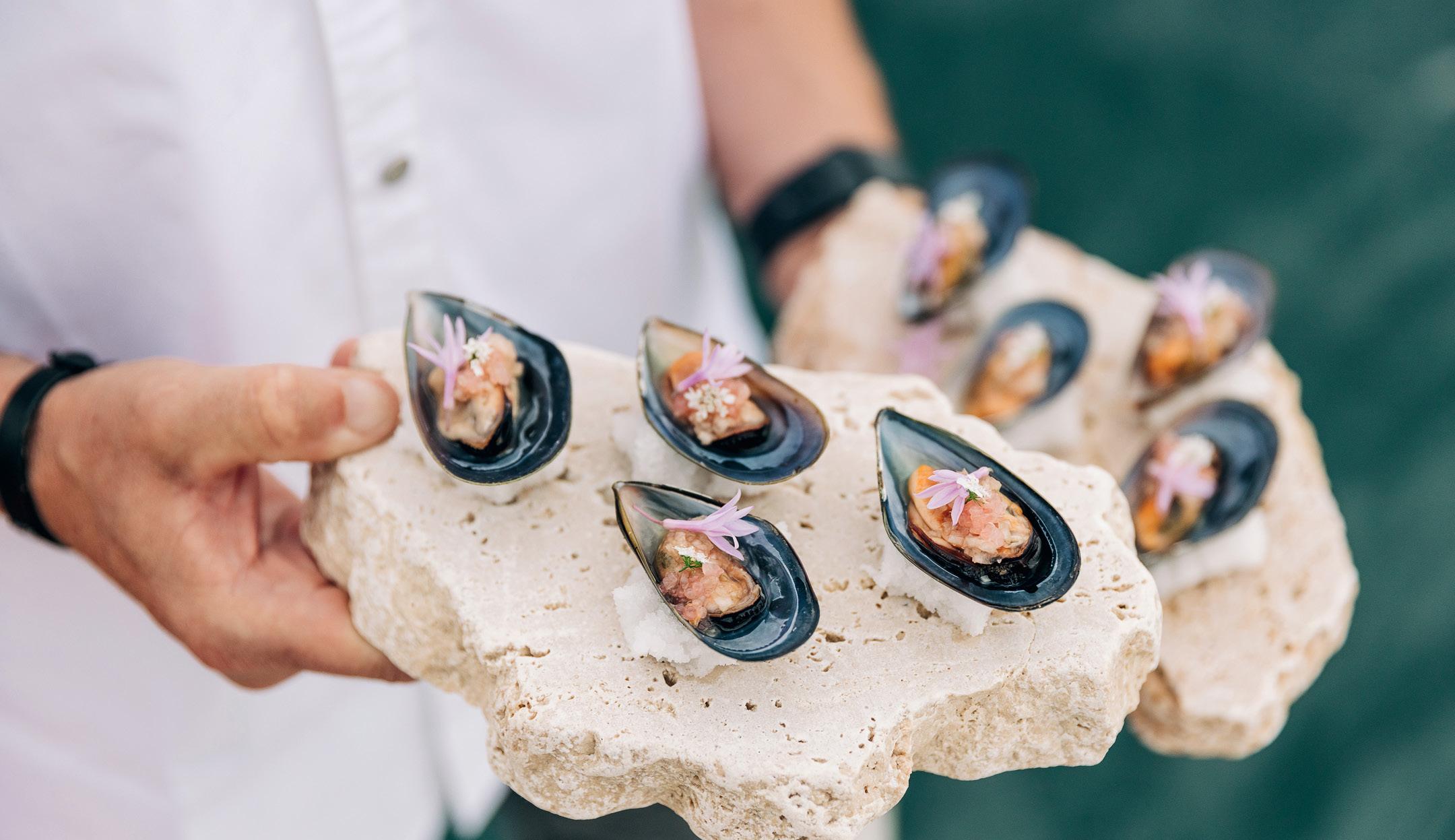
An exclusive island retreat, Rumi on Louth offers luxurious eco-friendly suites designed in harmony with the rugged landscape of Louth Island. Driven by a passion for preservation, this private resort is fully off-grid, with an impressive private solar grid, desalination system and locally grown ingredients.
A breezy 10-minute boat trip to the mainland puts you in the charming city of Port Lincoln, and a scenic drive will have you in the heart of beautiful Coffin Bay or among Lincoln National Park’s limestone cliffs, vast dunes and abundant wildlife within the hour. Louth Island’s wild coastal landscape has gone from 19th-century sheep farm to wildlife wonderland in just a few short years. Here, you’ll find abundant native fauna, from curious goannas to hooded plovers and the island’s resident wedge-tailed eagle.
Carl Cove, locally referred to as “East Beach”, is one of the peninsula’s most exclusive stretches of sand. Turquoise waters lap gently on the shore, glassy and warm in the shallows. With the island’s limited capacity, you’re almost guaranteed to be alone when walking along the squeaky-soft white sand or lazing in a private cabana for the afternoon. With nowhere else to be, watch playful sandpipers frolic at the water’s edge and hooded plovers hiding in untouched dunes.
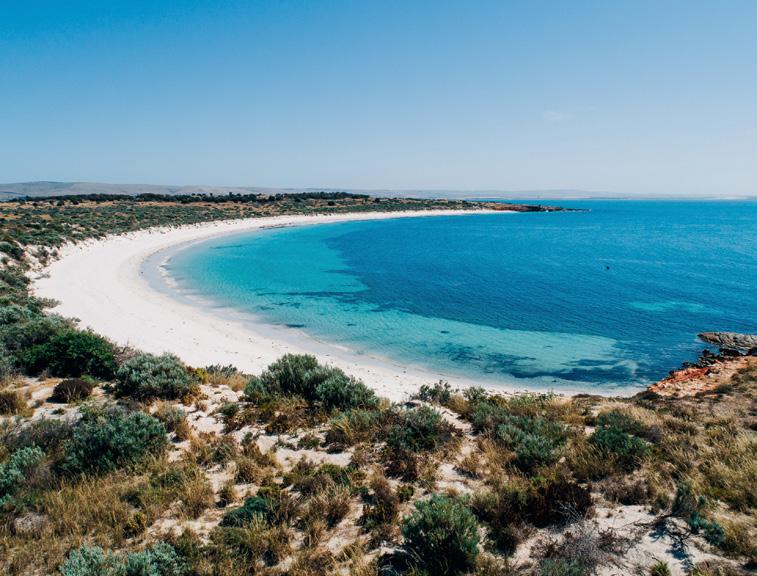
With total seclusion that doesn’t cost the earth, this is your chance to indulge in sustainable fine dining and stylish facilities, hosted by a personable and passionate team. Deliberate in every aspect of its elegant design, Rumi on Louth is a breath of fresh air for the eco-conscious luxury traveller.
With accommodation that is some of the most lavish in all Fiji and a focus on gourmet cuisine, VOMO in the Mamanuca Islands is a postcard brought to life. Luxury Escapes co-founder Adam Schwab discovers Maldivian-style extravagance just four hours from Sydney.
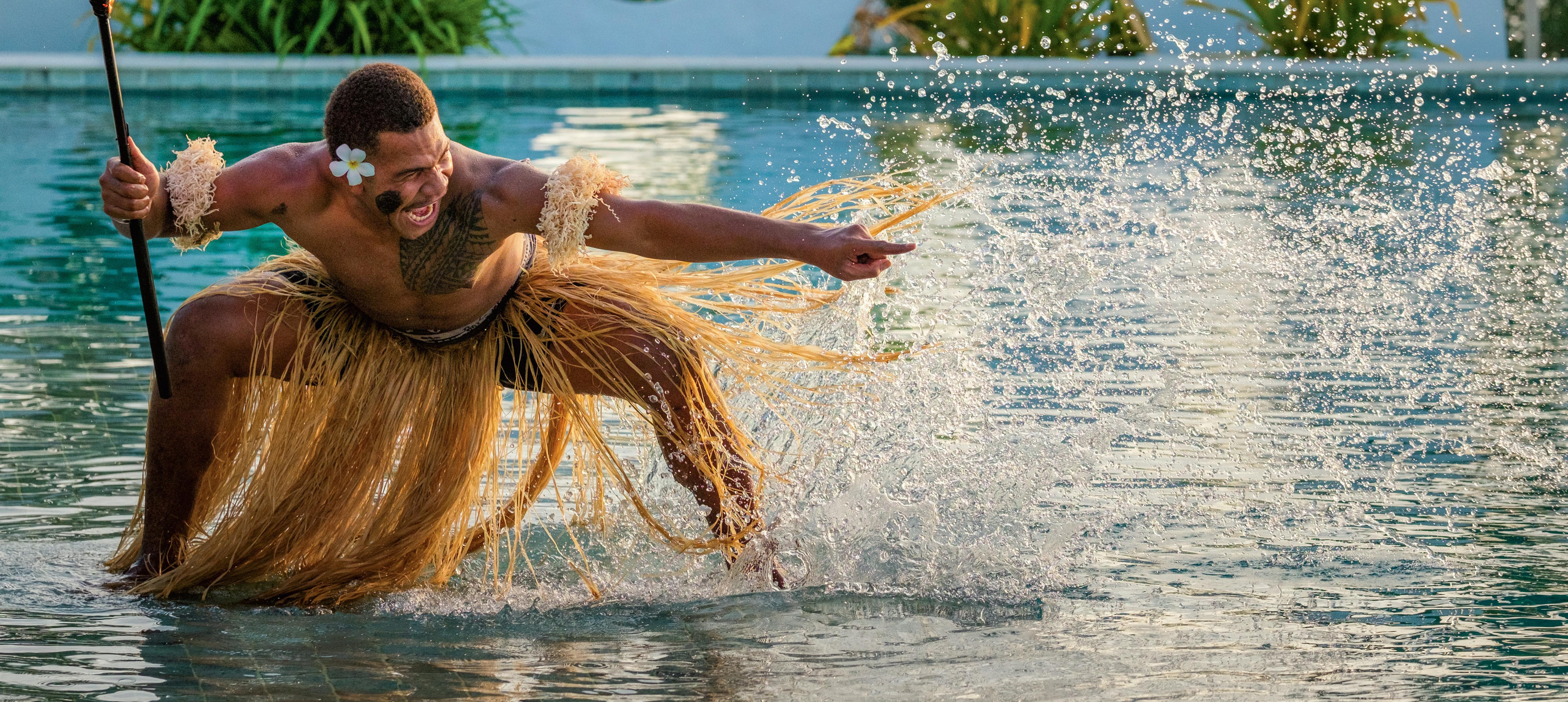
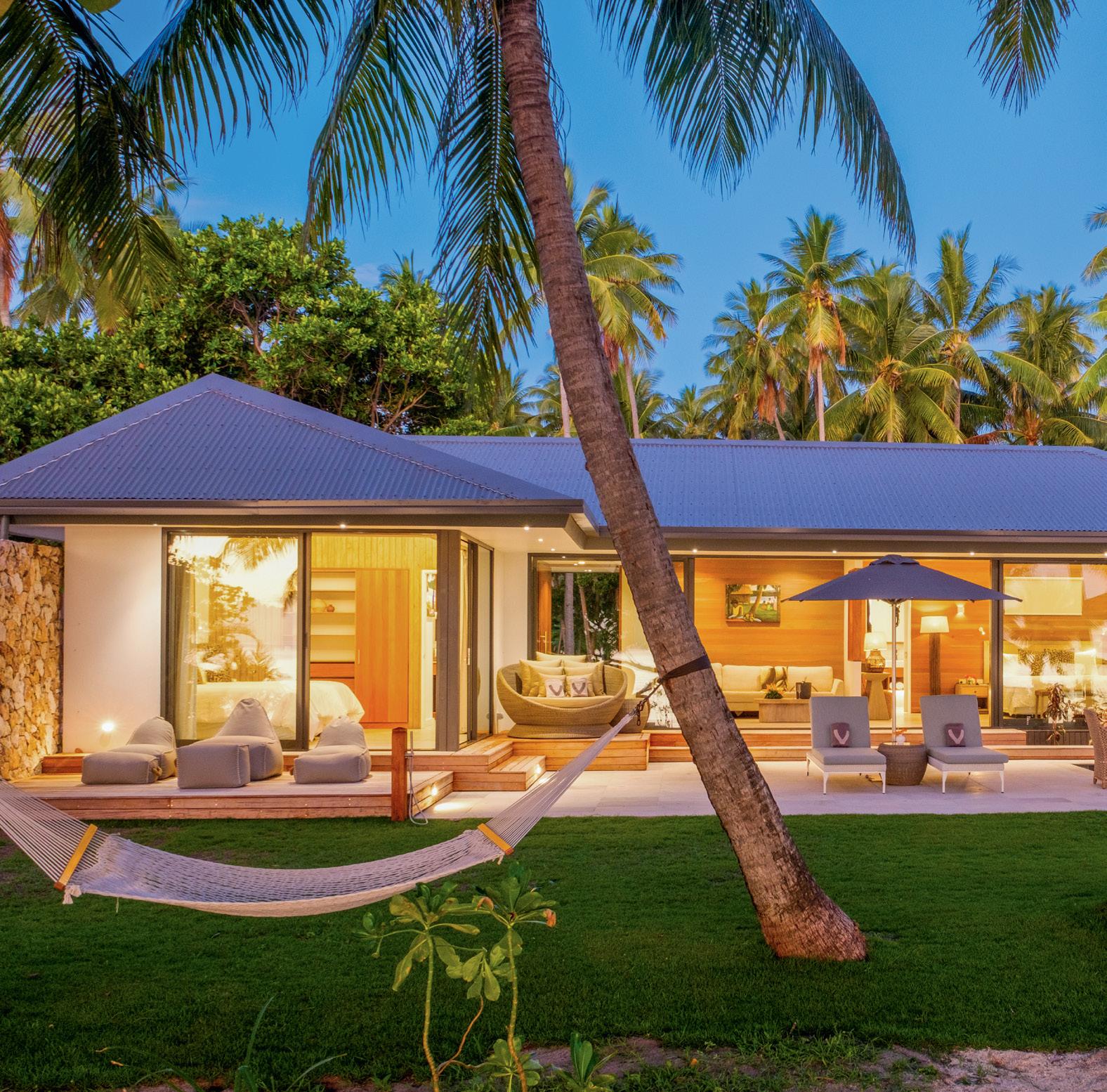

Fiji’s tourism sector, for decades a mainstay of the island nation, has had its biggest three years ever. Easy and fast access to Australia and New Zealand (the island is well serviced by Fijian Airlines, Qantas, Virgin, Air New Zealand and Jetstar) has led to an almighty and mostly unexpected tourist boom, contributing almost half the nation’s GDP. And few have benefitted more than the ultra-luxe five-star haven of VOMO – the resort regularly books out almost a year in advance, with regular guests often booking their next stay before they leave the island.
Located within the Mamanuca Islands near the famous Yasawa Islands, VOMO is a triangular volcanic island home to 28 Hillside and Beachfront villas (plus six brandnew two-bedroom family villas) as well as six incredible residences.
Guests can get to VOMO by a 40-minute boat ride or, for the well-heeled, a 15-minute helicopter transfer from Nadi Airport. We took the latter, sprinted away on a twominute car ride by Island Hoppers to their private terminal adjacent to the airport. Island Hoppers, Fiji’s bespoke helicopter

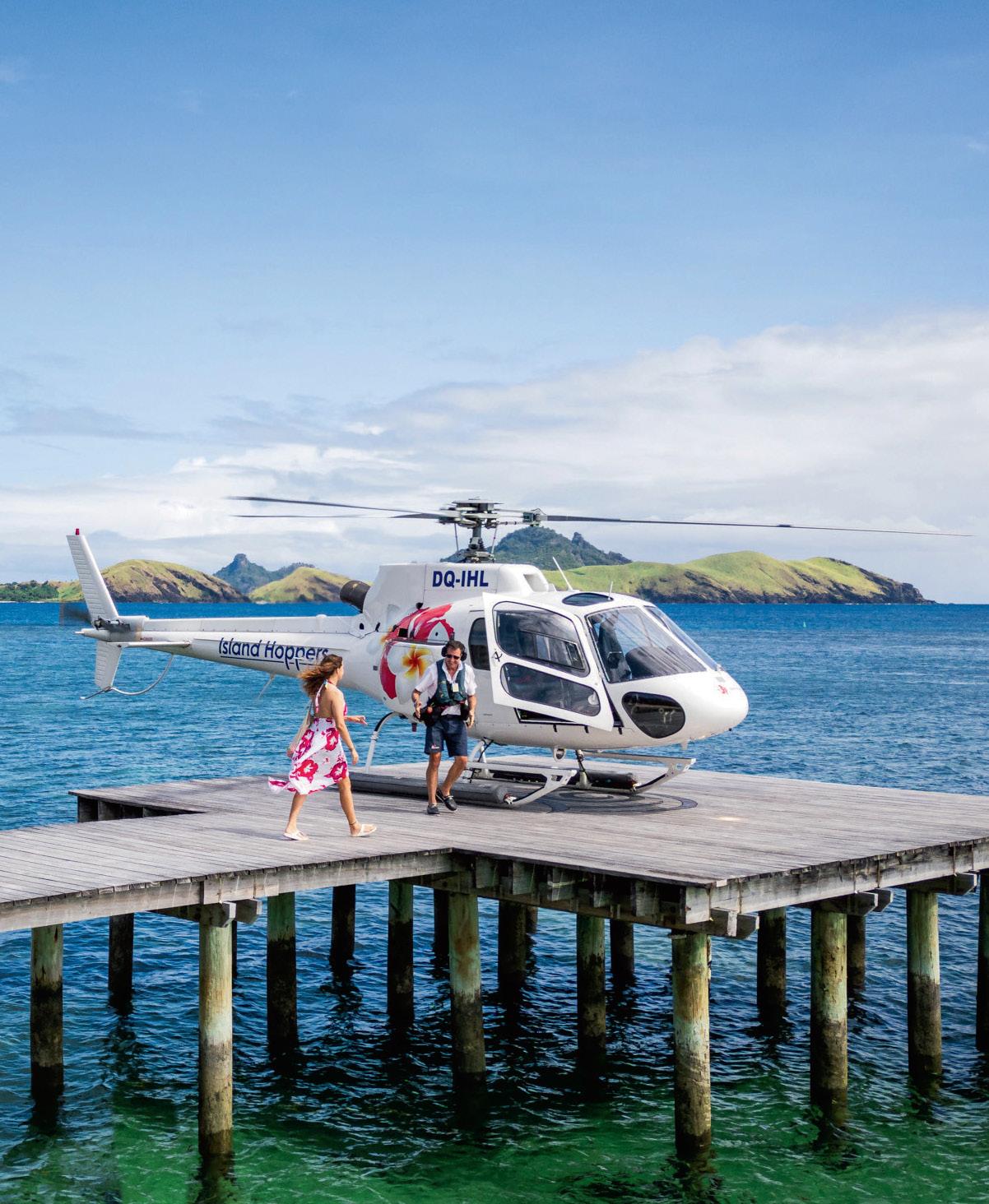
and charter plane provider, is run by New Zealand-born Craig Keighley (who still flies) who runs a fleet of helicopters and private planes (to carry people to further away Fijian islands).
After a briefing (like most high-end charter operators, Island Hoppers prioritise safety), we jumped on the chopper and were walking off the VOMO helipad within 15 minutes (remarkably, we got from plane to resort in under 40 minutes, a huge time saving on the usual three hours). The convenience and beauty of the helicopter ride left me wondering how we will ever travel by boat again, but that’s a concern for another day.
We were driven straight to our Two-bedroom Family Pool Villa, which was huge, similar to what you’d expect from a Maldivian beach villa. Both master and kids’ bedrooms had full views of the lush garden and stunning Fijian waters. It was actually better than a postcard.
Each family villa has its own private pool (well sized, at 18 square metres) along with two bathrooms and a generous living room. The VOMO room product is one of the best in Fiji.
VOMO’s Hillside and Beachfront villas are located just metres from the stunning reef, where guests are likely to encounter the odd turtle or friendly black tip reef shark (the resort also runs a turtle rehabilitation project – while
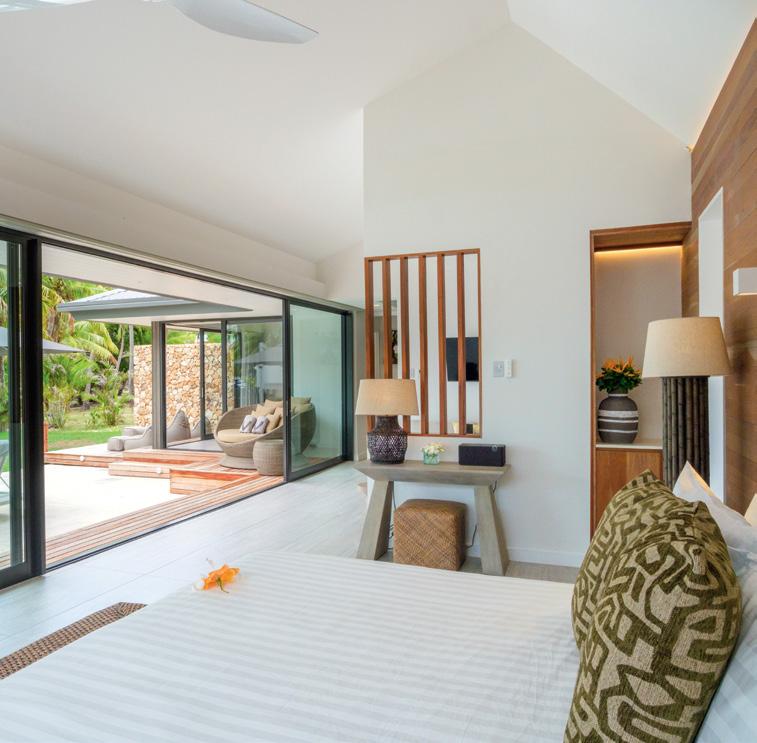
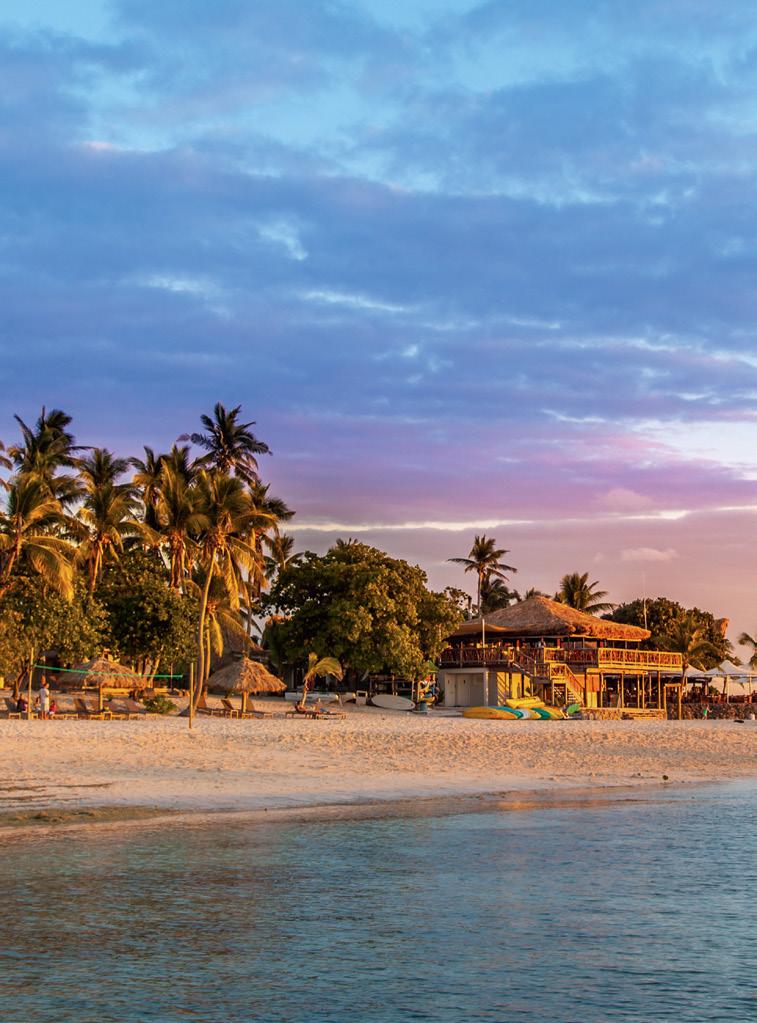
we were staying a turtle was released back into the ocean, with the entire resort and all guests present for the ceremony). The resort has 40 villas in total including residences that are among the most lavish in Fiji (they usually sell out a year in advance and can cost upwards of $8,000 a night inclusive of all meals, so book early).
Four of the new family villas are located on the quiet side of the island (another two are near The Rocks pool). You can swim from the villas to one of the two house reefs on either side of the island. The resort also runs daily snorkel trips for guests every morning. This is the closest I’ve had to a Maldivian reef experience but is four hours from Sydney.
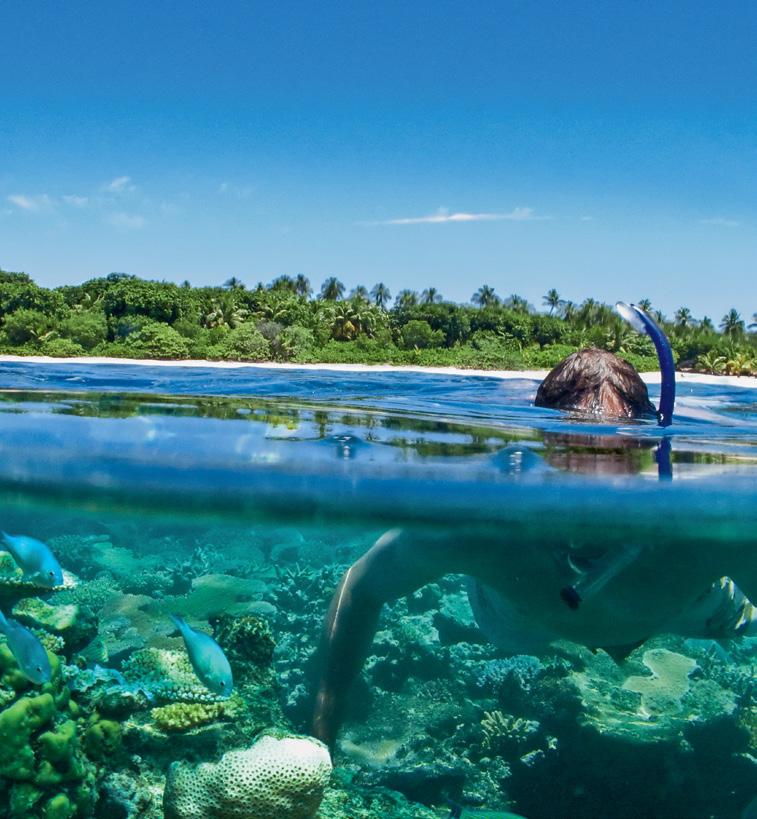


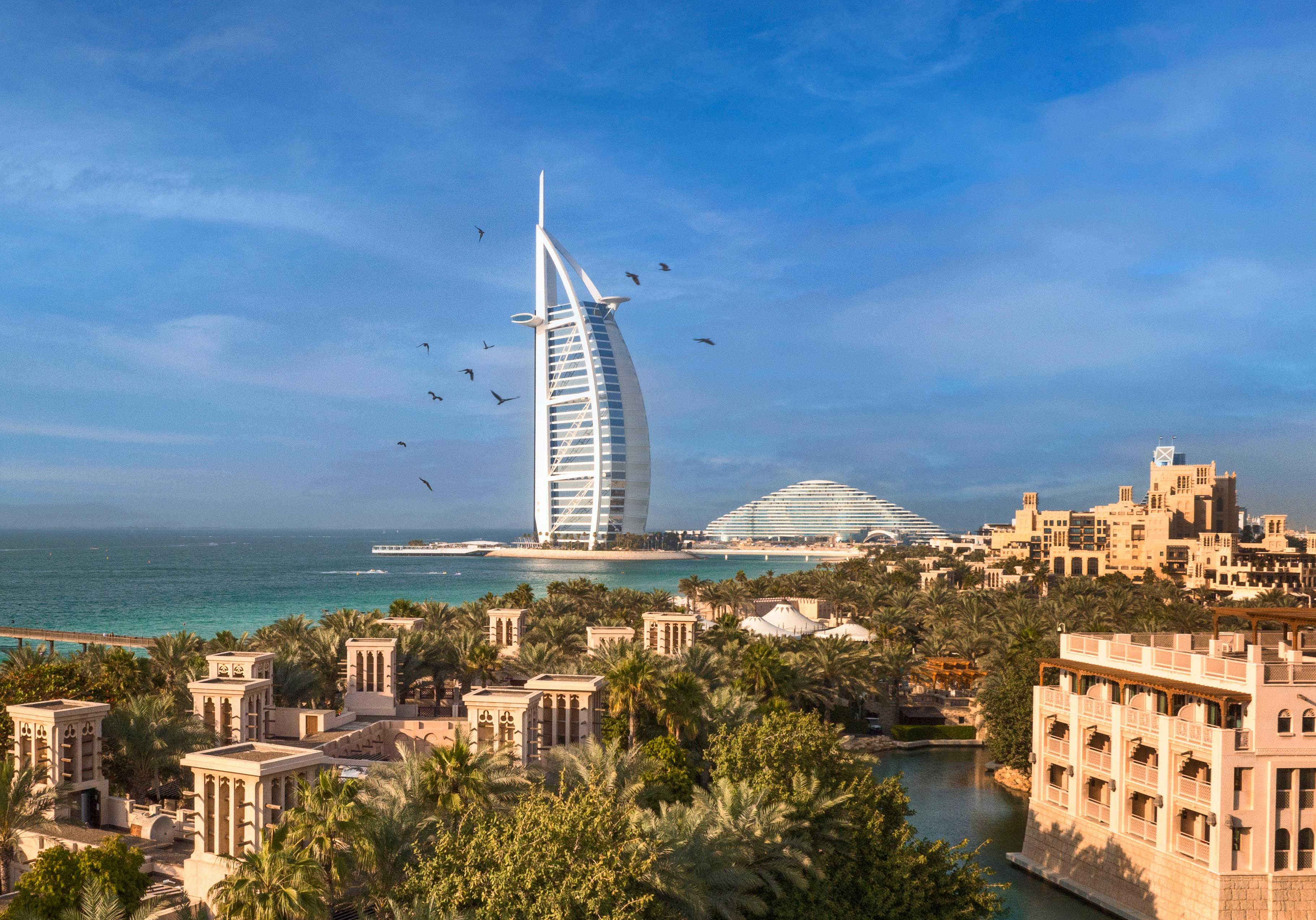

Guests are welcomed to the resort in traditional Fijian style by staff with magnificent Fijian song, and you immediately feel part of the VOMO family. When Covid travel restrictions were first announced, VOMO had $2,500 worth of French brie and marble cheese in its cool room. Staff who remained on the tiny island to ensure it was in pristine condition when borders finally opened relied on weekly barges to deliver food. The deliveries were soon augmented by fresh fish while the island’s personal trainer planted a huge vegetable and herb garden (the garden now supplies more than half of the island’s food). When Fiji’s borders were finally opened, VOMO’s first guest was actress Rebel Wilson.
VOMO is among the luxury resorts leading Fiji’s pitch as a gourmet destination. Guests dine on an a la carte breakfast (augmented by a refrigerated pastry and cheese room). Lunch and dinner are a choice of the resort’s two restaurants (the Rocks Restaurant is an “adults only” affair, but rest assured, kids can dine in the kids’ club while adults kick back and enjoy
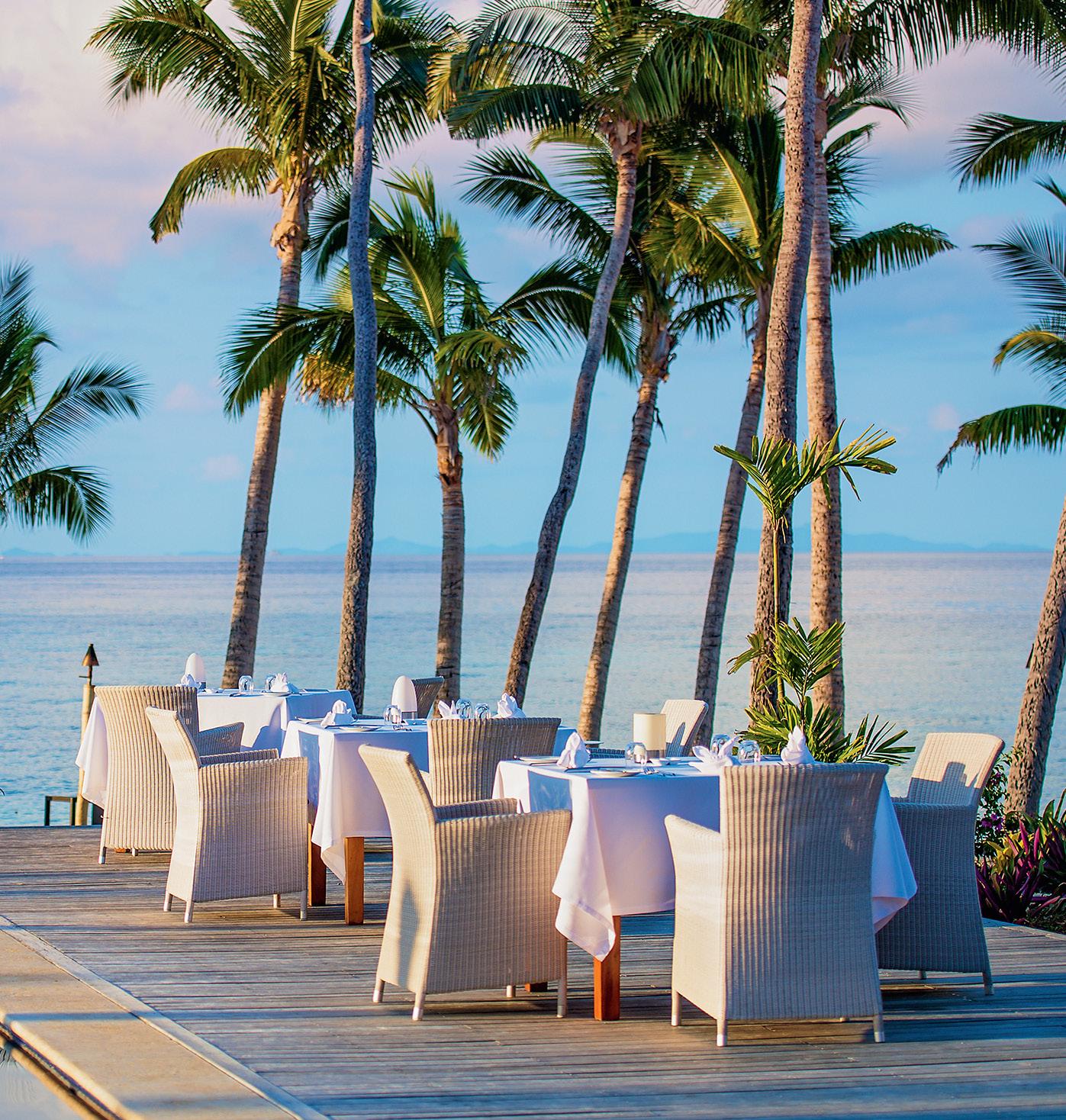
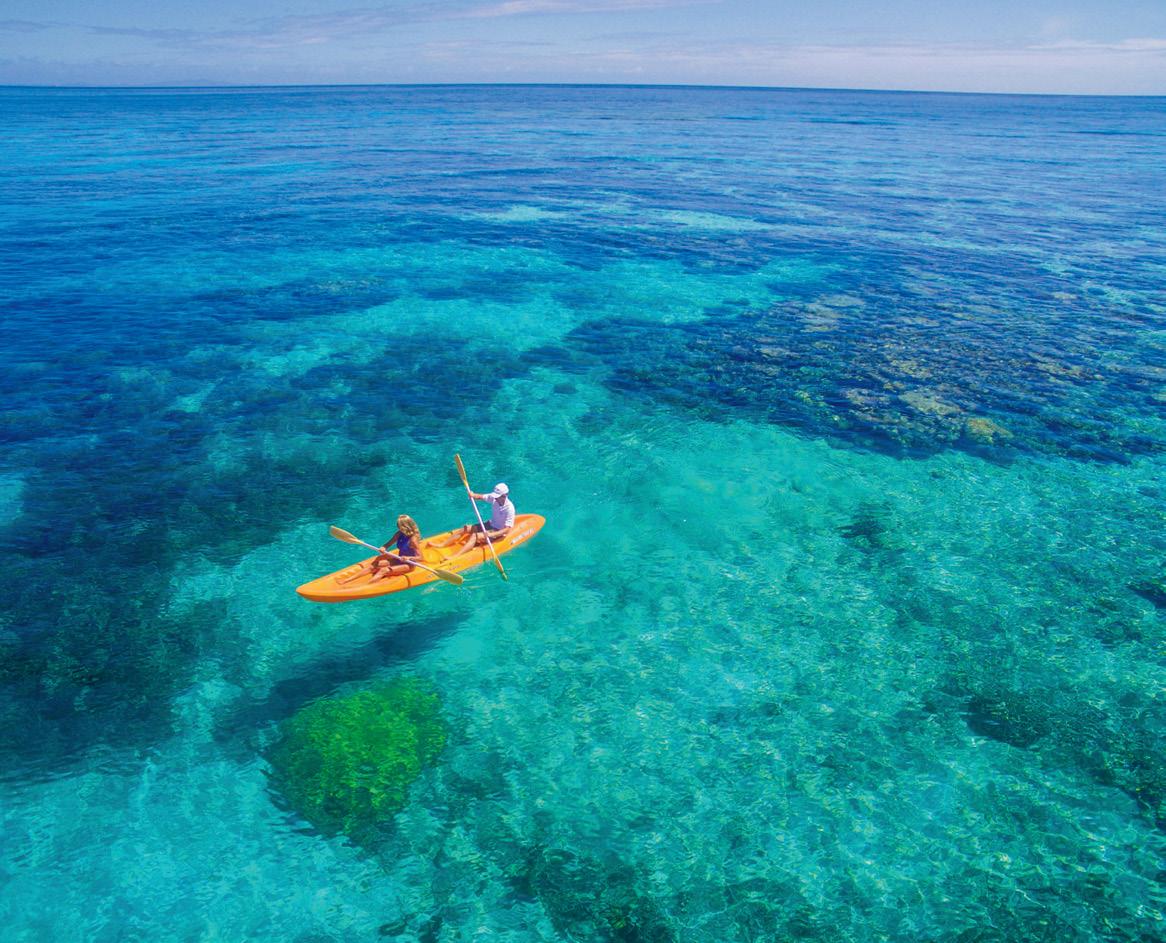
the sunset). Meals are three courses with a choice of four options for each course (dietary requirements are well catered for). Seafood is a highlight, with VOMO serving fresh, locally sourced prawns, lobster, oyster and of course the Fijian kokoda, the nation’s signature dish of marinated fish in coconut cream. While many luxury resorts charge eyewatering amounts for laundry, VOMO offers a free laundry service for all guests –
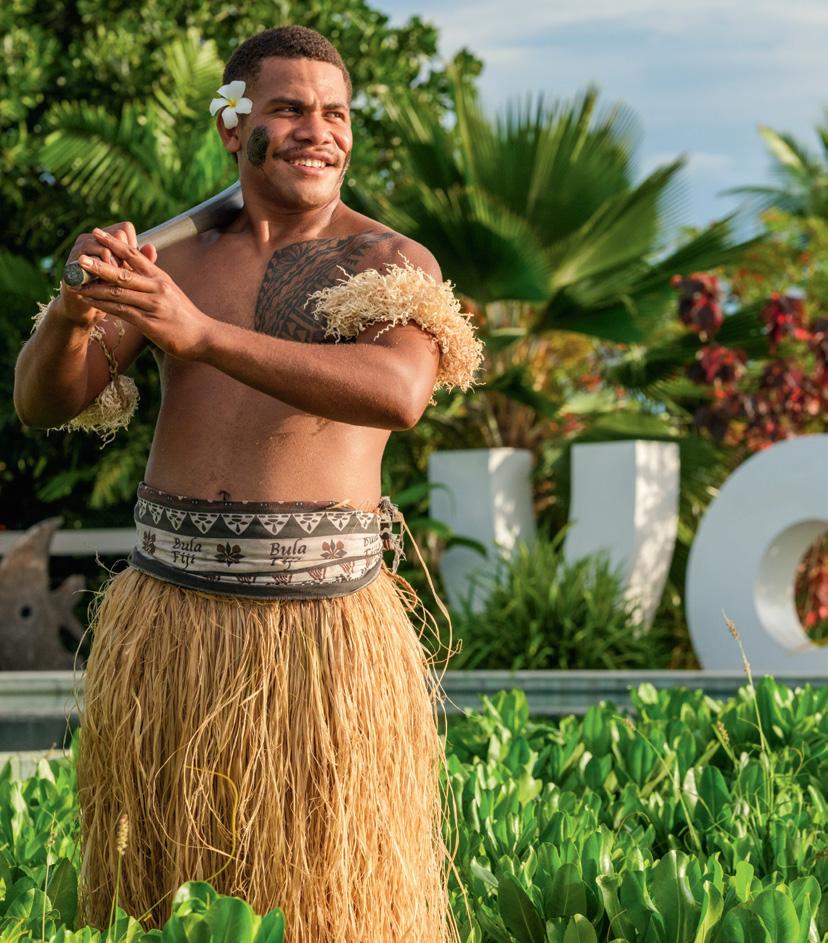
remarkably, the laundry is returned within five hours looking more perfect than when it was even purchased. I wasn’t able to work out how the team were magically able to achieve this, and soon regretted not bringing every article of clothing I had to Fiji.
Fiji is famous for being family friendly and VOMO’s Kids’ Club is no exception. Open from 9am to 9pm, kids are regularly spoiled with activities including snorkelling, fish
feeding, t-shirt or chocolate making and, of course, traditional Fijian dance. Families are even offered a “baby butler” for four hours a day, giving parents some welldeserved relaxation.
The only thing you can fault VOMO for is the difficulty in booking. The boutique resort books out early, especially in school holidays, so lock in your small slice of paradise well in advance.
Members of our VIP travel club are saving thousands Unlimited benefits all year round*

Save hundreds every year
With member-only pricing on our best limited-time hotel offers & tours

Early access
To our bestselling offers to secure the best availablity & rooms

Bonus inclusions
Hotel credit, daily breakfast, room upgrades & more

Exclusive access
To hidden offers, just for members

Worry-free travel
Save 40% on Travel & Cancellation Protection for stress-free trips

Jump-the-queue
With priority access to 24/7 customer support

See what members are saying about LuxPlus+ and its exclusive benefits



*Terms and conditions apply.

It may have started by attracting travellers with its beaches, but Bali is now home to an incredible food scene. Putu Wiranatha, founder of Balinese craft brewery Kuru Kuru, shares his tips for exploring the island’s food and beverage options.

Bali is loved for its surf and golden beaches, but it’s now drawing the crowds for its dining and bar scene, too. One family of tastemakers who have been a part of this success is the Wiranathas. They launched Bali’s first beach club, Ku De Ta, which has delighted holidaymakers for 25 years. Putu Wiranatha, who after studying in Australia, returned to join the family’s hospitality business and has continued their reputation for breaking new ground by launching the Balinese craft brewery Kuru Kuru. The island brewery has not only won over beer lovers in Bali with its pale ale and limited-edition beers such as the coffee stout, but these products are now available in Australia too. So who better to offer tips on a lazy dining day in Bali?

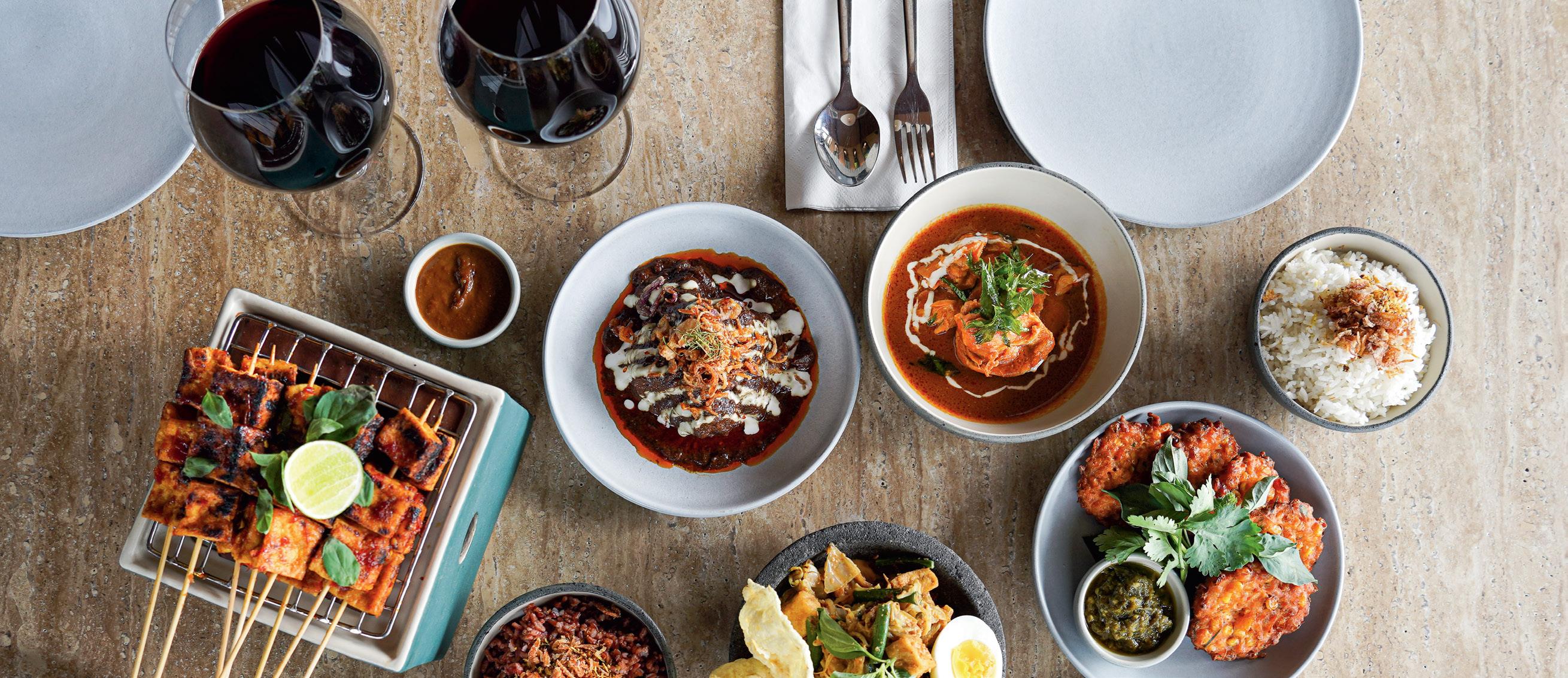
If you need a little help kickstarting the day, Putu has the perfect recommendation.
“Milk and Madu does great breakfast.
An Aussie style brunch with bacon-and-egg rolls, classic smashed avo and great Bloody Marys. We have outlets in Berawa, Canggu, Uluwatu and later this year will open one in Seminyak.”
The always stylish Ku De Ta in Seminyak is where Putu says you should throw down your towel. Relax in a beanbag on Ku De Ta’s lawn, cool off in the beachside pool or sit under one of the famed red umbrellas on the beach. “Ku De Ta isn’t one of those high-energy beach clubs where people are fist pumping. It’s definitely more of a relaxed beach club, which is why I prefer it. If you want to party harder, there are other places to go like Desa Potato Head or if you really want to send it you can go to Finns.” However, Putu says there is only one place that you should be at sunset when the Balinese sky is turning vibrant shades of pink, orange and red. “Ku De Ta for sunset drinks is pretty epic. The club is right on the beachfront. It’s the perfect spot to watch the sunset. You’ve also got amazing waves and you can watch people surfing, which I think is really cool.”
Seminyak isn’t short of stylish hotels, but Putu says that if you want to make your stay truly memorable you should book into the Double-Six Seminyak. He says the service is exemplary and so is the view. If you really want to spoil yourself, you can book into the three-bedroom, 800-metre-square 66 Penthouse Suite with even more perks. “You have your own Jacuzzi and personal butler as well,” he says. It would also make another great place to enjoy sunset drinks thanks to its panoramic view of the ocean.
The food scene in Bali is growing dramatically. Putu highlights a few that you could try during your stay. “Saltlick, located on the rooftop of Ku De Ta in Seminyak, is a great place to go for dinner. It’s a steakhouse [that’s] right on the beach and the super creative chef makes his own butters that he infuses with salt and he dry ages everything himself. Ulekan in Berawa is one of my favourites, it serves classic Indonesian recipes in a beautiful joglo style setting.” Putu also recommends the Italian restaurant La Lucciola set in a oversized grass-roofed wooden building overlooking Petitengat Beach. It’s known for pasta that’s hand-rolled before every service, and warm Italian bread. “They have a good seafood pasta and the focaccia there and my dad actually built the restaurant 40 years ago,” he says.
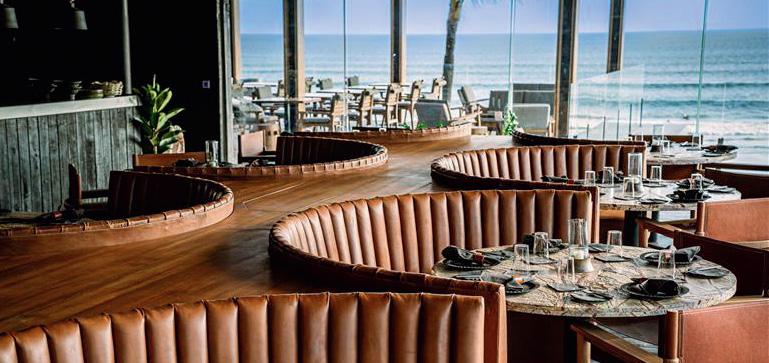
Putu says that you can’t go wrong with this speakeasy-style cocktail bar. “Segno in Canggu is pretty great. They have a really good mixologist. You can tell them what flavour profile you’re looking for and they will customise a drink for you. There’s lots of cosy corners to sit in and you can also get a private room if you’re with a bigger group.”

“Klymax at Desa Potato Head is a techno club that has probably one of the best sound systems in the world. Klymax is very much about the music. It’s not a place where people are doing bottle service and showing off. While Old Man’s is a Canggu classic. It plays everything from hip-hop and house to reggaeton. Very fun approachable songs that people know. The beach location is very special. We get sometimes even 3,000 people there on Wednesday. It’s an electric atmosphere and just some good old wholesome fun.”
MELBOURNE
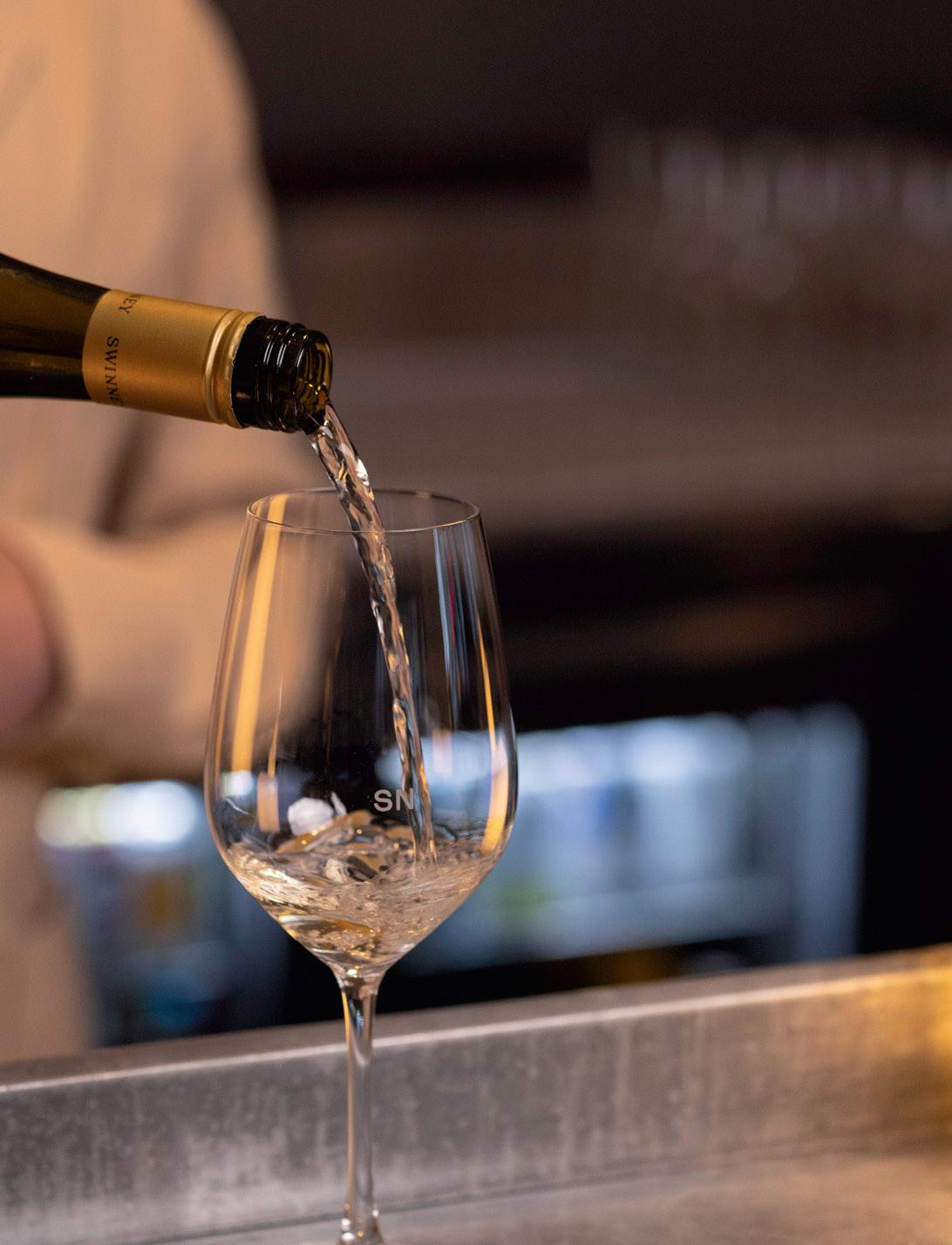
We asked three of Melbourne’s best sommeliers for the wines they would take with them should they ever wind up talking to volleyballs on a deserted island.
In a Bacchanalian take on the legendary BBC program Desert Island Discs – where a celebrity is asked to reveal the music they would take if they were stranded on a desert island – we challenged three leading sommeliers to tell us the bottles they would love to have by their side if they ever ended up like Tom Hanks’ unlucky postal worker in Cast Away
Will they opt for something that can handle the hot weather? A drop that goes well with seafood? Or, will it simply be a bottle of wine they cherish the most?
Here are the sommeliers’ desert island sips.

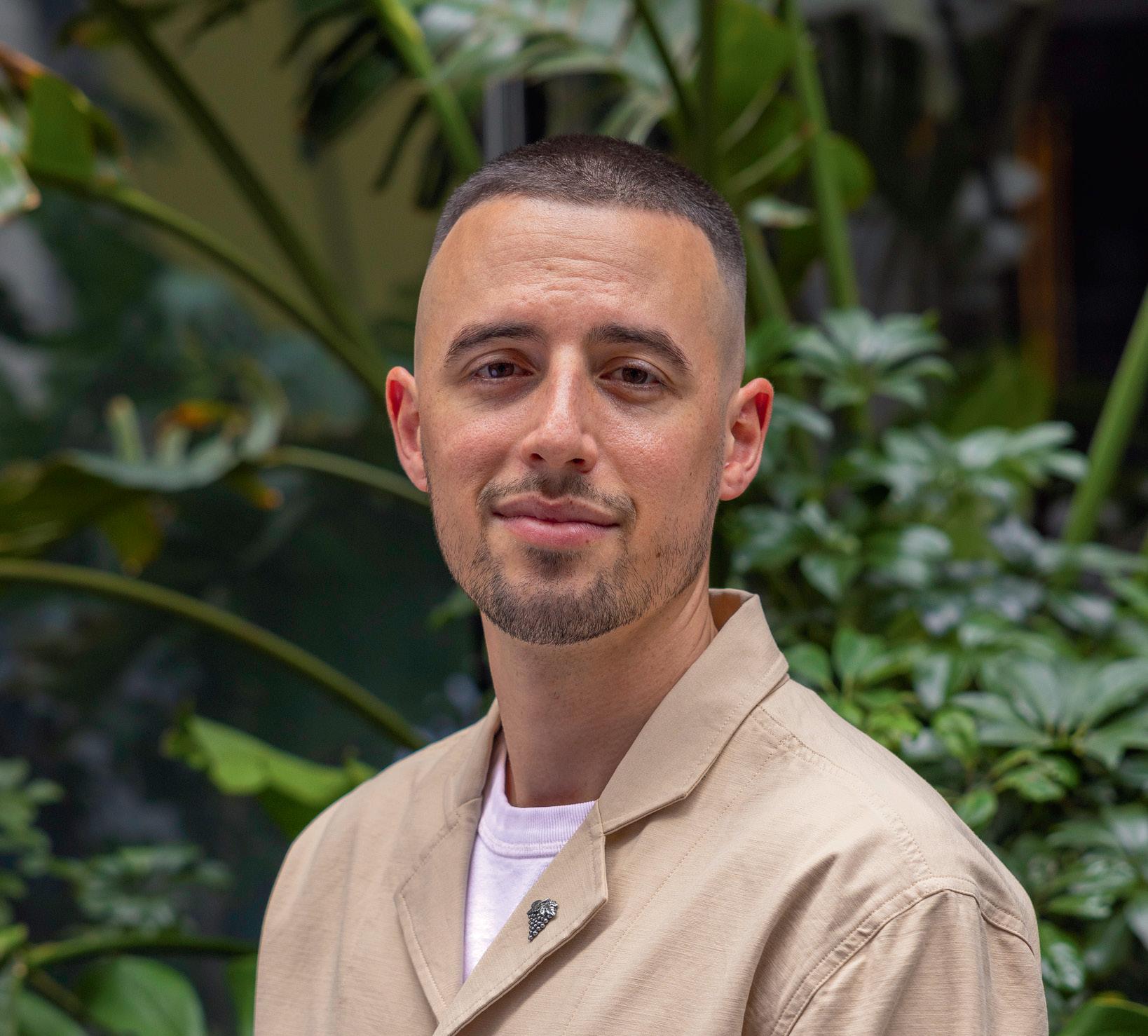
What is the island you would choose to be cast away on?
Without a doubt, Salina, one of the Aeolian Islands north of Sicily, Southern Italy, where my father’s family is from. The pebbled beaches, lush views and green hills set it apart from the other seven Aeolian islands (and it also happens to have the lowest volcanic activity!).
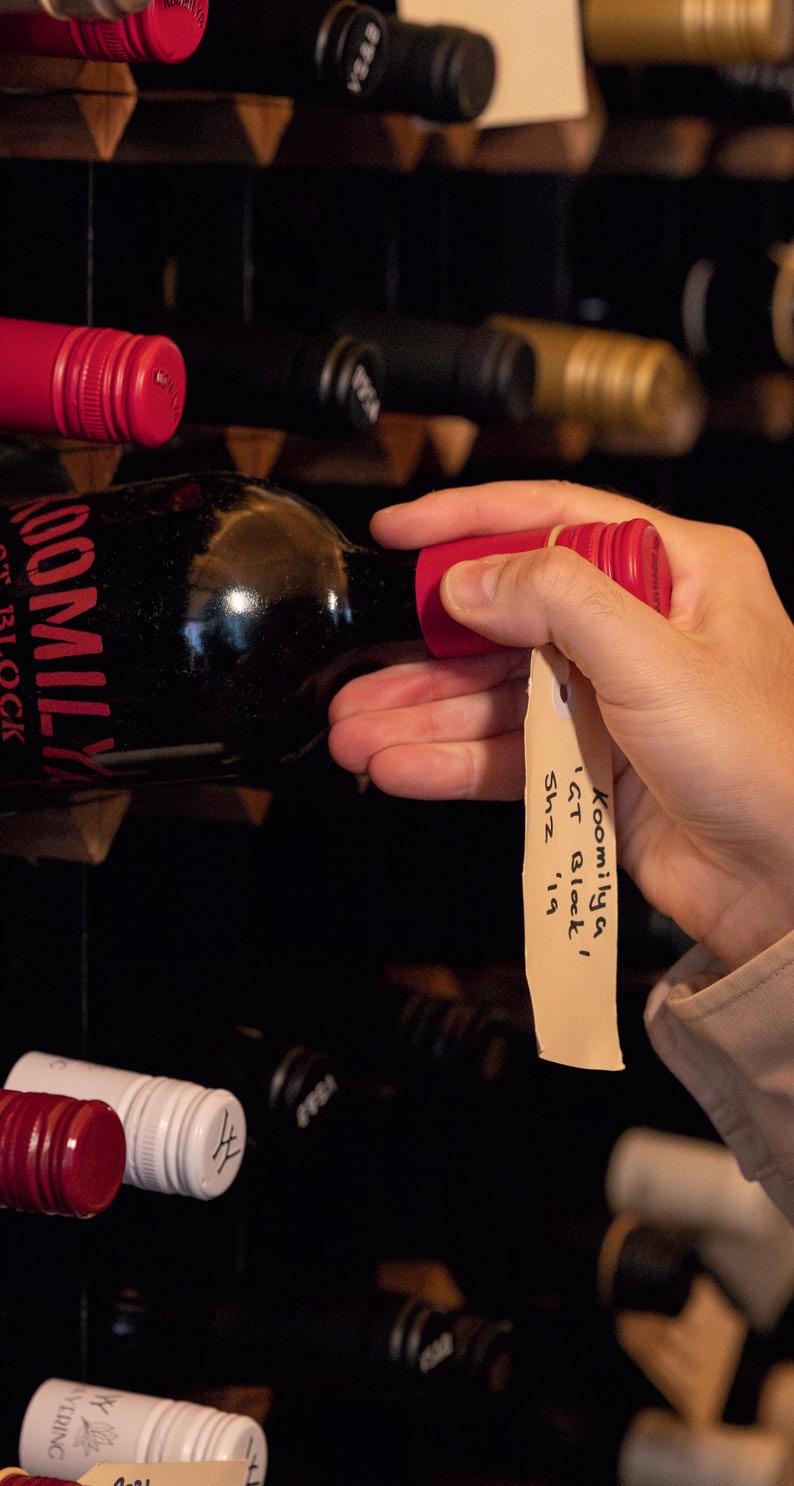
What is the one bottle of white wine you would want with you?
The food on the island is accentuated by the foundations of the environment, like freshly caught fish and famous caper bushes, amongst the saltiest delicacies nature has to offer. That being said, I’ll be grabbing a bottle of Carricante. Something with a strong nod to the Mediterranean, that has freshness, a distinctive saline quality and aromatic complexity. Probably from the hands of a producer such as Maugeri, who is making some real noise on the Etna wine scene. Their visually stunning vineyards are on the eastern slopes of Mount Etna, and they make seamlessly balanced, site-expressive whites.
How about a bottle of red?
If I’m taking some red to devour in the heat of the sun, I’m turning to Frappato. In the south-east of Sicily, on sandy soils, the local Frappato grape thrives and produces a red you might not expect from this far south. They’re crunchy and light in body, without the sacrifice of flavour and are oh so moreish!
I’ll pack a bottle from seventh-generation producer Poggio di Bortolone. You can expect a playful array of bright raspberry and cherry fruit with an intoxicating nose of dried flowers. It’s great chilled just a little.
Daniel started in restaurants in his early twenties where he spent several years moving up the ranks. “I had to learn about wine and beverage as we didn’t really have dedicated sommeliers as part of the team,” he says. “I remember not knowing anything, but I had to talk to guests about it. It wasn’t until my move to Supernormal more than six years ago that I decided to pursue a career in wine with close mentorship from the formidable Leanne Altmann. I now run the beverage program in one of Melbourne’s most dynamic restaurants with a strong, ambitious team of Sommeliers who I am so proud to call my colleagues.”
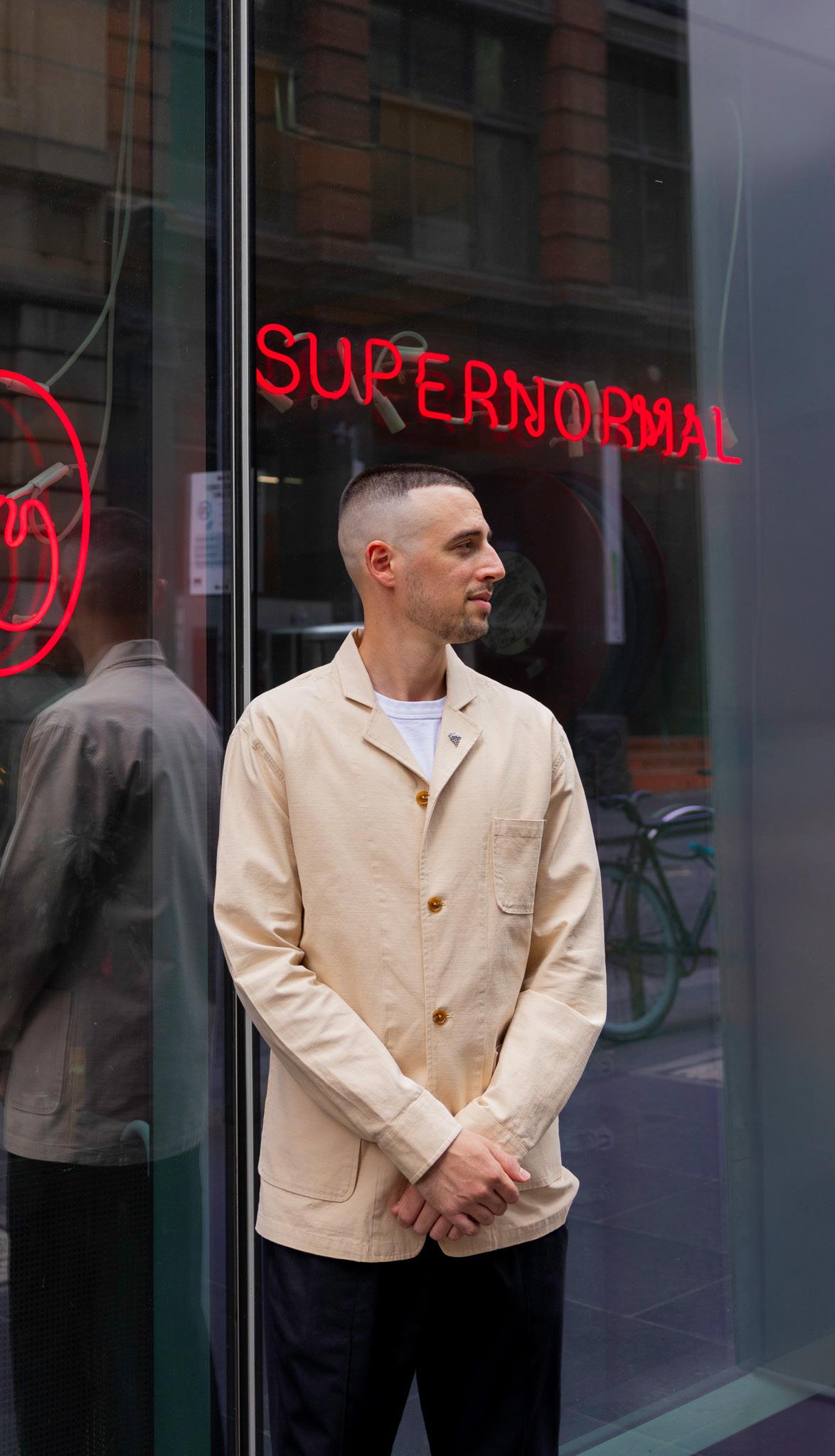
Callie describes her sommelier experience as “a bit of a whirlwind”.
“For a long time, I felt like I was chasing my own tail,” she says. “Wine can be a bit of a rabbit hole: the more you learn the more you realise you don’t know. Realising the industry is just as important as the wine was instrumental to success. Finding a balance between studying, mentorship and just a genuine appreciation for the product itself took a long time. There are so many layers to the wine industry – sort of like an onion. Maybe I’ll bring a couple of those to the island, too.”

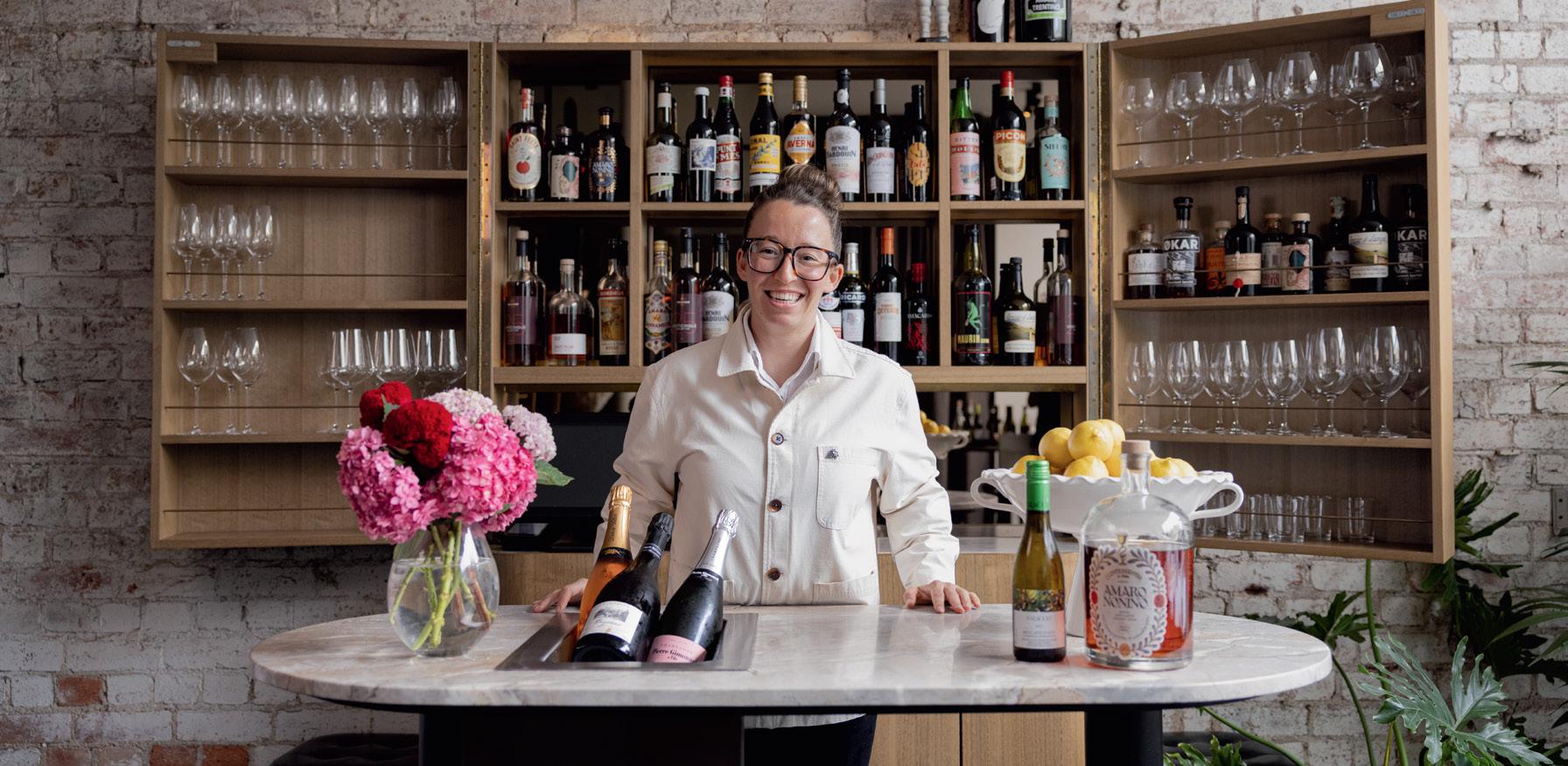
What is the one bottle of red wine you would want with you?
Would I choose something with a great story, or something I couldn’t live without?
Memorable but versatile I think is the way to go. Personally, I’d hope a bottle of the 2015 Grange des Pères Rouge would come floating by. It’s one of those amazing bottles of wine that truly was a surprise, both its longevity and the complexity of the glass. It really highlights the “if you know, you know” sentiment. If I could have the privilege of tasting that wine again on the island, I’d be incredibly grateful. I’d say the tide would turn on my dire castaway situation, that’s for sure.

What is the island you would choose to be cast away on?
They say that what grows together goes together and most islands would lend themselves to great wine drinking. But based on personal and professional experience, it would have to be the Greek island of Santorini. The stunning volcanic views and great weather would help me pass the time while counting down the days until I was rescued. Imagine drinking a refreshing glass of Assyrtiko in the sun. Fabulous. There’s also Waiheke Island in New Zealand. With boutique beaches and the diversity of wineries, it’s too easy to get sucked in; it makes for a cracking weekend getaway. There are so many different styles of wine grown here that I’d never get bored.
And a bottle of white?
I reckon if I was stuck on a deserted island and about to start talking to volleyballs, I’d be pretty parched. In my head, the best breakfast wine is Moscato d’Asti. My notso-guilty pleasure would serve me well à la minute or perhaps I could pre-plan a makeshift Mimosa. If I couldn’t find any oranges to juice, I’m sure I could wrangle some coconuts to do the job. Timeless and versatile, it’s exactly what the doctor ordered.
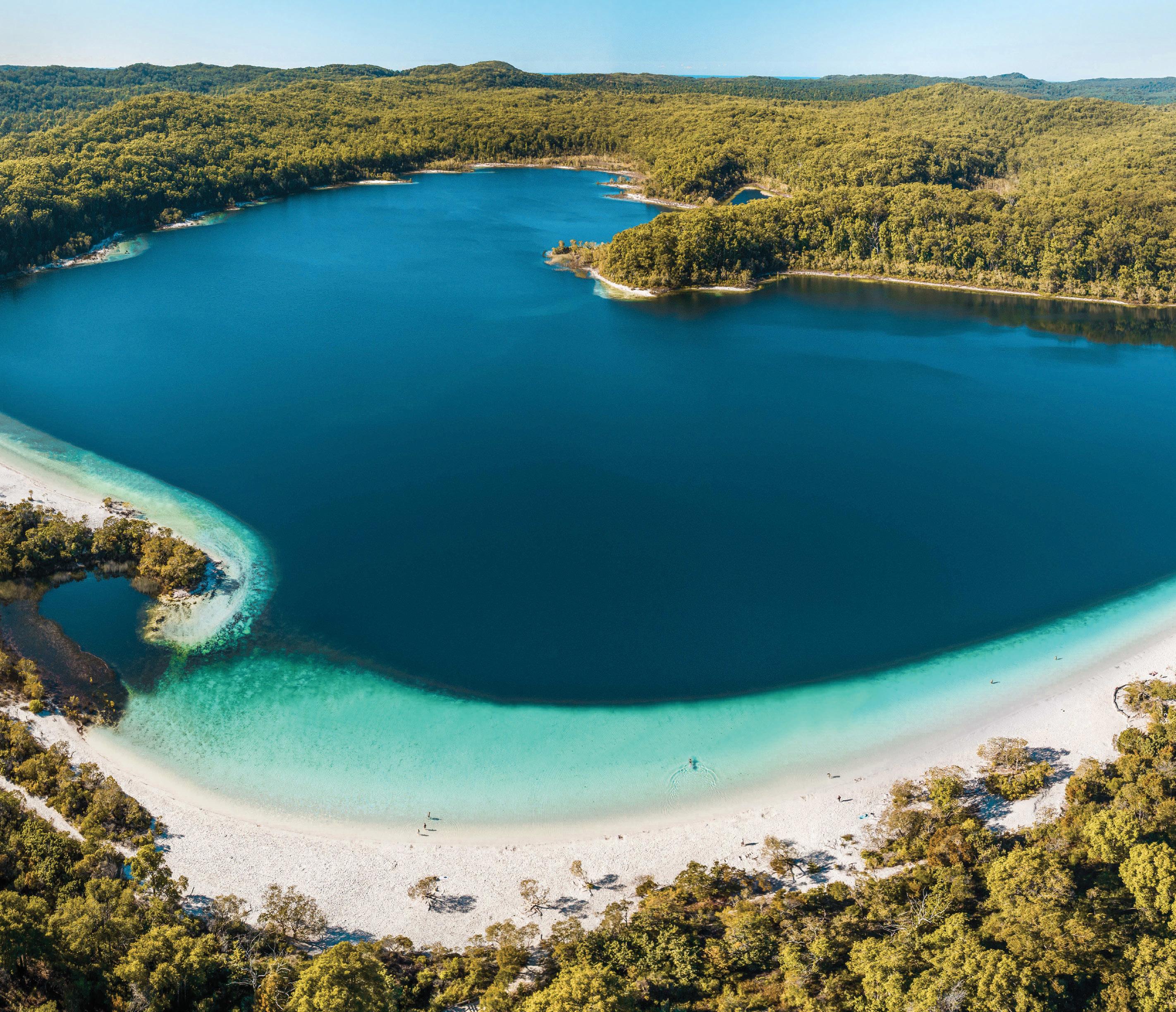
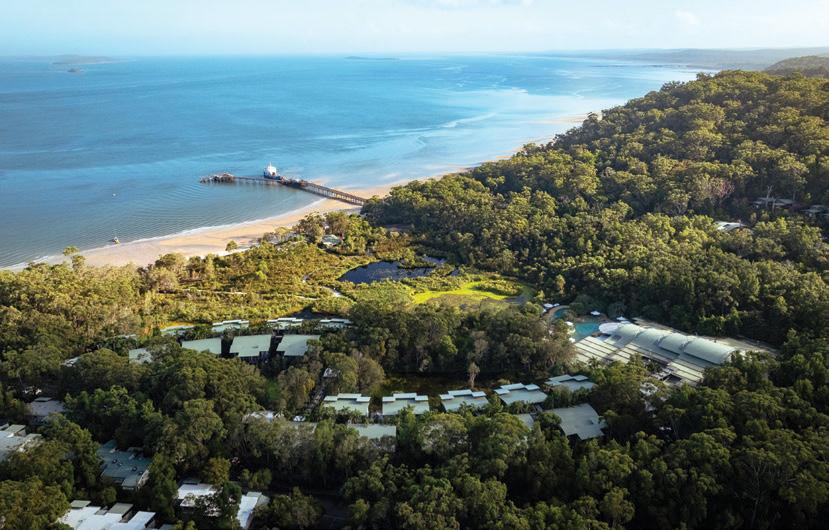
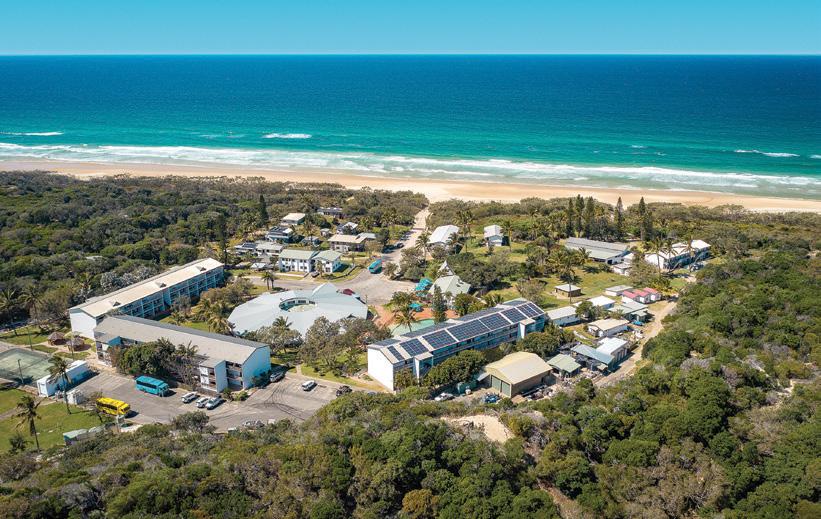

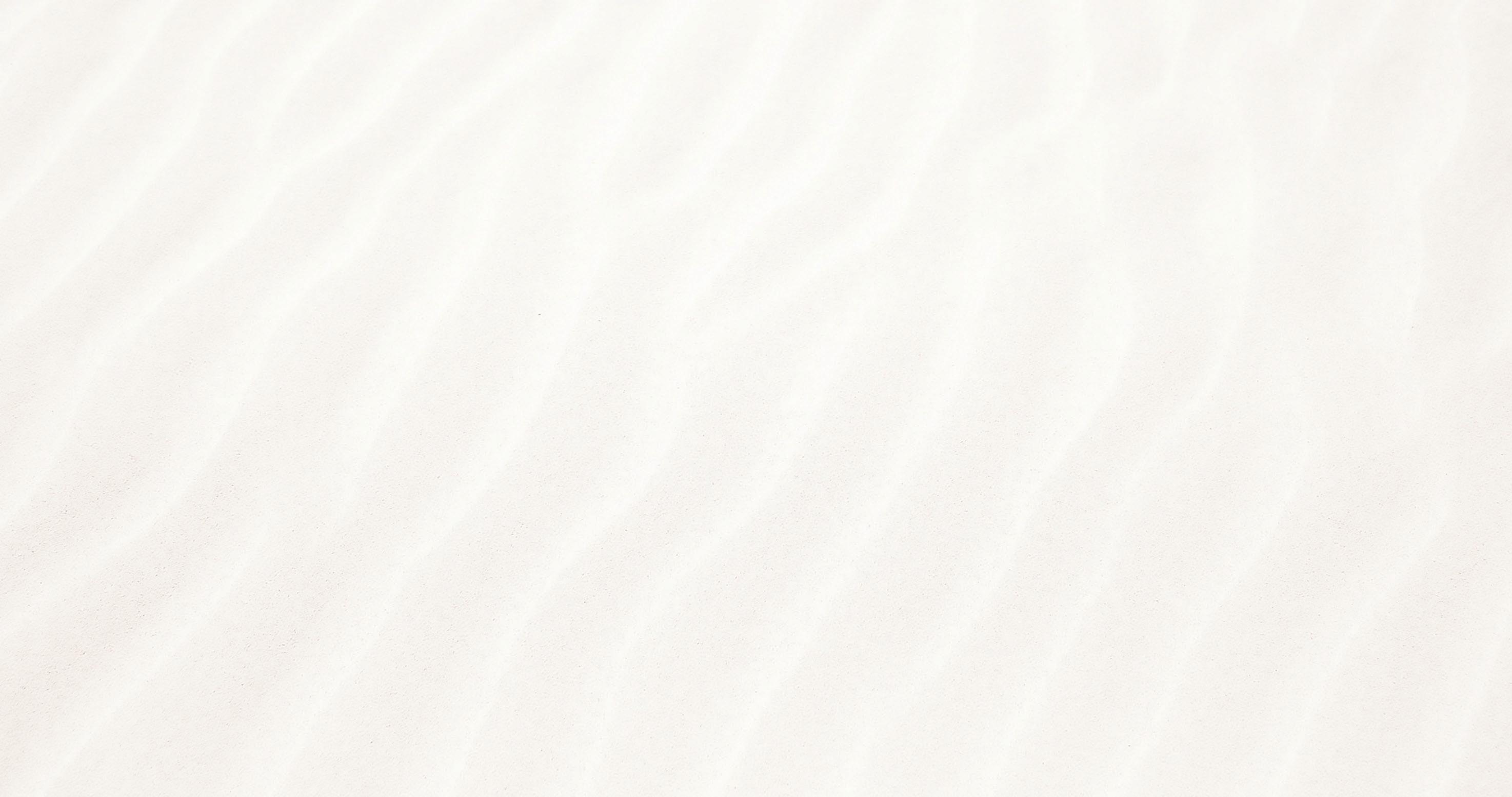
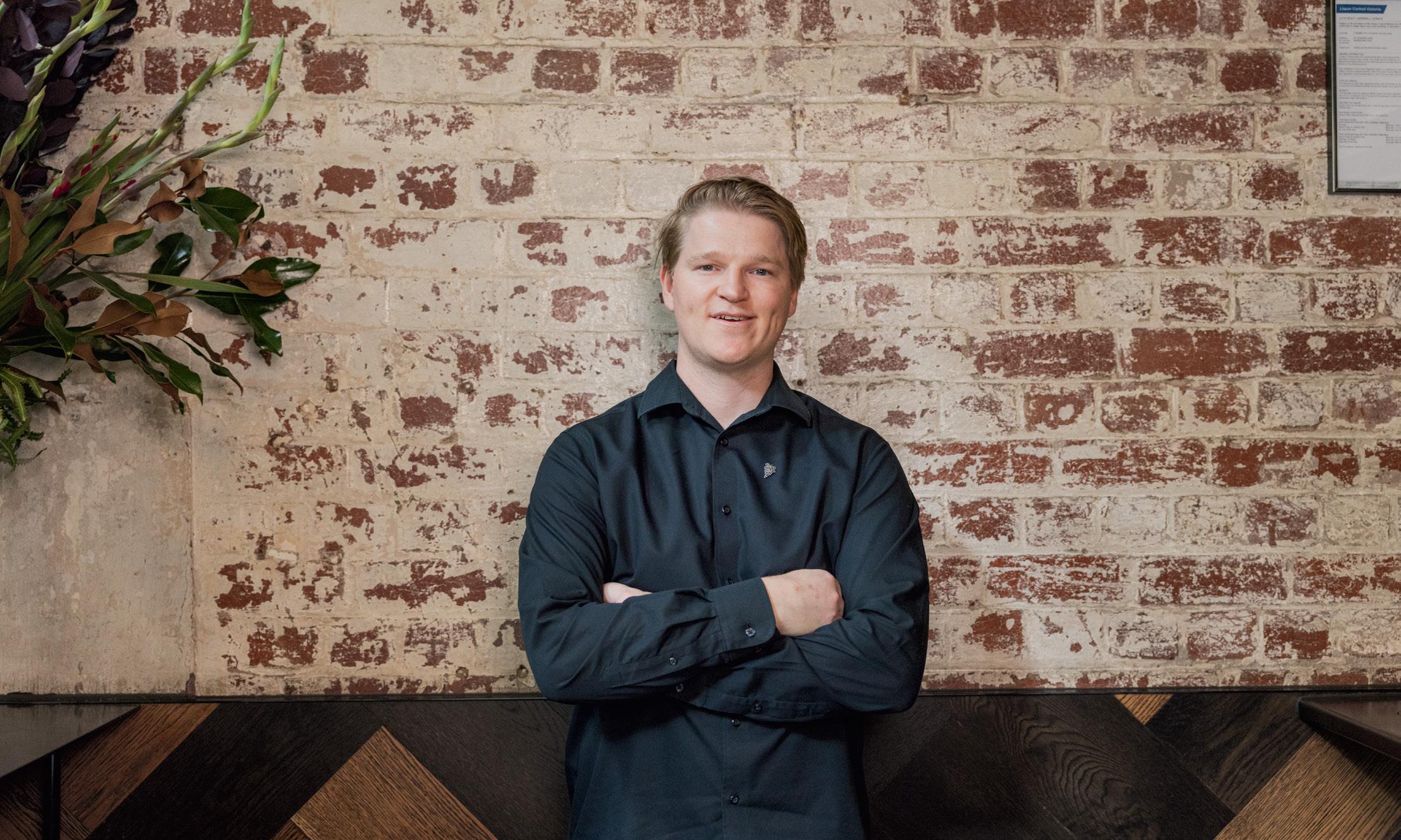
Chris describes his career in wine as “finding something you love to do and diving in head first”.
“I truly believe the dynamic and competitive nature of Melbourne’s hospitality scene provides the ideal training ground for aspirational sommeliers,” he says. “This is certainly my experience, with many fastpaced yet considered services at Cumulus Inc. providing me with unforgettable lessons
What is the one bottle of white wine you would want with you?
Well, it has to be Madeira. Often overlooked, for me the famed fortified wines of the island are a sommelier’s best friend. The best examples are savoury and complex whilst also expressing freshness. Today Madeira offers some of the best value in the world of wine. After a long trek through the forests and mountains of the island, I am reaching for the drier-styled Madeira, something like the 10-year-old Sercial by Barbeito. Delicious.
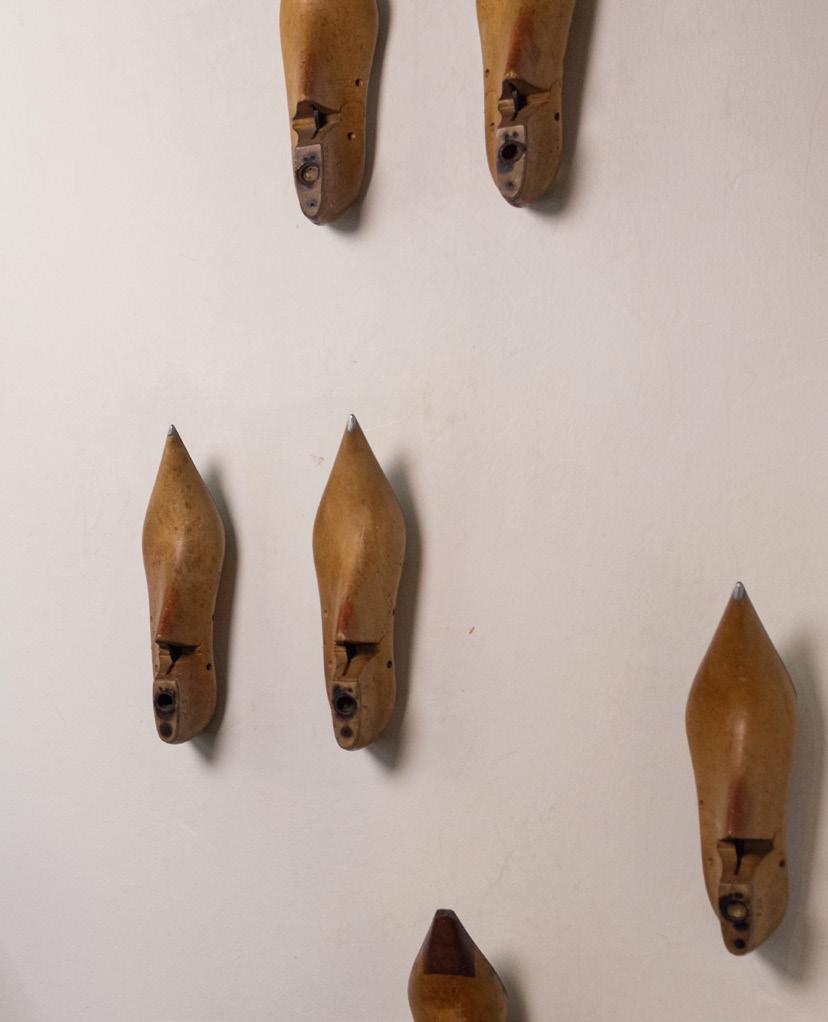
in real hospitality. This passion for hospitality naturally developed into a love and passion for wine. Whether it is showing a guest an exciting new variety to try or sharing my love for German Riesling with another, I believe a passionate conversation over wine is the icing on the cake for a memorable dining experience.”
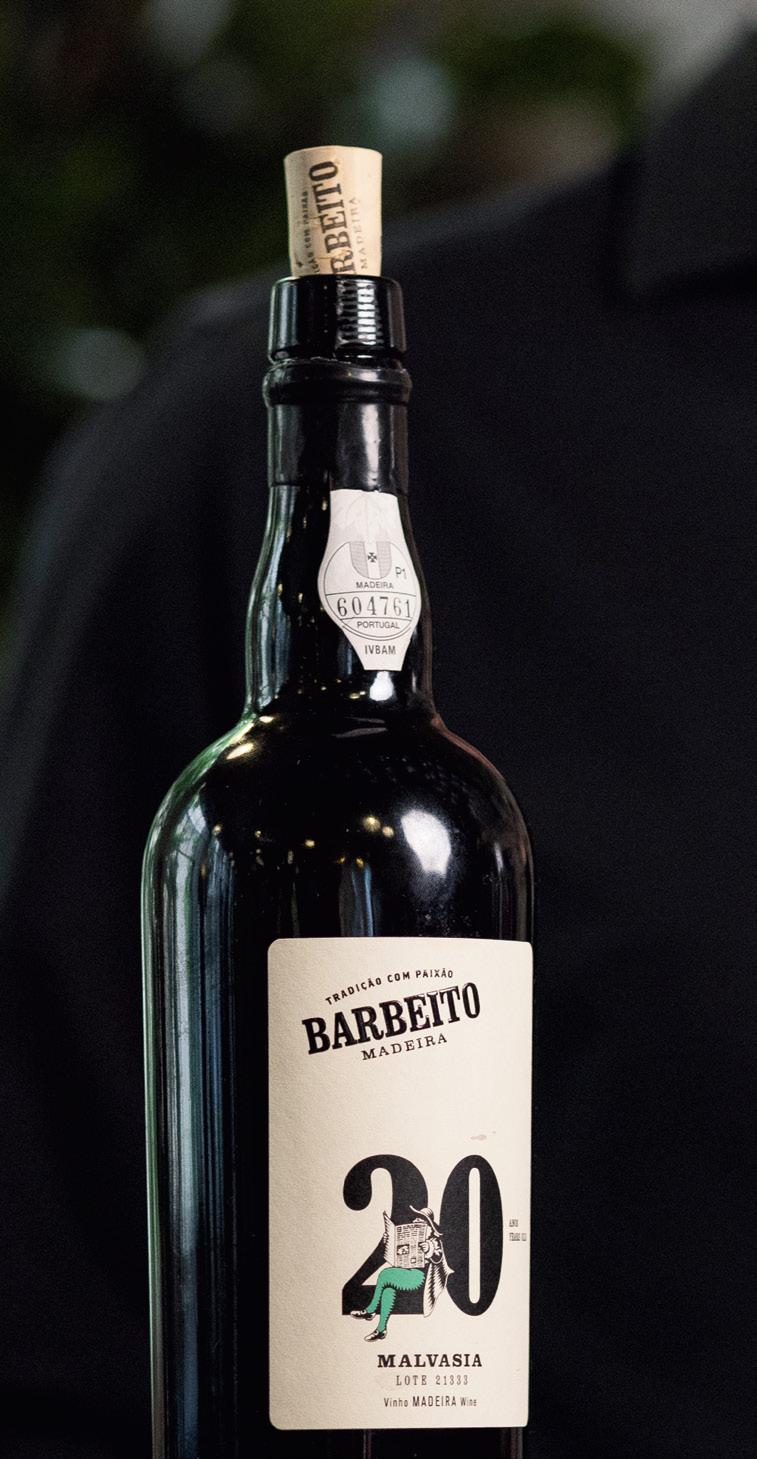
What is the island you would choose to be cast away on?
Madeira in Portugal excites me. The island is famed for its breathtaking landscapes and crystal-clear waters. As a hobby hiker, the island is a treasure trove for endless adventures and, of course, beautiful beaches.

How about a bottle of red?
Taking a little bit of Australia with me, I’ll always have a bottle of Grenache from the McLaren Vale in my backpack. I just love these wines because they speak so well of where they come from. Grenache can handle the warmth of South Australia’s sun without forsaking freshness and drinkability. Few have embraced McLaren Vale Grenache like Steve Pannell and I’d love to share his Little Branch Grenache with many travellers through Madeira.
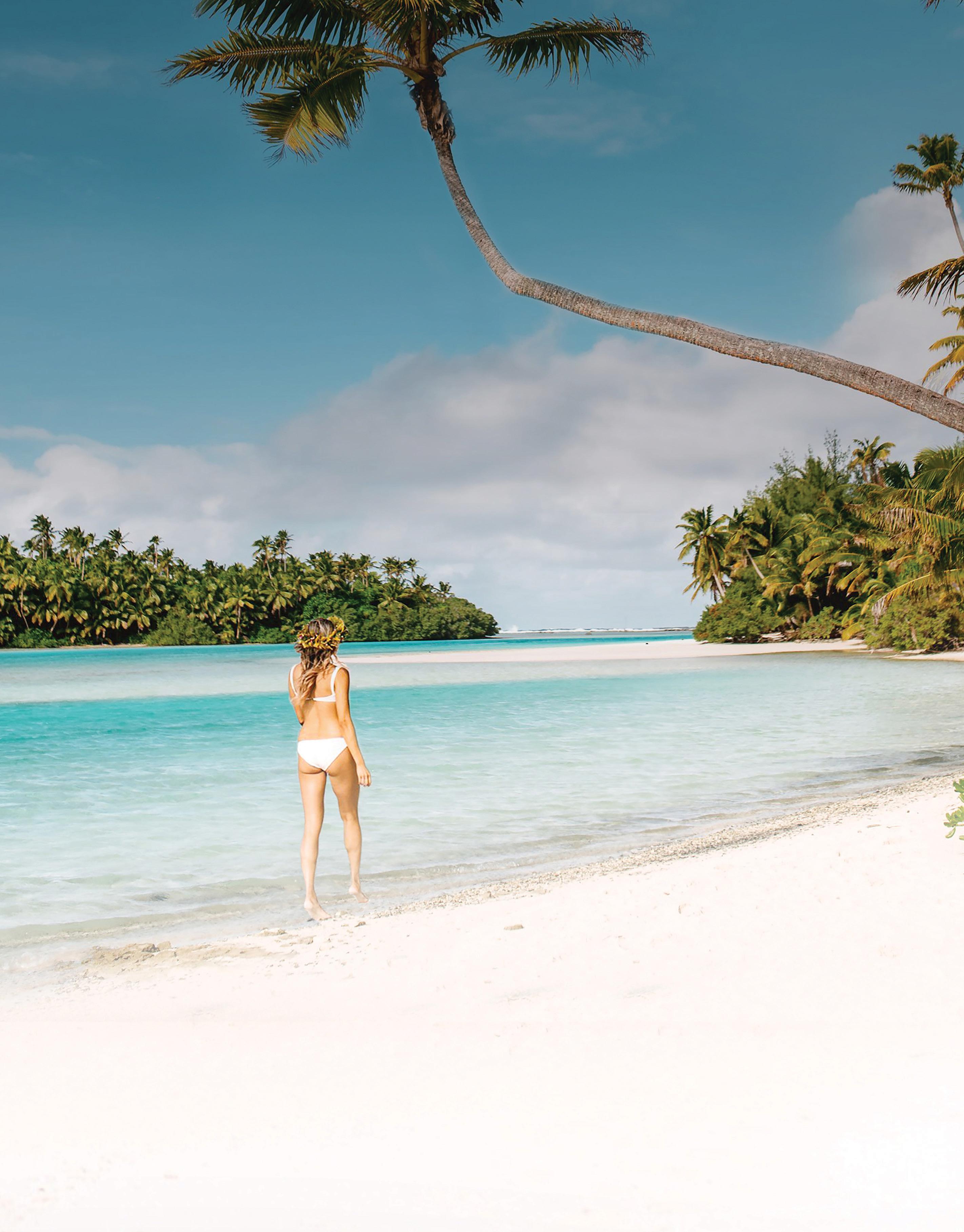
There’s a local Cook Islands law that states no building can be taller than the coconut trees around it. You also won’t find traffic lights or stop signs in this South Pacific paradise. It’s like going back to simpler times yet still being able to enjoy today’s modern conveniences. Book your Cook Islands getaway now and have the ultimate South Pacific holiday you’ve always dreamed of.
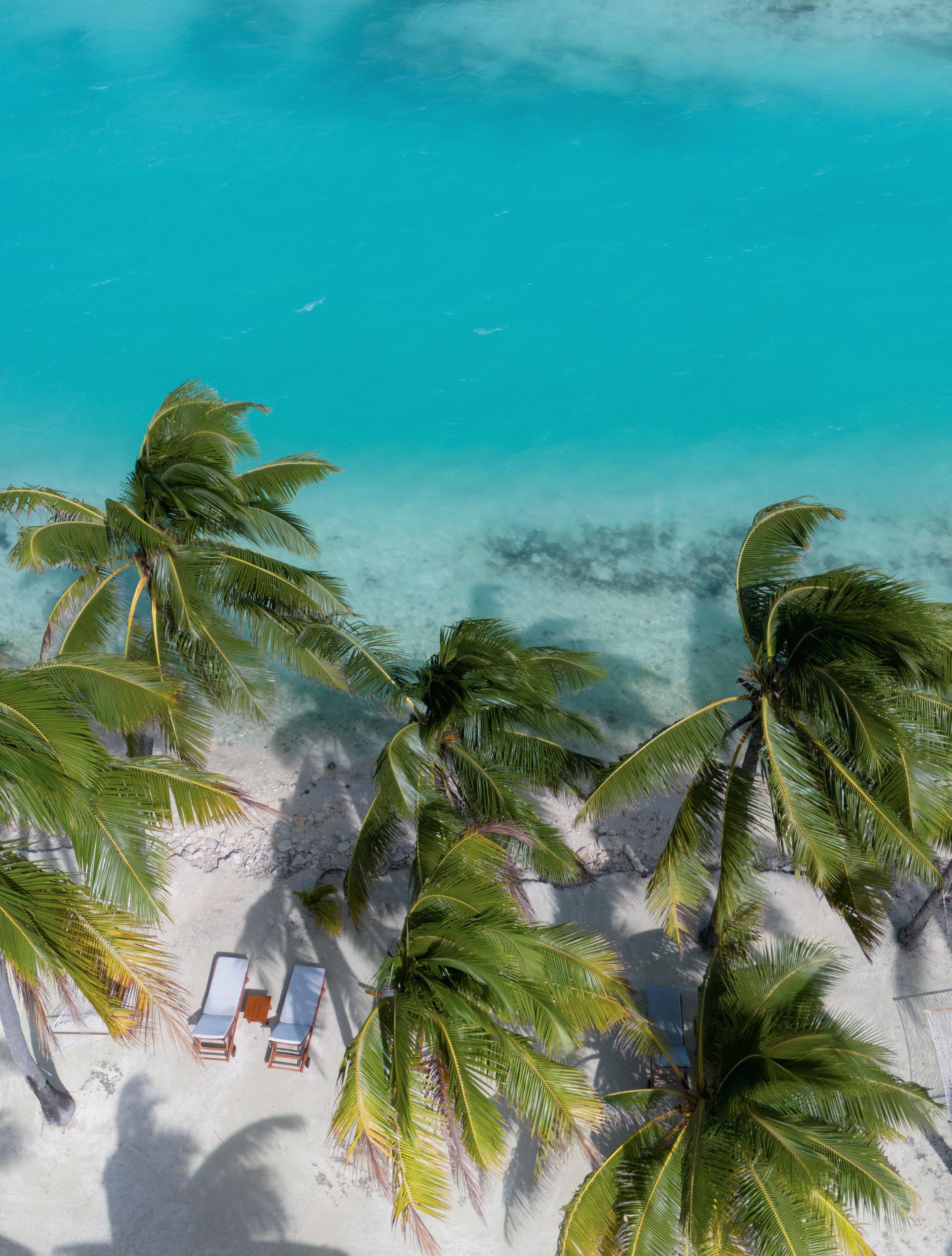
On an idyllic retreat to this tropical paradise, Sarah Royale (aka Salty Luxe) spends some time on Aitutaki Lagoon and goes island hopping in a region that is not overrun by tourists.

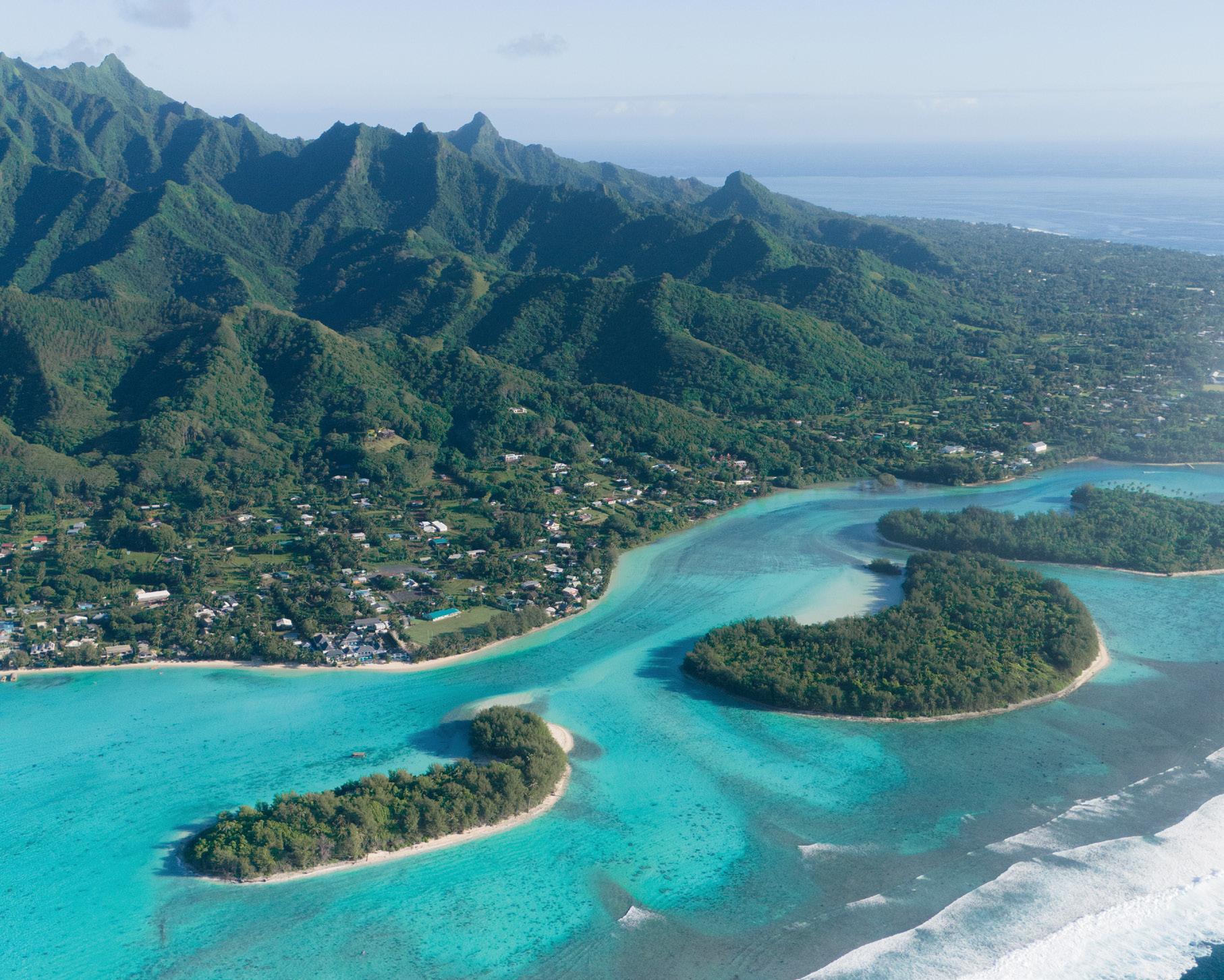

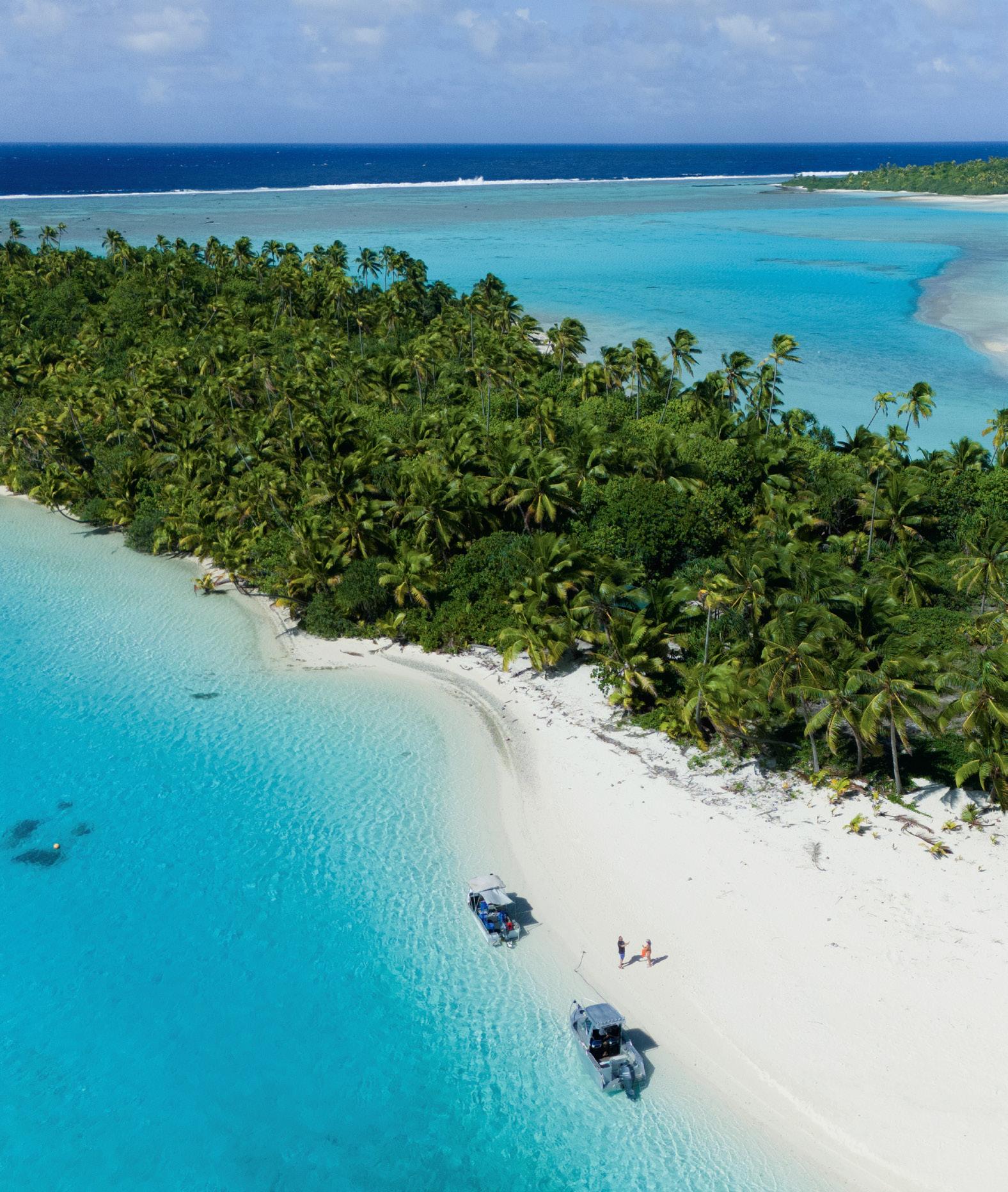
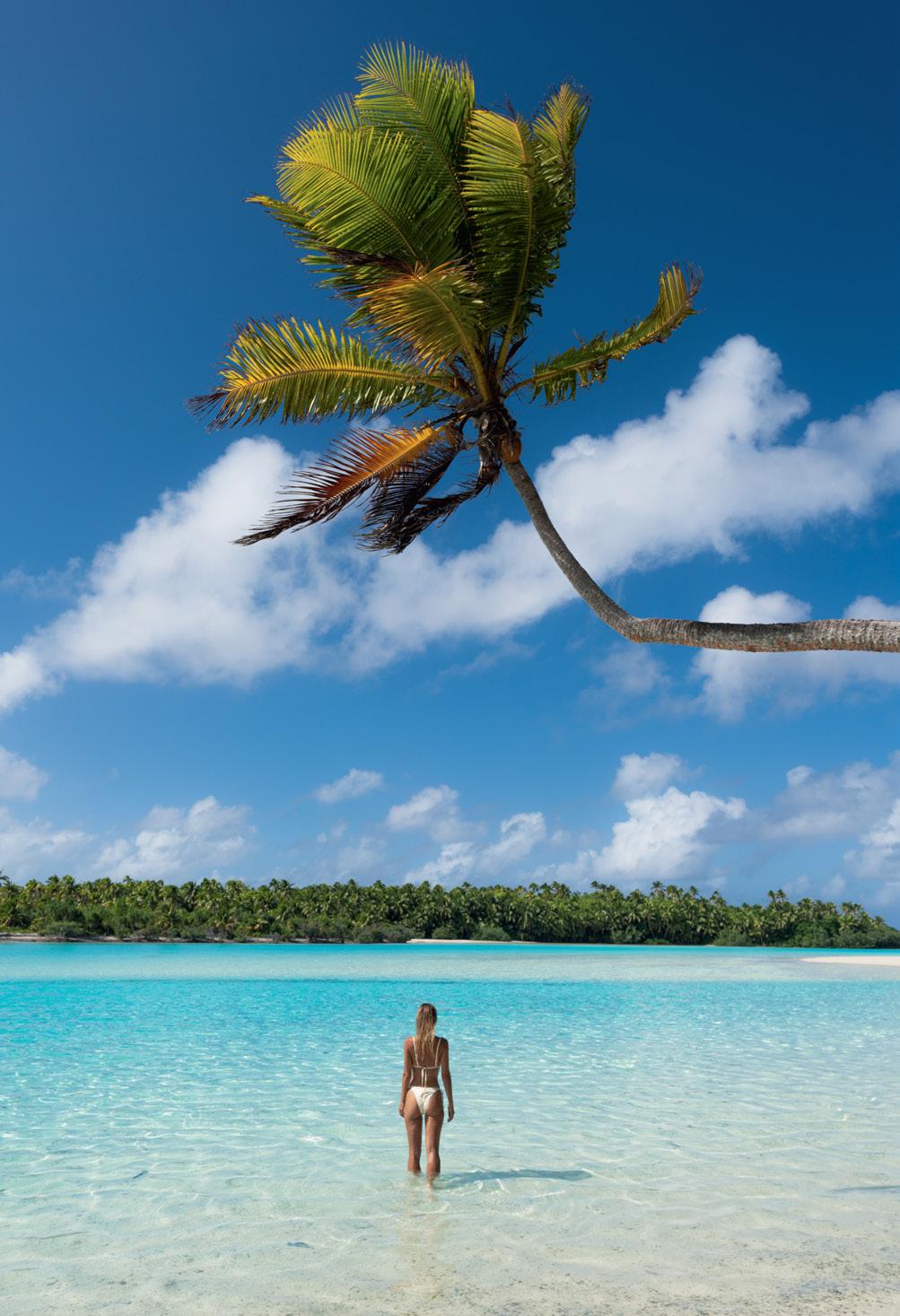
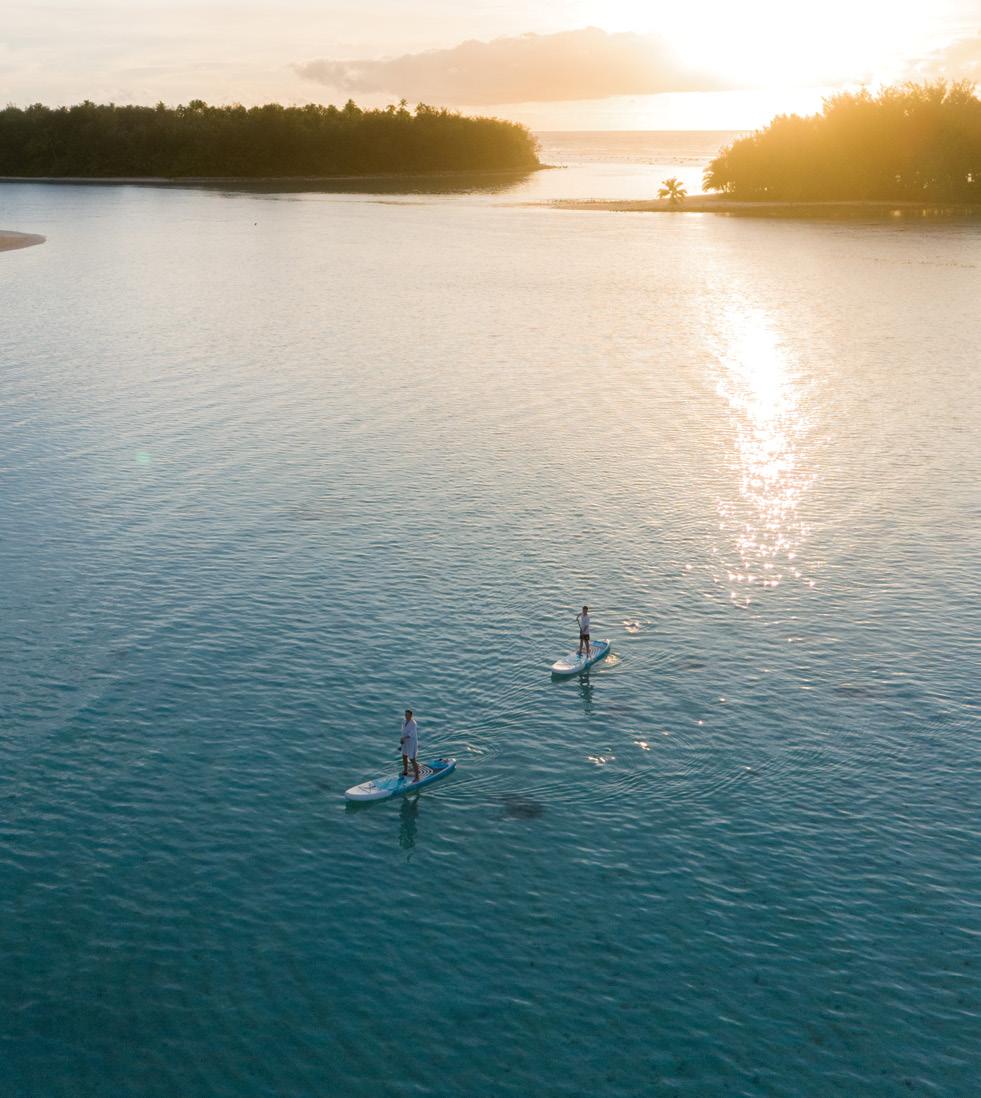

e taste of a bar of craft chocolate can change depending on its surroundings. Professional chocolate taster Finn Doyle heads to New Zealand to meet craft chocolate makers and sample their wares on a journey from remote Kapiti Island to remarkable Ben Lomond.

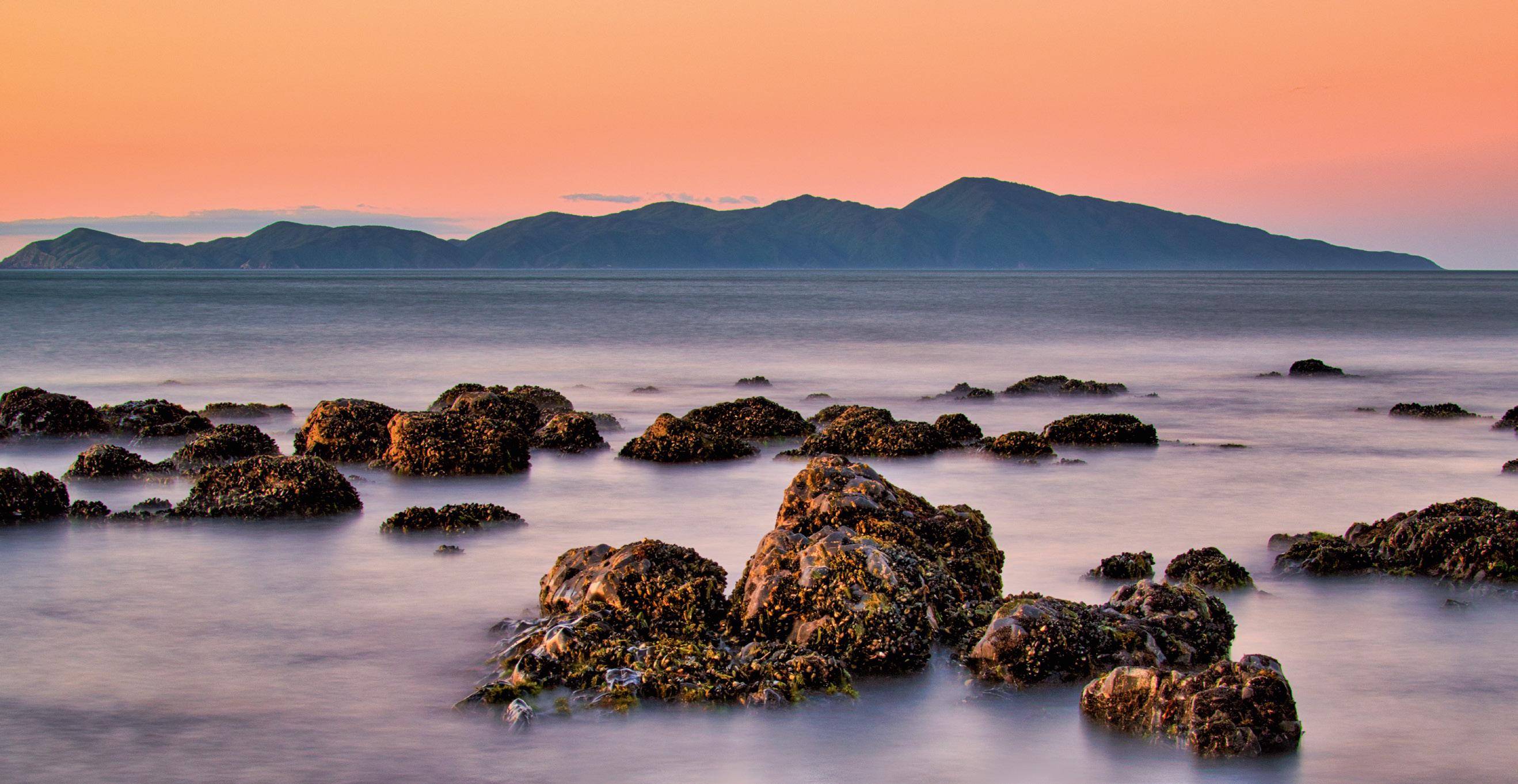
At the top of Tuteremoana – the highest point on lush Kāpiti Island –my chocolate tastes more like citrus. Yesterday, at Baron Hasselhoff’s warmly lit Wellington chocolate factory-cafe, it was nuttier. Now, high in the New Zealand wilderness, the same bar tastes distinctly fruity.
Such is the ephemeral beauty of craft chocolate. Emerging from 1990s San Francisco, the craft chocolate or “bean-to-bar” movement has honed the intricate art of chocolate-making, roasting and refining ethically sourced cacao beans. From a humble handful of DIY innovators, bean-to-bar makers now number in the hundreds globally, setting a new industry benchmark – much like coffee before it.
I am in New Zealand to visit two world-class chocolate makers and observe how their bean-to-bar offerings change in the wild surrounds. There’s no wrong way to taste chocolate, but with the right know-how you can unlock unexpected layers of nuance. Our tastes shift with mood, experience, time and –my favourite – environment.
Which is how I find myself on remote Kāpiti Island with one of Aotearoa’s best chocolate bars: Baron Hasselhoff’s
Viva Frida Mexican cacao – crunchy pepitas and creamy almond milk with five different chilies and a delicate balance of spices. It comes highly recommended by founders, Clayton McErlane (Chief Chocolate Disciple) and Erin Todd (Chief Chocolate Everything Else). For over a decade, the affable duo has crafted some of New Zealand’s most creative chocolate, like rosemaryinfused salted caramels and Szechuan pepper truffles.
“We love an adventure,” says Erin when I ask about the tongue-in-cheek lore surrounding the titular “Baron”. “We wanted to deliberately create this character: a globe-trotting taste adventurer, like Anthony Bourdain,” adds Clayton. “He sends us back these postcards with half-baked ideas, then we turn those into the product.”
It’s a steady hike through Kāpiti’s wilderness. The melodic laughter of saddleback birds leads me to a misty viewpoint overlooking Cook Strait, where I sample my Mexican mole-inspired chocolate. The coastal winds amplify the sea salt. The smell of native flora draws out a bright lime note. Each carefully selected ingredient is invigorated by the island’s rugged charms.

Hopping a South Island ferry, I head to Hogarth Chocolate. Karl and Marina Hogarth produce some of the world’s most exquisite bars, with countless international awards, mesmerising designs and a distinctly Kiwi identity to match.
“We definitely try to put a New Zealand spin on things,” says Karl. “Kumara, manuka honey, Anzac biscuit, even the sarsaparilla.”
“It’s all Kiwi ingredients,” Marina points out; manuka honey from a friend’s farm, hazelnuts from a long-time neighbour at Nelson Market.
I ask them for the perfect mountain-trail pairing to rival my North Island experience. Marina suggests their on-the-go minibars (an oft-requested treat for their son’s mountain-biking excursions). We settle on licorice caramel white chocolate.
Next morning in Queenstown, and I’m headed for the summit of Ben Lomond, with views of the Remarkables.
It’s a challenging ascent. The air grows thinner near the 1,748-metre peak. When there are no more steps to climb, a silence settles over the assembled adventurers at the top.
I bite into my long-awaited reward.
Creamy, caramelised white chocolate with notes of thyme and balsamic glaze blend with the coffee-like depth of Amarelli’s 300-year-old Italian licorice recipe. There’s rich umami, bold acidity, and the cooling effect of high-quality cacao butter. It’s utterly spectacular. The complex flavours and scent of alpine shrubbery feel of a piece.
For bean-to-bar makers like Hogarth and Baron Hasselhoff’s, crafting chocolate means wrangling flavours as changeable as the weather. These chocolate trailblazers adapt to the unpredictable, honing cacao’s wild pleasure on the trail to something special.
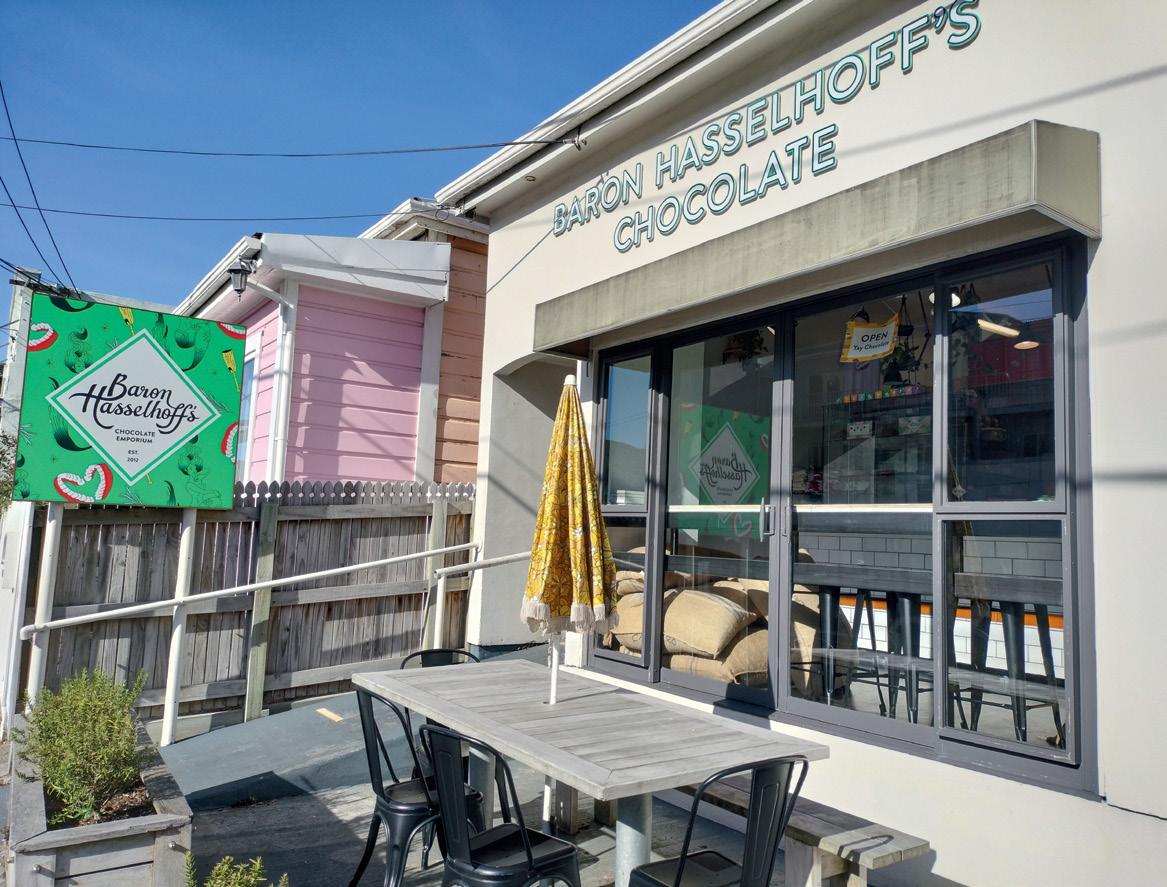

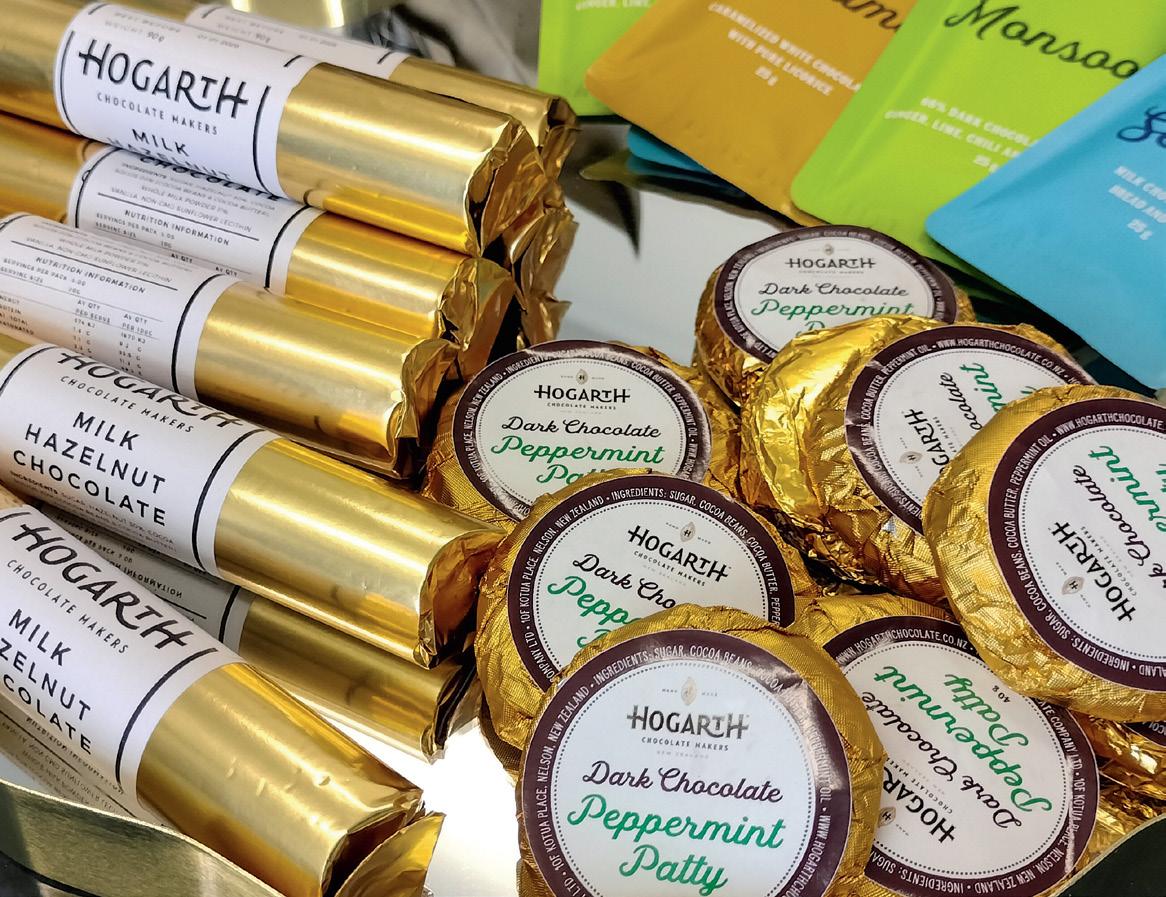




Regular cruiser Annabel Fuller shares how a themed comedy cruise turned her skeptical landlubbing friends into high-seas enthusiasts – and why the cruise industry sees specialty cruises as an important new way to grow the sector.
ILLUSTRATIONS BY KATIE FORD
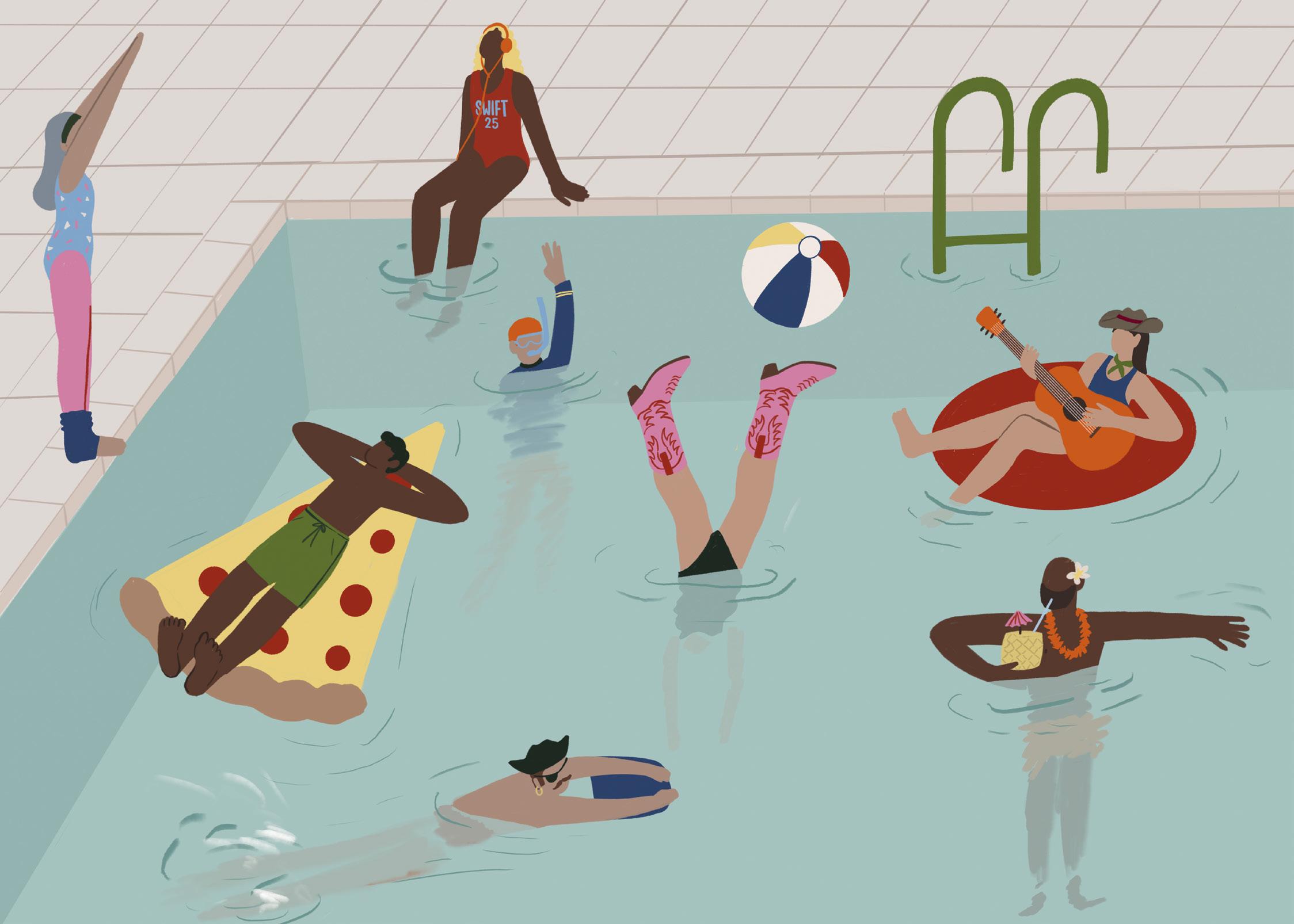
What do music festivals, Star Trek uniforms and Michelin-starred dining all have in common? They’re all part of the growing wave of specialty cruises – a product that’s not just redefining high-seas travel but actively luring a new generation of adventurers who might otherwise avoid cruising altogether.
As someone who has cruised a dozen times, I’ve experienced the evolution of the industry firsthand. Still, it wasn’t until I invited a group of my staunchest anti-cruise friends on a two-night P&O comedy cruise that I truly understood how specialty sailings are turning skeptics into enthusiasts.
Their reactions were predictable: “Won’t it feel like being trapped on a floating mall?” one asked. Another worried about seasickness. Yet, I was determined to change their minds. A two-night comedy cruise seemed like the perfect gateway event: a weekend escape packed with entertainment, affordability and
just enough ocean views to charm even the most dubious travellers.
By the end of the weekend, they were converts. The ship’s theatre came alive each evening, the spotlight bouncing off the red velvet seats as we roared with laughter at sharp punchlines. We spent lazy afternoons stretched out on sun loungers by the pool, the gentle sea breeze carrying the faint scent of sunscreen and tropical cocktails. “I get it now,” one admitted as we disembarked. “It’s like a resort – but better. I can’t wait for the next one.”
This transformative experience reflects a growing trend in the cruise industry. Specialty cruises, focused on everything from fandoms and food to fitness and nostalgia, are booming.
With P&O cruising as Carnival Cruise Line from 2025, the brand is redefining themed cruising in Australia. By blending nostalgia, entertainment and curated onboard experiences, Carnival is spearheading a new era of personalised, community-driven travel.
Joel Katz, Managing Director of Cruise Lines International Association (CLIA) Australasia and Asia, notes that cruise tourism is thriving globally and attracting younger generations at record levels.
Cruising has never been one-size-fits-all, explains Joel, “but today there is more choice than ever and every cruise brand has its own distinct personality”.
This surge in younger travellers aligns with the rise of themed cruises, which Chris Gray Faust, Executive Editor of Cruise Critic, notes have a unique ability to foster community at sea. “Once people go on a themed cruise and see how much fun it is to sail with others who share the same passions, they are hooked,” she says. “They’ll come back again and again, either on the same themed cruise the next year to be with new friends or on a different sailing because they’ve realised how easy a vacation it is.”
ing an ideal entry point for first-time cruisers. Specialty cruises cater to an astonishing range of interests. Music lovers can book sailings featuring live performances from Nashville stars or 1980s legends, complete with neon dance parties. Food and wine aficionados can indulge in culinary tours, which visit famed wine regions and offer chef-curated tasting menus.
For pop culture enthusiasts, there’s everything from Star Trek-themed cruises with actor panels and costume contests to Taylor Swift-inspired sailings offering karaoke battles, glittering dance parties and merchandise.
When choosing our cruise, the comedy theme stood out as the perfect fit: not only did it align with our schedules, but its short duration let my friends dip their toes into life at sea. The
experience, are a great way to find your tribe and sail with like-minded people,” says Chris. “That’s a huge draw, not just for a cruise but for a vacation overall.”
Or as one of my friends put it: “This doesn’t feel like a cruise, it’s more like a festival.”
Carnival Cruise Line is tapping into the zeitgeist with “bucket experiences” designed to appeal to first-time cruisers, with particular focus on Millennials and Gen Z travellers. A spokesperson for Carnival Cruise Line Australia explains: “By incorporating popular themes into the onboard experience, we create a unique, approachable entry point that breaks down preconceived notions about cruising and highlights the fun, inclusive atmosphere Carnival is known for.”
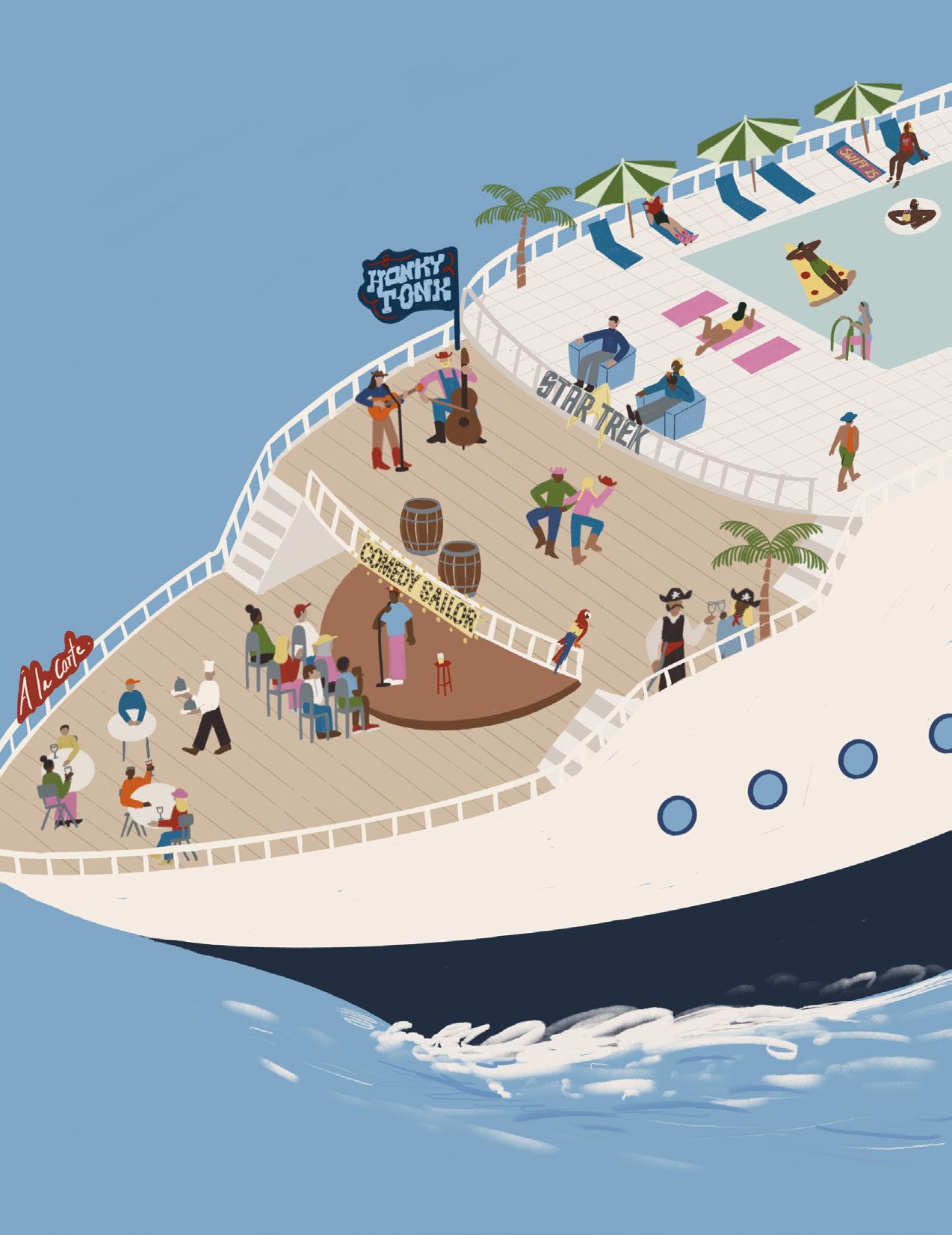
The numbers back this up. According to CLIA, demand for themed cruises has surged by over 20 per cent in the past five years, with Millennials and Gen Z leading the charge. Shorter cruises, those lasting two to five nights, account for 37 per cent of all bookings, provid-
idea of a weekend escape filled with laughter, top-tier entertainment and the effortless appeal of an all-inclusive experience – with no planning, no transport hassles and cocktails arriving at our loungers – made it an easy ‘yes,’.
“These themed cruises, which are centred around a passion or a favourite entertainer or
Joel highlights the broader innovation within the cruise industry. “We’re seeing a huge amount of creativity and innovation in the experiences cruise lines are offering,” he says. “Some are expanding into expedition itineraries that explore remote unspoilt locations ... while others have a focus on fun and entertainment that appeals to young families and kids.”
Specialty cruises are part of a much wider evolution shaping the cruise industry, Joel continues. “We see it in everything from the onboard experience through to the activities and excursions available on shore. Travellers increasingly want a closer connection with the cultures and destinations they visit, and we can see this in the design of creative shore excursions or onboard elements like the cuisine.”
Standing on the Pacific Explorer’s deck after two nights of belly laughs, I felt a renewed sense of optimism about the future of cruising. Specialty cruises manage to capture the magic of being at sea while reimagining it for a new generation.
They’re playful yet sophisticated, niche yet inclusive, and for those willing to give them a chance, they offer an experience that is anything but ordinary.
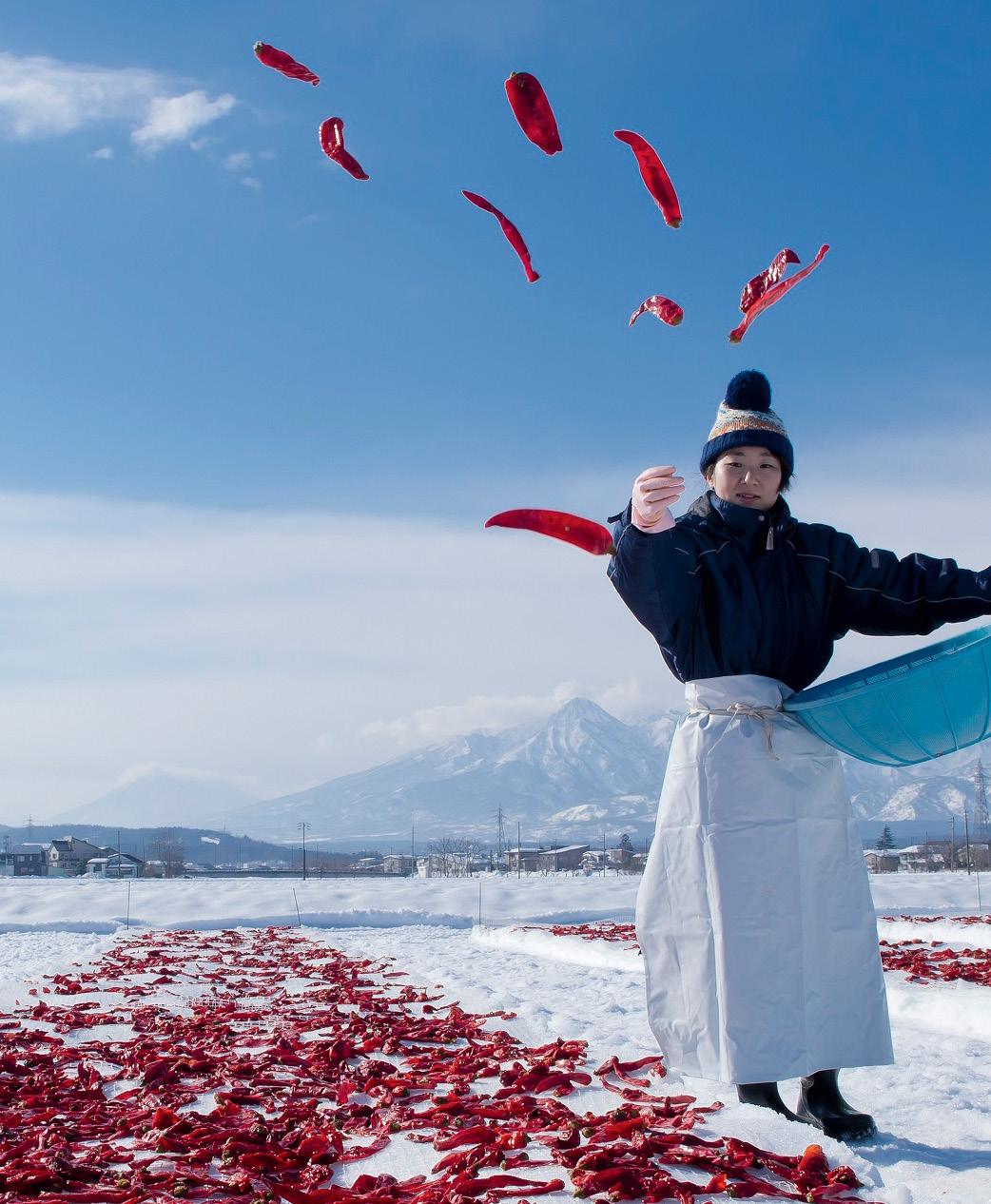
On an icy trip through the ski elds of Japan, Madeleine Keck nds that locals have some ery ways to keep warm, including onsens, massages and a spicy paste made from chillies cured directly on the snowy slopes.

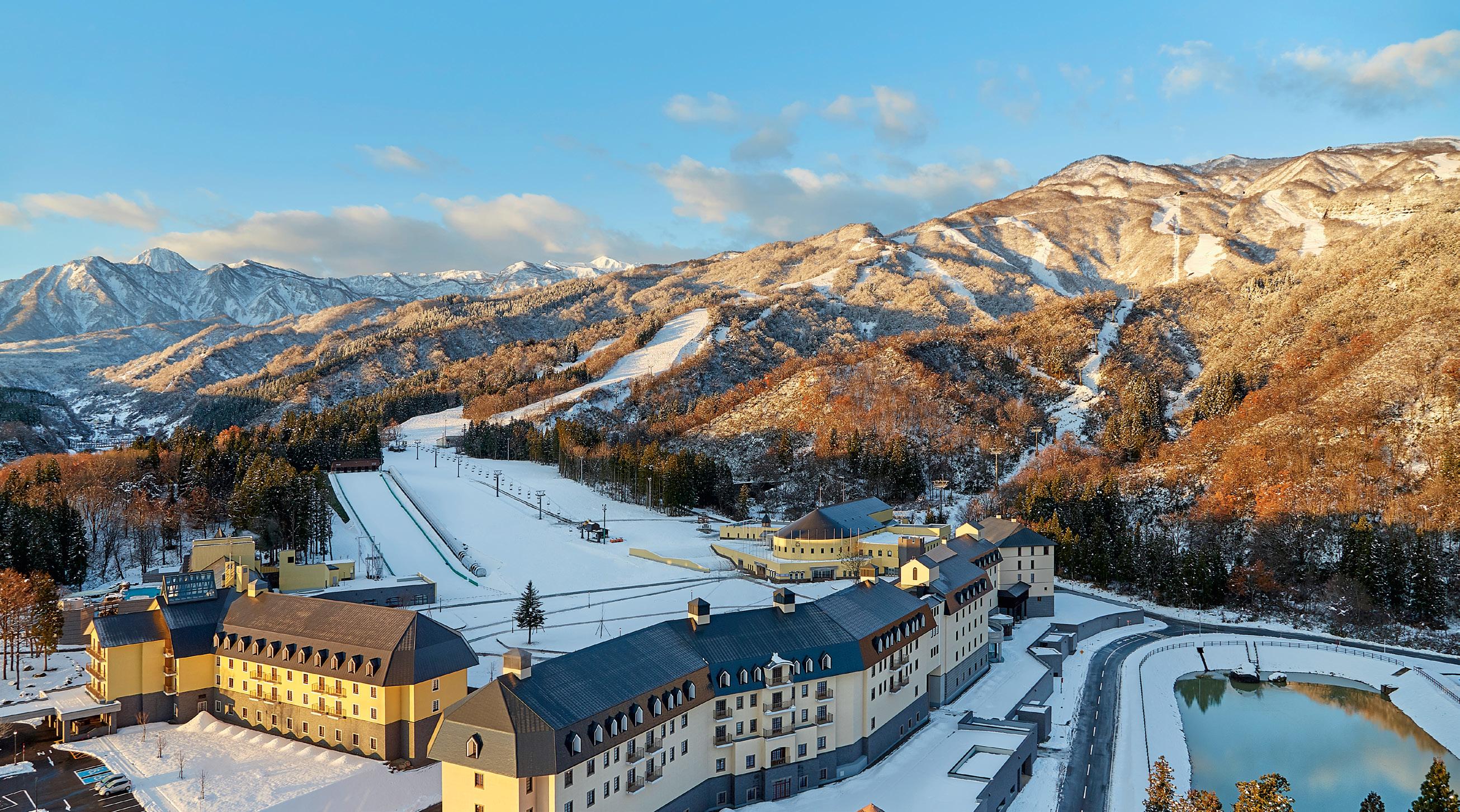
As winter sets in around Japan and temperatures hover around zero, you can stand in one of the snowiest regions on earth and still feel full-body tingling, lingering heat — and all it takes is a chilli.
For generations, artisans in Myoko, located close to the Sea of Japan in the western Niigata Prefecture, have minced and marinated locally harvested chilli peppers into a paste, which imparts a bold, complex spice to dishes like grilled meat, noodles, sashimi and ramen. The peppers are harvested in summer and marinated in salt in the autumn. When the winter comes, they are laid on fresh snow for three days to draw out any excess salinity; they intensify in colour, glowing bright red against the white landscape before being infused with fragrant yuzu and rice malt (koji).
“It’s our culture, it’s what makes us unique,” says tour guide Takuto Tojo at the KANZURI factory where the meticulous craft is now carried out on an industrial scale, each bottle fermenting for up to six years. “This is how we ate in the past, and it’s how we eat today. Every kitchen here has a bottle of this chilli paste. It’s cold. You need to eat the spice to heat you up.”
As I’m discovering, customs that warm body and soul are the hallmarks of skiing in Japan.
I’m on a 10-day trip through some of the country’s most renowned ski towns. This area, Myoko Kogen, consists of five main resorts and is a two-hour ride from Tokyo on the Shinkansen (bullet train). One of the oldest ski districts in the country, the area has fewer crowds, and remarkably affordable one-day
ski passes, at around $60. I’m staying at Lotte Arai, a five-star ski-in, ski-out resort complete with massive ungroomed, free-ride areas, multiple restaurants, a trampoline park, day spa, onsen and 1,500-metre zip line tour.
Unlike where I learnt to ski in Australia – where you’d be lucky to find a bowl of soggy chips – I can point my skis to the nearest wooden hut and find the wasabi and umami-rich delights that Japanese cuisine is renowned for. At Pontaro, a warmly lit restaurant with traditional tatami-floored rooms, I eat translucent squid-and-crab broths, KANZURI-marinated yakitori and flaming red soba fried noodles, before being shown the correct process to make and sip hot sake.
Much like the food, the perfectly dry and deep powder snow in Japan is more impressive than you might find in an Australian ski resort. I glide from run to run, carving through cedar forests and across wide-open spaces. For five consecutive days, more snow falls than I’ve ever seen in my life, before giving way to bluebird skies.
One afternoon, when my ski-legs feel particularly shaky, I trade a day on the slopes to steam the chill away at Lotte Arai’s Spa Manna. Following a sauna and dip in two baths, I have local, heated Amaterasu stones (named after the Shinto sun goddess) placed vertically on my back, the warmth penetrating deep beneath my skin.
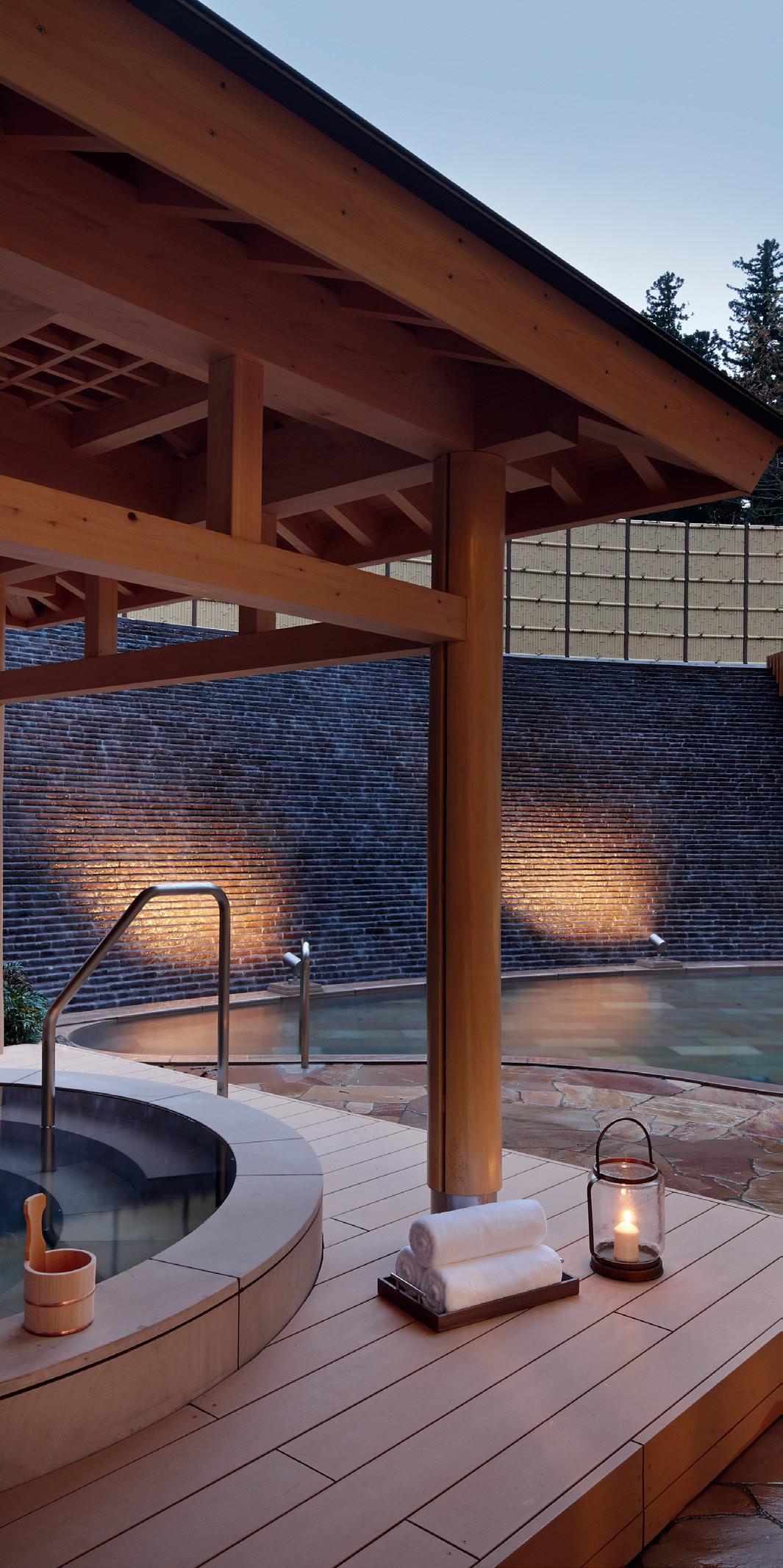

In bustling Niseko, I indulge in another fiery custom with a daily onsen bathe. Niseko is on the north island of Hokkaido, a two-hour flight from Tokyo to New Chitose Airport, plus a two-hour drive. My spa takes place at Hinode Hills Niseko Village, an all-suite hotel and my home for the next four nights.
Located on the western edge of the “Ring of Fire”, a global tectonic belt of volcanoes, Japan is blessed with an abundance of geothermal activity, resulting in tens of thousands of magma-heated, mineral-rich water reservoirs. The steaming pools have long drawn Buddhist monks to rest after long voyages. The hot baths have also drawn seafarers, emperors, samurai, soldiers, commoners and peasants alike.
This remedy to long snowy winters is so deeply rooted in Japanese society that almost every man, woman and child bathes, either in a public onsen, or within the deep baths of their home, every day.
Like most, the Hinode Hills onsen is separated by gender; it also involves stripping off entirely.
The first moments are daunting, reminiscent of the naked-in-front-of-thewhole-school nightmare of my youth, except this time I really am undressed and looking around to follow the lead of those in the know. Through the billowing steam, I discreetly observe and mimic: first, sit on the small wooden stool, wash using the little bucket, avoid splashing others and dry off with a compact towel. Kudos to those who complete the practice with some semblance of grace and composure.
Once clean, I enter the water. The towel, large enough to cover little more than a hand, becomes my shield and drying cloth, and while soaking, I place it on top of my head, as is the custom.
“The weak-alkaline water and gradual heat will moisturise your skin and clear your mind,” a sign above the entry door reads. “Open your mouth and inhale the thick steam. It will soothe your throat.” It did.
The sun was starting to set when I finally emerged, purified, rosy-cheeked and warm inside and out, it’s time for another bowl of chilli noodles.
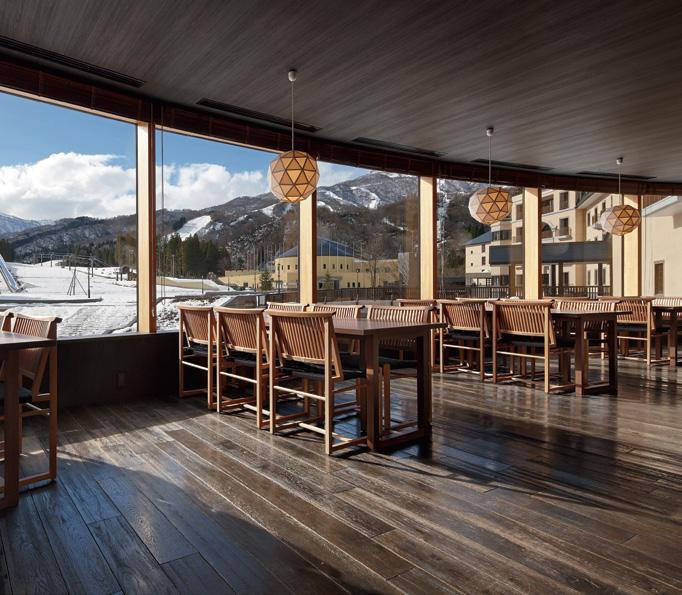
Book your stay here
Named Japan’s Best Ski Resort for Powder by Ski Asia Awards, Lotte Arai on the nation’s west coast is a snowlovers’ luxury utopia. The resort boasts Japan’s largest in-bounds, free-ride terrain; multiple Vietnamese, Italian, Western and Japanese restaurants and bars; an indoor swimming pool, expansive indoor and outdoor onsen facilities; and rooms offering mountain views. Lotte Arai provides a range of onsite après-ski activities, including snow rafting boat rides, snow drive tours and snowmobile adventures.
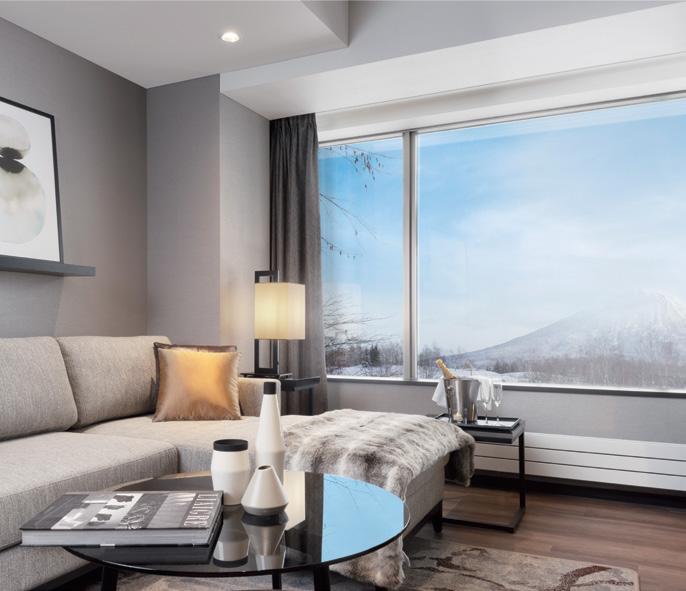
Book your stay here
Studios and one-, two- and threebedroom suites at Hinode Hills Niseko Village blend contemporary elegance with wabi-sabi Japanese aesthetics, featuring fully equipped kitchens and spacious, luxurious living and dining areas. This ski-in, ski-out boutique resort offers The Bistro for breakfast, lunch and dinner, an onsite ski valet and rental space and an in-house onsen, along with access to the benefits of Niseko Village’s integrated resort experience.



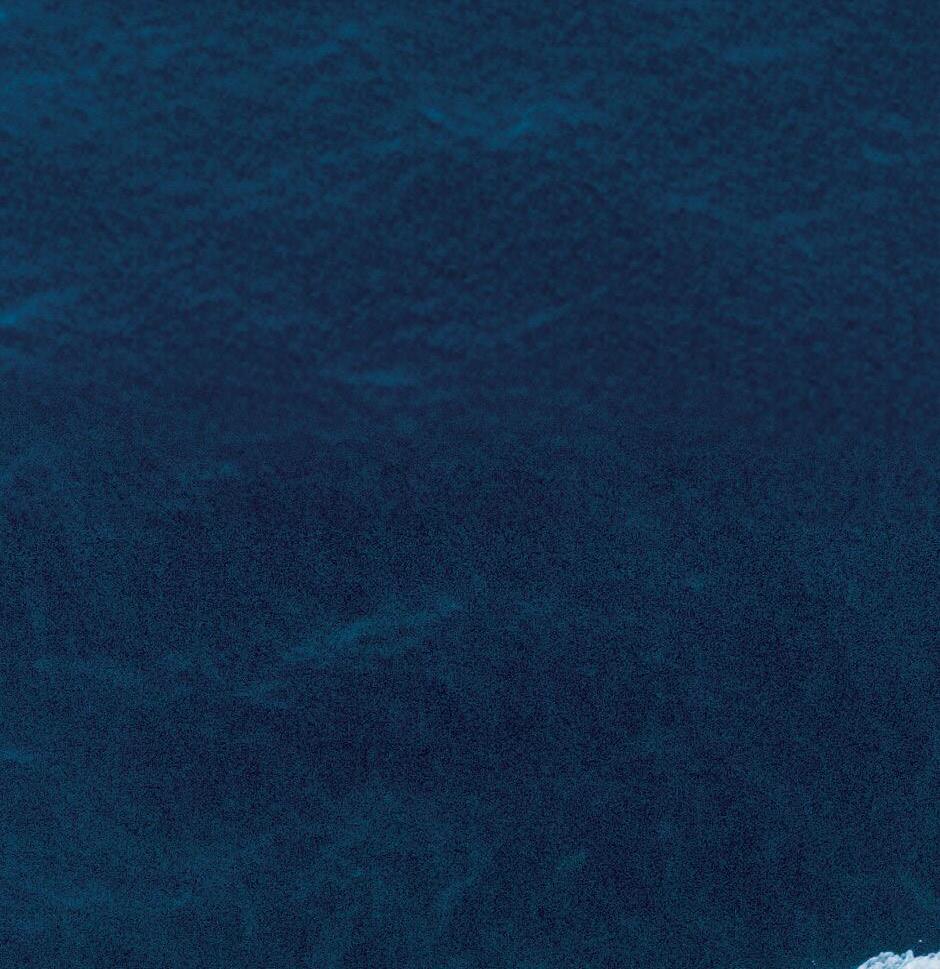
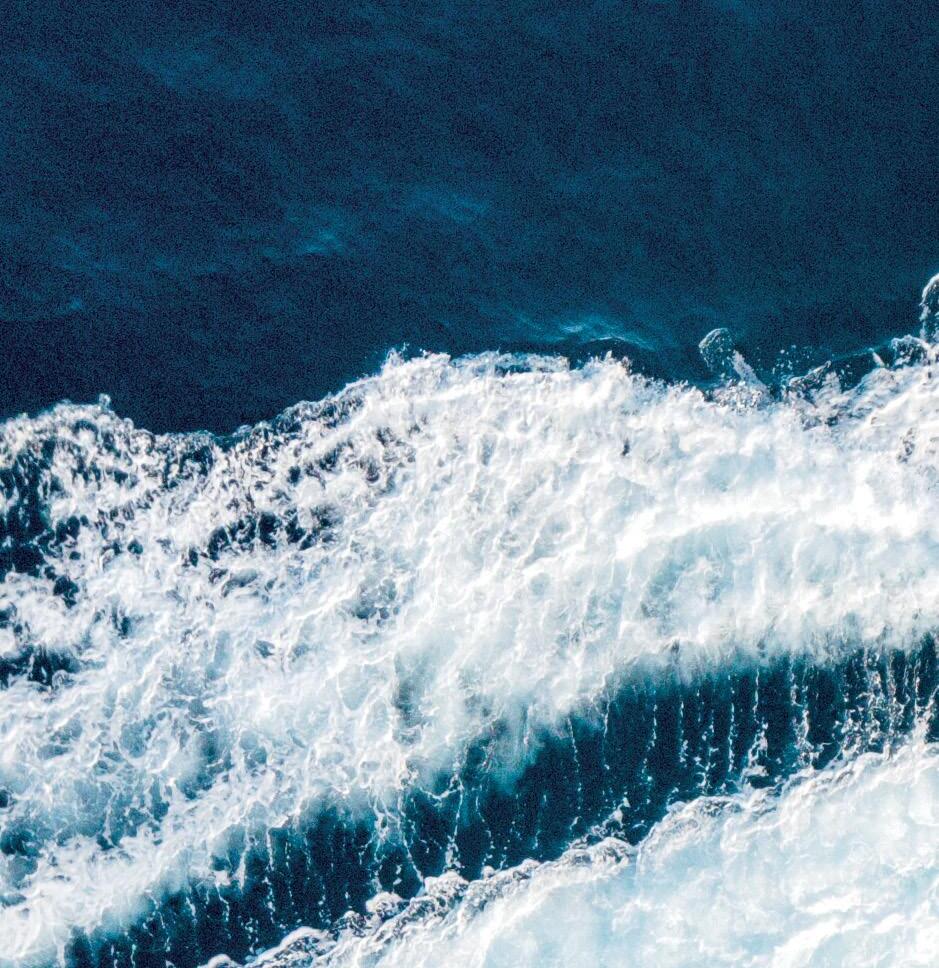
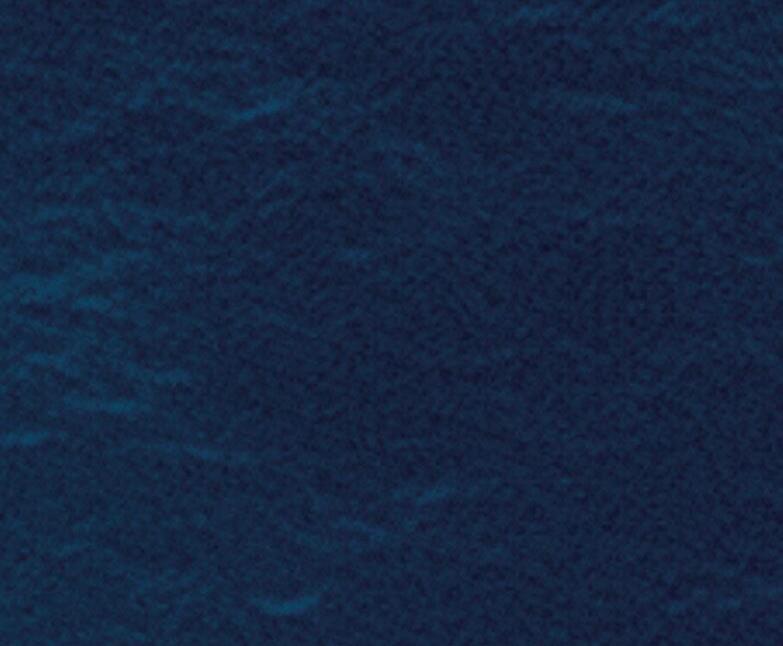

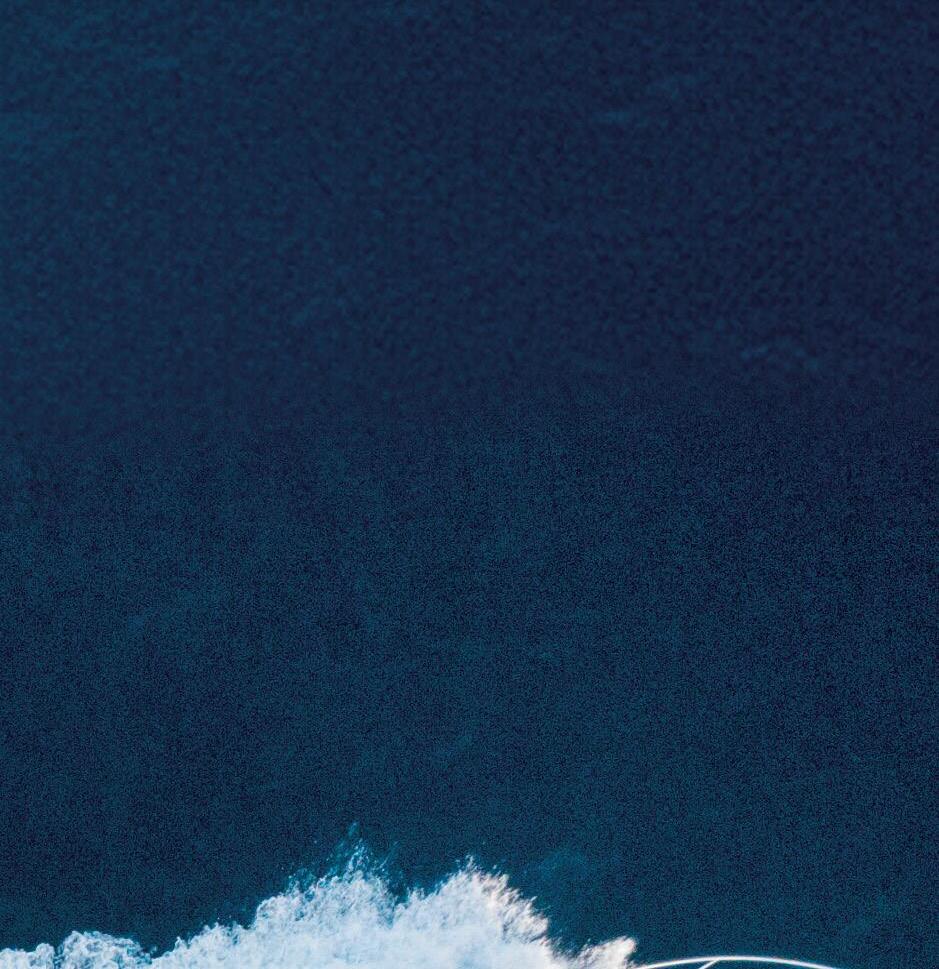
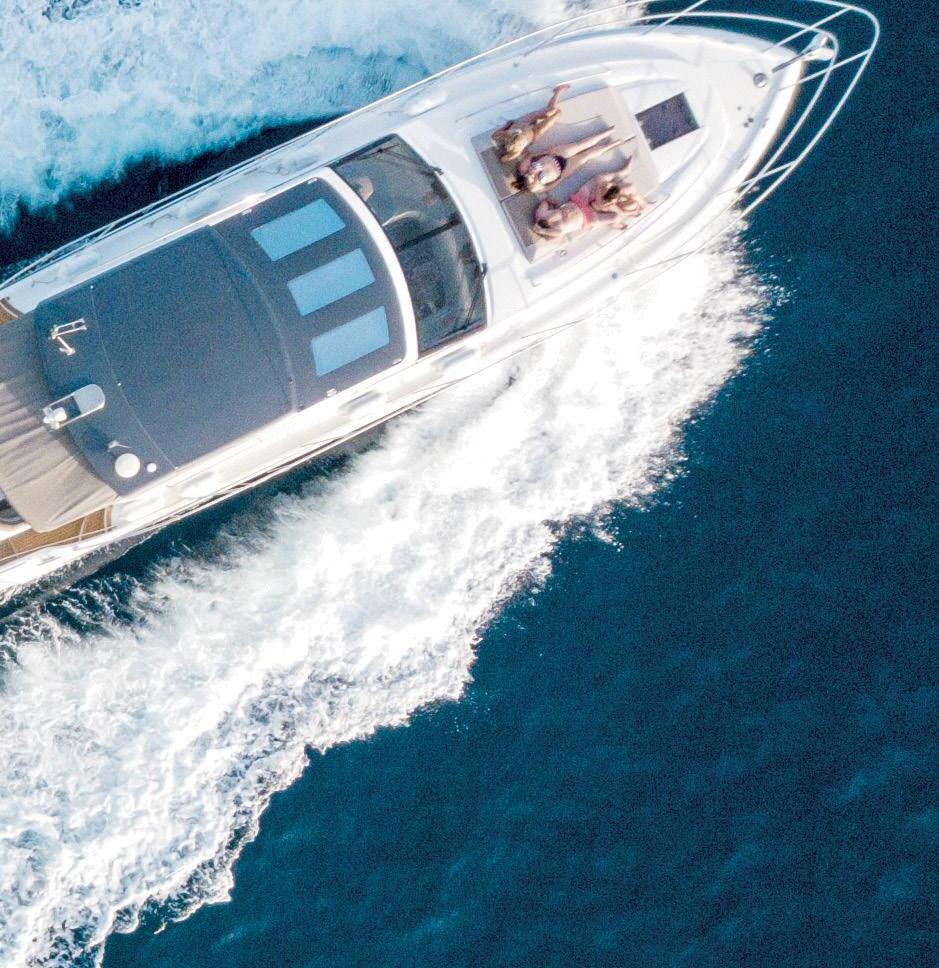
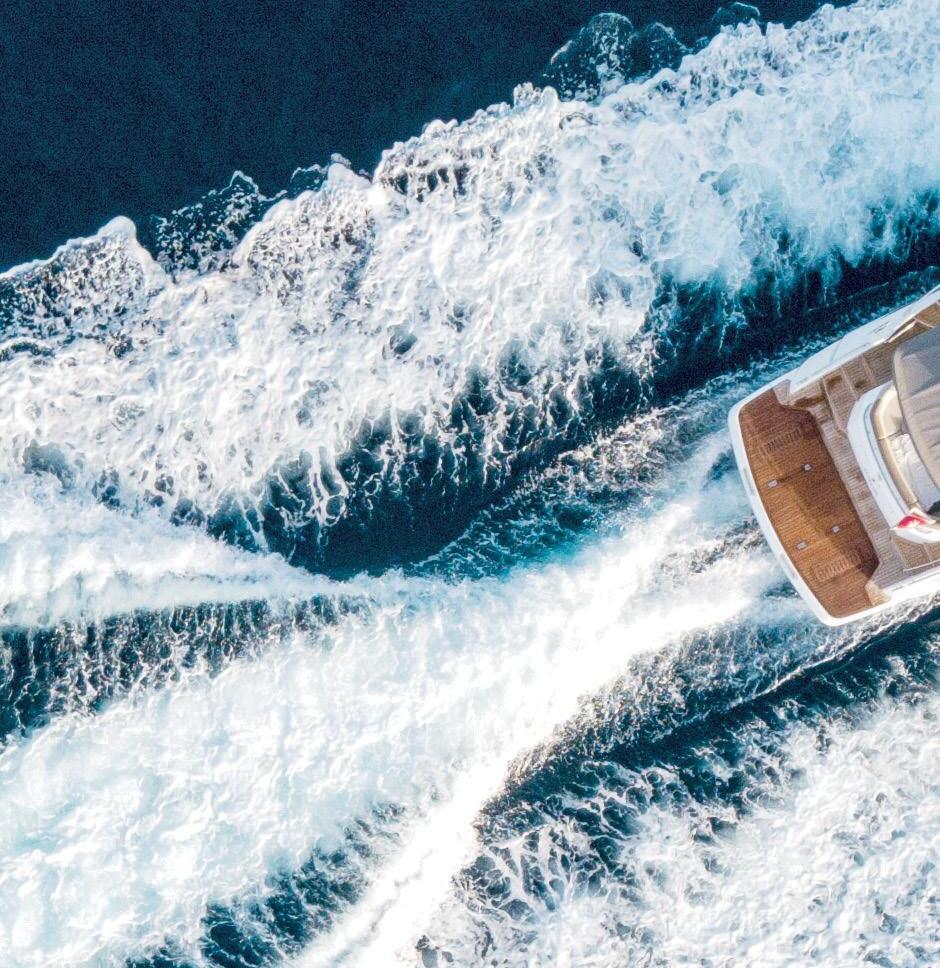

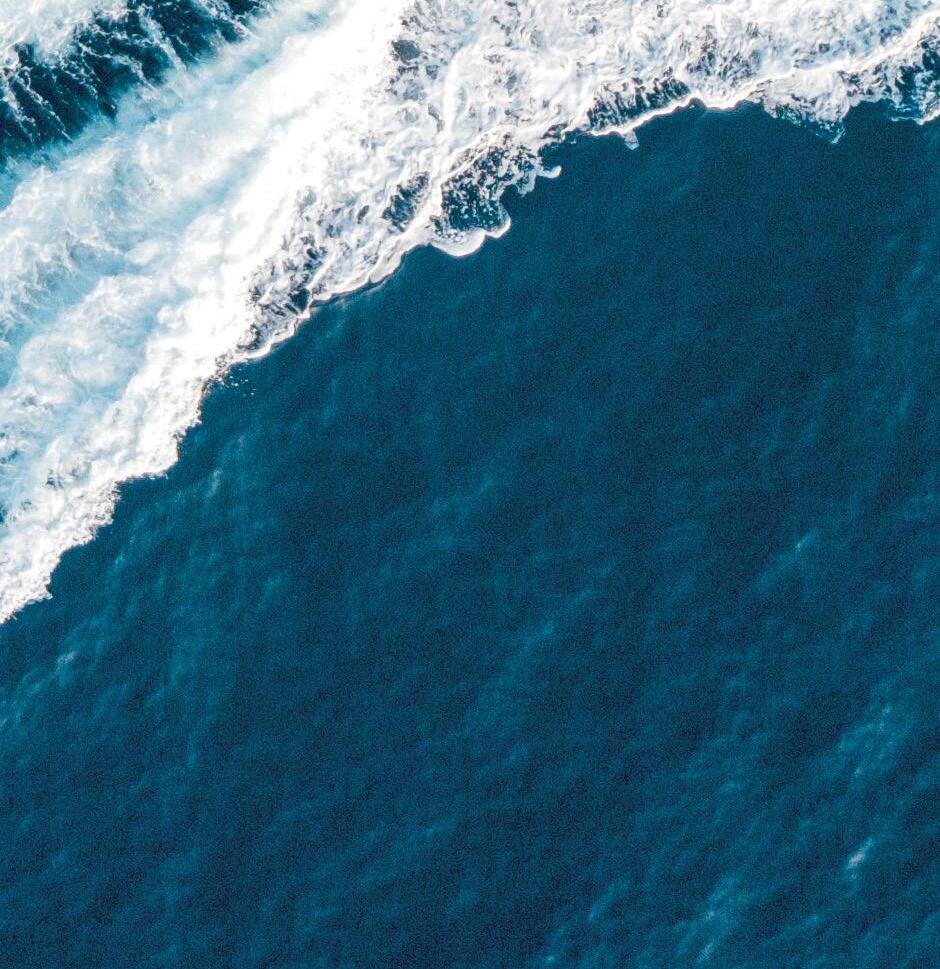
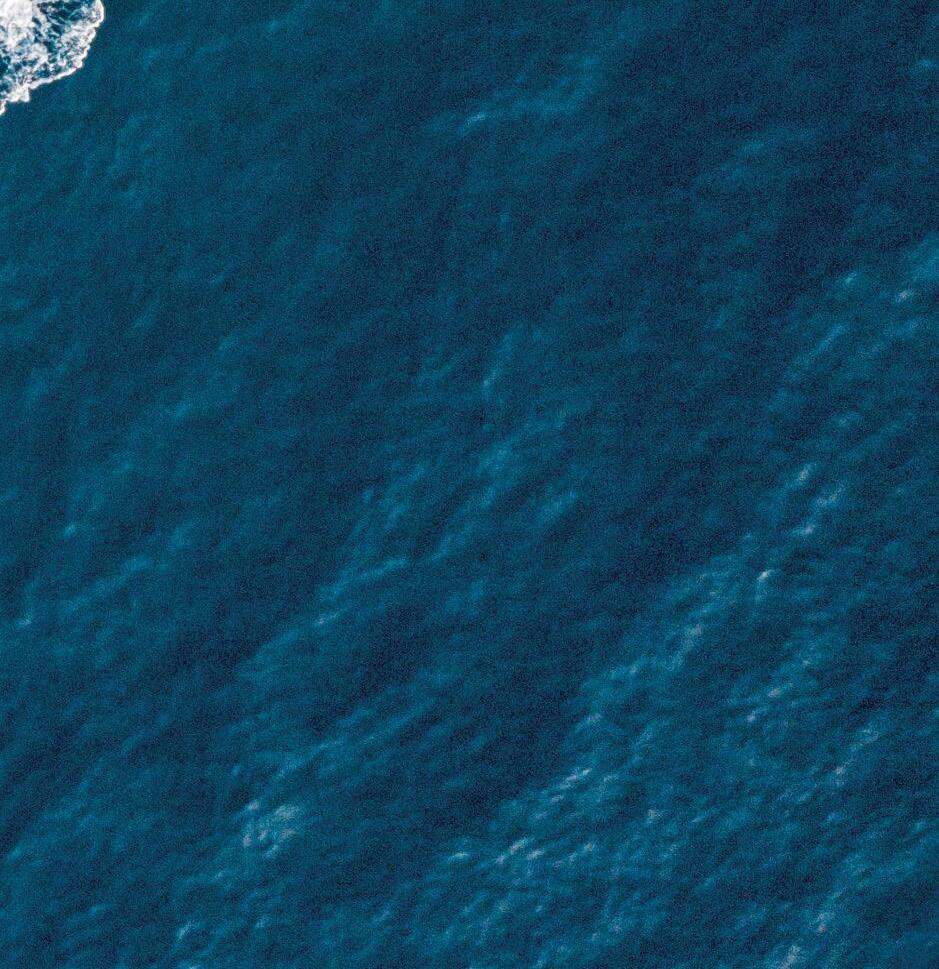

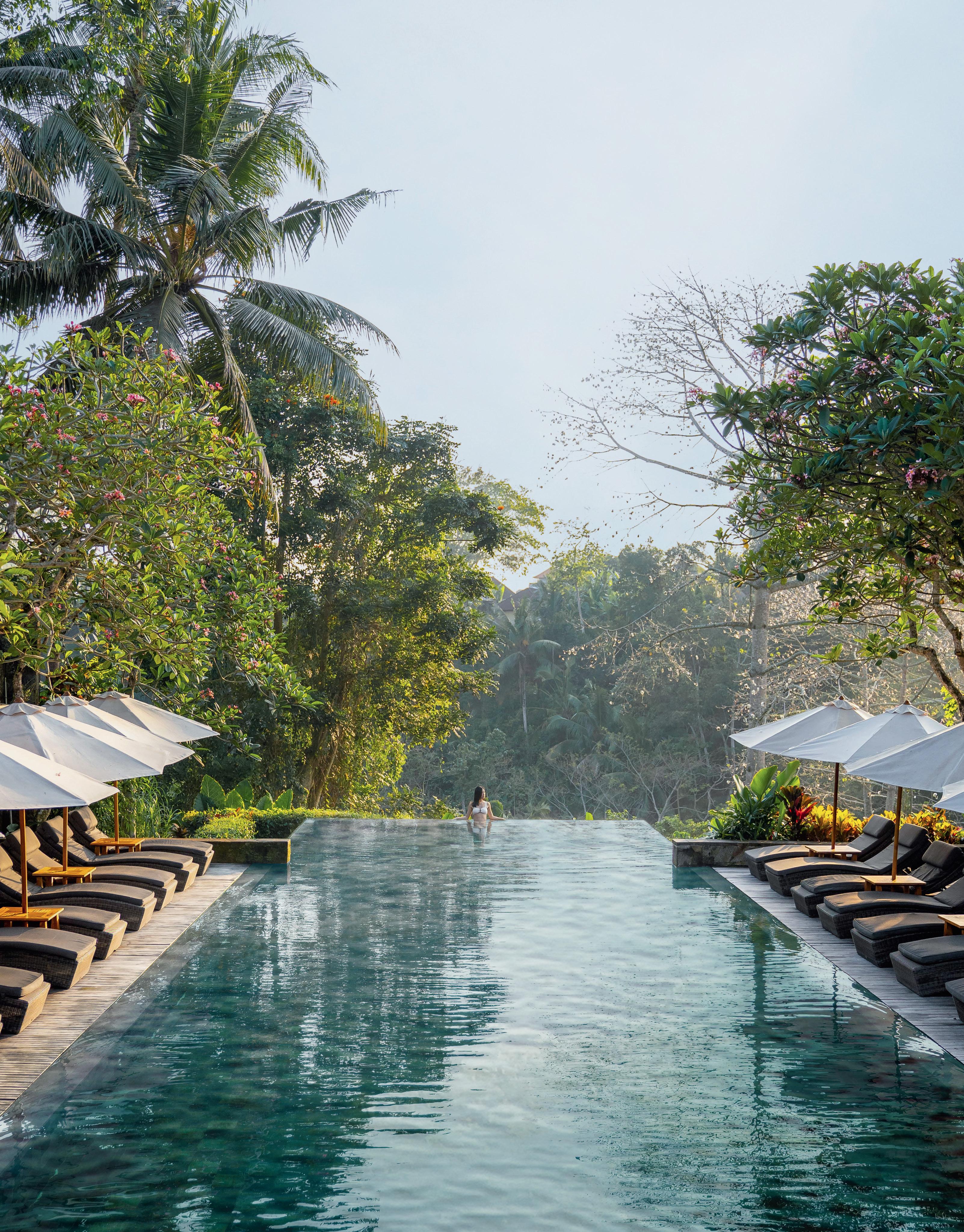
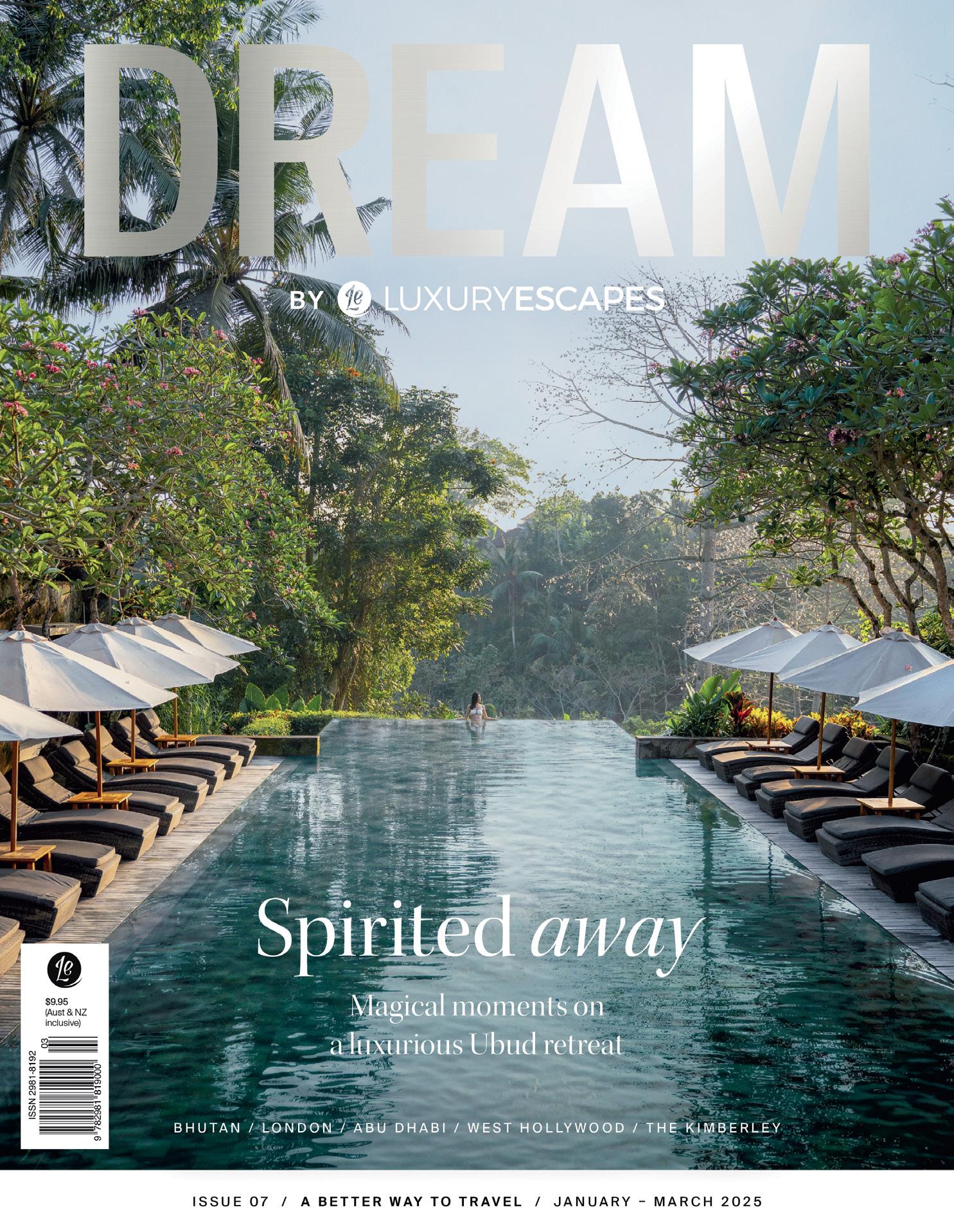
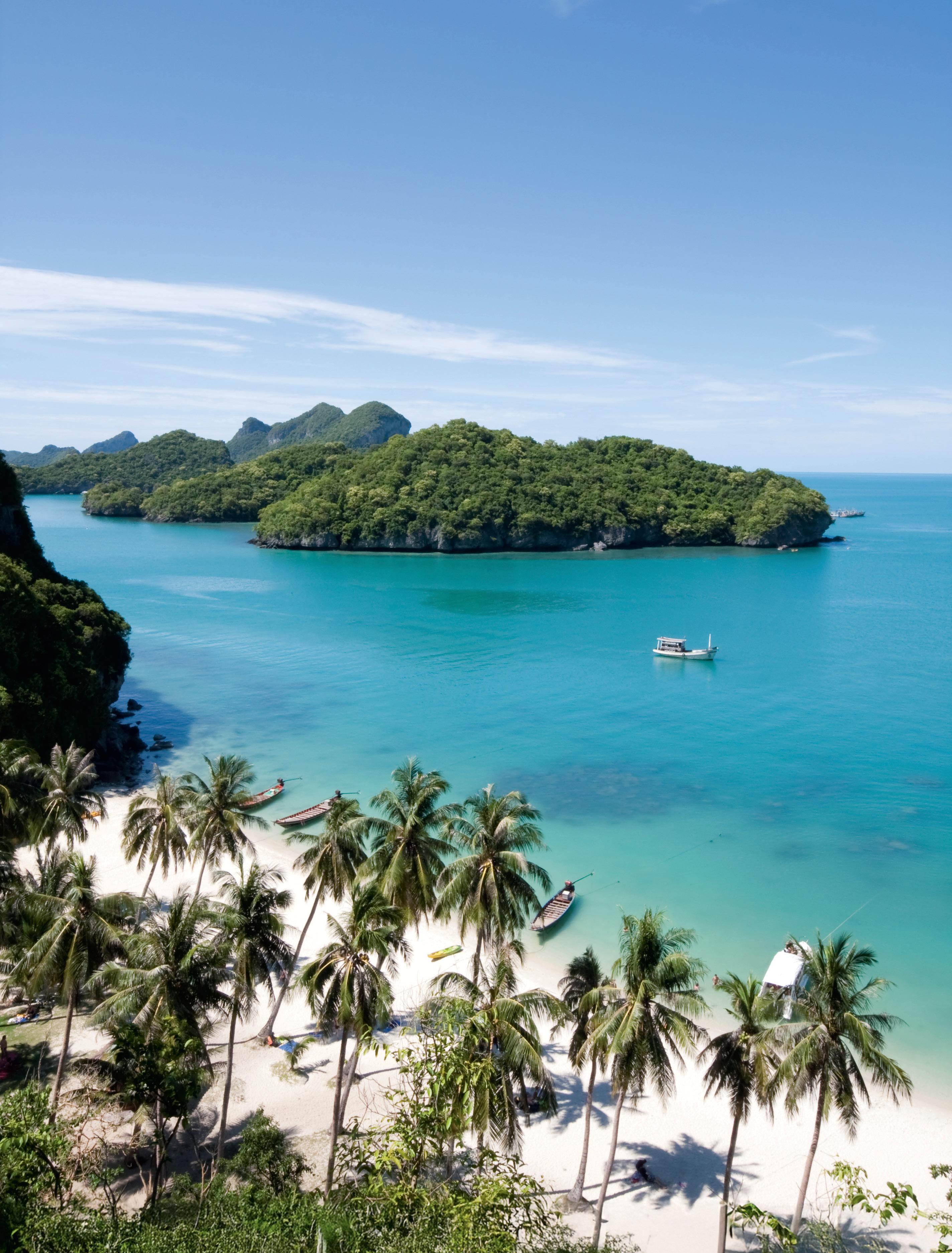
Rich culture, breathtaking beaches, vibrant marine life and luxury resorts – Koh Samui has all this and more, making it the ideal destination for a sun-soaked beach getaway.
A slice of paradise in the Gulf of Thailand, Koh Samui boasts pristine coastlines that melt into lush rainforestcovered hills, and the island maintains a laidback charm that invites visitors to kick their shoes off and unwind. Cultural treasures await around every corner, from towering golden Buddha statues to intricate, mosaiccovered temples. With an array of luxury hotels, you
can holiday stress-free: lounge on secluded beachfronts, dive into crystal-clear waters and indulge in the thriving fine-dining scene. When the sun sets, explore vibrant night markets and lively local towns, relaxing at rustic beach bars with a pina colada in hand. Whatever you’re looking for, Koh Samui truly has something for every traveller.
Here is our insider guide to the perfect island escape.
A kaleidoscope of colour on Hyatt Regency Koh Samui’s beachfront, SESUN Grill & Beach Bar is an ode to Mediterranean flavours. Think yellowtail kingfish carpaccio in a zesty sauce, perfectly seared yellowfin tuna and a detox salad with a uniquely sweet citrus dressing, all paired with stunning Gulf of Thailand views.
Guests may come to The Cocoon for the panoramic island and ocean views – a result of the restaurant’s prime hillside location –but they stay for the menu and the ambience. Featuring European classics, Thai favourites, tropical cocktails and live music, it’s the perfect spot to while away an afternoon.
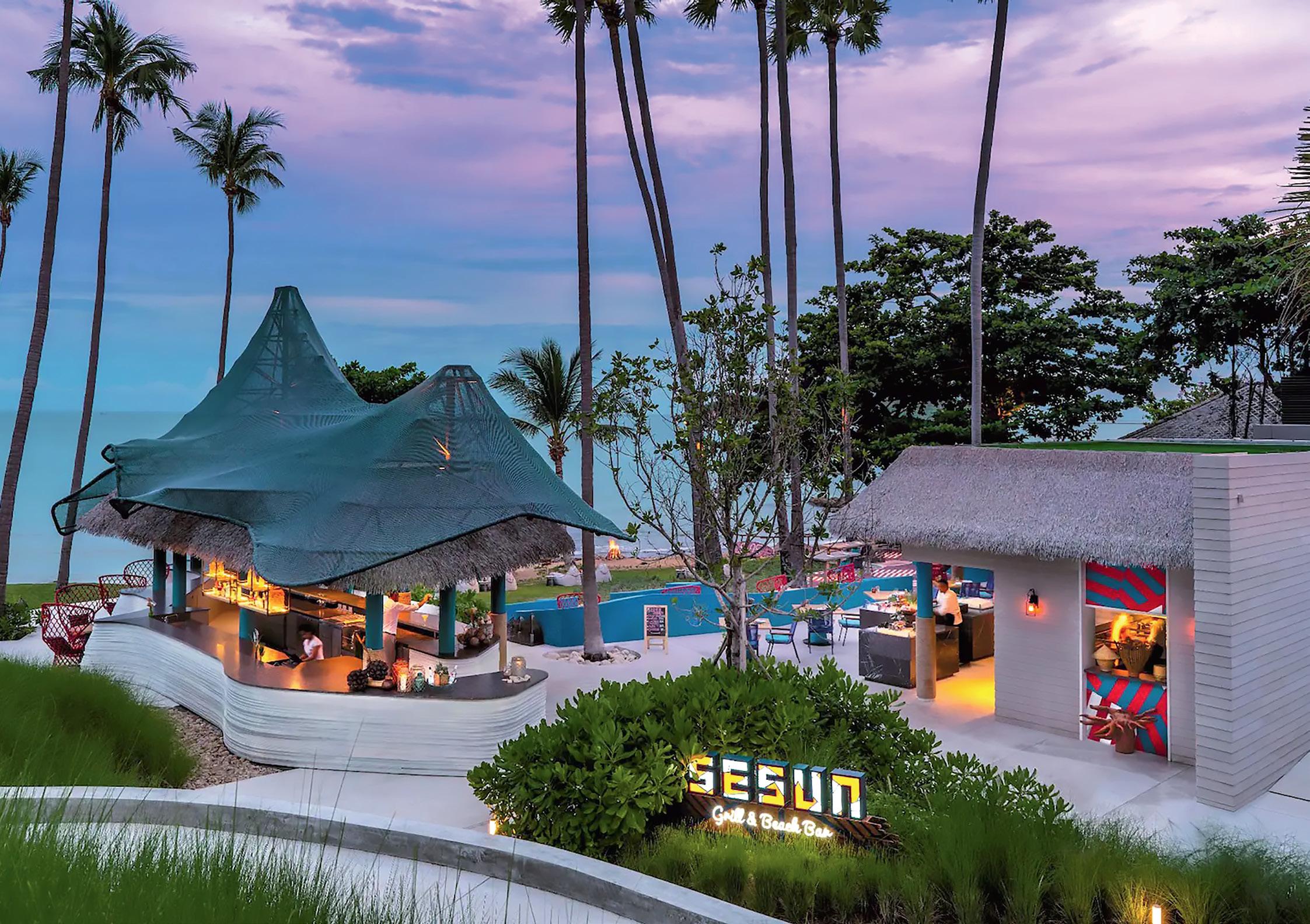
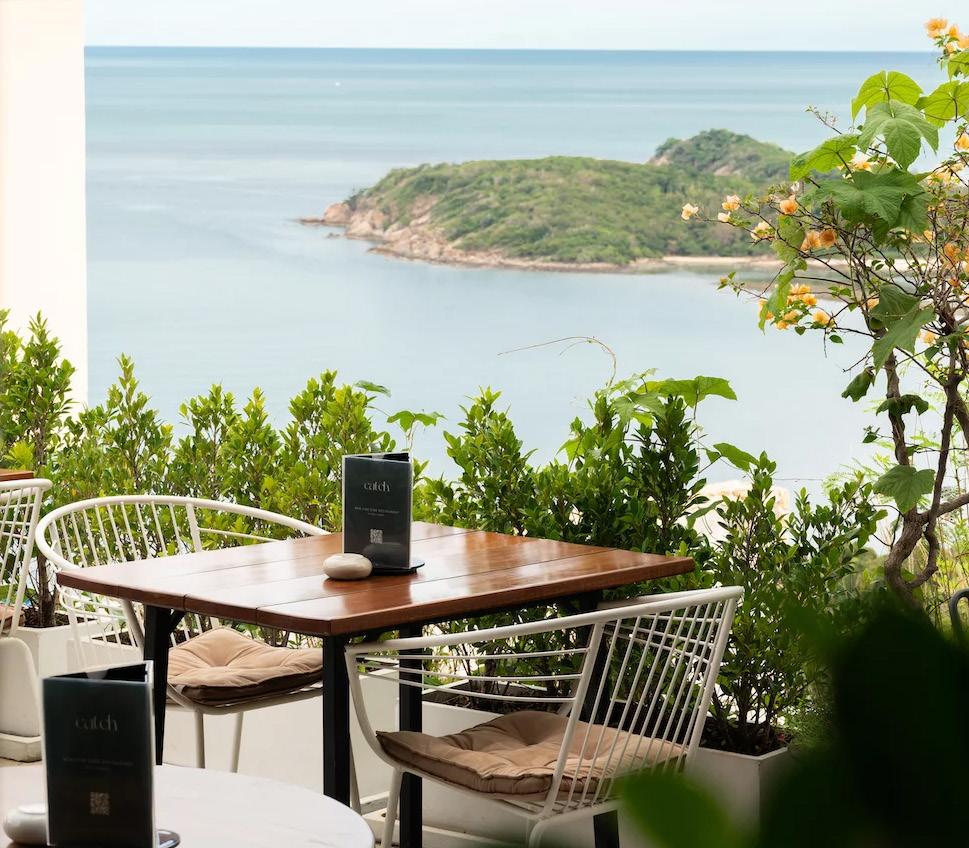

Perched on the beachfront at W Koh Samui, NAMU offers Japanese dining paired with traditional Thai ingredients. Marvel at the sunset while Chef Takayuki Ono serves up melt-in-your mouth salmon sashimi, mushroom miso broth with flaky fish and tender steak with a selection of sauces, ensuring every bite is unique.

The Michelin Guide’s first Bib Gourmand restaurant in Koh Samui, Kapi Sator serves authentic Southern Thai food using locally sourced ingredients. While seafood specials are based on the daily catch, flavour-packed staples like Wagyu beef roasted curry and an eight-hour, slow-simmered pork stew are hard to resist.
With an open-air design stretching out to the sea, Nahm boasts unbeatable sunset views. Watch the sky melt into hues of purple, orange and pink as you dine on shared plates like pork dumplings in shrimp chili oil and salmon ceviche paired with passionfruit and a coriander marinade.
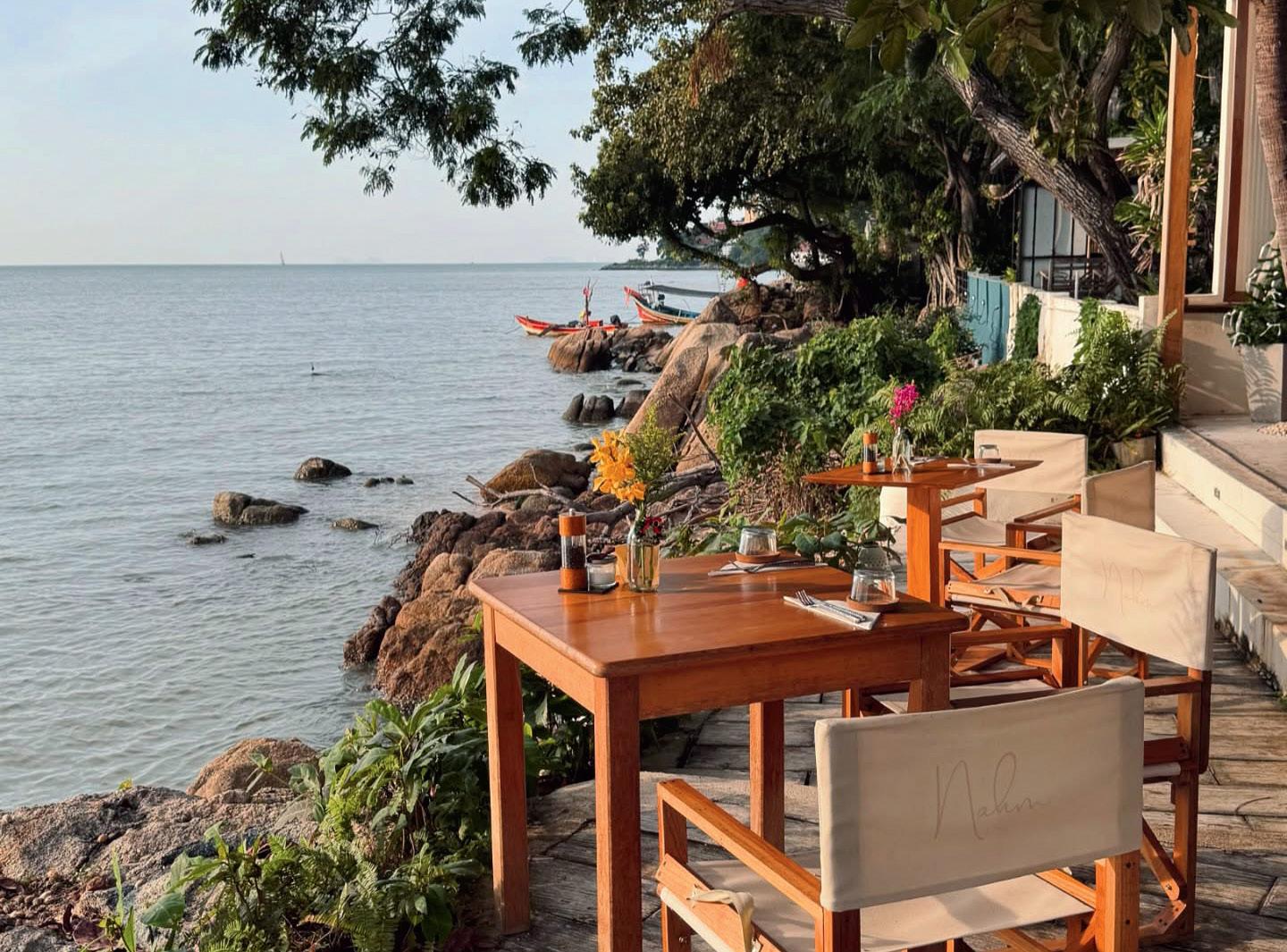
With a prime beachside location in Fisherman’s Village, Coco Tam’s features a double-storey open-air design, with a bar serving up tropical cocktails. Lounge on bean bag sun beds or grab a table to snack on light bites. Be sure to visit at night to see arguably the island’s best fire show.
Despite three distinct seasons – dry season, hot season and rainy season – Koh Samui’s weather is largely warm and full of sunshine, ensuring guests can visit at any time of year for a relaxing beach holiday.
Dry season is generally considered the best time to visit Koh Samui. While the sun shines consistently and rainfall is minimal, the heat is more moderate and light winds lead to cooler days, the perfect conditions for lounging comfortably on the beach. Visit for Christmas or New Year and enjoy beachfront parties and fireworks that often last late into the night. Chinese New Year is also celebrated during this period. While it isn’t a public holiday in Thailand, the streets are nonetheless flooded with lively parades, performances and parties.
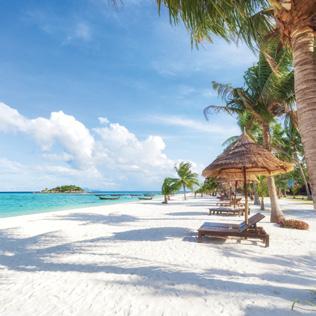

During hot season, temperatures rise to their peak, but the island’s wealth of watersports ensures visitors can easily cool off. Jet skiing, paddleboarding and snorkelling are especially popular during this time, with warm waters keeping you comfortable all day. In April, Songkran begins – a three-day festival celebrating the Thai New Year. While religious ceremonies take place in the temples, street parties welcome a new era with playful water fights. In late May, Samui Regatta draws over 500 competitors for yacht races and beach parties.
While this season brings more rainfall, the days remain pleasantly warm. Showers are typically brief, leaving ample dry moments well suited to exploring outdoors. Na Muang Waterfall and the lush jungle landscape surrounding it are especially impressive during this time. In November, Loy Krathong honours the goddess of water with a breathtaking celebration. Locals and visitors release floating lanterns onto the water, lighting up rivers and canals in a mesmerising display.
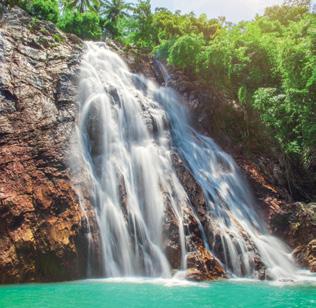
Enter a sanctuary far removed from the everyday at W Koh Samui, where you’re greeted on arrival by a striking circular water feature that blends seamlessly with the horizon from the lobby’s elevated position. Perched on the island’s northern end, Thailand’s first W hotel features 74 private pool villas cascading down the hillside to a secluded stretch of golden sand. Savour upscale Thai flavours and international bites at two restaurants and sip signature cocktails while watching the nightly fire show at WOOBAR. With a “whenever, wherever” service philosophy, your every need is catered to, no matter how big or small.

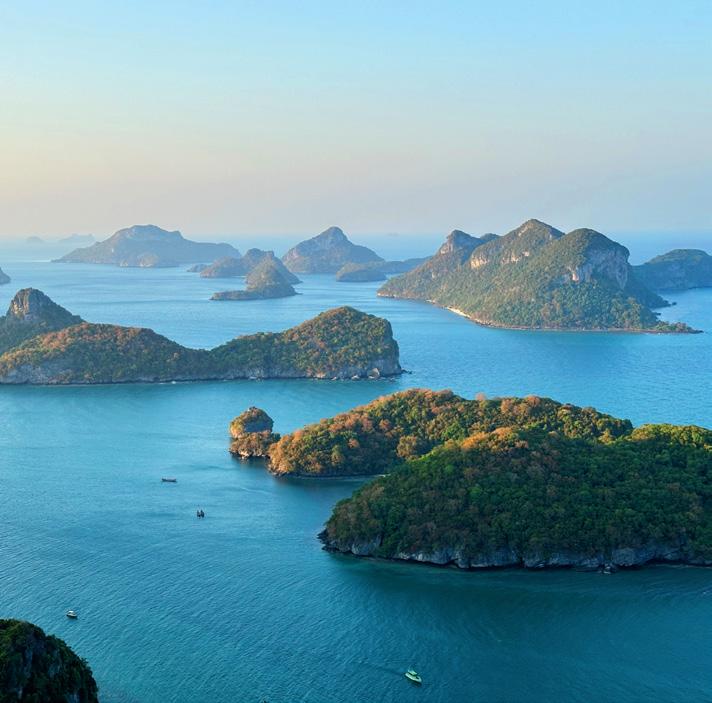
While Koh Samui is a popular destination all on its own, it’s also the largest in an archipelago comprising more than 80 islands, allowing you to easily explore beyond Koh Samui’s shores.
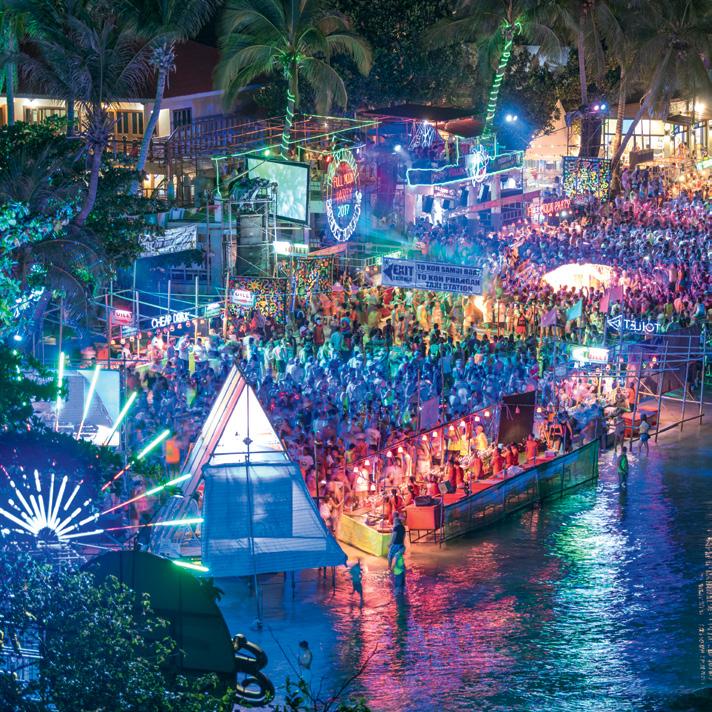
Just a 30-minute ferry ride away lies Koh Phangan, known for its thriving wellness scene as well as the famous Full Moon and Half Moon beach parties. Visit to dance the night away, or spend your time lounging at secluded resorts that offer an extra dose of peace and quiet for your beach holiday.
A relatively new addition to the island’s northern shores, Explorar Koh Samui promises immersive relaxation with an adults-only retreat. Re-opened just two years ago after extensive refurbishments, the resort embodies a unique ethos of flexibility, radical self-care and modern wellness. An onsite co-working space allows guests to merge business and pleasure, extending their stay in idyllic island paradise. Whether working or not, enjoy the freedom to unwind in style: sample Mediterranean flavours at beachfront Odyssey restaurant, sip cocktails while you escape the heat at the swim-up bar or lounge on the beach, just steps from the central infinity pool.
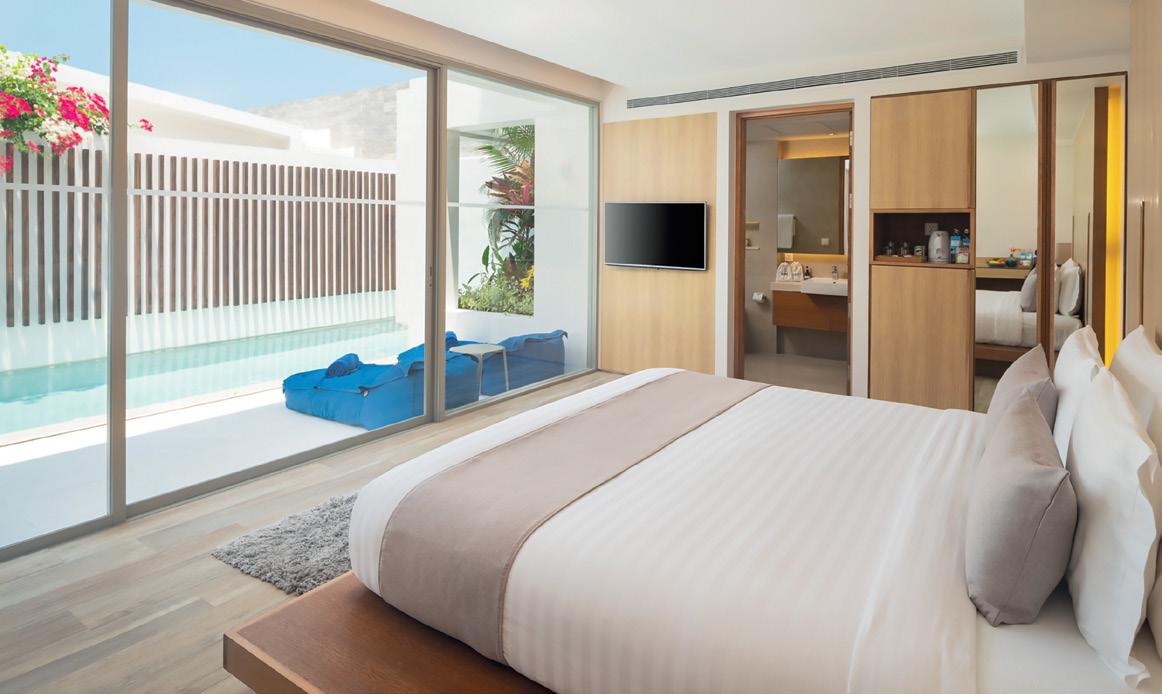
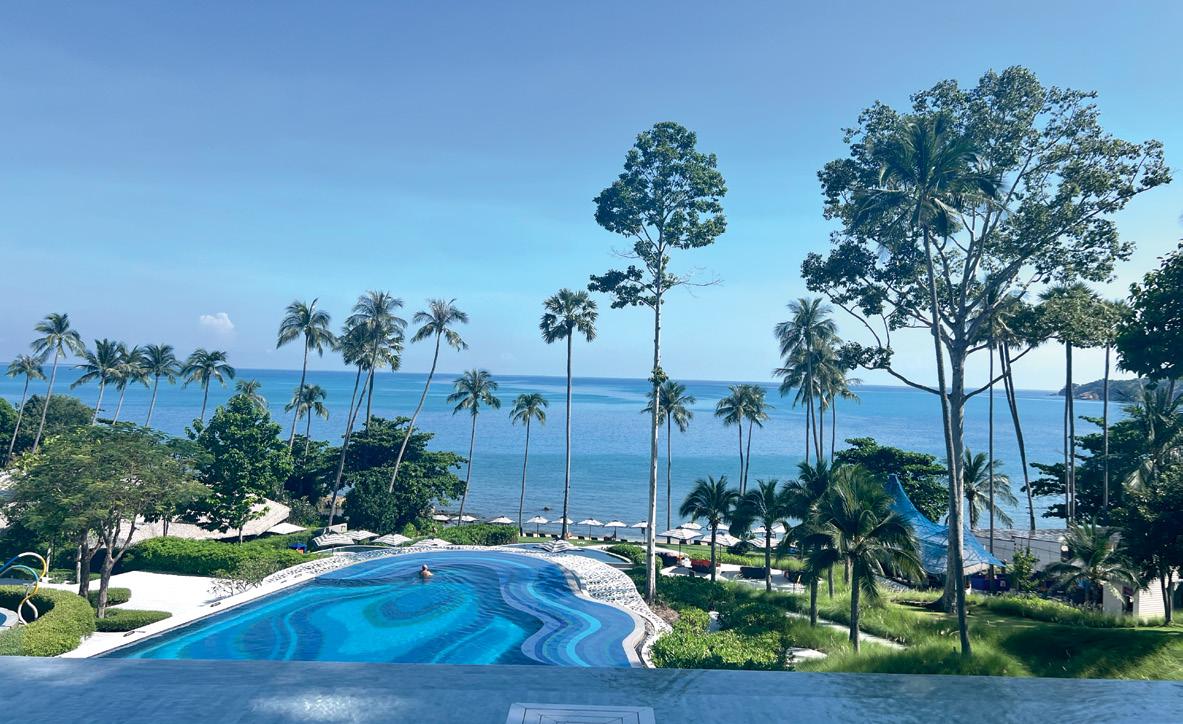
Minutes from the famous shores of Chaweng Beach lies Hyatt Regency Koh Samui. Here, sleek contemporary design merges seamlessly with striking ocean views and a distinct family-friendly vibe. Emerge from the lobby’s minimalist luxury and follow a winding path through manicured gardens down to the isolated beach, strolling past tiered pools inspired by the island’s Na Muang Waterfall. Families can send little ones to the onsite kids’ club while couples unwind by the adults-only pool. A visit to Veriō Spa is a must, where tailored wellness programs allow you to leave the world behind as you nourish your body, mind and spirit.
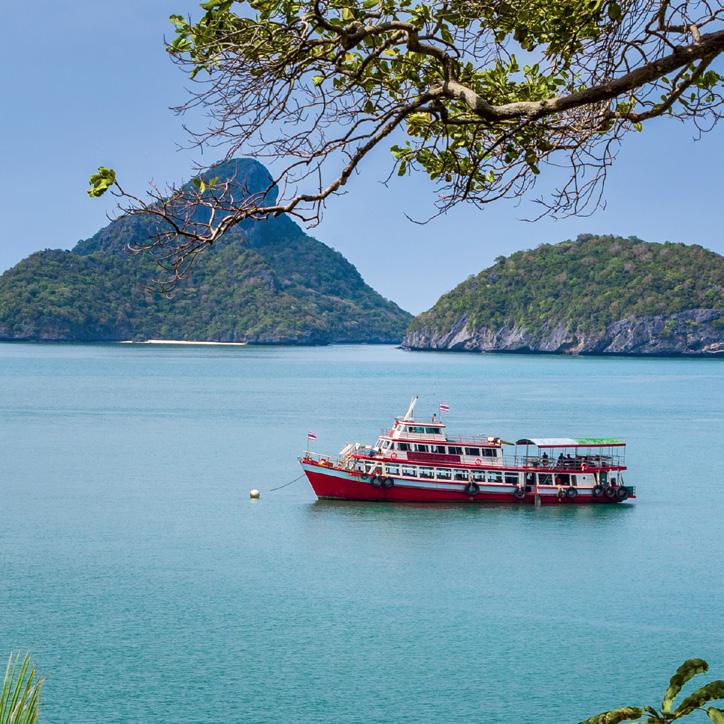
Ang Thong National Marine Park features 42 largely uninhabited islands. Hop aboard a boat and spend a full day marvelling at the untamed natural beauty. Kayak through crystal-clear waters past towering limestone cliffs, discover hidden emerald lagoons and snorkel amid thriving marine life.
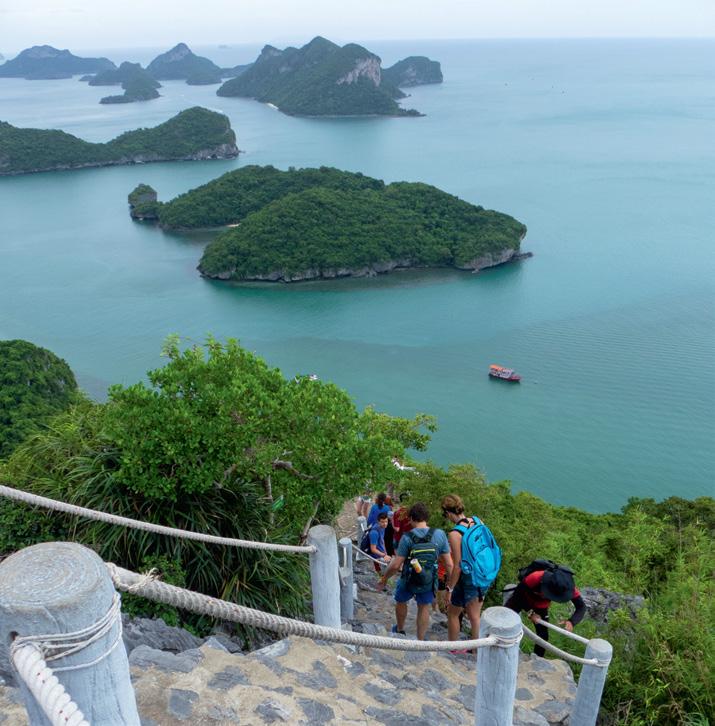
On land at Ang Thong National Marine Park, you can climb to the peak of natural mountains and soak in stunning views of the surrounding islands or relax on whitesand beaches with the ocean lapping at your toes.
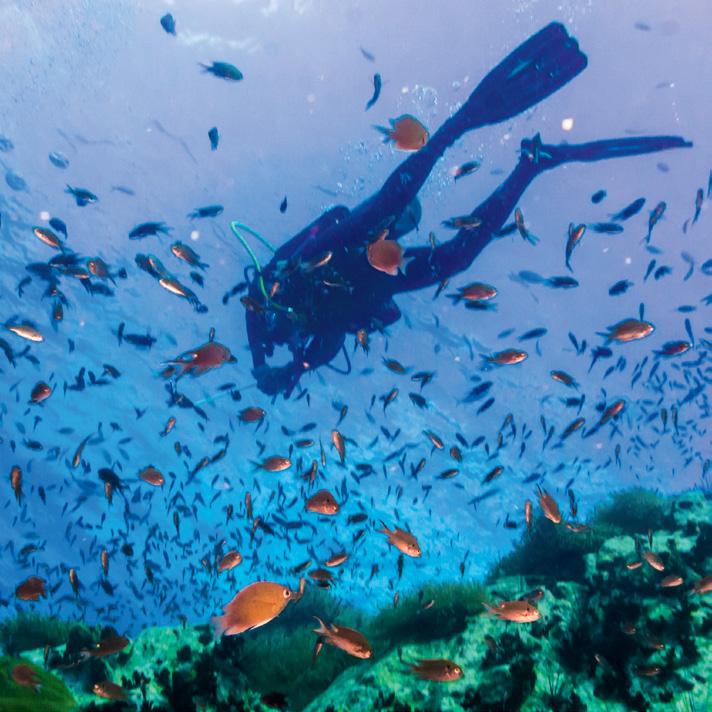
Often visited in conjunction with one another, Koh Tao and Koh Nang Yuan are known for their colourful coral reefs and abundant marine life. Take a speedboat from Koh Samui and spend the day snorkelling in crystalline water and exploring these smaller islands.
Easily one of the island’s most recognisable tourist attractions, Wat Phra Yai temple features a towering golden Buddha first constructed in 1972. Make your way up the stairs – guarded by intricate mosaic dragons – and marvel at stunning ocean and island views from the platform at the statue’s base.
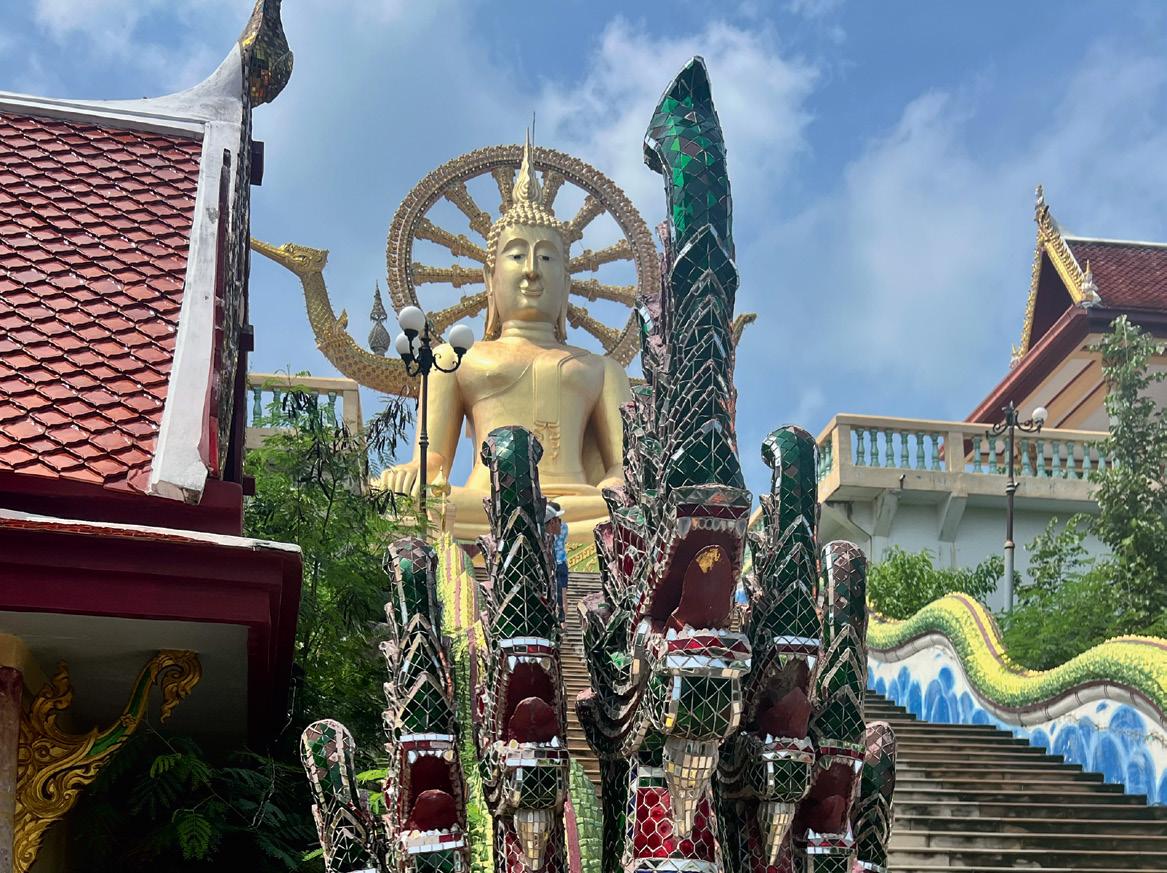
Take culinary exploration to the next level with local guidance on the methods behind Thai cooking. With individual burners promising a hands-on experience, learn to create popular bites like fried wontons and green papaya salad, along with traditional dishes not often served in restaurants, like a flavour-packed local seafood soup.
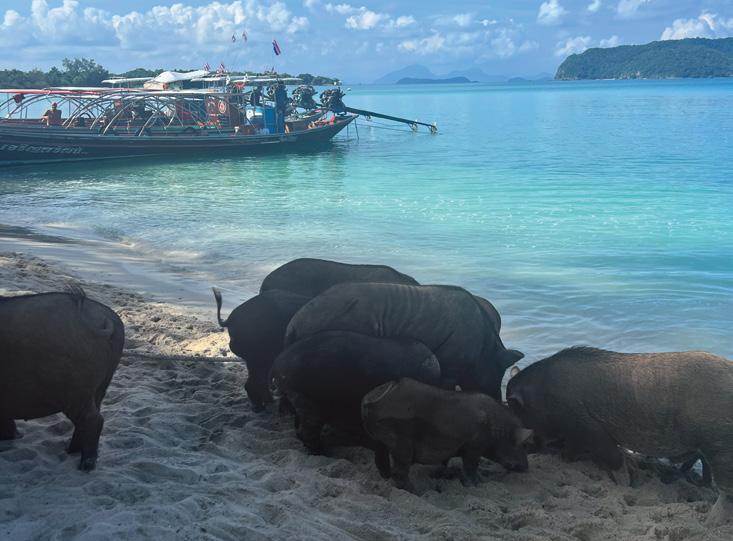
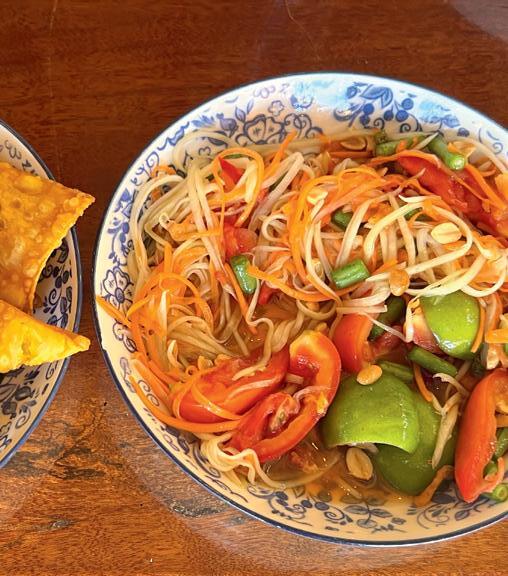
On Koh Madsum island just off Koh Samui’s southern coast, you’ll find pristine soft sands, crystal-clear water and dozens of rumbling pigs. On their idyllic island home, these gentle creatures spend their days napping in the sun, swimming in the ocean and following visitors around on the hunt for food.
FAMILY AFFAIR:
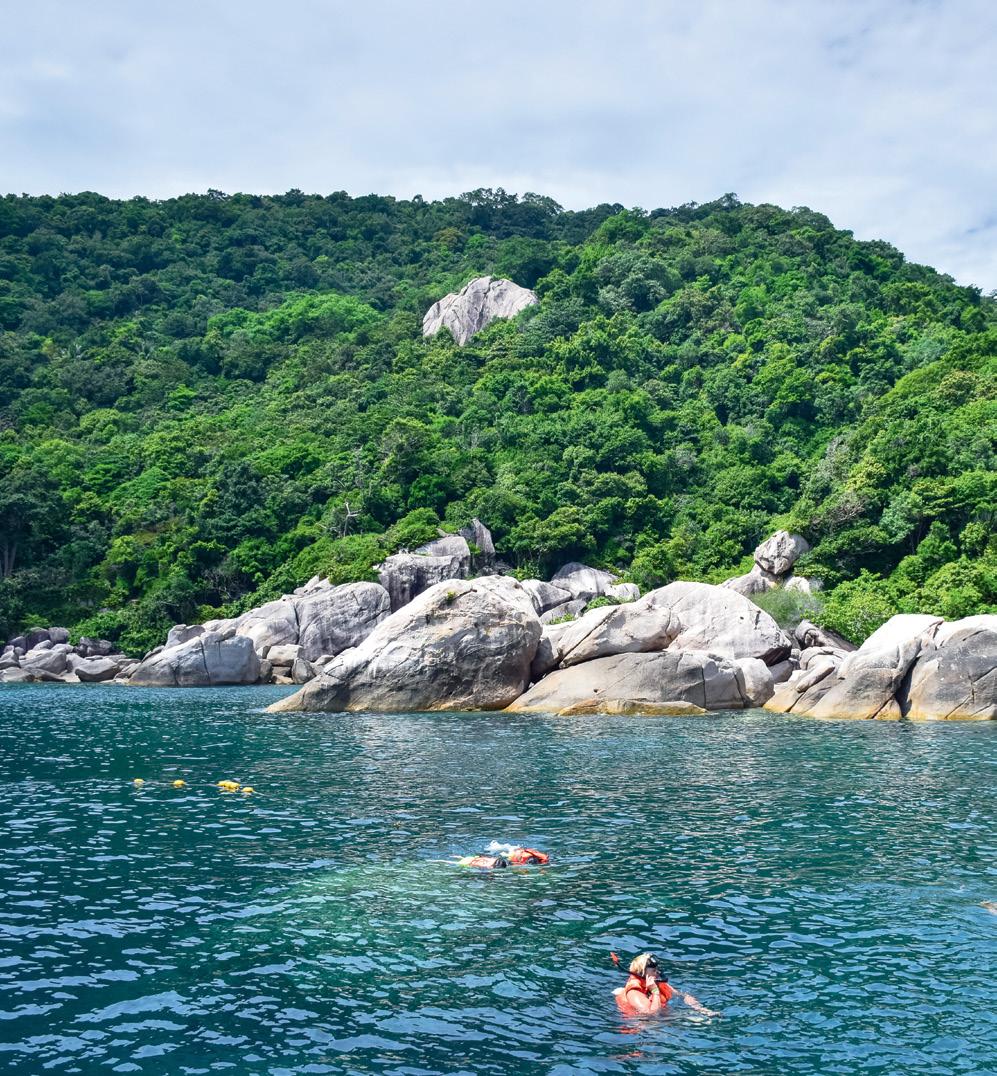
Koh Samui is widely recognised as one of Thailand’s most family-friendly destinations. Rather than bustling cities and busy clubs, this island features peaceful small towns and laidback beach bars, making it an ideal retreat for travellers of all ages.
Animal-loving little ones will adore a visit to Samui Elephant Sanctuary, a haven set in lush forested land. Here, these gentle giants roam freely, cool off in the mud and rumble through the trees. Guests can feed the elephants and observe their natural behaviour in a truly unforgettable experience. For adventure-seekers, a quad biking tour through the jungle is a must. Younger children can ride as passengers while older kids can take the wheel as you navigate dirt roads lined with towering palm trees, seeking out hidden waterfalls.
On hot days, cooling off in the ocean is a must. Thankfully, a perfect beach day is on the cards for the whole family. With its soft, pristine sands and calm, shallow waters, the island’s beaches are perfect for little ones to splash around safely. Alternatively, you can explore further afield with guided tours that take you beyond Koh Samui’s shores. Hop on a boat and venture to nearby islands, where you can lounge on the sand or hike up to breathtaking viewpoints. For a full-day getaway, visit the incomparable Ang Thong Marine Park, where older kids can snorkel and uncover the wonders beneath the waves.
While the island has plenty to offer, you don’t need to travel far for family fun. Many resorts on Koh Samui offer kids’ clubs packed with engaging activities. While little ones make friends and learn about the island under the care of local experts, parents can steal a moment of relaxation, perhaps with a refreshing drink in hand.
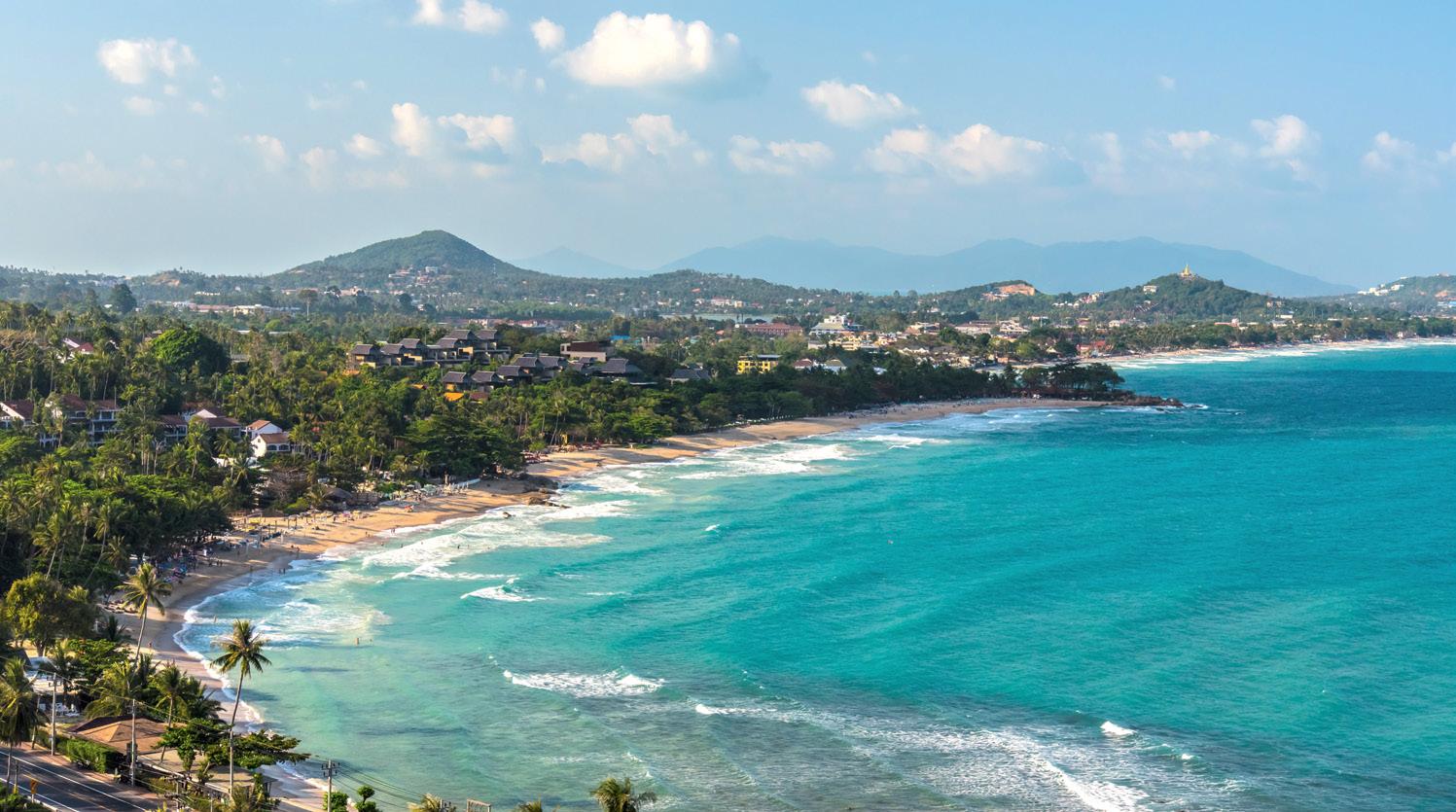
No trip to Koh Samui is complete without relaxing on its stunning beaches. Chaweng Beach is the most popular and best suited to those seeking nightlife or entertainment. For a quieter experience, visit the serene Coral Cove Beach or expansive Maenam Beach, known for its pristine sand and gentle water.
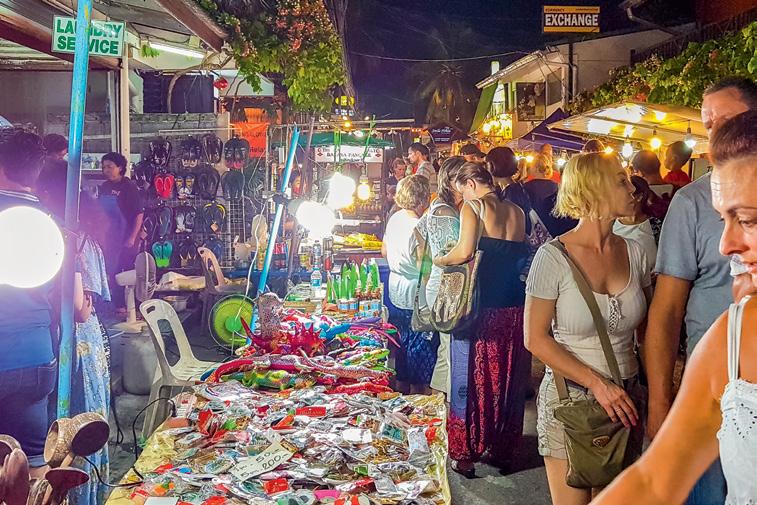
Built over a lake, Wat Plai Laem features a collection of statues and shrines, including an 18-armed effigy of Guanyin, the Goddess of Mercy and Compassion. Marvel at the buildings’ intricate designs, and keep your eye out for local wildlife, including turtles, fish and the massive Asian water monitor lizard.
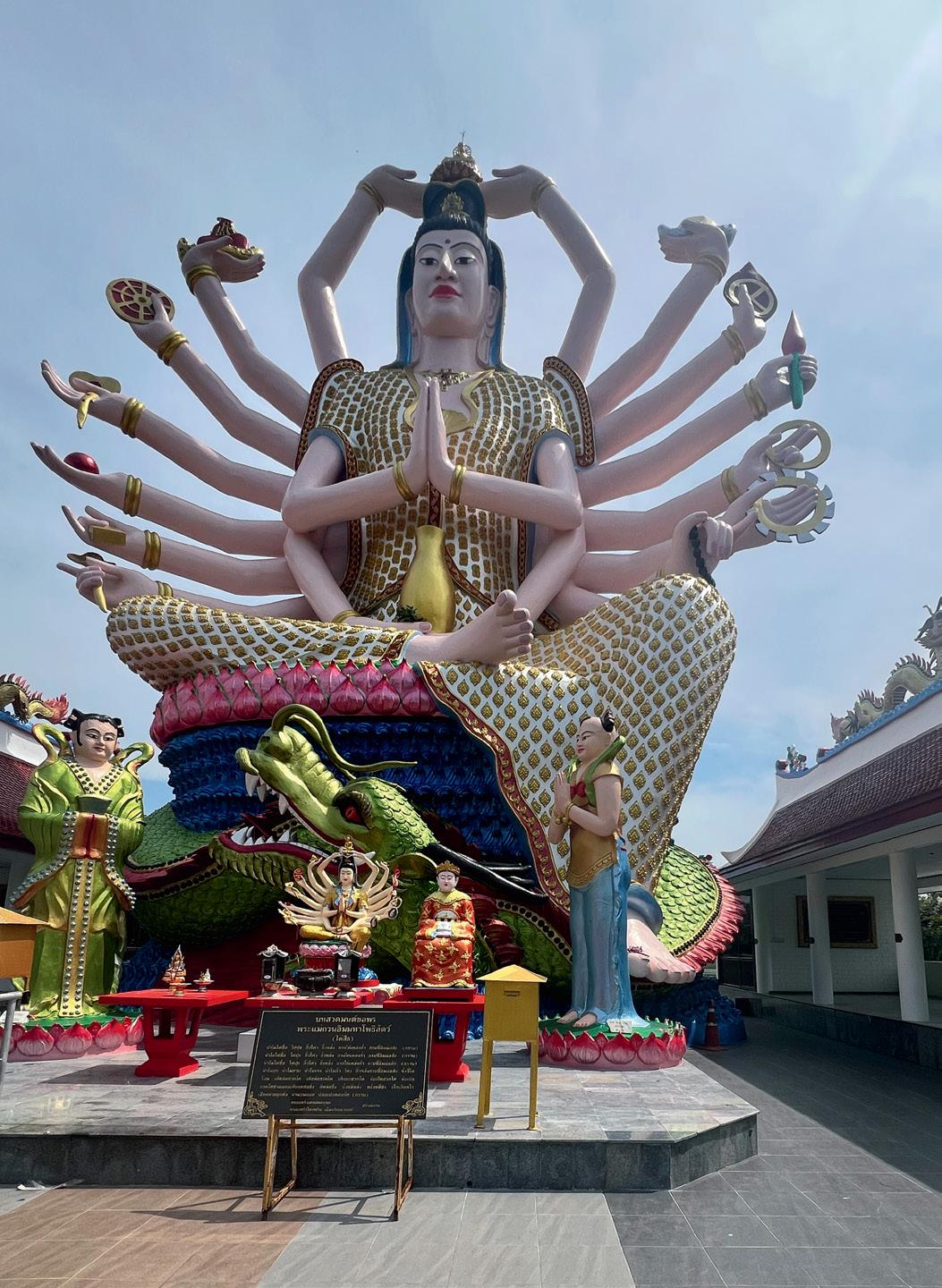
Once a thriving fishing community, Fisherman’s Village has been transformed into a popular walking street, with rustic shophouses converted into modern seafood eateries, boutique hotels and
busy beach bars. On Fridays, the road closes and the night market commences, featuring street food vendors, stalls selling local handicrafts and live performances.
THE SURPRISING THING:
Long before it was a popular tourist destination, Koh Samui served as a refuge for Chinese and Malaysian sea traders to escape unpredictable storms in the Gulf of Thailand. As the Hainanese traders returned to the island again and again throughout the 1800s, they brought with them coconut plants that easily thrived in the tropical environment. Coconut production quickly became a mainstay of the island’s economy, and Koh Samui rightfully earned the nickname “Coconut Island”. At its peak, Koh Samui had more
coconut trees than the rest of Thailand and is still said to have more varieties of coconut than anywhere else in the world. Although the coconut groves have decreased as the island’s infrastructure grows, coconut plantations still cover a large chunk of the island’s inland landscapes. Coconuts have also become a symbol of the island itself, representing its flourishing environment, natural abundance and cultural heritage. Fresh young coconuts are a staple on menus across the island, allowing travellers to
stay hydrated by sipping the refreshing juice. Locally made coconut oil is incorporated into many spa treatments and the husks are transformed into decorative pieces like mats and platters, used by restaurants and resorts across the island. Of course, the coconut’s role in the local cuisine cannot be forgotten. Coconut milk is a key ingredient in many delicious curries, and a unique Thai coconut soup blends sweet and savoury flavours to create a dish that will make your tastebuds dance.

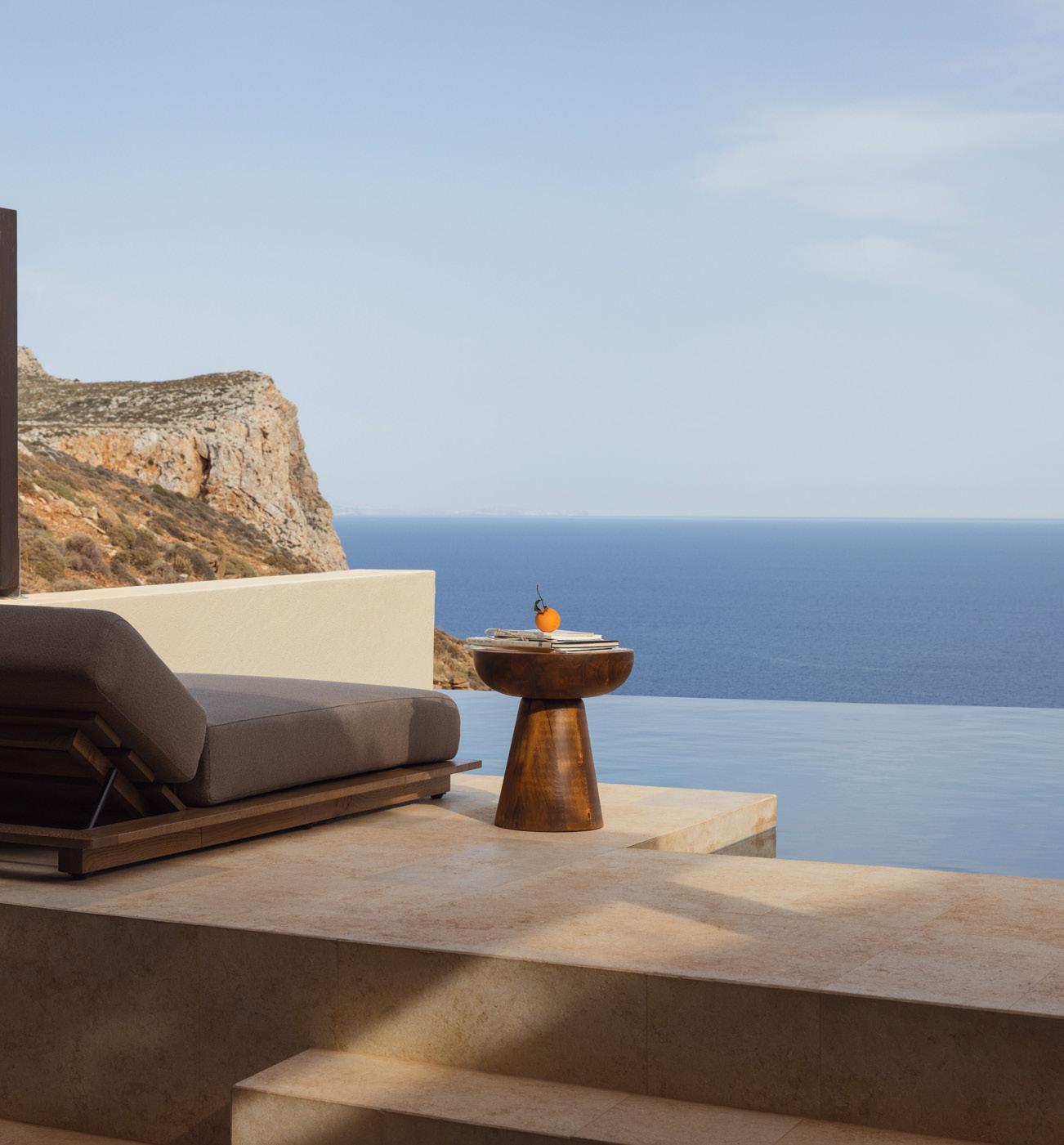
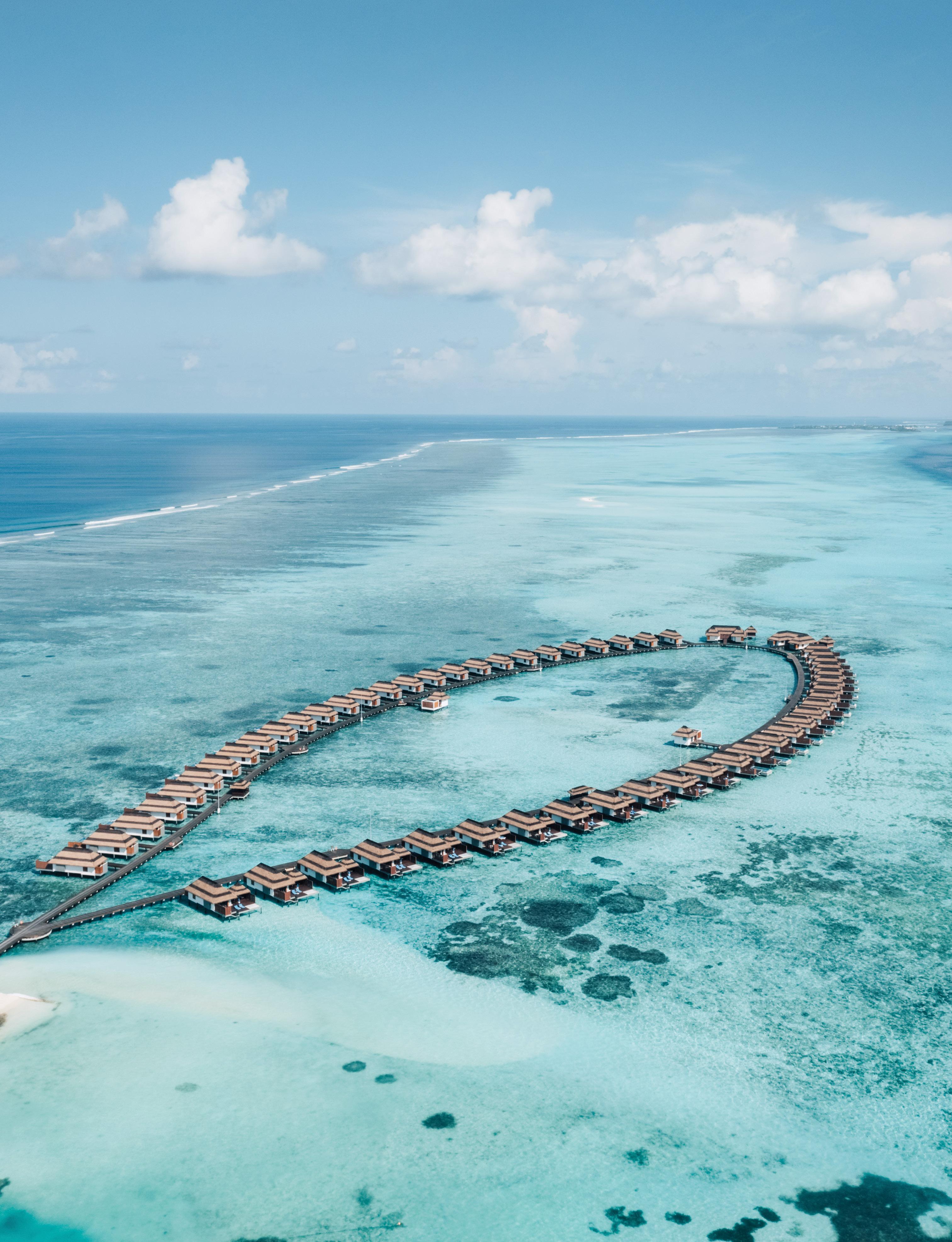

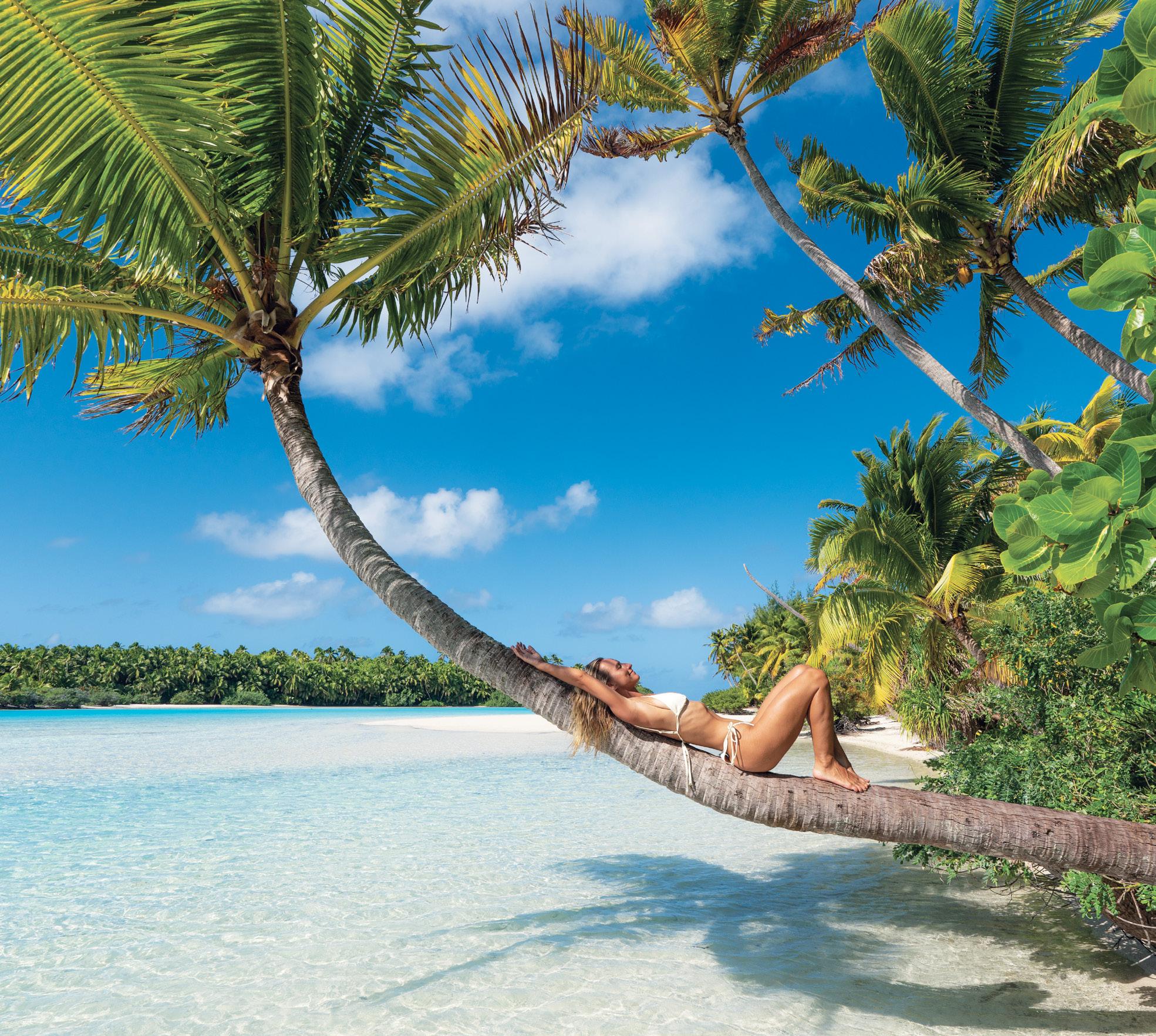
Close your eyes and daydream about the perfect holiday –chances are an island with swaying palm trees will spring to mind. We asked some of Luxury Escapes’ foremost travel experts to tell us the one island they would most like to be marooned on.
There is something about islands that just makes people happy. Set apart geographically from larger landmasses, a holiday on an island can feel like a true getaway, surrounded by soothing seascapes and the sound of waves lapping the sand.
But not all islands are tropical cliches: one of my most memorable island getaways was to the Aland islands in Finland, over 6700 rocky isles strung between Finland and Sweden in the Baltic Sea. This unusual region is home to midnight sun, colourful fishing shacks and one tiny isle so small it could only fit a single cow grazing. Is this sheer breadth of islands why Finland was the number one country in World Happiness Report 2024?
I have also fallen in love with the steel-and-glass-covered island of Singapore, the ghostly Second World War bunkers of the Channel Islands and the homespun tropical beauty of Tikehau in Tahiti.
Everyone has a favourite island, so we asked some of Luxury Escapes’ travel experts to tell us the atoll, isle or island that has a special place in their heart. – PAUL CHAI, MANAGING EDITOR
CAMERON DADDO, LUXURY ESCAPER
I first became aware of Hawaii watching TV as a very young boy and being mesmerised by the opening titles of Hawaii Five-0 with the turquoise water, the hula and the iconic views. Later The Brady Bunch went there – and I just wanted to surf like Greg did on the famous waves of Waikiki Beach.
Over the years, I have travelled to the island of Oahu many times, and I only have wonderful memories. It was a respite for my family when we immigrated to the USA in 1981, and later it became a holiday destination for Ali, our three kids and I when we lived in Los Angeles. The island of Oahu offers us everything we could possibly want.
There’s the famously healing waters of Waikiki Beach, tropical bushland trails, snorkelling in Hanauma Bay and of course great shopping. You can take a full day in a rental car on a circle island tour and you take a helicopter ride over the famed volcano of Diamond Head.
You can do it on a budget or do it in compete luxury: the island spirit of Hawaii is alive and well and the pure essence of “Aloha” allows for everyone to enjoy paradise.
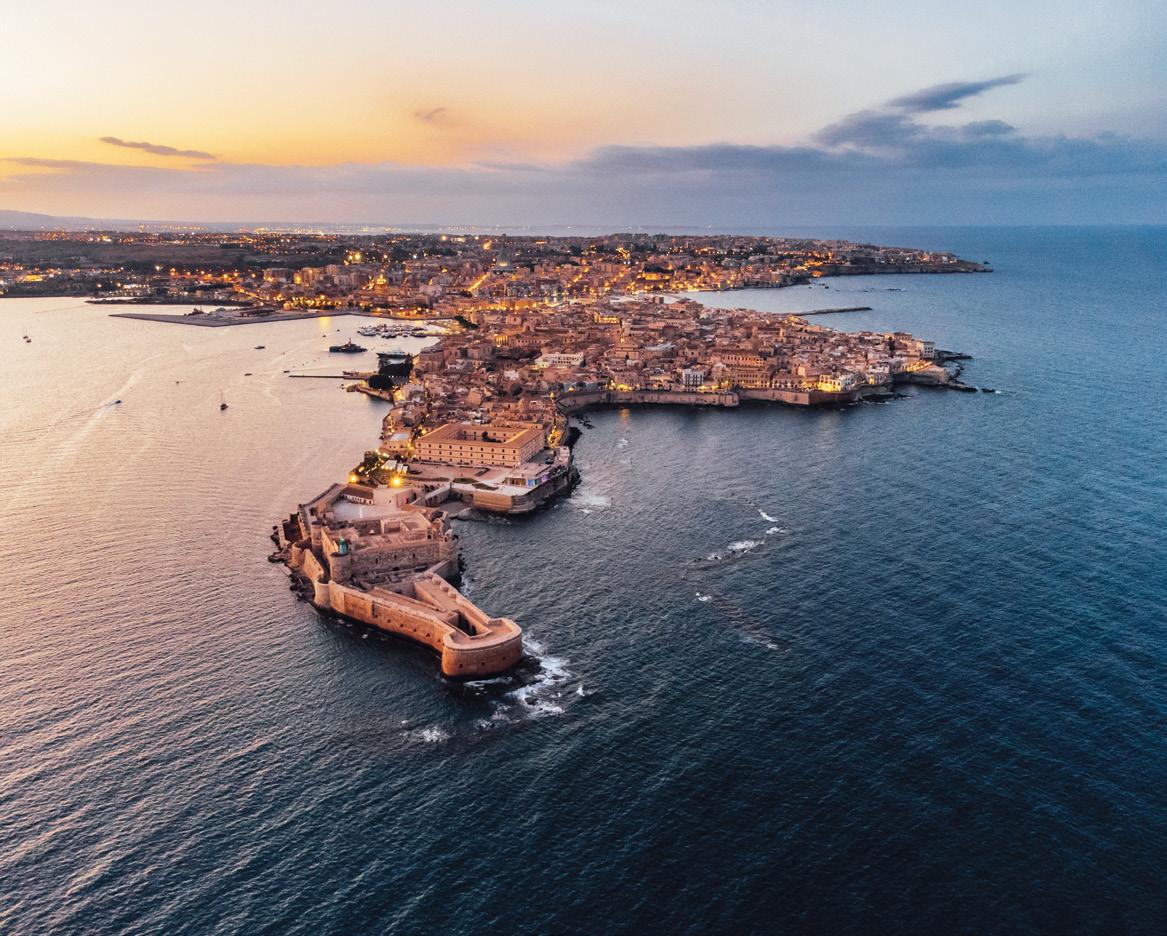
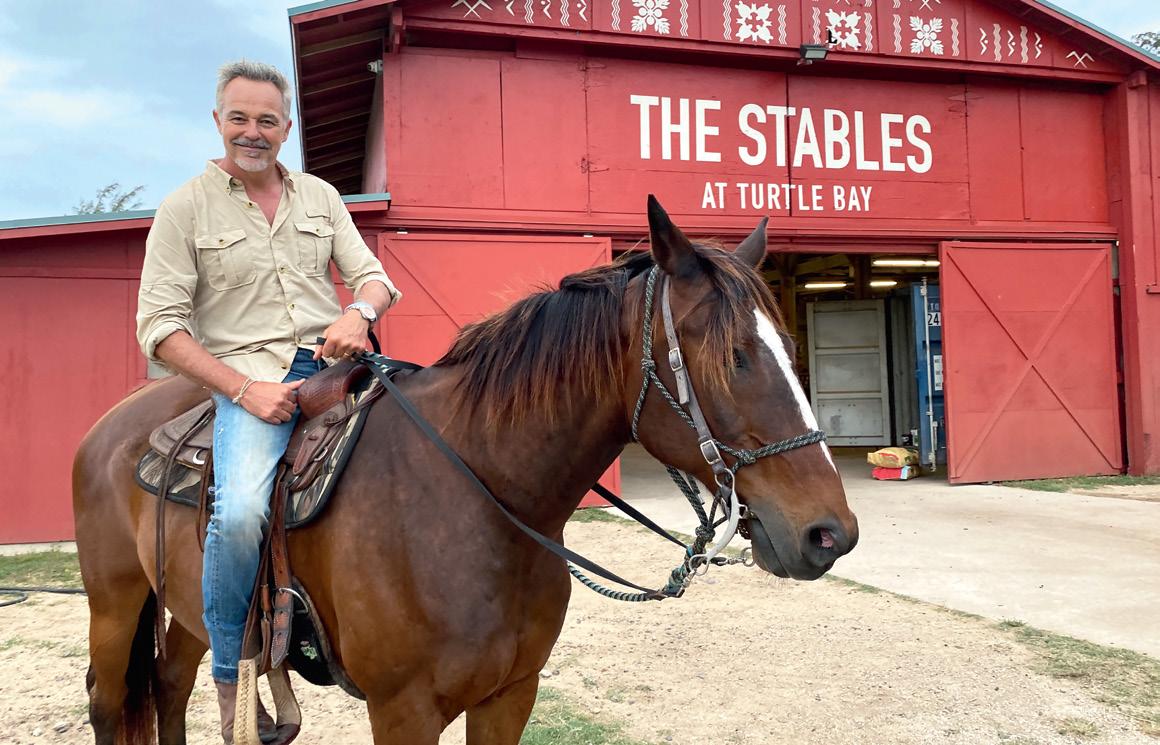
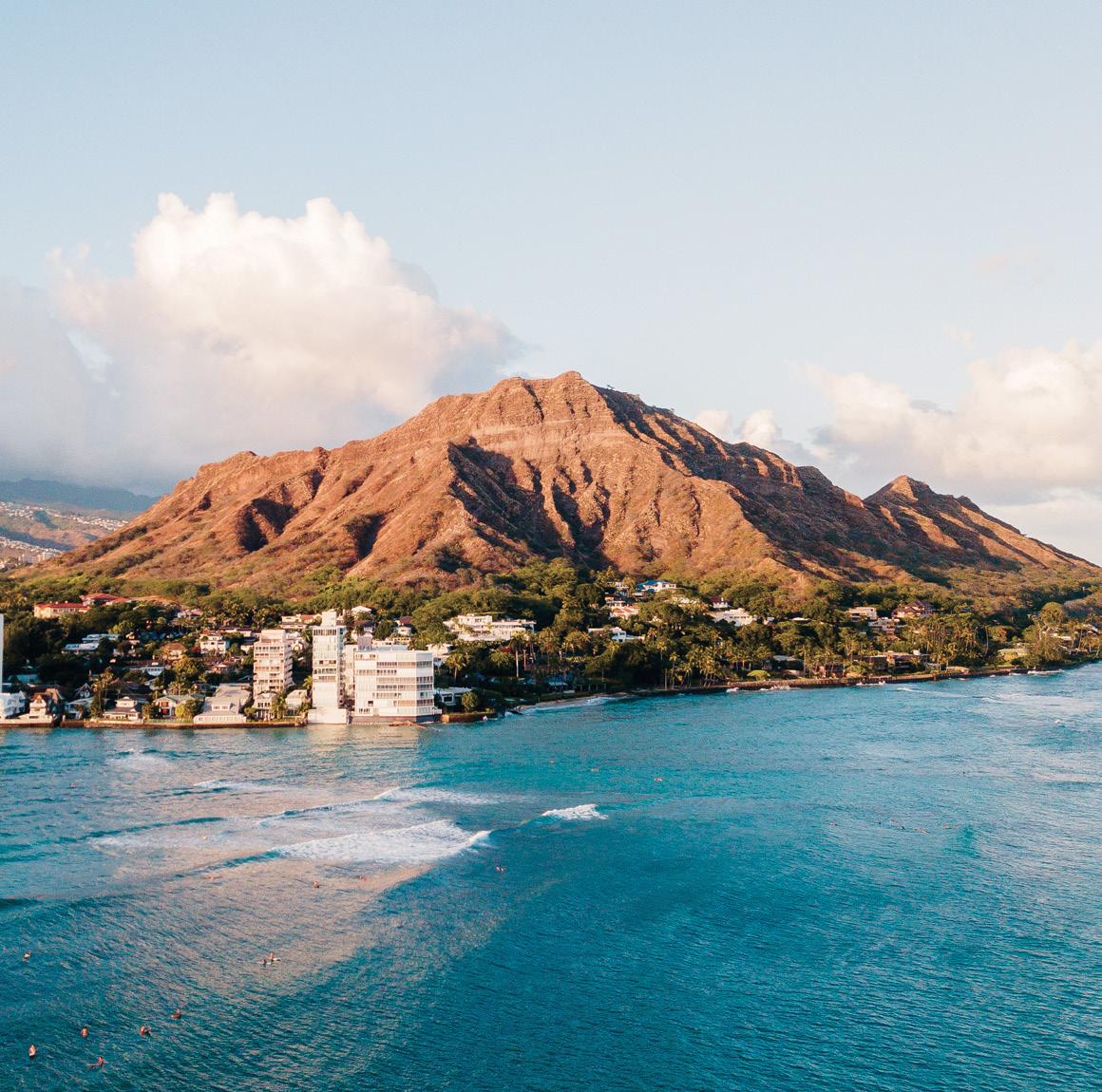
STEPHANIE MIKKELSEN, CONTENT MANAGER, LUXURY ESCAPES
Amidst a maze of whitewashed laneways and honey-hued piazzas in Ortigia, an island off Syracuse, Sicily, is a nondescript deli that’s home to my favourite sandwich. This sandwich, from Caseificio Borderi, wasn’t ordered; there was no menu. Instead, Andrea Borderi asks only “Meat or no meat?” as he halves a soft, white roll. His work bench is covered with fillings – marinated vegetables, cheese wheels, salty cured meat – and his assembly, done in twos and threes, is as unhurried as it is unscripted. In between layering caponata, mortadella and mozzarella, Andrea stops to hand aged pecorino to others waiting in line. When I take custody of my prize, I know it will ruin all sandwiches that follow. It does. I scarf it down at a rickety table, anointing Andrea as a new kind of Italian master with carbs, not canvas or clay, as his medium. The heft of salumi and antipasti, the contrast of creamy and crunchy makes every bite all killer, no filler. I don’t see it being bested soon – although it’s certainly fun to try.
GEORGIA LOVE, LUXURY ESCAPER
Picture this: You meander from the beach to the pub, sand between your toes and salt in your hair, barefoot and sun-kissed. You order a shandy and a parma and the buzzer at your table goes off when your order’s ready. You watch the sun set pink, purple and red as you walk home in the balmy stillness, with crickets chirping and the ocean lapping. Ice cream in hand you wave to your bare-footed neighbours and stop to let a kangaroo hop past. You don’t have much phone reception or wifi, nor a care in the world.
This isn’t an image of an idyllic summer holiday in an Aussie beach town in 1970, but North Stradbroke Island in 2025.
Just 30 kilometres south of Brisbane, and accessible by a quick (and scenically beautiful) ferry ride, this Queensland gem is criminally underrated. Spend the day relaxing on the beach, surfing, walking the glorious nature trails and taking in wildlife. One of my favourite memories of my life is sitting atop a beachside cliff, watching dozens of humpback whales pass and breach for hours until the sun set. For someone who loves to travel the world, it’s this little slice of homegrown paradise in my own backyard that will always draw me back.

ADAM SCHWAB, CEO, LUXURY ESCAPES
Choosing between Maldives islands is a bit of a Sophie’s Choice, but I’ve spent more time on Pullman than any other (including three incredible weeks at the tail end of Covid). The resort is about an hour south of Male by plane – but the trip is definitely worth the investment.
The remoteness of the island means that the snorkelling (and diving) is ridiculously good. Swim five minutes from the resort’s pool and you’re in an aquatic paradise as good as any dive site. A kilometrelong reef break of stunning coral hosts thousands of fish (as well as the odd reef shark and ray). Swim back to your overwater villa, which is pure luxury. Pullman is genuinely all-inclusive, which means you can eat lobster for breakfast and wash it down with French Champagne (there is a bottle in your mini-bar, refilled daily). Dining is sublime –Italian on the water or the vegetarian restaurant in a stunning garden. If you can’t decide, the buffet with multiple chefs stations is a delightful fallback option. It’s as close as one can come to heaven.
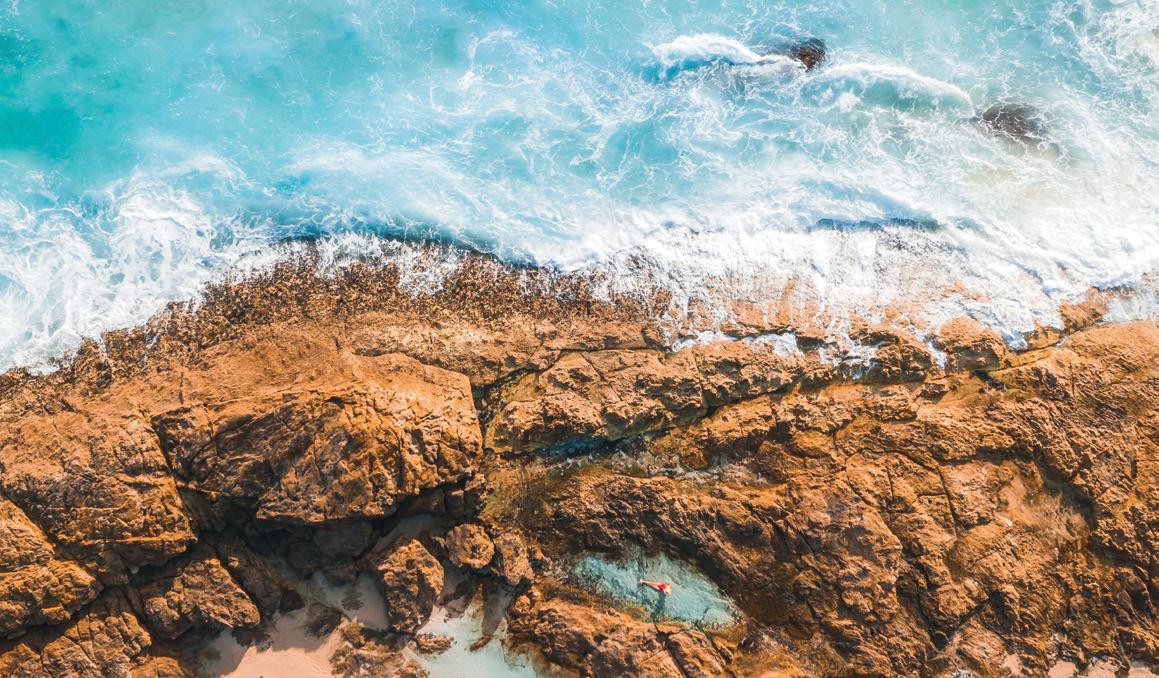
BELLE JACKSON, TRAVEL WRITER
There’s a mysticism about the islands of Ireland. Each of the 80-odd isles that fringe the myth-laden nation or are found in its lakes has its own legends and traditions, such as the Irish-speaking outpost on the Aran Islands’ largest isle, Inishmore (Inis Mór), with its legends of seal-human shapeshifters, the selkies. Or Cape Clear Island, in County Cork, where I watch portly puffins nesting busily on the slender ledges of the sea cliffs. Or wild, lonely Skelling Michael in County Kerry, whose beehive huts earned it a Star Wars cameo. Exploring Ireland’s islands sends you back through the centuries; to a necklace of squat, stone fortresses built during the Napoleonic wars in the early 1800s. To places of power, where millennia-old standing stones remain upright. Or in the chain of loughs on the border of the Republic and Northern Island, where tiny islands are said to have provided sanctuary for druids, giants, Celtic goddesses and clan chieftains and, for us, still deliver beauty and respite from today’s world.
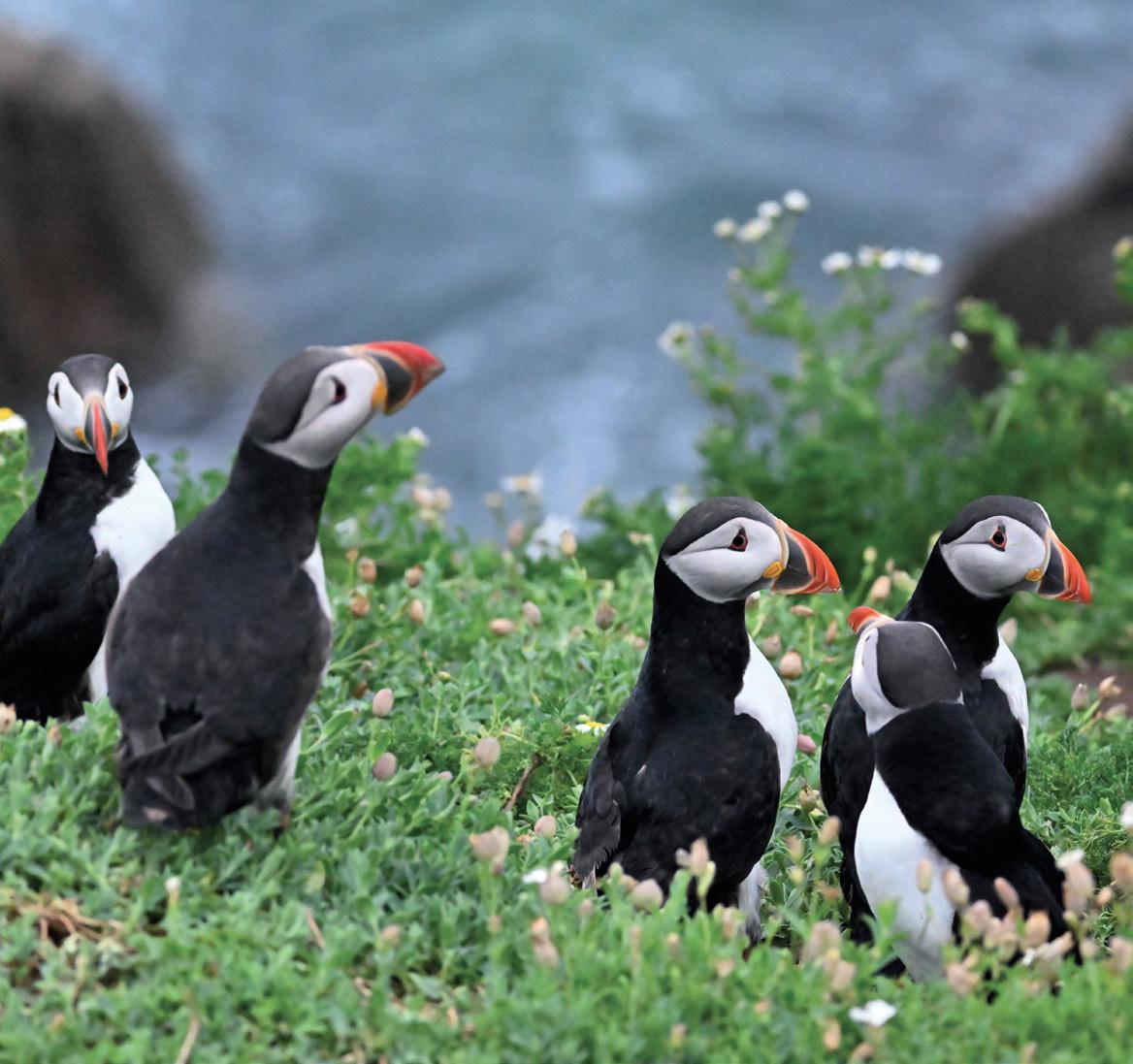


DIANA CHAN, LUXURY ESCAPER
Hong Kong is a unique destination where East meets West and old meets new. Hong Kong has an exceptional culture, having ancient Chinese heritage and being influenced by a Western colonial culture for over a century. It’s a city that never stops. It’s vibrant, it’s exciting and it’s delicious. Eat your way around Hong Kong with plenty of street food everywhere you look (see page 18). Think silky egg noodles with smoky barbecue pork and roast goose or indulge in some dim sum whilst sitting in an old teahouse taking in the ambience. Hong Kong also houses some of the world’s best restaurants with plenty of Michelin-starred places to choose from.
MARK DAFFEY, TRAVEL WRITER
Due east of Port Macquarie is one of the world’s most isolated land masses. Amazingly, considering how little it resembles other Australian islands, it belongs to us. It also happens to be the prettiest island I’ve ever visited.
Lord Howe Island erupts from the Pacific Ocean in dramatic fashion. Twin peaks – both volcanic remnants – dominate its southern tip. The crescent-shaped island then wraps around a lagoon containing the world’s most southerly coral reef.
You can surf, dive, snorkel or hand-feed kingfish and spangled emperors that loiter in the shallows on any number of secluded beaches. Best of all is that there’s a cap on visitor numbers, so more than a handful of bathers constitutes a crowd.
There’s no need to rush around, nor work up a sweat. Unless you’re cycling, that is, for bicycles are the island’s main form of transport. Surely, though, this is how island life should be.
PAUL CHAI, MANAGING EDITOR, DREAM BY LUXURY ESCAPES
As a restless city-stanning traveller, if asked my favourite island, I was likely to offer up Manhattan, Japan or the United Kingdom, but that was before I set foot on Turtle Island in Fiji’s Yasawas. You get a bit cynical in the travel game, with words like “paradise” and “luxury” thrown around like petals in a honeymoon bathtub, but the singular passion that forged Turtle Island makes it as refreshing as the sea breeze through the coconut fronds on your private beach (there are 12 of them for exclusive use).
American businessman Richard Evanson bought Turtle Island in the ’70s and landed on his new home alone with just an esky; he then rewilded it with the help of people from the neighbouring villages. The island celebrates its 45th anniversary this year.
Since then, Turtle has been the location for The Blue Lagoon movie, and played host to rock stars and US presidential candidates, but it has maintained that hand-hewn quality that makes everyone feel welcome.
A stay on Turtle Island had me connecting with the local culture in ways that only decades of real collaboration can provide, reconnecting with my wife at floating pontoon dinners and private sandy picnics, and realising that there might be something to this whole tropical island malarky after all.
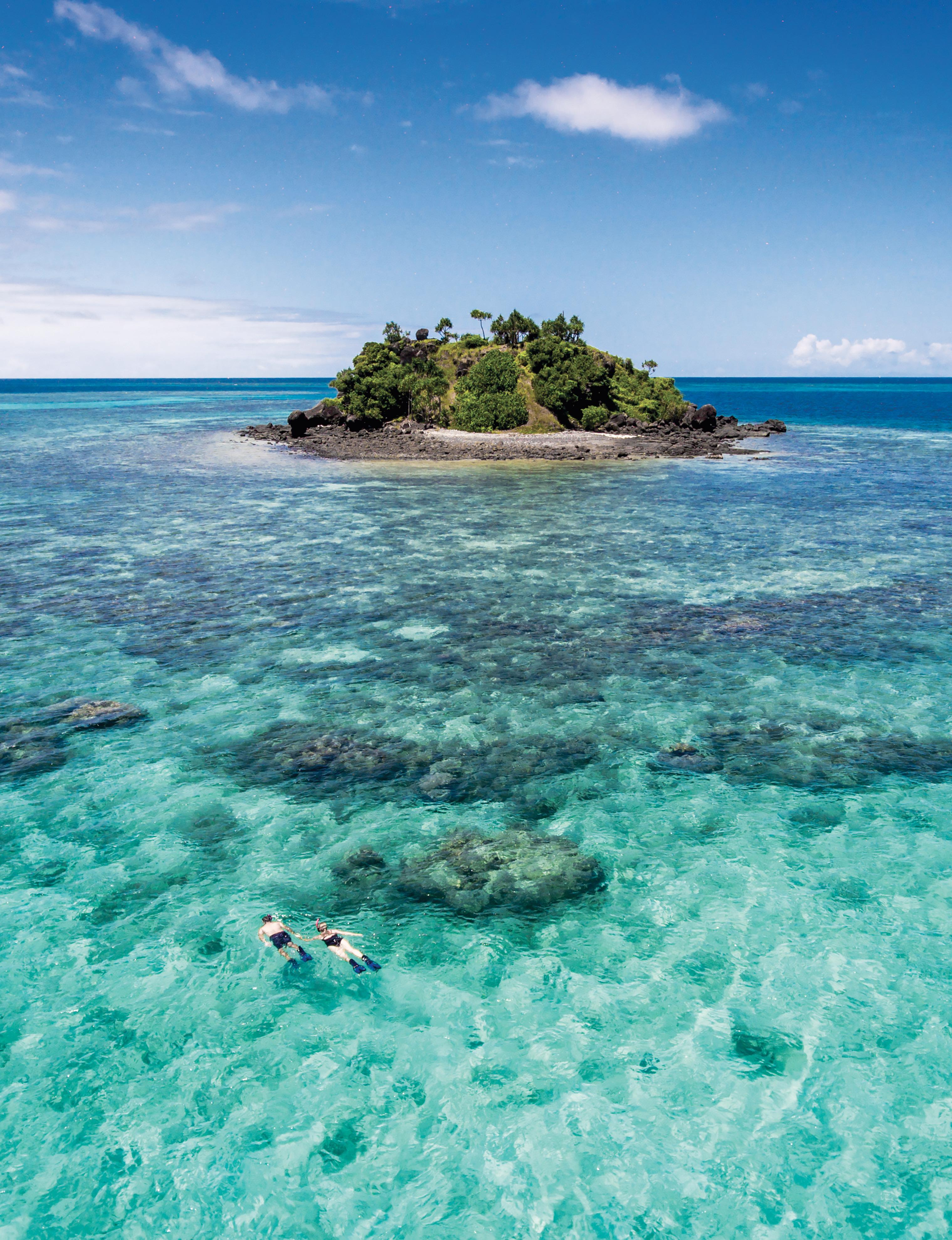
MATT SHEA, TRAVEL WRITER
Imagine staying at your rich pal’s place on the Great Barrier Reef. The digs are immaculate. The drinks – best enjoyed in an expansive infinity pool overlooking the Coral Sea – free-flowing. There are no keys, no credit cards to swipe. It’s just you and 27 other guests, looked after by around the same number of staff, including a gun kitchen team.
This is all-inclusive Orpheus Island Lodge’s parlour trick. Gone are those frictions typical of a hotel. From the moment the helicopter delivers you on the property’s immaculate lawn, palm trees swaying in the sea breeze, you’re treated to a detailed, personalised but egalitarian style of service.
Want to picnic on a secluded beach? They can arrange that. Take a boat out to the island’s stunning giant clam garden? Easy. But it’s also okay just to migrate from the hammock to the pool to the dining table and back again. Orpheus is island time fine-tuned to your own pace.
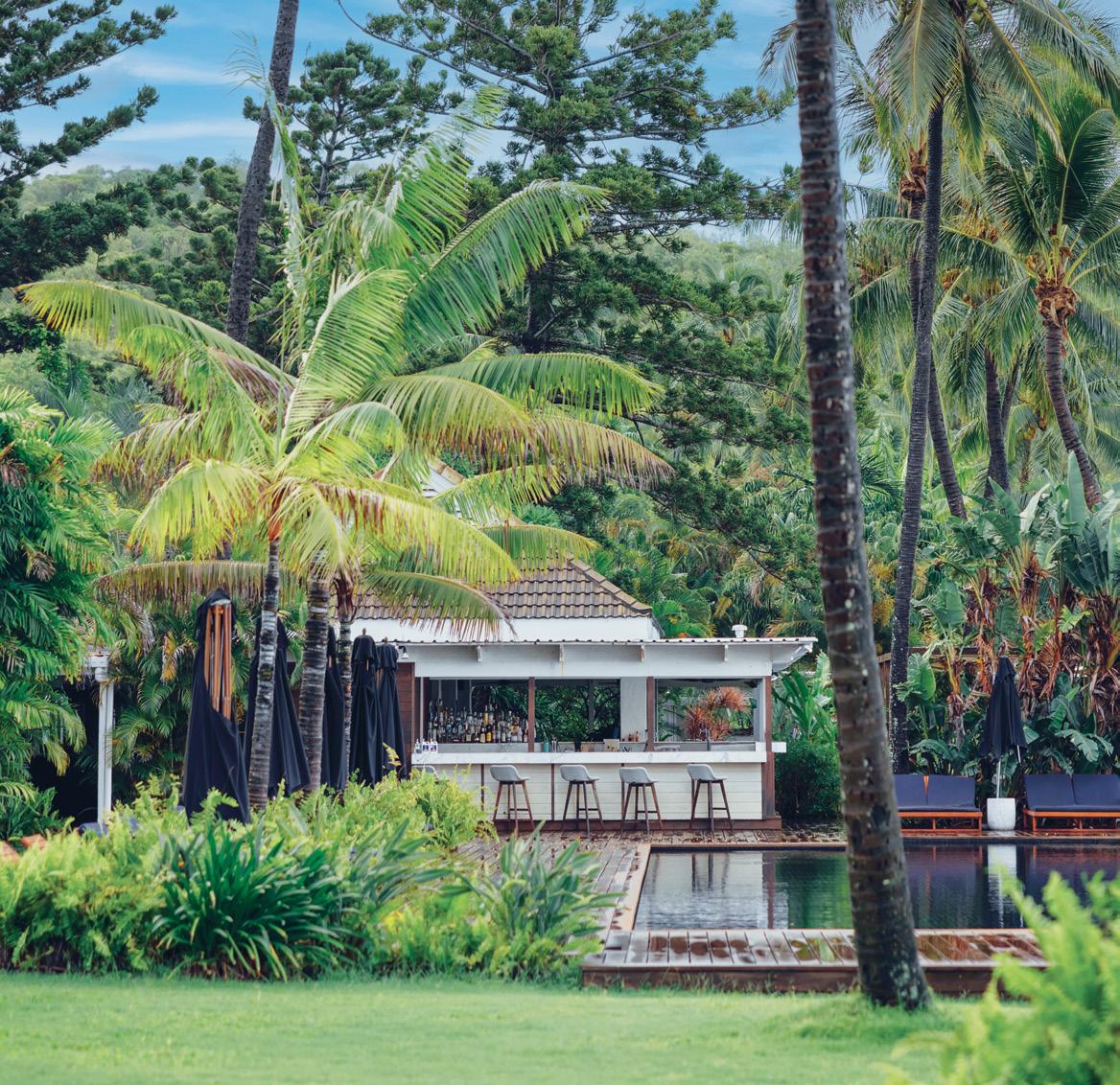
JIMMY AND HOLLY NICHOLSON, LUXURY ESCAPERS
Bali will forever be a favourite island destination for us, even more so now with a little one in tow. It’s a getaway where you can get so much bang for your buck, where you can get five-star luxury at twostar prices.
Our favourite Bali stay to date is Kappa Senses, a French-inspired jungle oasis amongst the rice patties in Ubud. We also love Mulia Resort in Nusa Dua for the ultimate poolside/beachside luxury resort, which you literally don’t have to leave. Or catching waves and swimming in the crystal-clear water and drinking cocktails on the stunning cliffs of Uluwatu.

ABBEY HOLMES, LUXURY ESCAPER
Bremer Island in East Arnhem Land offers a completely different kind of experience, one that is deeply entrenched in Australia’s Indigenous culture and raw, rugged natural beauty.
Banubanu eco-retreat is situated on the most northern tip of Bremer Island and is a peaceful sanctuary with unique “glamping” accommodation, and unforgettable dining experiences. Its untouched beaches, rugged landscapes, uninterrupted views of the Arafura Sea and the opportunity to connect with Yolŋu culture provide a unique and enriching getaway. The island’s peaceful and isolated environment makes it the perfect place to disconnect and immerse yourself in a world far removed from the everyday hustle. It captured my heart through deep cultural significance and untouched landscapes.

NEALE WHITAKER, LUXURY ESCAPER
I love it when I hear Tasmanians refer to Australia as “the mainland”. It encapsulates the otherworldliness I feel whenever I’m in Tassie. It’s an island hanging from the southern edge of an island, with a landscape, a history and a speed that feel so separate, so distinctly different, to other regions of Australia.
The first time I visited Tassie I thought of Scotland. Whenever I glimpse Hobart’s Government House, en route from the airport, I think of Balmoral. It’s strange – I’ve never been to Balmoral. And on a grey day on the Hobart waterfront, at Salamanca Place or the city’s steep slopes, I recall other Scottish towns I’ve never visited. Maybe it’s my British DNA recognising similar genetics on the other side of the world. My partner has family in Hobart and for years our Tassie experience was limited to that city. But recent visits to serene Lake St Clair in the jagged Central Highlands, and the east coast’s magnificent Bay of Fires and Freycinet National Park (Wineglass Bay is so deserving of the hyperbole), have opened our eyes to alternative Tassies, some more beautifully redolent of Cornwall than Scotland. It feels like a kind of home.
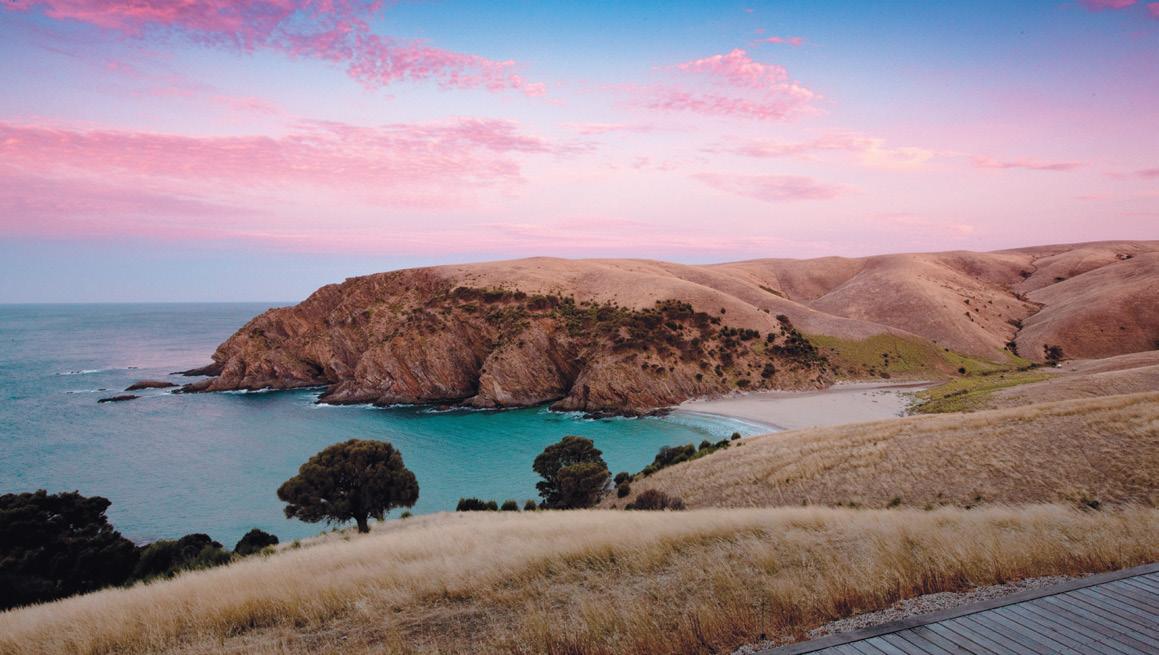
PENNY CORDNER-MAAS, HEAD OF CONTENT, LUXURY ESCAPES
Growing up in a tiny town on Victoria’s Bellarine Peninsula, I’ve always been surrounded by stunning coastal beauty. Australian beaches are the best in the world, but I was still surprised to find the best of the best in South Australia.
Drawn to Kangaroo Island for its artisan producers, local winemakers and fresh seafood, I quickly discovered that its rugged cliffs, striking rock formations and white-sand beaches were just as unforgettable. The best way to take it all in? Hire a car and explore. With over 250 kilometres of coastline, you can start with hidden beaches like Stokes Bay and Western River Cove, or soak up the beauty of Vivonne Bay, a six-kilometre stretch of pristine sand, clear blue water, and a postcard-worthy jetty. Between adventures, there’s no shortage of incredible food and wine to indulge in. Enjoy a long lunch with panoramic views at Sunset Food & Wine, stop by Kangaroo Island Brewery for a tasting paddle or sip award-winning gin at Kangaroo Island Spirits. Wherever you go, Kangaroo Island delivers a feast for the senses – one that keeps calling you back.
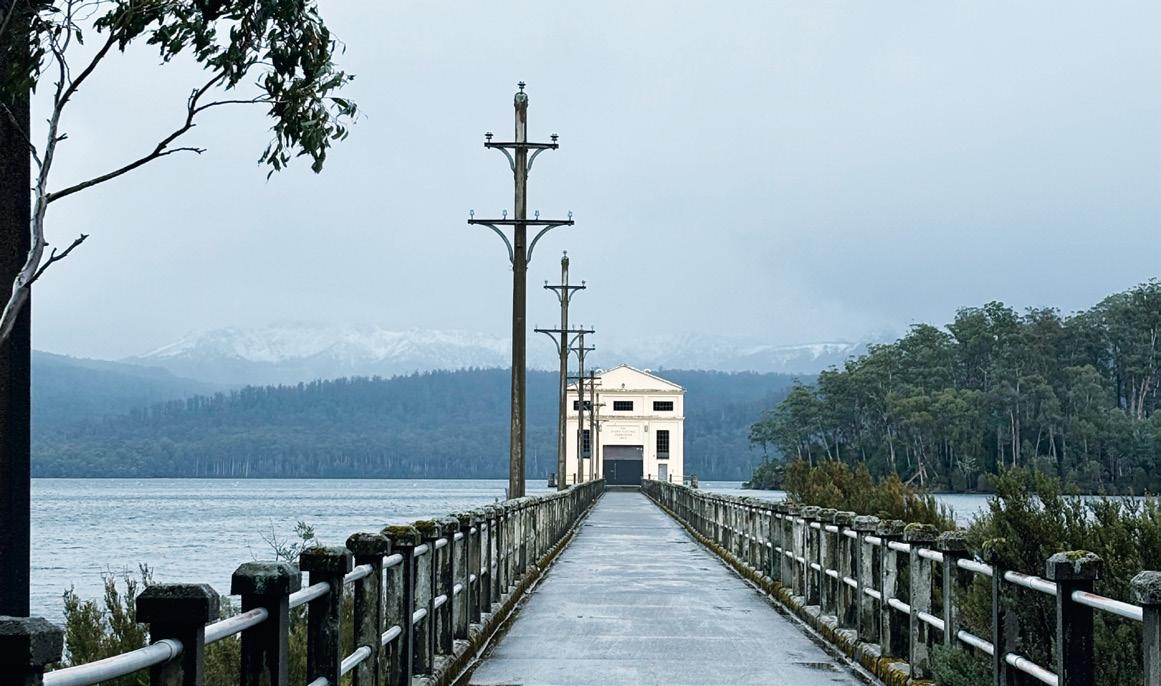
NATE ROBINSON, EDITOR, LUXURY ESCAPES
At JA Manafaru, the Maldives’ northernmost private resort island, I brought only the essentials: ugly Hawaiian shirts, weapons-grade sunscreen and a head full of expectations. It more than delivered on the essentials, with barefoot staff so professional they’d memorised our names on arrival, a beach the colour of a coconut’s private bits and an unfathomably blue lagoon.
What I didn’t expect was how head-over-heels I’d fall in love with everything else. Secret banyan tree groves held little hermit crab kingdoms; at sunset, great herons emerged to pluck dinner straight from the reef. The all-inclusive dining program ranged from surf ‘n’ turf to delicate, pistachio-laced paninis, but I soon found myself gravitating to local flavours, like mas huni (smoked tuna, coconut and chilli salad, served with warm roti).
Manafaru saved its best for last. On our final night, I stumbled upon the archipelago’s renowned “sea of stars”, bioluminescent algae crashing onto the shoreline like glitter dancing on the sand. It was all I could do to sit and watch as it eventually, inevitably faded away.
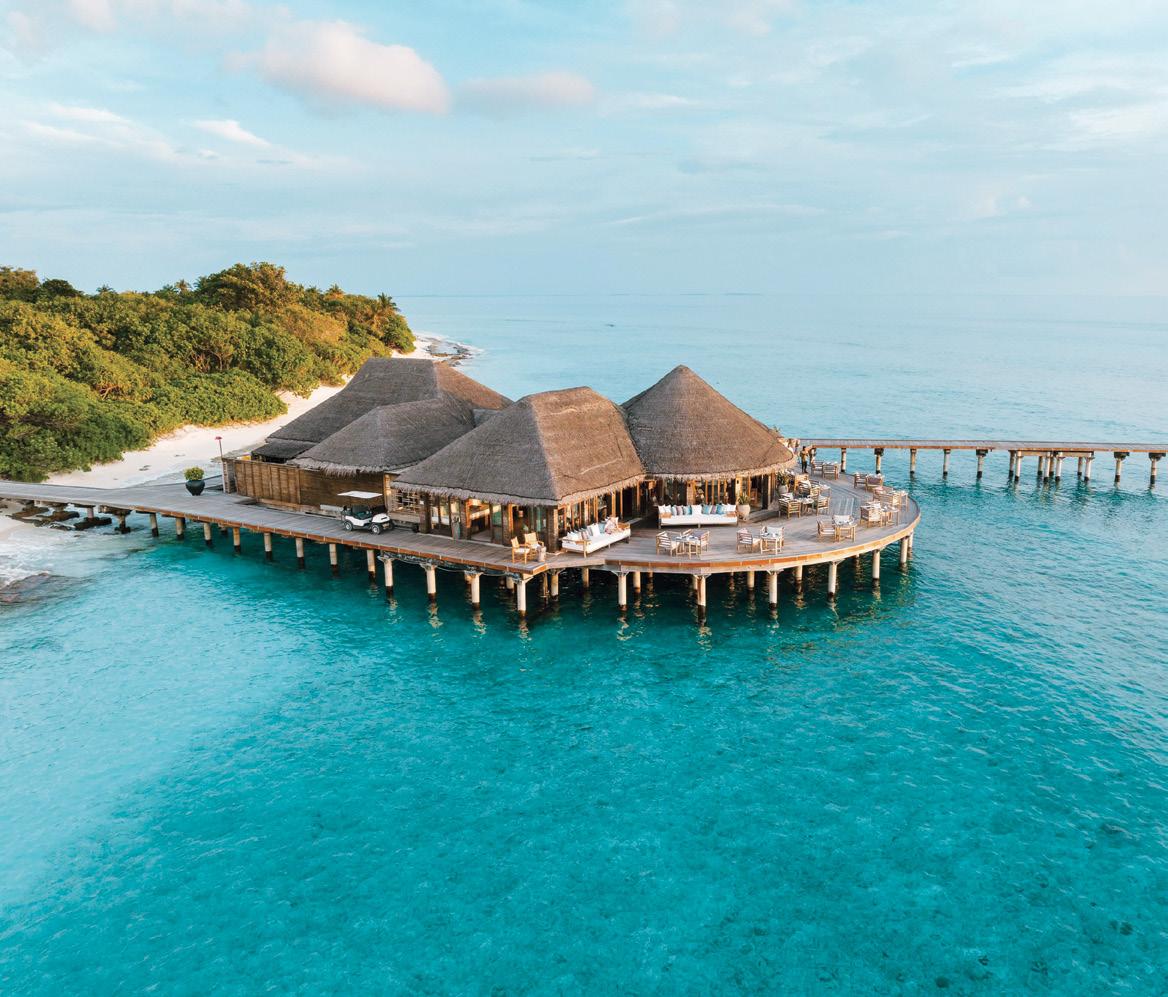



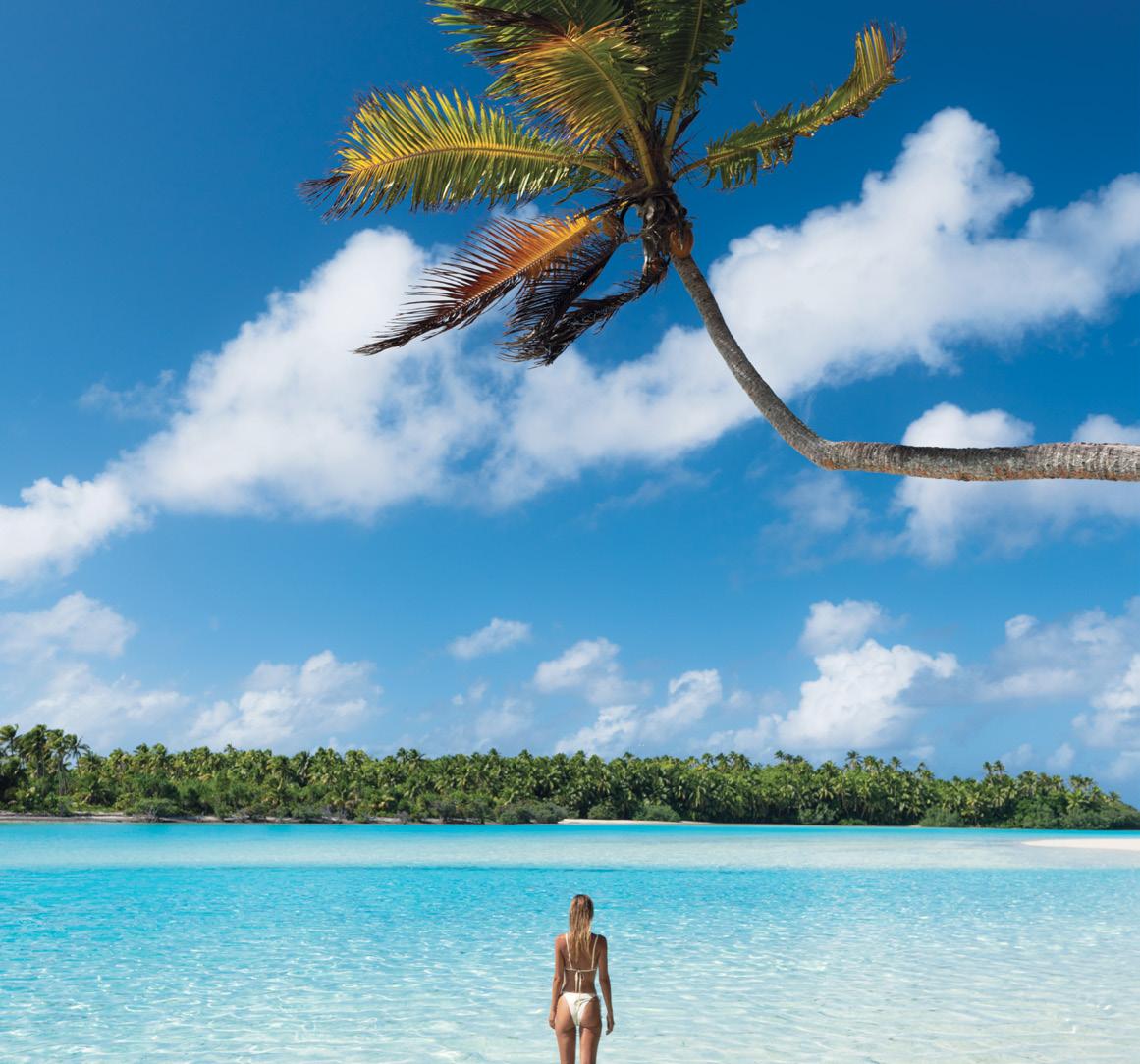
SARAH ROYALE (AKA SALTY LUXE), LUXURY ESCAPER
Stepping onto the tarmac at Rarotonga is like stepping back in time. Mountains tower around you, palm trees sway in all directions and the sweet sounds of the traditional pate (local drum) ring in the air. You would expect somewhere this beautiful to be teeming with tourists, when in fact it’s a welcome respite from other such tropical destinations.
The gem of the Pacific, the Cook Islands is made up of 15 islands spread across 2.2 million square kilometres of pristine, wild nature. Traditional huts sell coconuts on the side of the road and accommodation options range from charming guest houses to intimate boutique hotels. Stay in an overwater bungalow at the iconic Aitutaki Lagoon Resort or opt for an elevated five-star stay at The Pacific Resort. I strongly suggest you visit Cook Islands before the rest of the world finds out what they’re missing.
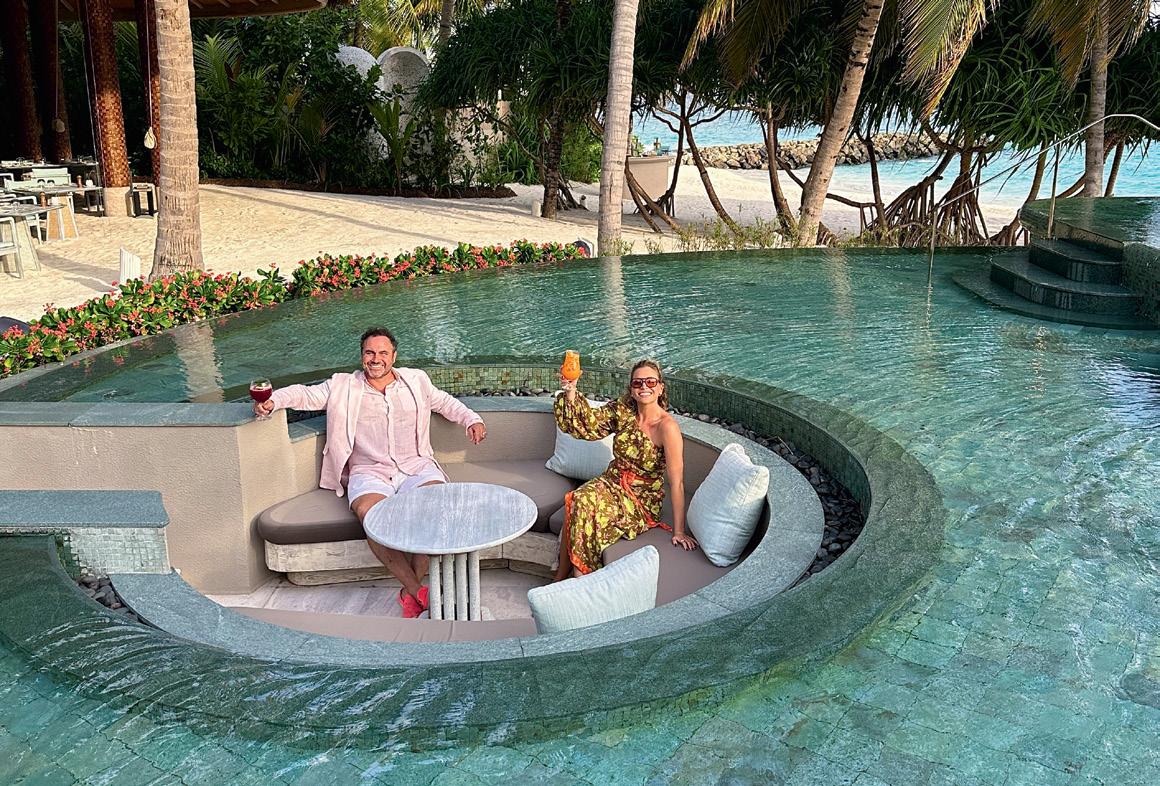
MIGUEL MAESTRE, LUXURY ESCAPER
The Maldives covers a whole bucket list on its own. As a family we ticked off the most unique experiences: swimming with hundreds of sharks at SO/ Maldives; waking up to our own water slide in a slice of paradise at Soneva Jani; having some of the best food I’ve ever had at Joali. All of these amazing activities while floating in the middle of the Indian Ocean: the Maldives manages to be my top three island destinations in the whole world.

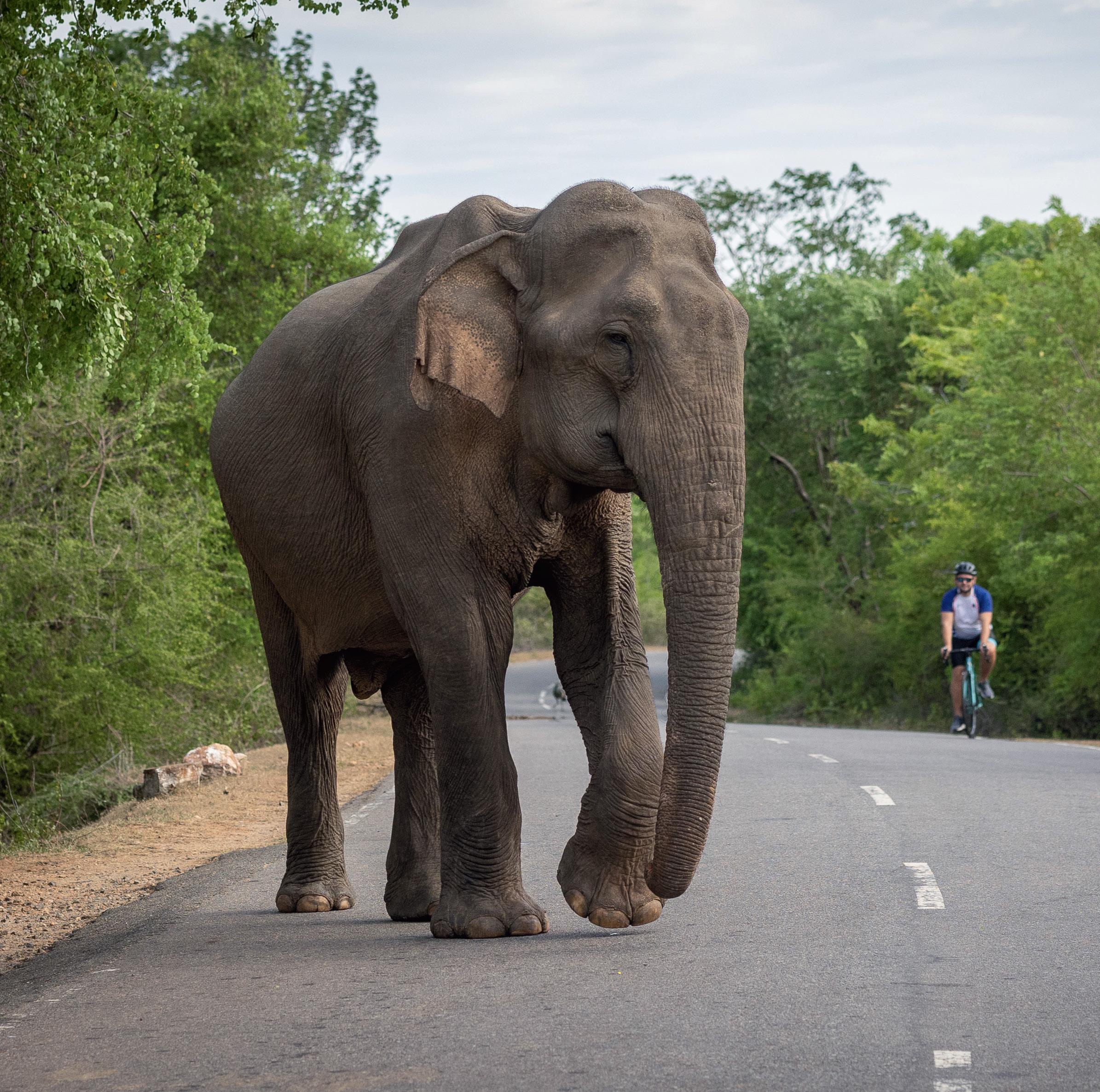

A bike tour of Sri Lanka takes in tea plantations, elds of colourful butter ies and the occasional rogue elephant. Duncan Forgan puts the pedal to the metal on the island nation and discovers a destination made for slow discovery.
The South Asian nation is as culturally and visually abundant as any place on earth, making it hard to keep quiet about its endless golden beaches, emerald mountains, ancient civilisations and glorious cuisine.
The second rule is to be wary of the fumebelching public buses.
The third, perhaps most important, edict is to give the widest possible berth to the wild elephants who patrol the highways near protected wildlife areas such as Yala National Park.
“Be careful,” yells Rajith Jaywardana, my guide and founder of bike tour operator Across Ceylon, as the rush of adrenaline I get from spying a beast ahead on the road translates into increased pedal speed.
The pachyderm lifts its leg as I hurtle towards it, a sign it might be unenamoured at the prospect of getting too close to a 100kg Scotsman clad in Lycra and perched atop a Bianchi road bike.
I’m in Sri Lanka, testing my calves and nerves on choice sections of the Tour de Resplendent, a new biking adventure linking five properties run by Resplendent Ceylon, the luxury hospitality arm of tea giant Dilmah.
Launched late last year, the Tour – a collaboration between Resplendent Ceylon and Across Ceylon – allows cyclists to cover the ground on the west-to-east south coast stretch
between Ahu Bay, Cape Welligama, Kaayam House and Wild Coast Tented Lodge. The route then leaves the gentle coconut-palm-studded flatlands to wind up and along precipitous switchback roads to Ceylon Tea Trails, a collection of five sumptuously converted former tea-planter bungalows in the heart of Sri Lanka’s tea country, scattered around Castlereagh Lake. It’s an adventure typically undertaken over nine days, one that transports bikers past giant bell-shaped white stupas, and through peaceful villages and rural landscapes so lush and verdant you’d believe that monsoon season never stopped.
Due to time constraints, I’m enjoying a taster of the Tour, transferring from Kaayam House at Tangalle to Wild Coast Tented Lodge in Yala National Park. It’s a truncated pedal, but I’ve enough ride time to gulp countless cups of energising sweet milk tea and assess the potential of the cycling product in Sri Lanka. The verdict: immense.
When Rajith outlined some of the safety hazards on the Sri Lankan highways, he was clear about the need for vigilance when it came to rogue tuk-tuks and bullying lorries and buses. He neglected to mention grouchy wild elephants.
Thankfully the flicker passes, and the beast shuffles off and back into the undergrowth.
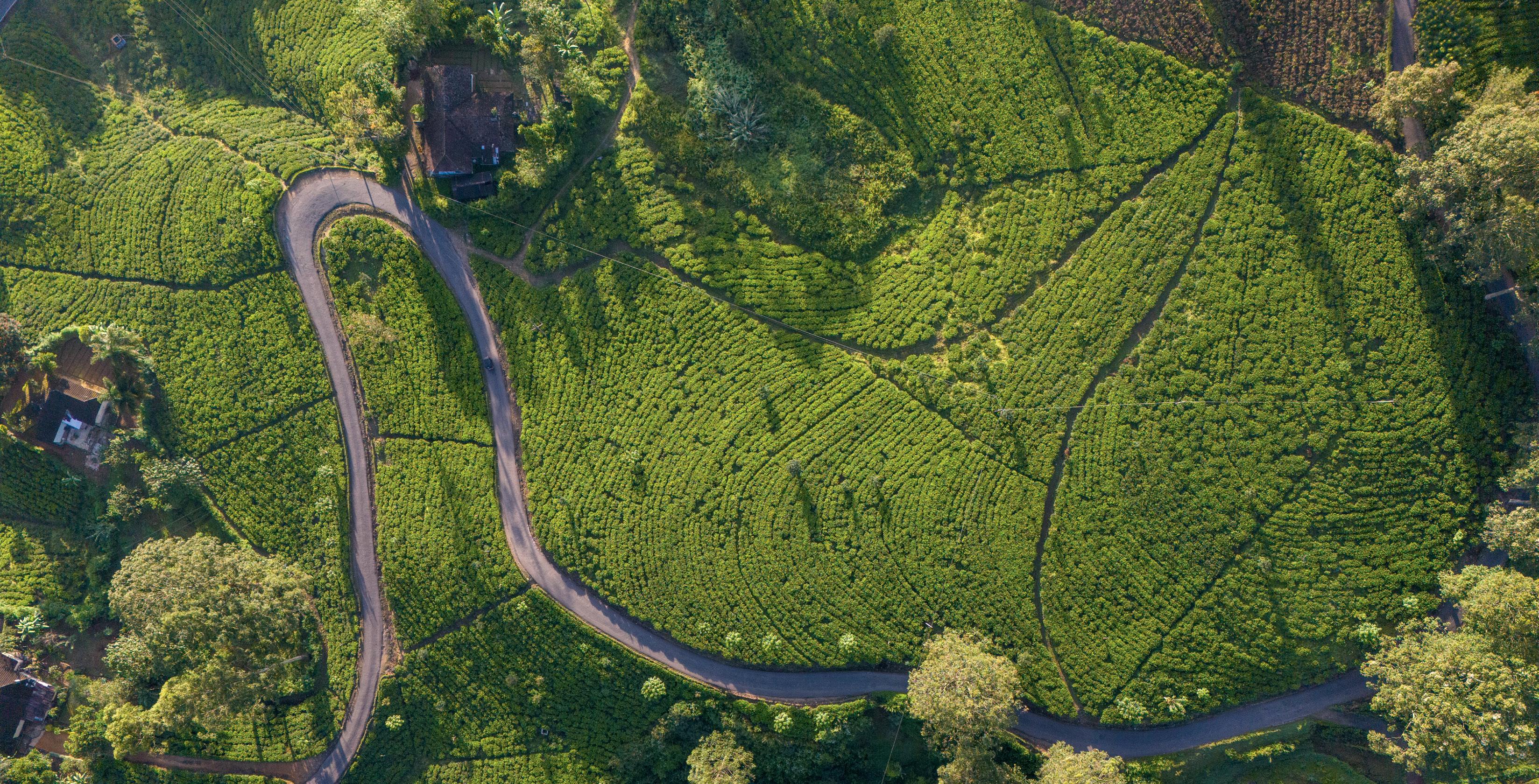
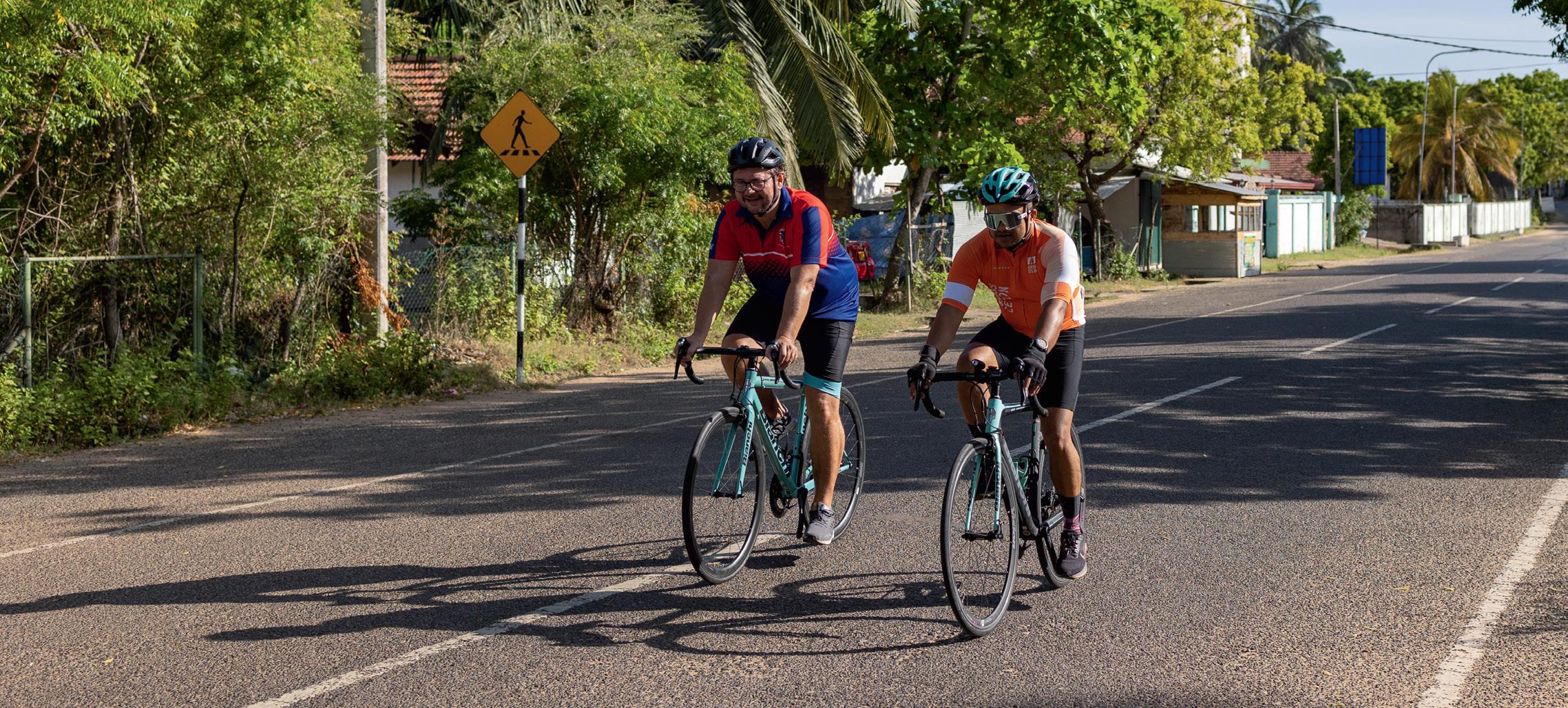


Kaayam House enjoys a prime location along Tangalle’s golden coastline sandwiched between the lush hinterland and the ocean. Housed in a bright white colonial-style building with airy open arches, the design blends tropical modernism, traditional Sri Lankan architecture and Buddhist influences to create a tranquil atmosphere. Reclaimed wood and turquoise accents evoke the ocean, connecting the interiors to their surroundings. At Kayaam House, wellness is embraced through a slower, more mindful pace of life. This philosophy is promoted via Ayurvedic treatments at the intimate spa, laps of the frangipani-lined infinity pool, yoga at a serene shala or simply finding inner Zen on a near-deserted beach pounded by surf.

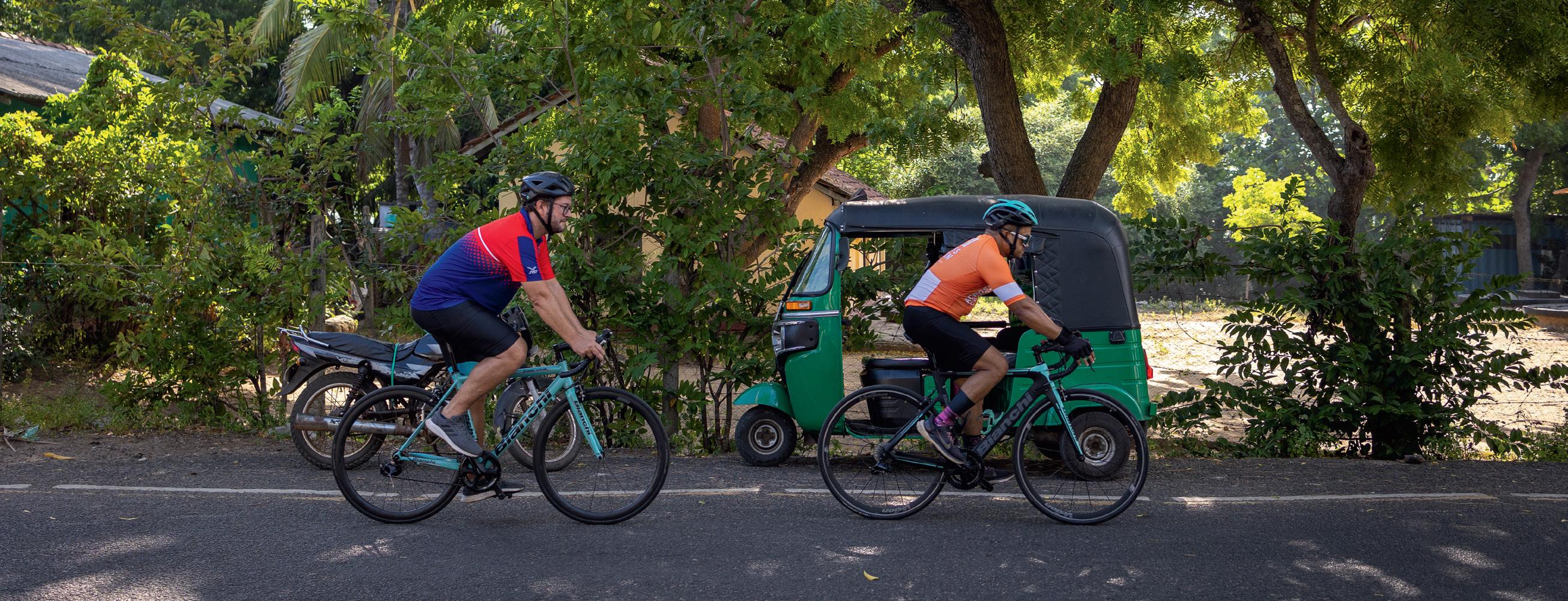
One swiftly averted potential stomping aside, my experience in the country is as idyllic as one could wish for. But Sri Lanka’s tourism industry has suffered more than a few unnerving moments of late. There has been civil unrest, a pandemic and a government that exhausted its foreign currency reserves, sending inflation through the roof.
A public appetite for a new broom was sated in September last year with the landslide victory of Anura Kumara Dissanayake, whose anti-corruption platform played well with a populace weary of political avarice.
Travelling in the aftermath of the election, I’m struck by the optimism among the people I encounter.
“We hope the worst is behind us now,” confirms Rajith. “We are at peace and live in a land of plenty.”
As I pedal past peaceful lagoons and swaying palms on the south coast, and later luxuriate at Ceylon Tea Trails amidst a cathedral of lush greenery, I get an idea of why Sri Lankans might have cause for positivity. I can also
see why the timing is right for the Tour de Resplendent, which adds the thrill of an adventure to the already considerable draw of experiencing the full variety of the Resplendent Ceylon portfolio.
“I’m biased of course,” says Rajith as we take a break from the bikes at a tea shop on the outskirts of Yala National Park. “But I think Sri Lanka has all the ingredients to make it a leading road-bike destination. There’s a lot of quiet minor roads, and there’s a huge diversity of landscapes and terrain to keep cyclists interested.”
I can vouch for this visual stimulus. On the back roads near Tangalle, dragonflies and multihued butterflies flit through the verdant grasslands and between the tamarind and fig trees. Lazy buffalos park themselves in shallow lily-pad-covered lagoons. In the paddy fields, women sporting bright saris harvest the rice that is the staple of the Sri Lankan diet.
FROM TOP: Sri Lanka has the makings of a leading road-bike destination; Ceylon Tea Trails. OPPOSITE: the green rolling hills of Sri Lanka.

Ceylon Tea Trails encompasses four meticulously restored colonial-era bungalows originally built for British tea estate managers during the time of the Raj. Tucked away amidst manicured grounds over 4,000 feet in the highlands near Hatton, these historic residences offer a rare glimpse into life on a working tea estate. Guests can explore well-maintained trails that grant stunning views of the surrounding hills and tea plantations. Glean additional insight on the area’s flora and fauna by engaging the services of one of the resident naturalists. Each bungalow is serviced with a dedicated manager, chef, butler and house staff. Meals and afternoon tea, prepared by a private chef using gourmet ingredients, can be enjoyed indoors or alfresco on the lawn.


Yala National Park, bordering the Indian Ocean and home to one of the densest leopard populations on the planet, is one of Sri Lanka’s treasures. Wild Coast Tented Lodge does justice to its location by offering Asia’s most spectacular stays. The resort’s unique design features structures that integrate with the surrounding wilderness. From above, the lodge’s 28 luxury tents form the shape of a leopard’s paw print, a tribute to the park’s famed residents. Inside, the tent interiors combine the elegance of colonial-era expedition style with modern design innovations. Teak floors, canvas walls, dark leather accents and metallic hardware create a chic, fashionable aesthetic. Alluring trimmings include a free-form infinity pool, daily postsafari sundowners overlooking the ocean and outstanding F&B that ranges from delicious curry spreads to a seafood platter that is arguably Sri Lanka’s best.
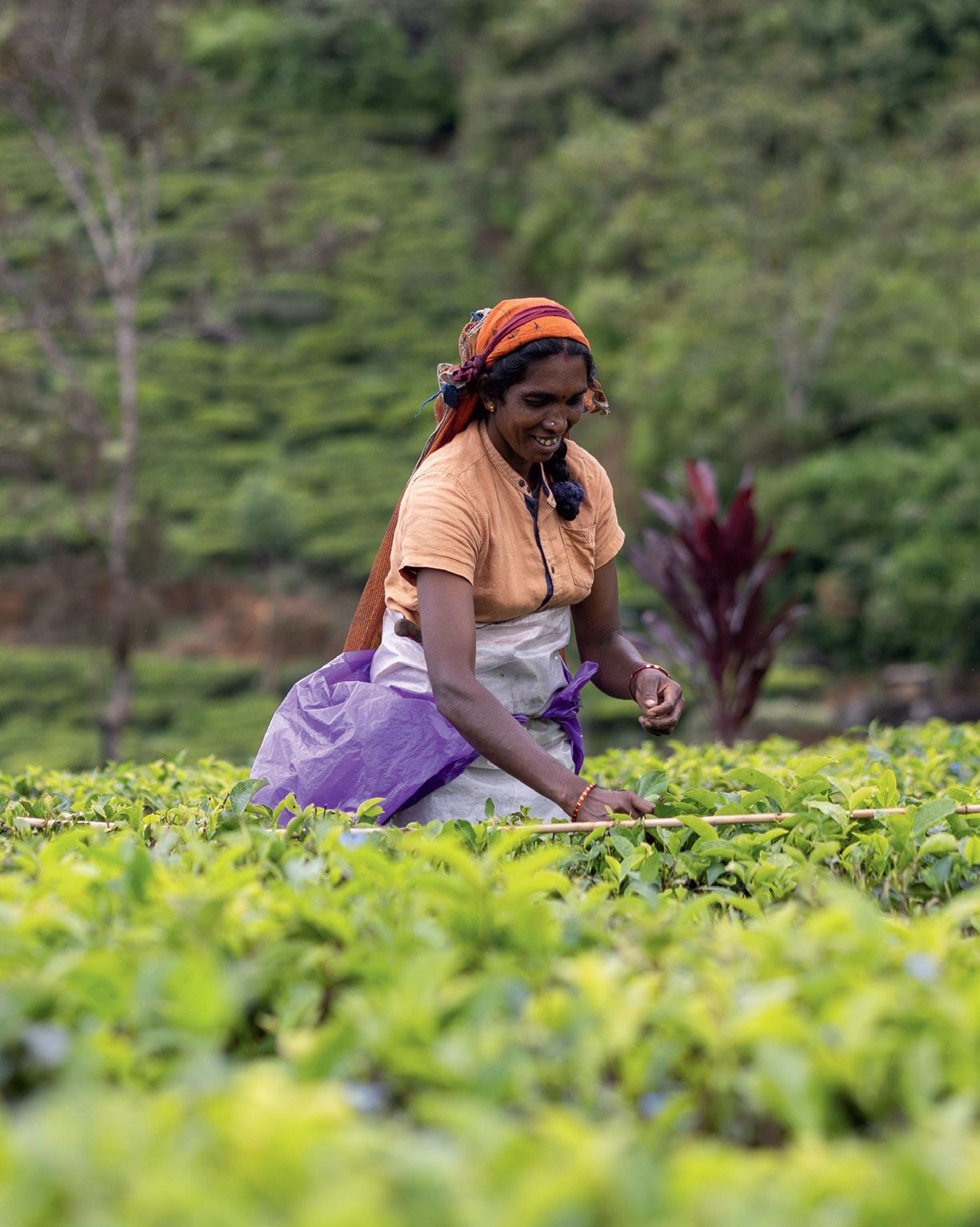
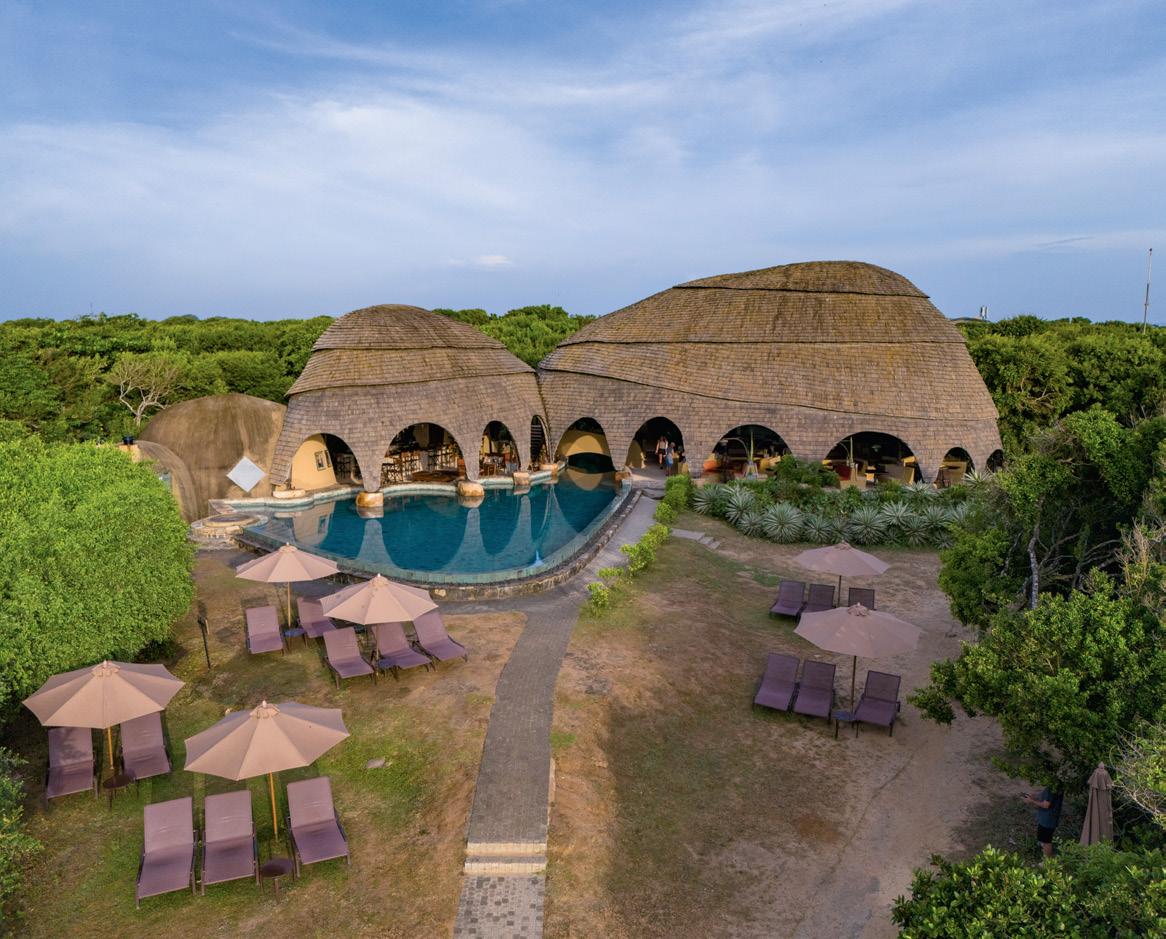
Food is a highlight of the trip, both on the road and at the Resplendent Ceylon properties. Hoppers, bowl-shaped pancakes, are the ideal receptacle for spicy curries and fiery relishes. Highlights of the post-ride repast at the properties include a tea-infused tasting menu at Ceylon Tea Trails and – at Wild Coast Tented Lodge –a seafood platter of fresh lobster, crab and reef fish, dished up under the stars at a beachside table a few metres from the pounding Indian Ocean surf.
Another upside of the truncated ride time is the opportunity to kick back and relax at three of Sri Lanka’s most alluring locations. At Tangalle, I leave the sanctity of the T-shaped pool at Kaayam House for a sunrise paddle around Rekawa Lagoon and long walks along the deserted beach.
Up in tea country at Ceylon Tea Trails, I hike through the tea fields with naturist Wasantha where I learn about Ayurvedic herbs, wildflowers, and the planters – many of them my Scottish forebearers – who introduced tea to this part of Sri Lanka. Back at Norwood Bungalow, where I’m staying, I while away days in the crisp mountain air with time by the pool and gin and tonic-fuelled games of speed croquet on the lawn.
The pinnacle of the trip comes during a jeep safari from Wild Coast Tented Lodge into Yala National Park. Over a dusty but dazzling afternoon, we spot sambars, spotted deer, peacocks, wild elephants and mugger crocodiles. But with under an hour left until park closing time, it looks like the park’s prize quarry – the leopard – will elude us.
Suddenly, a call comes into our driver and our jeep lurches forward. “There’s been a sighting,” says Rehan, our guide. We speed along the tracks amidst a cloud of soot, before stopping at a clearing. Rehan points. “Over there,” he says, directing our eyes towards a female leopard stretching and yawning in the late afternoon light.
We exit the park exhilarated and motivated to hop back on the saddle early the following morning. Bike club in Sri Lanka is an epic that gets its claws in you.
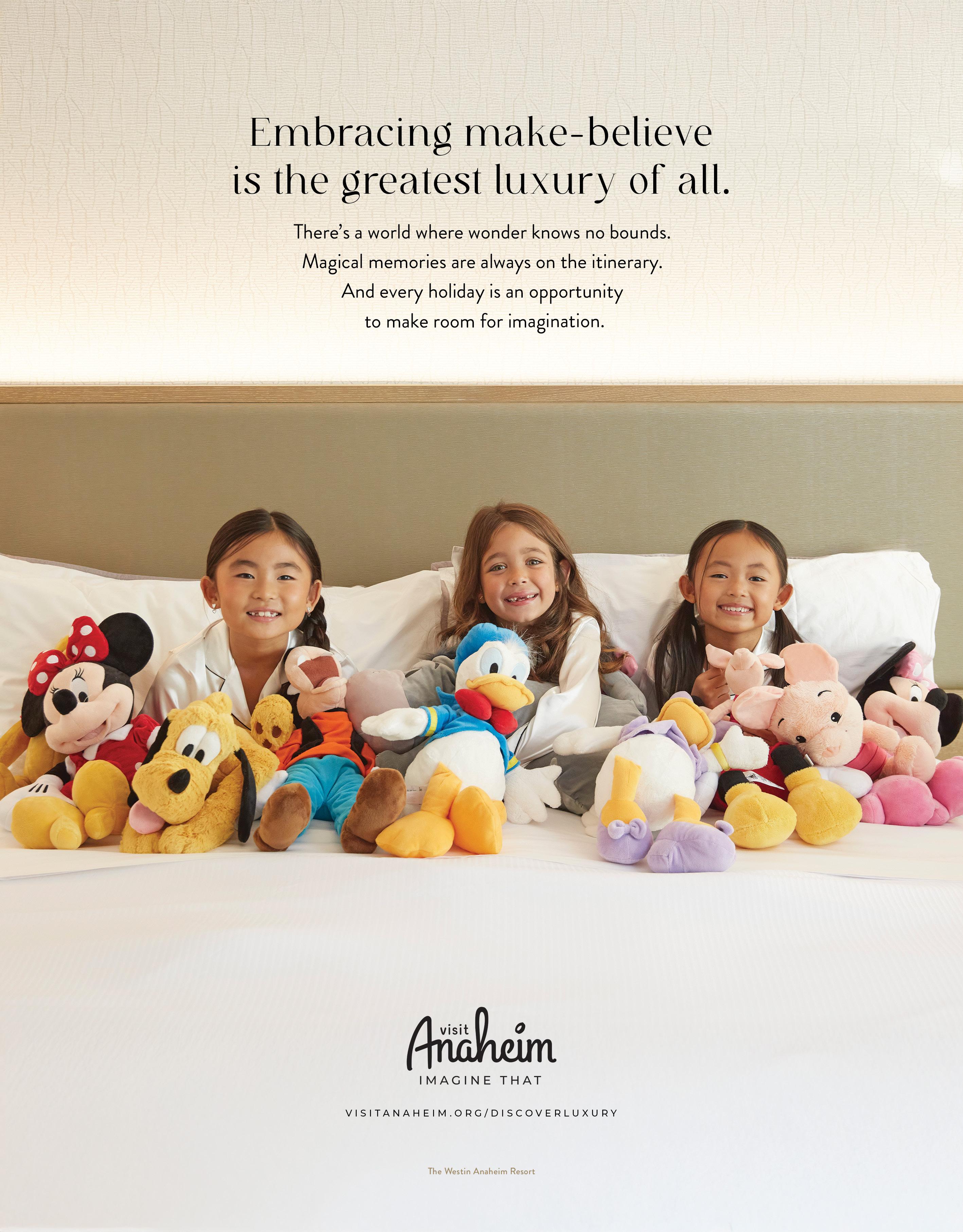
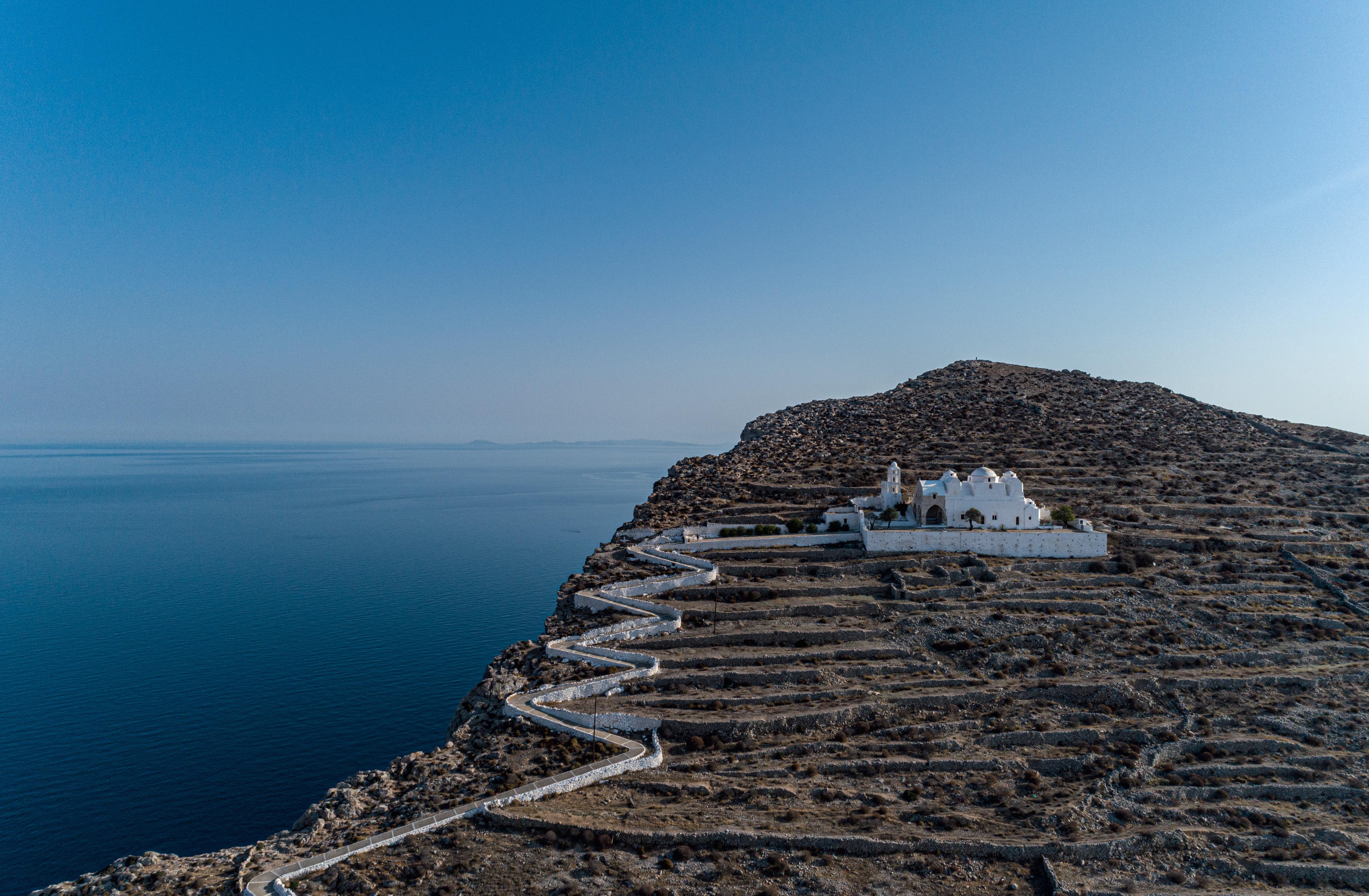
Inspired by their very own “Mamma Mia! fantasy” moment, two Australians have opened the rst luxury boutique resort on the Greek island of Folegandros. Robert Upe discovers that this unspoiled paradise – full of authentic tavernas and beaches all to yourself – may take things slow but it is fast becoming the go-to island for those looking for a more peaceful Cycladic getaway.

Unlike its popular neighbours Santorini and Milos, things move a bit more slowly on the Greek island of Folegandros. ere’s a farmer riding side-saddle on his donkey along a rocky road, and unhurried drinkers sip co ee at the open-air taverna, while dozy cats are draped on windowsills in the town square.
This island in the Cyclades archipelago, a 50-minute ferry ride from its more famous and upbeat neighbours, provides a glimpse of simple rural life. The Greece of old.
Those who take the evening stroll up the zig-zagging pathway to the Church of Panagia are blessed with an uninterrupted sunset across the Aegean Sea and drone-like views of Chora, the island’s picture-perfect, car-free main village of whitewashed houses hugging the sea cliffs.
Folegandros is having its moment in the Aegean sun and has been voted among the world’s top islands in recent years by magazines such as Conde Nast Traveller and Travel + Leisure, and a new Australian-owned resort is making sure that it is set to stay in the spotlight.
Gundari (meaning “rocky place”) is coowned by Ricardo Larriera, a former Sydney advertising executive, and Terry Seremetis, a Greek Australian businessman with a family bloodline to the island.
They have created a rustic and secluded clifftop sanctuary on 32 hectares that blends into the rocky environment so well that parts of it are invisible from the sea.
“When I first saw Folegandros, I was blown away by its beauty and authenticity,” Ricardo says. “It’s a very dramatic island and a place where you really feel like you are going back in time relative to what’s going on in other Greek islands.”
Ricardo, a first-time hotelier, says the idea of running a hospitality business on Folegandros started as “bit of a Mamma Mia! fantasy.” But within a year of opening, Gundari already sits among the finest hotel offerings in the Greek islands, competing with properties such as The Rooster in Antiparos, Skinopi Lodge in Milos and Parilio in Paros.
“I’d say our competitors are other hotels in interesting alternative islands away from the mainstream and off the beaten track,”
Ricardo says. “For me, though, Folegandros ticks all the boxes. It is a magical place that is still very much off the radar.”
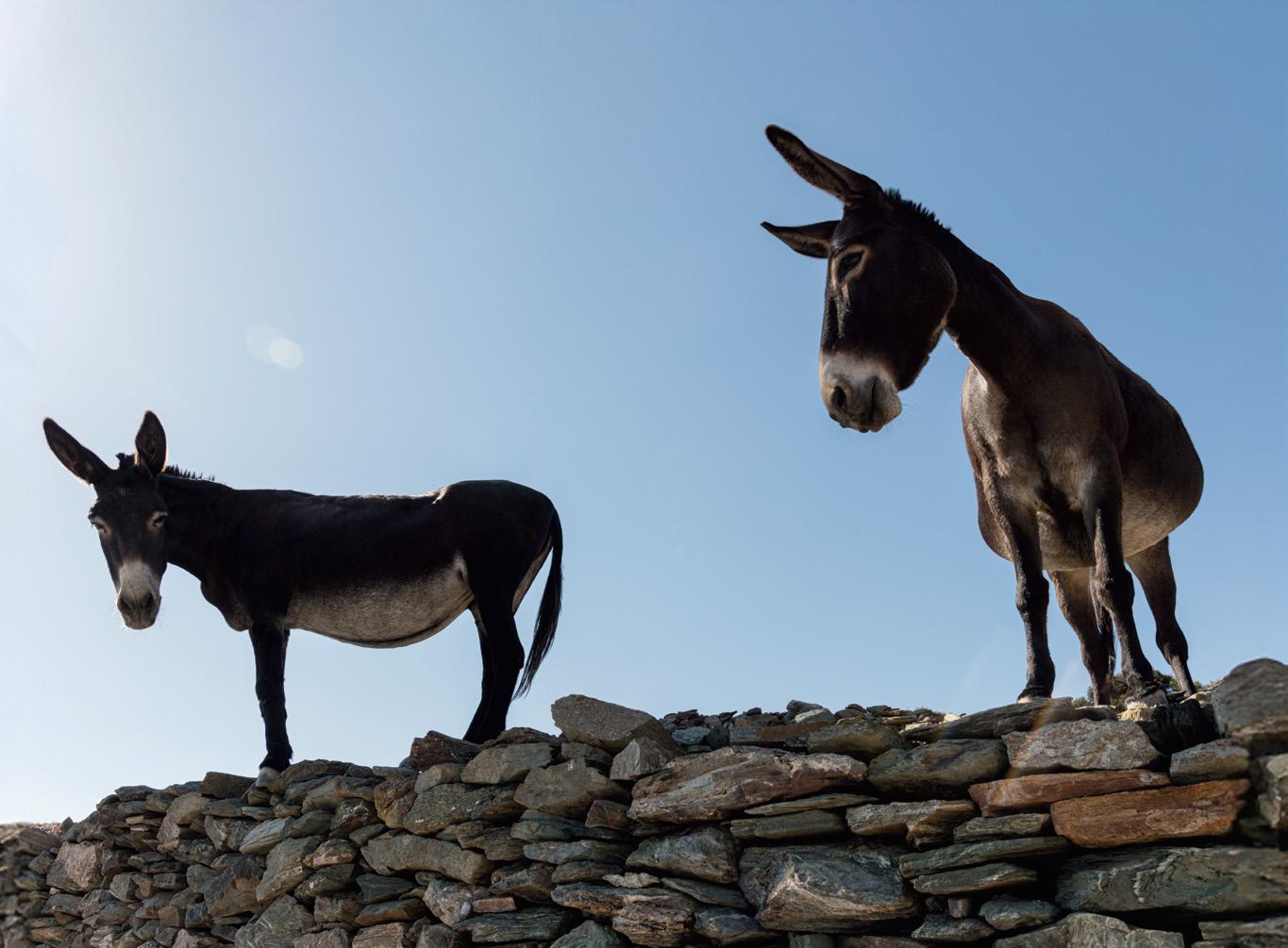
There’s no airport on the island, which has a population of 600 in high season and 300 in the off season, and there are no big cruise ships in the modest port. Nor are there any traffic lights.
“The fact that Folegandros doesn’t have an airport, the fact that you have to go an extra ferry ride to get here means that the tourism here is always going to be sustainable,” Ricardo says. “That’s very important, because you would have seen in the media there is a lot of discussion in Greece about the over-tourism of Santorini and Mykonos.”
Folegandros attracted 50,000 visitors in its best season (2019), hardly a splash in the Aegean compared with the bigger Greek islands which each pull in more than two million visitors annually.
“As a consequence of those numbers, it means you can come here in August (high season), and you don’t have to book a table in Chora like you do at the rest of the islands,” Ricardo says. “You know you are going to get a table in a good restaurant. You know you are still going to be able to go to a beach and be on your own.”
Hired to avoid the blue-and-white Greek Island design cliches, high-end Athens architecture and interior design studio Block 722 has combined stunning stonework, excavated onsite, with warm woods in the contemporary minimalist design at Gundari. Subtle earthy tones and soft furnishings dominate inside, with marble, timber and clay surfaces.
Private terraces with outdoor showers, double sunbeds and infinity plunge pools all face south, with the buildings cleverly sheltering the terraces from the northern meltemi winds that can blow in.
Just beyond my infinity pool I can see sure-footed and shy goats grazing on the cliff edge, while overhead Eleonora falcons soar in the coastal thermals. One misstep by the goats would have them falling calamitously to the azure water far below, but it is the falcons that are endangered. Gundari, true to its ethos of sustainability, has embarked on a joint conservation project with universities in Athens and Crete to boost bird numbers.
The resort also has a policy of no single-use plastic, has a fleet of electric vehicles, is working towards zero waste, uses solar energy and has planted 600 indigenous seedlings. It’s certified by Earthcheck, which is the world’s leading certification group for sustainable destinations and tourism.
The sustainability extends to getting around the island and guests can hire cute Mini Moke or Fiat 500 electric cars with retractable roofs or rely on Gundari’s free shuttle service into Chora, three kilometres away.
Electric bicycles are available, but the dirt access road into and out of Gundari is rattling. There are plans for the road to be improved, although many guests don’t seem to mind because it adds to the resort’s remoteness.

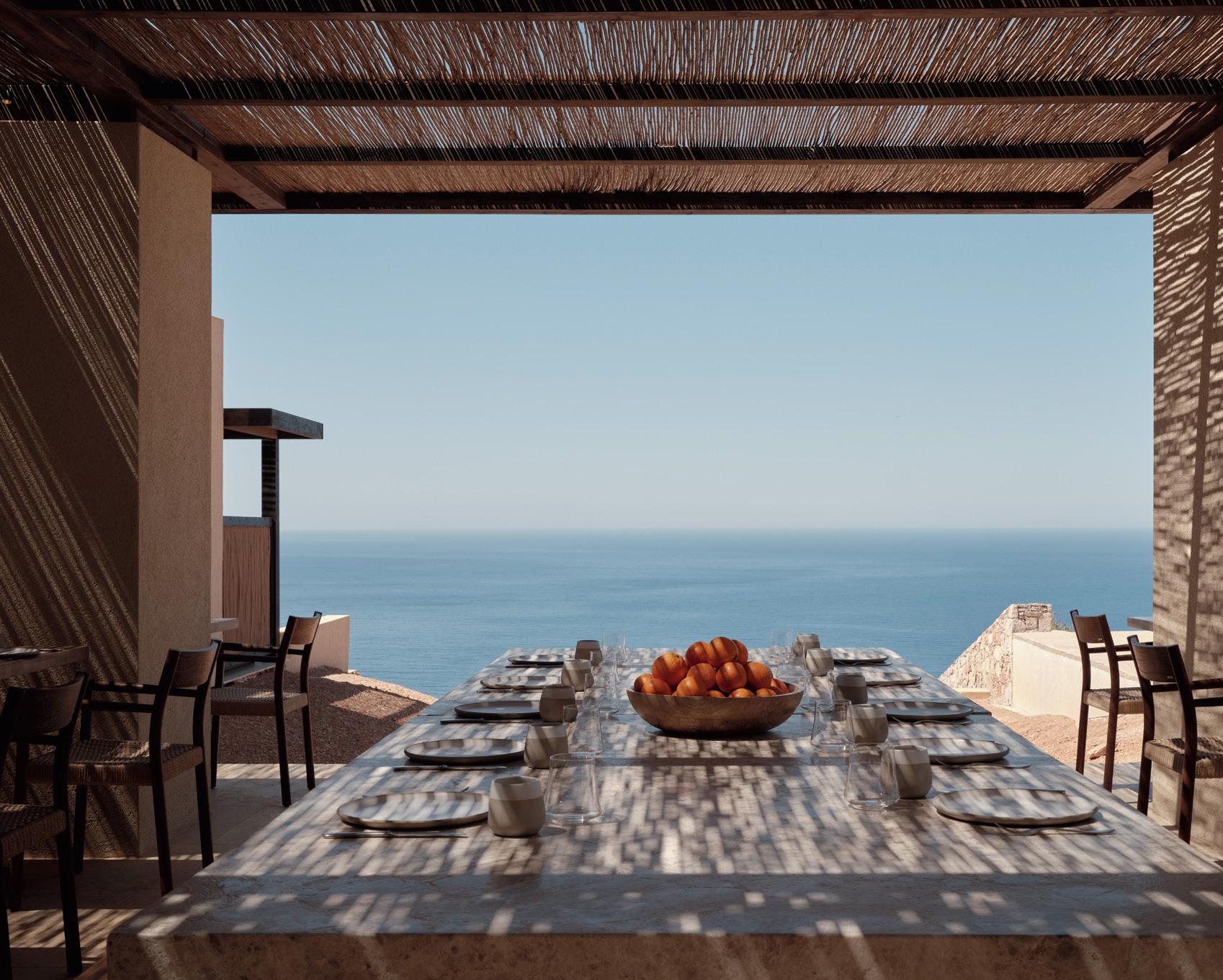
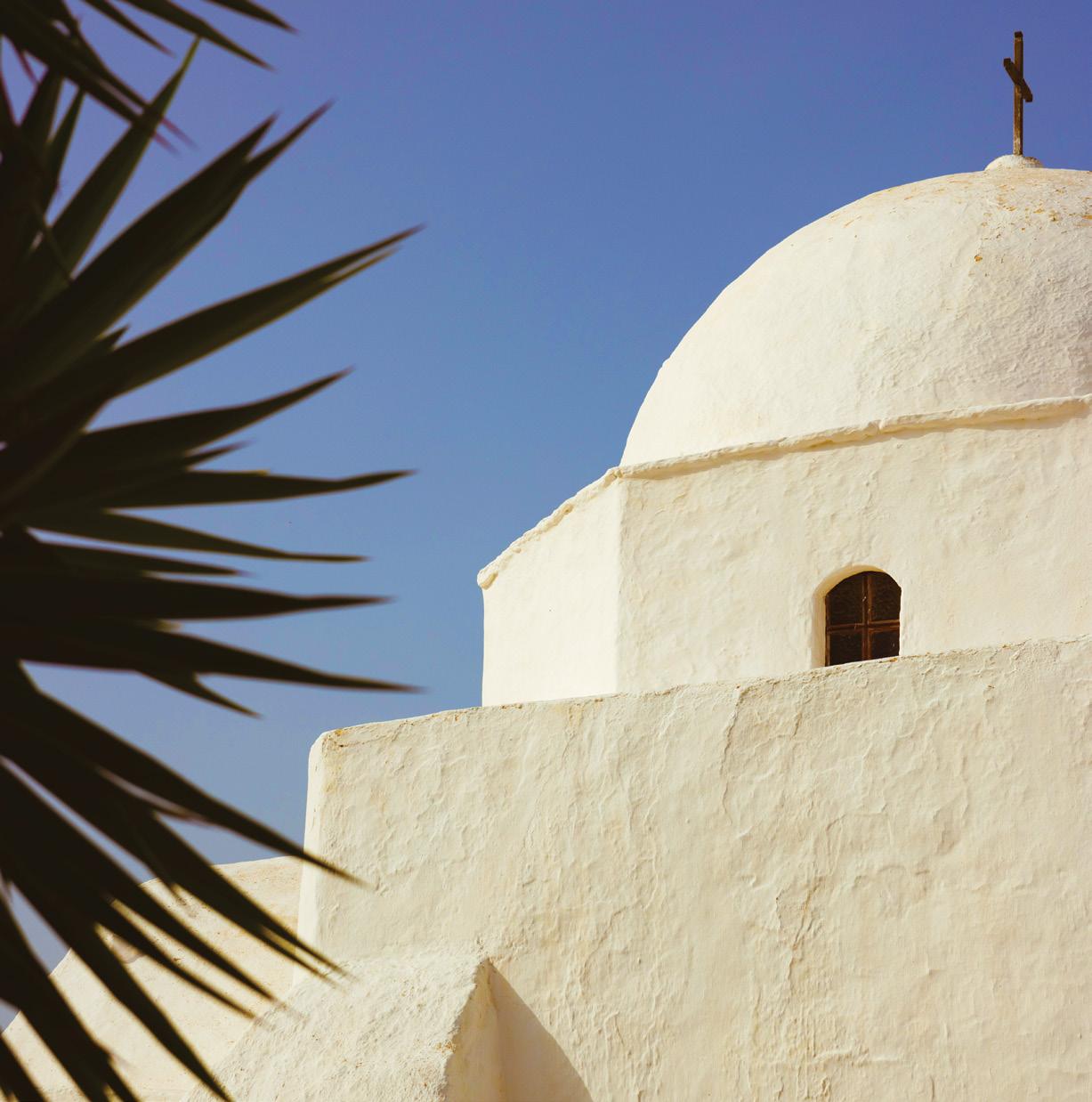
Explore Greece with us

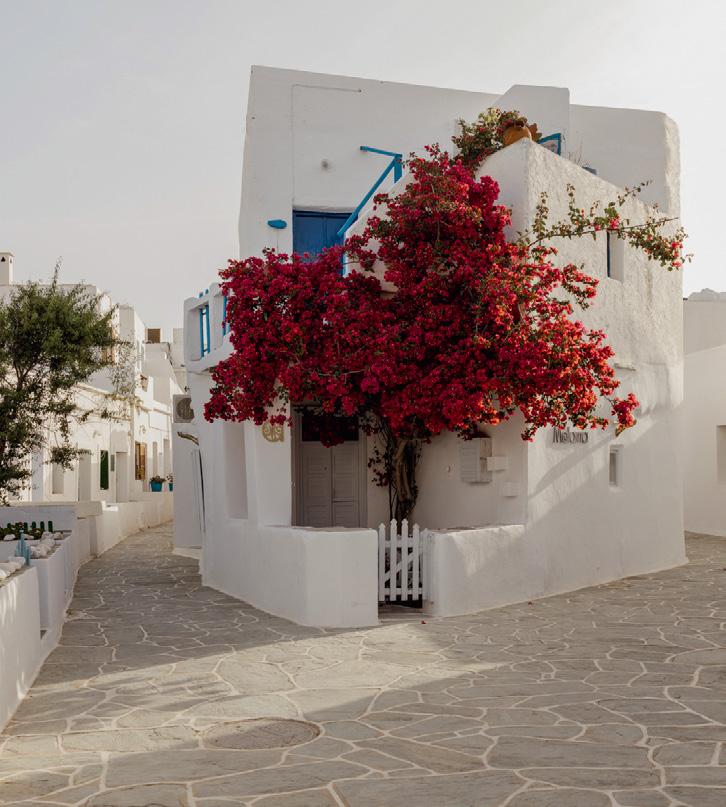

Greece’s first Michelin-starred chef, Lefteris Lazarou, has curated the fine-dining menu for Gundari’s restaurant Orizon, which is slanted heavily towards seafood.
Fish soup flavoured with saffron, ceviche sea bream, eggplant with smoked eel, octopus carpaccio and cod fillet with smoked pancetta cream are among the dishes that vary seasonally.
Generous breadbaskets, Greek omelettes with olives, scrambled eggs with goat cheese and crepe suzette taken in the open courtyard (with sea views) provide a dreamy start to any day.
The island has about 10 beaches, many secluded in small coves. One day I head for Agios Nikolaos, recommended by hotel reception.
The beach is reached via a tiny cluster of buildings where the road ends at the sea. From there, it’s a 20-minute walk along an undulating hilltop track that hugs the coast, or a five-minute boat ride.
The meltemi is blowing and whipping up the sea, so the small boats aren’t operating when I visit. But the track is easy enough, and towards the end it weirdly meanders into and out of the hyped Papalagi seafood restaurant perched on a hill.
While passing through I book a table for lunch, to ensure a front-row seat on the deck overlooking the cove.
Lunch at Papalagi is as Greek as it comes – dolmades stuffed with shrimps; dill and fresh yoghurt; saganaki; traditional Greek salad with local cheese, and grilled octopus washed down with ice-cold Mythos.
If you want to make an evening of it at Papalagi, Gundari will arrange private speedboat transfers to the Agios Nikolaos cove. The resort offers boat trips to other isolated nooks along the Folegandros coast, as well as nearby islands such as Milos, Sifnos and Sikinos where you can have a sunset dinner at Sikinos Winery.
Diving, snorkelling and hiking are available, as well as cooking classes with Folegandros yiayia (grandmother) Irene Psaromilingou.
Irene runs a small restaurant and grocery store with her daughter in the village of Ano Maria, so if you’re not doing her cooking class through Gundari you can travel to her store for dinner.
A public bus from Chora to Ano Maria costs two euros one way for the fourkilometre journey. There are a few locals on board, and an enthusiastic British couple returning to Irene’s for a third meal there.
The food is simple, homestyle and traditional Greek, such as the handmade pasta called matsata. Irene doesn’t have a menu to hand you, but you’ll be told what’s available.
Chances are it will be the matsata with braised rooster, rabbit or goat, or meatballs in red sauce, or pork in lemon sauce.
There are just a few small wooden tables, topped with tablecloths covered by clear plastic. The shelves around the store are packed with grocery items.
Chora, the main town, is built on the edge of a 200-metre sea cliff and has a good restaurant scene with open-air tavernas scattered around the village’s three squares and along its stone-paved lanes.
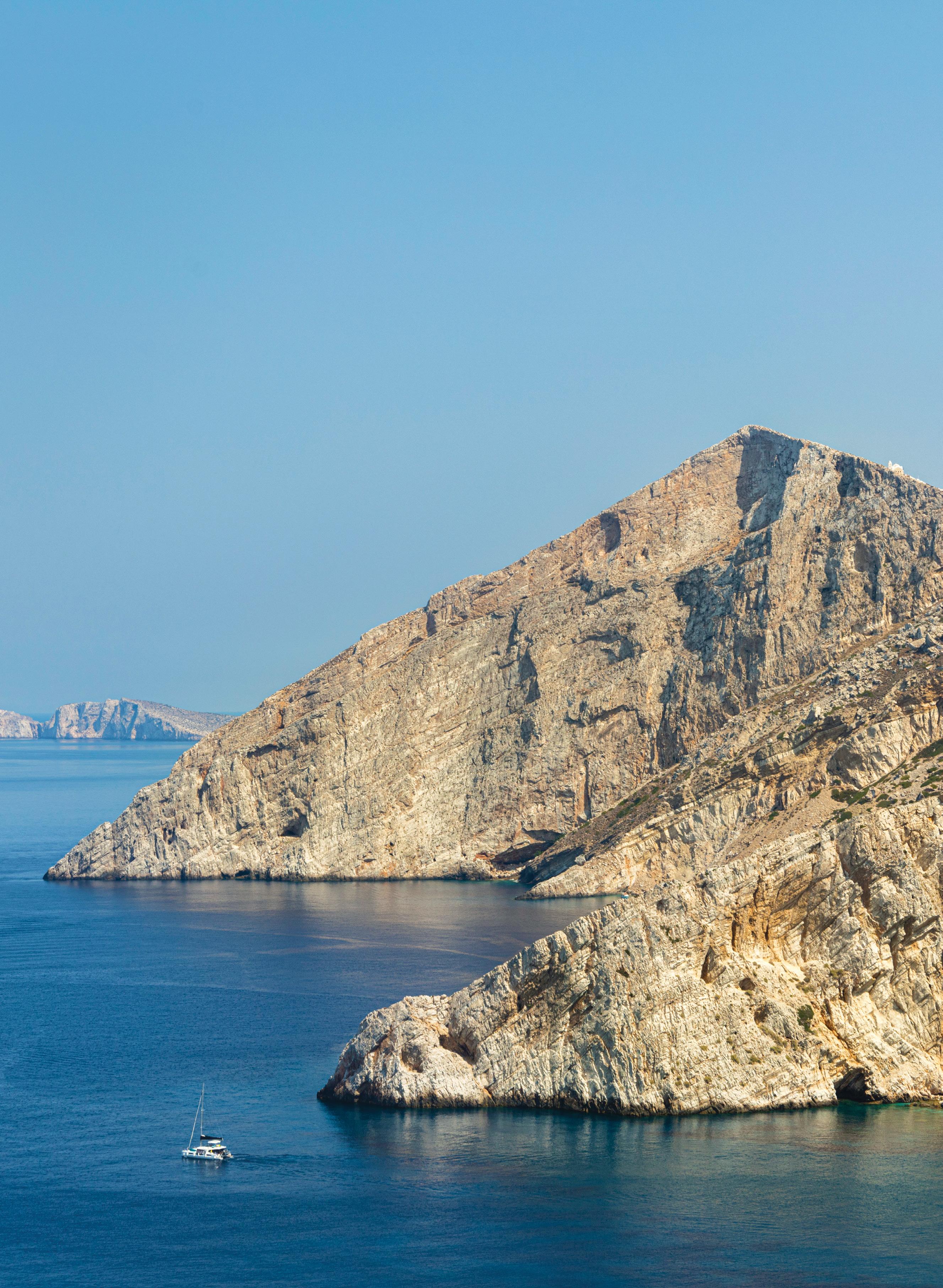


There are places playing traditional music, bars that get going after 11pm, shops selling Greek handicrafts and souvenirs, and icecream parlours – many of them whitewashed, accented with blue doors and windows, and draped in purple bougainvillea.
There’s a carpark at the edge of Chora where all cars need to be left, but there are so few vehicles that a spirited street soccer match between local kids takes place unimpeded. A few donkeys watch the match over a stone wall that keeps them corralled.
On my final evening in Folegandros, I take the zig-zagging path from Chora to the Church of Panagia, which offers one of the best vantage points for a Greek island sunset anywhere in the Cyclades.
With others, I sit on the church’s perimeter stone wall and, in silent contemplation, watch the blazing orange sun sink into the Aegean.
A yacht with a white sail against the blue sea moves across the horizon from west to east, destination unknown. It’s going slowly, of course.
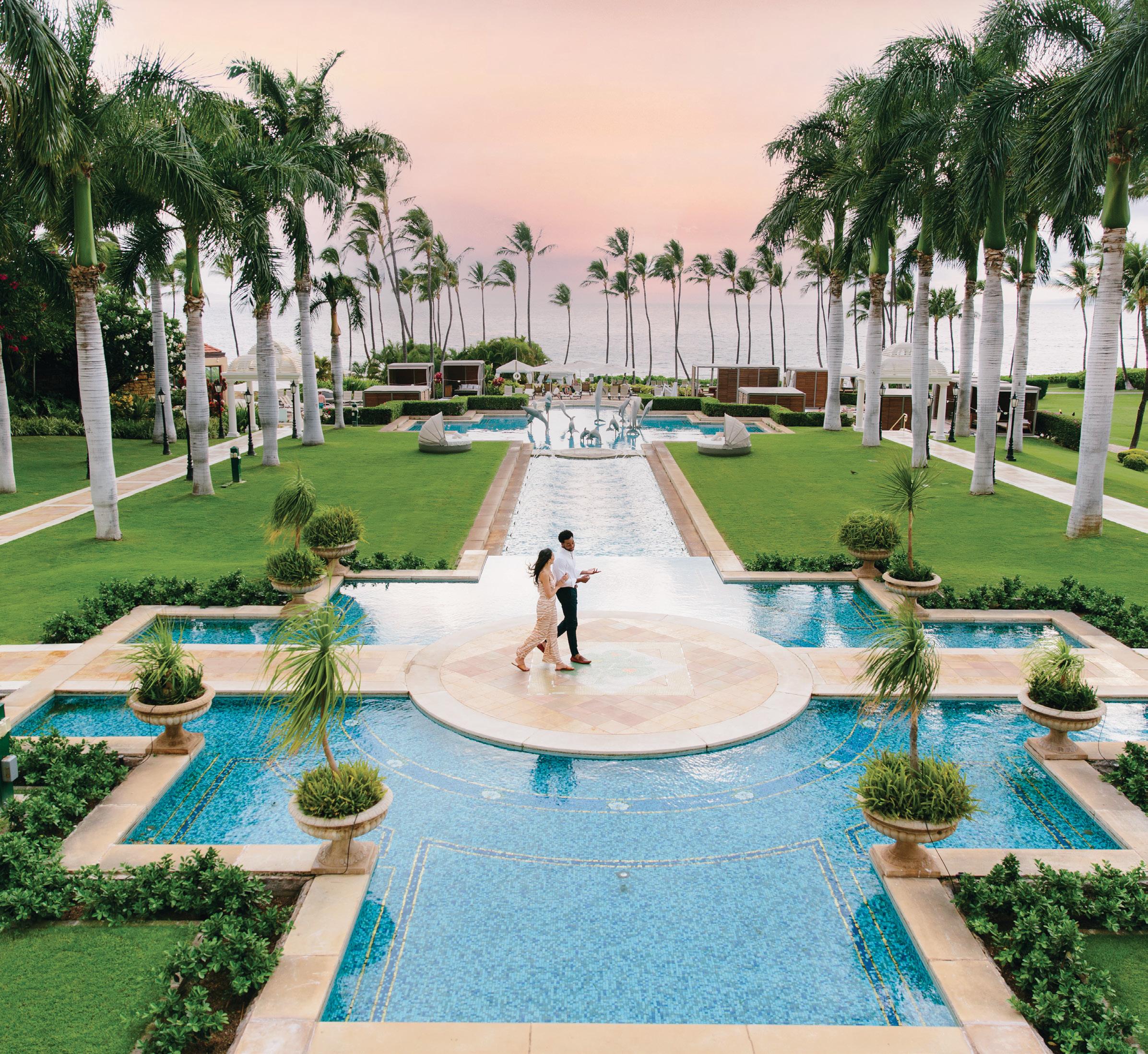
Whether you are thinking of Elvis Presley sporting an aloha shirt or elegant wahines in grass skirts, seeking a tiki bar or a Jurassic Park jungle, you’re one of the many visitors to Hawaii who have had their ideas of this tropical paradise forged by Hollywood. Rachel Ng gives us the lowdown on where to nd Tinseltown in Hawaii – as well as some genuine local avour.

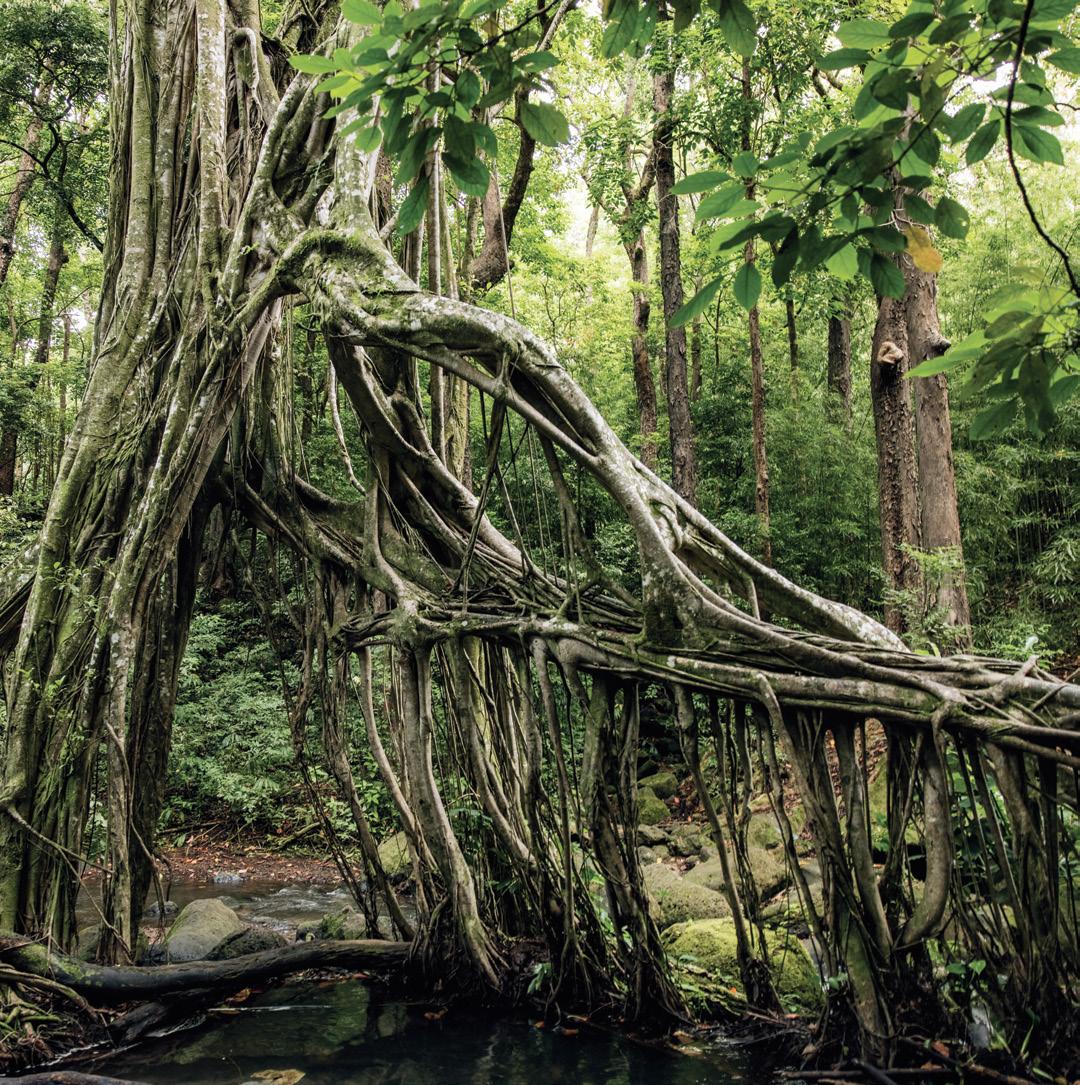
Cascading waterfalls, lush rainforests, otherworldly lava fields, all surrounded by crystal-clear water crashing into powdery white sands – Hawaii’s diverse landscape is the natural backlot for hundreds of Hollywood movies and TV shows. The chiselled Napali Coast starred in The Lost World: Jurassic Park and the luxe Four Seasons Resort Maui at Wailea stole the spotlight on HBO’s The White Lotus
Hawaii has also been a favourite for visiting Tinseltown celebrities with the likes of Janet Leigh, Clark Gable and Charlie Chaplin stepping out of cruise ships and planes, being draped in layers of leis, and then whisked away to a luxury resort where they spent their week sipping mai tais by the pool. On and off screen, Hawaii became the ultimate fantasy vacation destination.
For cinephiles nostalgic for Hollywood in Hawaii – and for those who want to experience the behind-the-scenes of their favourite blockbuster – here are the best set-jetting locations.

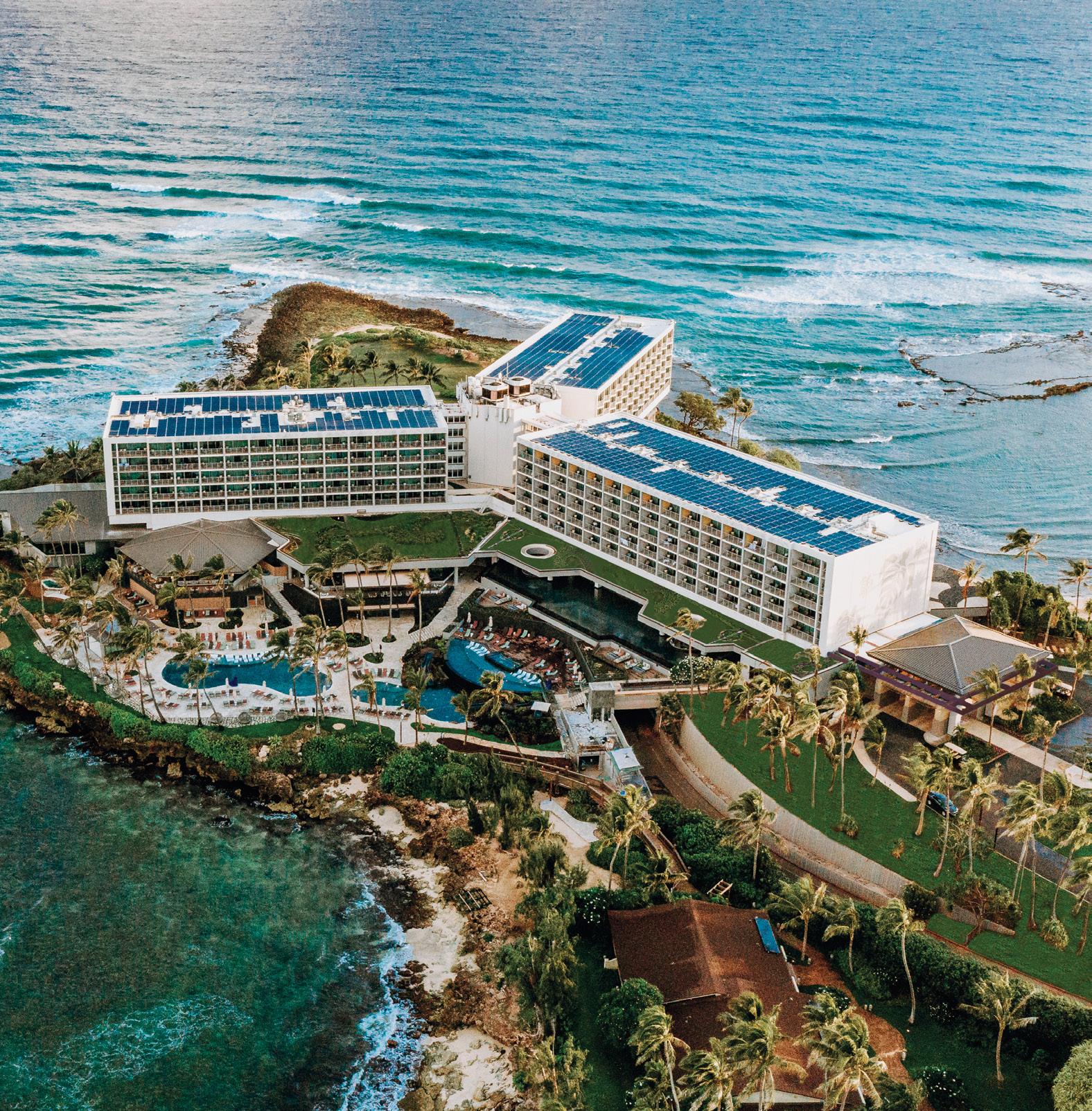
When it comes to Maui, its pristine beaches may have played host to James Bond in his 2002 outing Die Another Day filmed in Peahi (known to surfers as Jaws) on the north shore. But compared with the other islands, Maui’s fame factor lies squarely in its luxury hotels, especially in the resort community of Wailea.
HBO’s The White Lotus made a splash in 2021 with a witty look at a group of wealthy vacationers and the staff at the fictional White Lotus resort in Hawaii. Fans were thrilled to learn that the scene-stealing resort does exist in real life. The Four Seasons Resort Maui was camera ready from day 1, with a manicured courtyard, cascading waterfalls, a grand staircase, marble floors, and massive columns. Steps from the hotel, Wailea Beach is where the families snorkelled and where young Quinn Mossbacher (Fred Hechinger) went on an outrigger canoe ride. Adam Sandler and Jennifer Aniston lounged by the same beach in the 2011 romantic comedy
Just Go With It, after their characters checked into the Grand Wailea, A Waldorf Astoria Resort. Fans of the movie can shop for gifts at the hotel’s boutique shops, take a dip in the adults-only 4,850-square-foot Hibiscus Pool, or follow the casts’ lead and spend an unforgettable evening watching fire breathers and hula dancers at the resort’s Grand Lūau. Not to be outdone, the sun-drenched Ritz-Carlton Oahu, Turtle Bay (formerly Turtle Bay Resort) on Oahu was the perfect setting for Jason Segal and Mila Kunis’ characters to fall in love in Forgetting Sarah Marshall. After making its small-screen debut on Magnum P.I. in 1981, the luxury resort on Oahu’s North Shore became the location of choice for dozens of movies and shows like Along Came Polly, The Hunger Games: Catching Fire, Blue Crush, Lost and Hawaii Five-0 Whenever a camera pans over the shores of Waikiki, it inevitably zooms in on the Rainbow Tower at the Hilton Hawaiian Village.
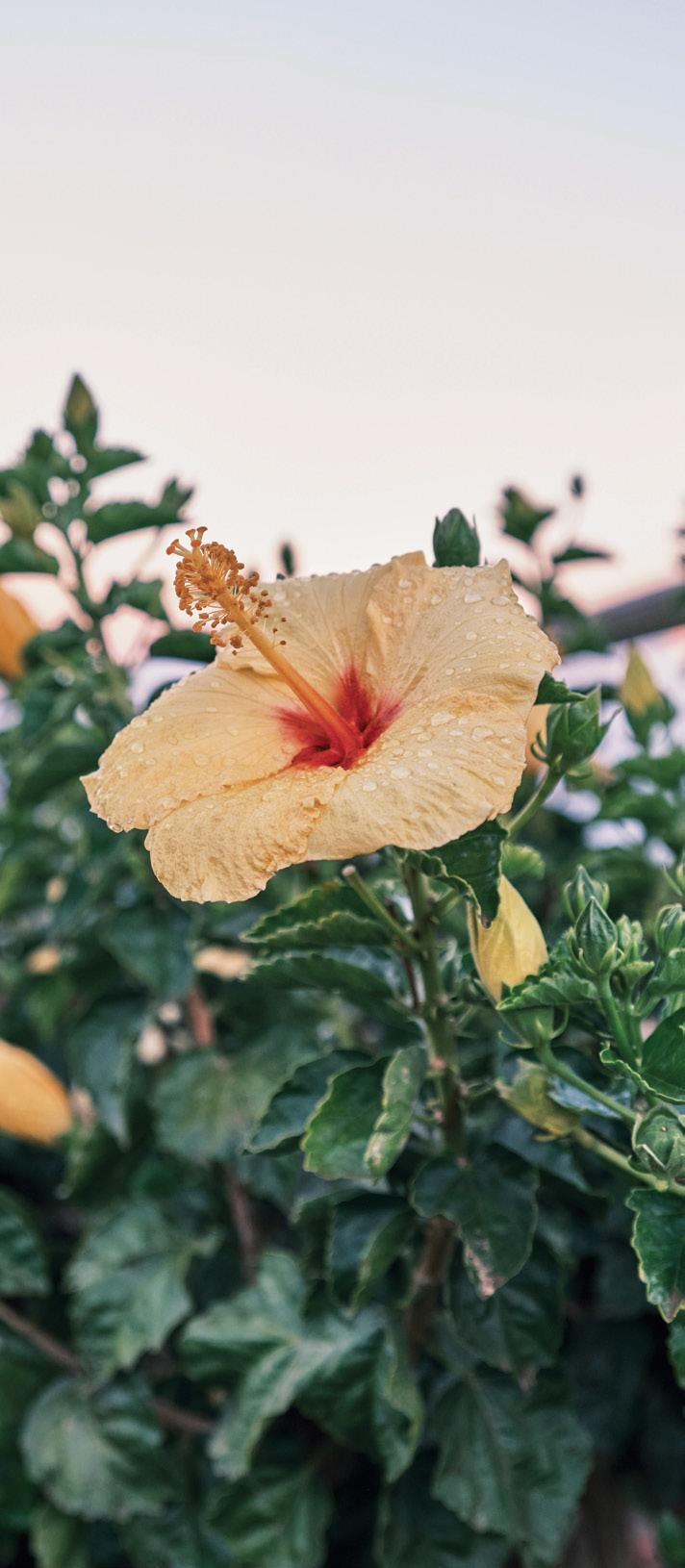
The landmark building features the vibrant Rainbow Mural, one of the world’s tallest mosaics which was made with 31,000 handpainted ceramic tiles. Since its dedication in 1968, the mural has appeared in blockbusters like Godzilla, as well as hit shows like Hawaii Five-0, Magnum P.I. and NCIS: Hawaii. The hotel was also the preferred accommodation of Elvis Presley whenever he visited Hawaii.
Another iconic hotel on Waikiki, the striking Royal Hawaiian Resort, aptly nicknamed the Pink Palace of the Pacific, was prominently featured in the Punch-Drunk Love movie poster and the scene when Adam Sandler’s character met – and kissed – Lena, played by Emily Watson. The timelessly romantic hotel was also the wedding location for the main characters in Big Eyes and the honeymoon destination of Don and Megan Draper in AMC’s Mad Men
Nicknamed the Garden Isle, Kauai is a favourite of action-adventure directors who want to capture the verdant essence of the island. With only 10 per cent of its land developed, Kauai is a throwback to “old” Hawaii and its pristine topography is the perfect backdrop for movies like Tropic Thunder, Jurassic Park and its sequel, and Pirates of the Caribbean: On Stranger Tides. Who can forget the aerial shot of the dramatic, prehistoric-looking cliffs along the Napali Coast on Kauai’s North Shore, or when Indiana Jones ran through the treeshrouded rainforest and swung into the Huleia River in Raiders of the Lost Ark? Both locations can be seen from above on a helicopter tour – arguably the best way to explore the island.
The island of Hawaii is home to two of the most active volcanoes in the world – Kilauea and Mauna Loa – and the island’s inky-black lava terrain and lush rainforests set the stage for sci-fi and fantasy blockbusters. Tim Burton’s Planet of the Apes was in part filmed in the Puuhonua o Honaunau National Historical Park and Kohala on the northwest tip of the Big Island, while Arnold Schwarzenegger’s Predator took advantage of the Mauna Kea’s desolate panorama to evoke a sense of isolation. In Pirates of the Caribbean: The Curse of the Black Pearl, Johnny Depp’s Jack Sparrow and Orlando Bloom’s Will Turner strolled along the ethereal Punaluu black-sand beach, a popular picnic spot for locals and a sunbathing respite for green sea turtles.

On Oahu, many filmgoers will recognize the emerald-hued Kaaawa Valley and the rugged Koolau Mountain Range, which provided the backdrop for more than 200 movies and TV shows, including Jurassic Park, 50 First Dates, Lost, Magnum PI, and Hawaii Five-O. On Kualoa Ranch’s “Hollywood Movie Sites Tour,” visitors board a vintage school bus and are driven to sites including the boneyard from Kong: Skull Island, Godzilla’s colossal footprints and a historical WWII army bunker.
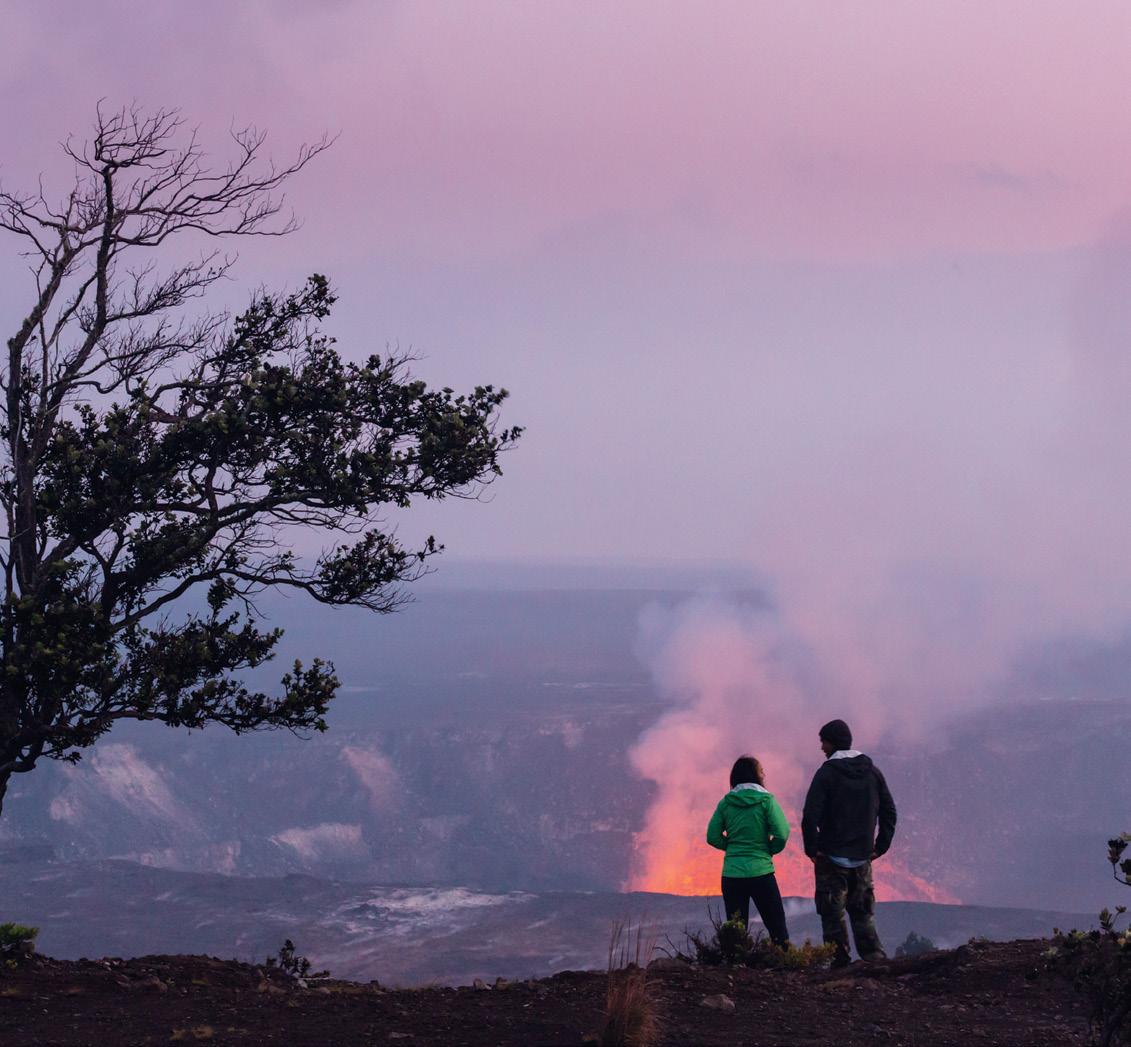
Although it’s easy to be captivated by Hollywood’s portrayal of Hawaii, it’s equally crucial to understand and respect the islands’ actual history and culture. In the last two decades, tourism in Hawaii has evolved into a more grounded experience, where visitors seek out authentic Hawaiian culture, like hula (sans the coconut bras), weaving and oli chants. Taking the lead from locals and cultural practitioners, tourists want to discover the real Hawaii, including learning about the history of the Hawaiian Kingdom.
Discover how the early Polynesians sailed to and lived on the islands at the Bishop Museum. The displays throughout the Hawaiian Hall tell the stories of Hawaiian gods and legends, as well as how the people worked the land and fished pre-contact. And get acquainted with the islands’ kings and queens, who ruled Hawaii prior to being illegally overthrown in 1893, by visiting the Iolani Palace. A National Historic Landmark, the palace was the home of King Kalakaua II and his successor, Queen Liliuokalani, and it was the only official royal residence in the U.S. – and one of the first royal residences in the world to be illuminated by electricity.
Hollywood may love to shine a light on Hawaiian culture but you can never beat the real thing,
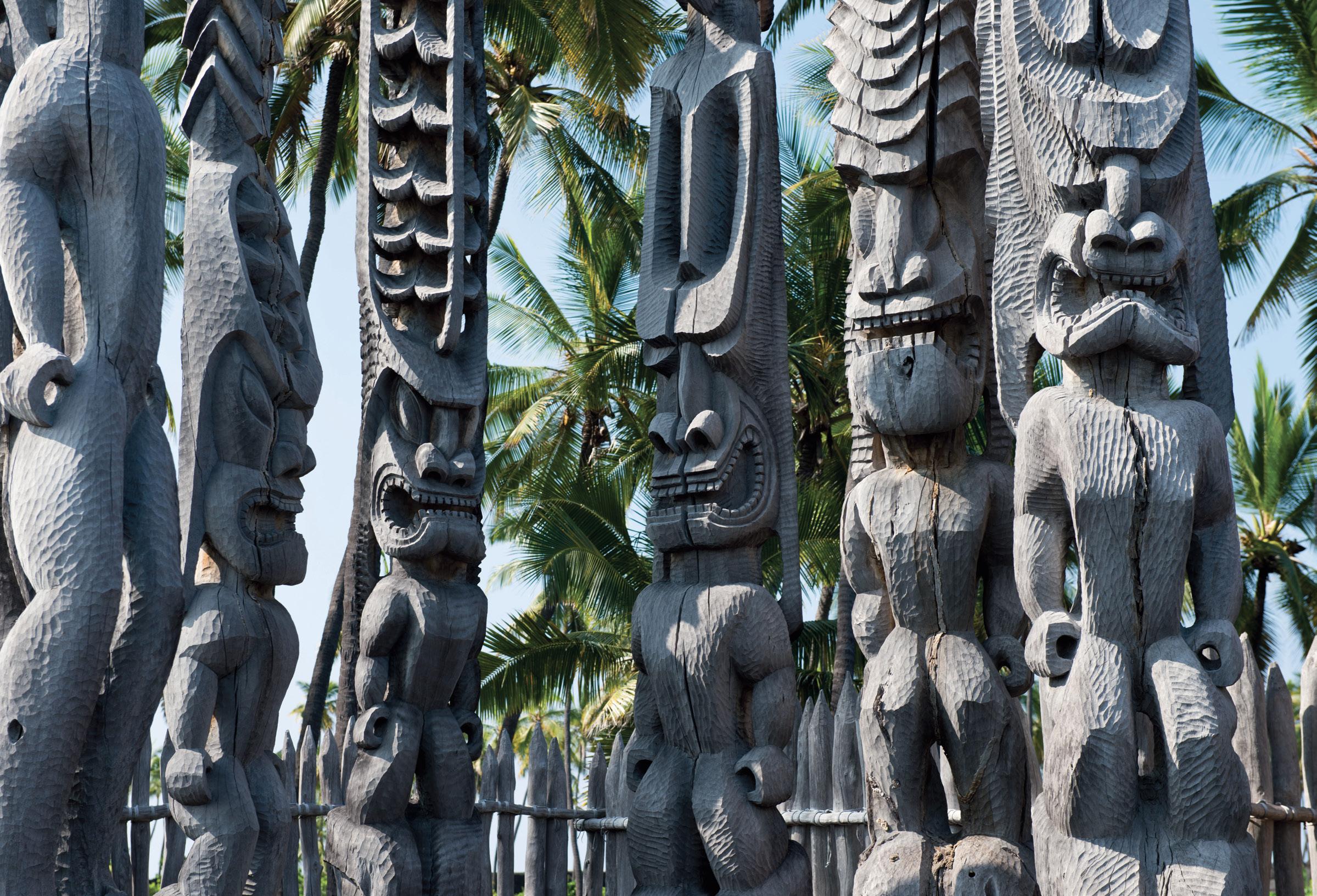
While a lot of people may associate tiki bars with Hawaii, the concept was actually a Californian invention. In the 1930s, Donn Beach (born Ernest Raymond Beaumont Gantt before embracing the moniker Don the Beachcomber) dreamt up the first Hollywood tiki bar with a quirky Polynesian-inspired tropical decor and rum-infused cocktails. Beach’s success was followed in the 1940s by Victor J. Bergeron (aka Trader Vic), who invented the mai tai and opened his own tiki bar in Oakland, California. The duo sparked a tiki craze among Hollywood elites that leaned into escapism and fantasy.
Donn moved to Honolulu and, in 1956, opened the International Market Place, a tourist hotspot in the heart of Waikiki, and thus brought his own kitschy, hodgepodge vision of Polynesian culture to Hawaii. Yet, it’s notable that during that time, Hawaiians were forbidden from practising elements of their own culture, including hula
dancing and speaking their native language. “Tiki was introduced with many of these other misconceptions about the culture,” says Kainoa Daines, Senior Director of Culture and Product Development for the Hawaii Visitors & Convention Bureau. “The tourism industry back then said, ‘Let’s just use them and have fun with it,’ not realising they were actually making fun of Hawaiian culture instead.” The word “tiki” is used by the Maori from New Zealand. “Our word is ‘ki’i,’” says Kainoa. “We’ve had ki’i in Hawaii for millennia – wooden and stone idols that represented Hawaiian deities and family guardians. At one time, ki’i was worshipped and prayed to.”
While tiki is not authentic to Hawaiian culture, the craft cocktail scene on the islands continues to thrive, with many bars attracting tourists who are nostalgic for the playful aesthetics of yesteryear. Here are five tiki bars to check out on your next visit.
Kick off the tour of tiki bars at Royal Kona Resort’s Don’s Mai Tai Bar & Restaurant, the last remaining Don the Beachcomber location in Hawaii. Belly up to the bar and order a taster flight of mai tais that includes Don’s original, a sample made with mango rum and melon liqueur, and one with coconut rum and pineapple juice. Toast to the sunset at Kailua-Kona’s largest openair oceanfront bar or listen to live Hawaiian music every Thursday.
Tahiti Nui is a classic joint that has been a favourite among locals and tourists for decades. Original owners Bruce and Louise Marston met in Tahiti, fell in love, and got married, before moving to Kauai to open Tahiti Nui in 1964. Now run by the couple’s son, Christian, the intimate restaurant and bar still serves a classic mai tai and old-school coconut shrimp and macadamia-nut-crusted fish. Moviegoers will recognise it as the bar where George Clooney and Beau Bridges meet up in The Descendants
Breezy and oozing with old-school charm, La Marina Sailing Club is a private marina and restaurant that opened in 1957 on Sand Island. It’s a time capsule and one of the last original tiki bars from a bygone era. The décor is made up of furniture from shuttered tiki restaurants, including a rattan chair from Don the Beachcomber’s, pufferfish lamps from Trader Vic’s, and carved tikis from the Sheraton’s Kon Tiki Room. Sip on a mai tai (of course) or a creamy Blue Hawaii (an ode to the Elvis classic) and watch the boats bob in the marina, or listen to the nightly piano music. Be sure to pick up a souvenir tiki mug at the gift shop.
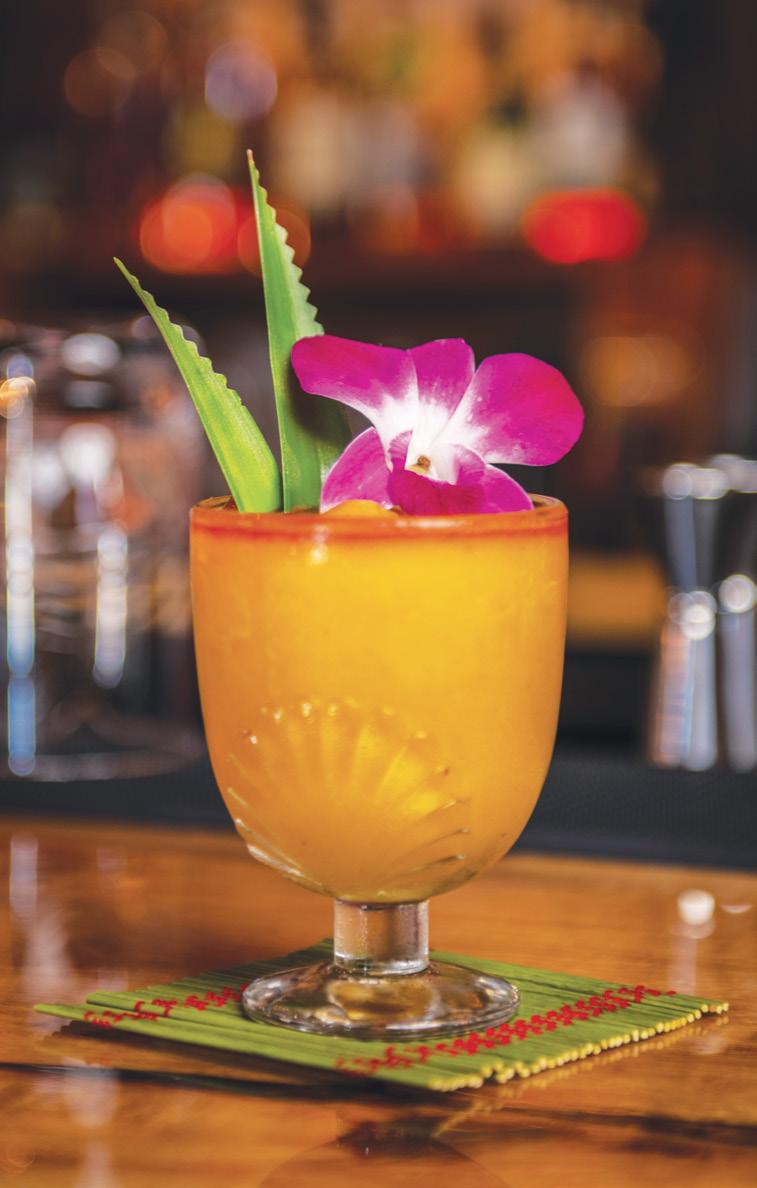
The newly opened Tikehau Lounge is a modern, artful interpretation of a tiki lounge in Wailea Village. Chic and fun, Tikehau features a Polynesian-inspired menu of small bites like poisson cru, kalua pork sliders, and lomi lomi shooters, as well as a focus on craft cocktails made with freshly squeezed juice. Order the Banana Stand with KōHana Kea Rum and fresh bananas or the 1944 Mai Tai with macadamia nut orgeat – both drinks are sure to put anyone in a holiday mood in an instant. Come for the drinks, and stay for the music: every second and fourth Saturday, a DJ spins tunes.
Let loose and have fun at the Skull & Crown Trading Company in the heart of Chinatown. A cross between Disneyland’s Enchanted Tiki Room and Pirates of the Caribbean ride, Skull & Crown is filled with tchotchkes that range from whimsical (pineapple lamps) to strange (“human” heads in glass jars, wild hog taxidermy). The items on the drink menu are also works of art, with concoctions like the Trader Noa’s Old Fashioned served with kiawe smoke and a skull lid, and the secretive Dagger Mai Tai (the ingredients are blanked out on the menu).
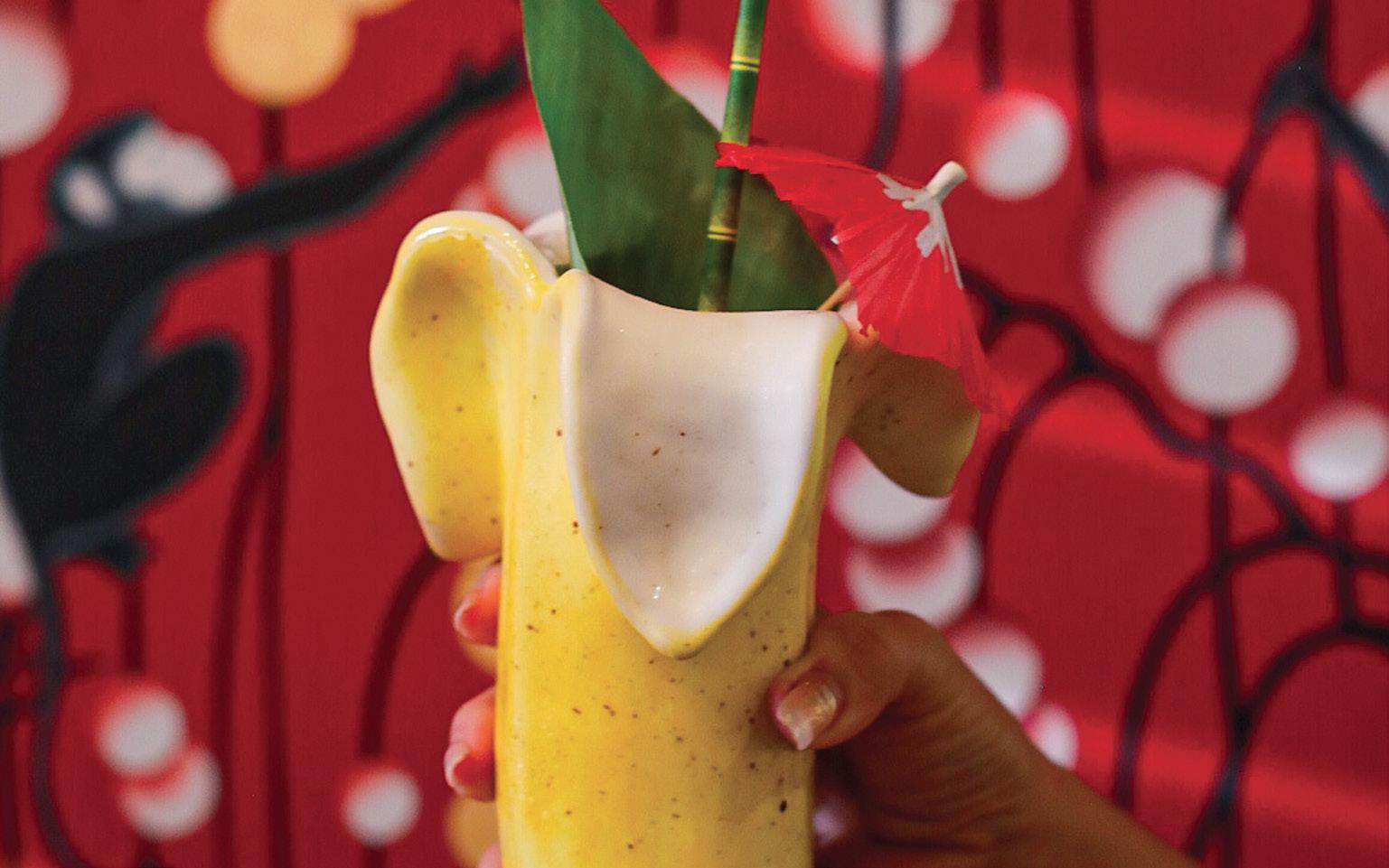

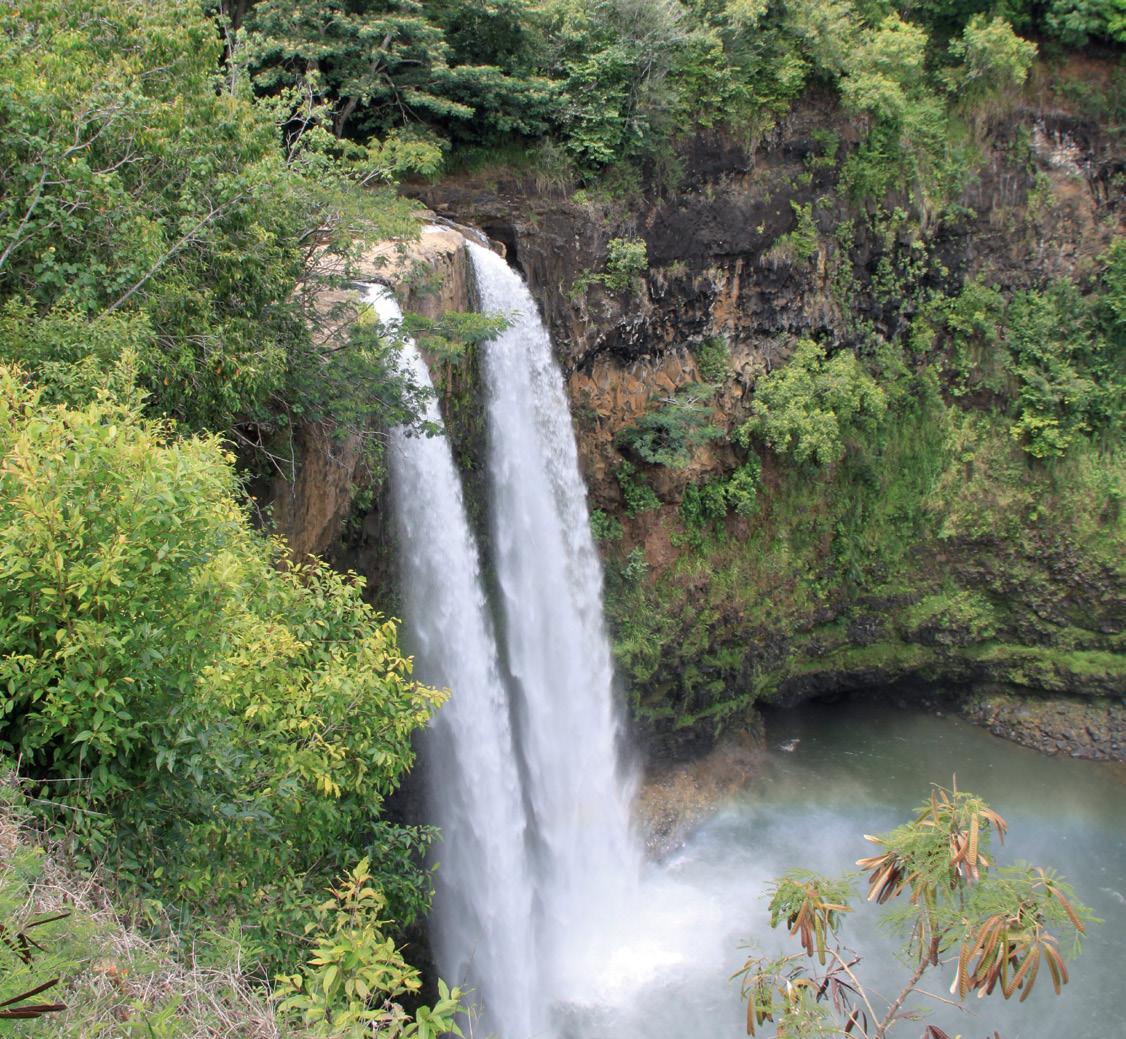
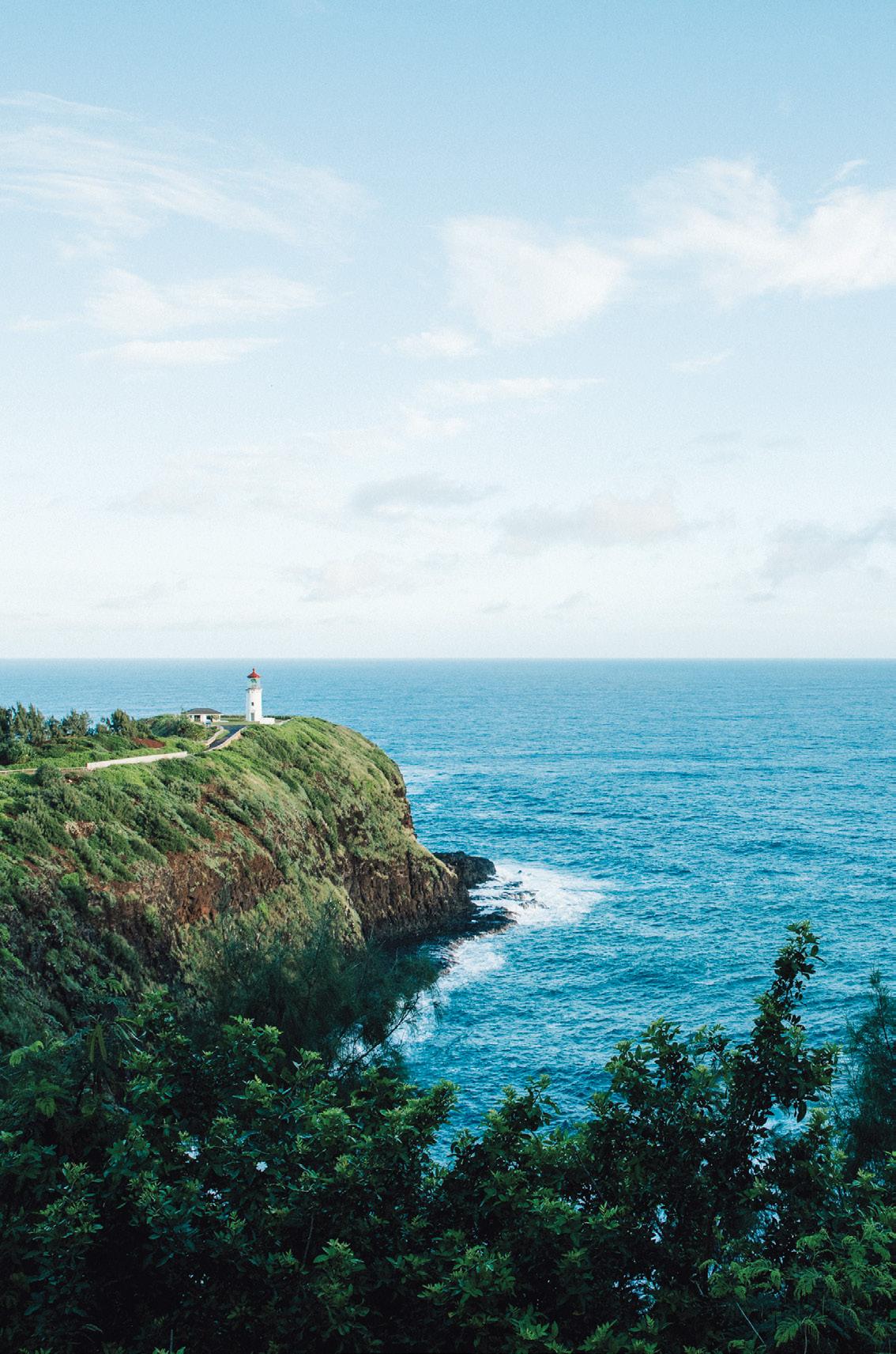
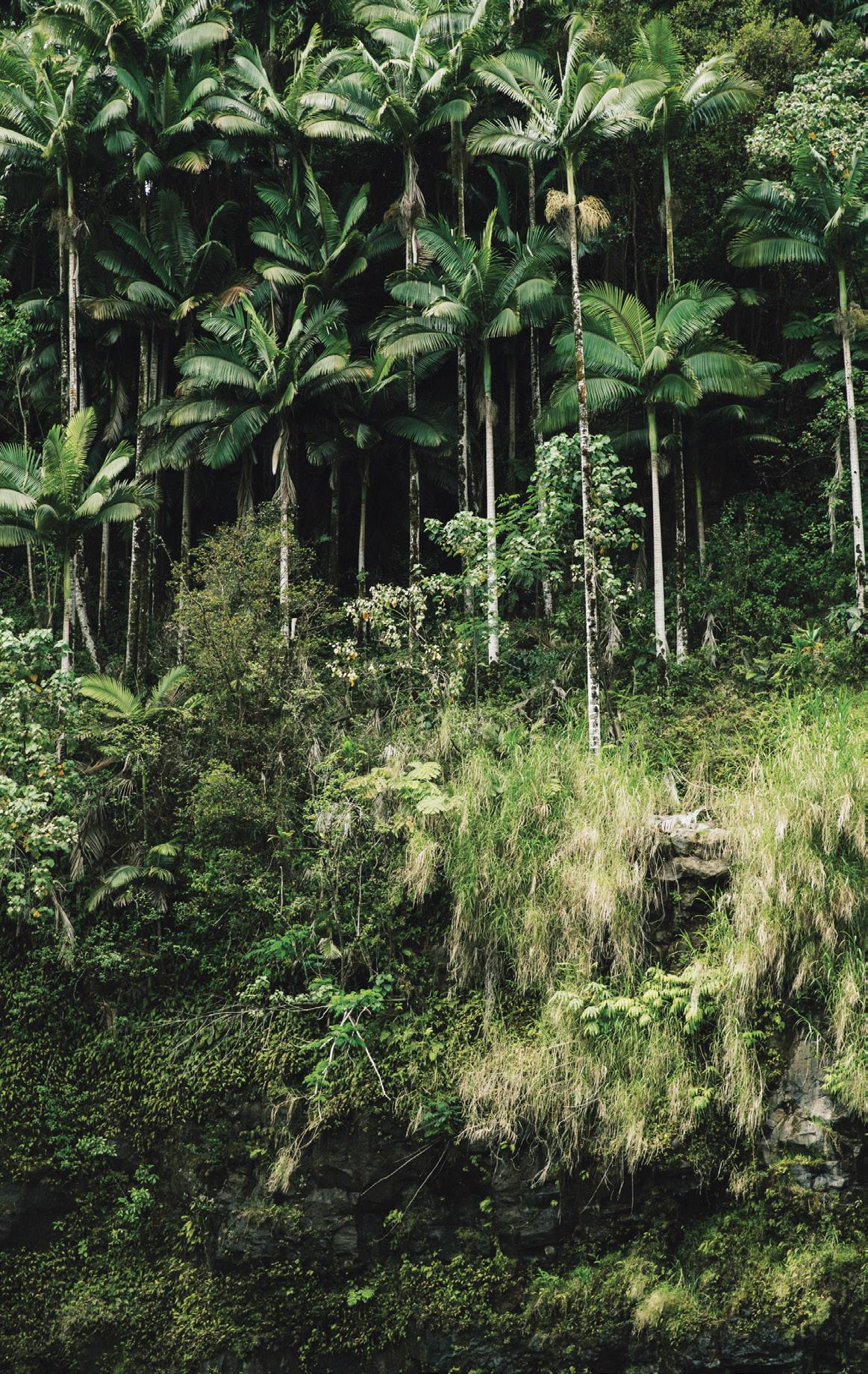
For an up-close look at other notable TV and film sites, Roberts Hawaii’s “Hawaii Movie Tour” takes visitors on a minibus excursion to a number of attractions, including the gushing 173-foot Wailua Falls, featured in the opening credits of Fantasy Island; the Kilauea Lighthouse Lookout in Disney’s Lilo & Stitch; the golden-sand Hanamaulu Beach in Six Days and Seven Nights; and Hanalei Pier, where South Pacific was filmed.
For a convenient, affordable way to take in as many sights as possible, check out Waikiki Trolley’s Blue Line trolley, which makes stops at the Duke Kahanamoku Statue (of an Olympic surfer who starred in Hollywood films from the ’20s to the ’50s), Sea Life Park (where Adam Sandler worked in 50 First Dates), and Halona Blowhole (seen in the Burt Lancaster classic From Here to Eternity).


Travelshoot connects travellers to local photographers in more than 100 destinations globally. Capture extraordinary holiday memories in the best hidden spots as well as within resorts and villas – the
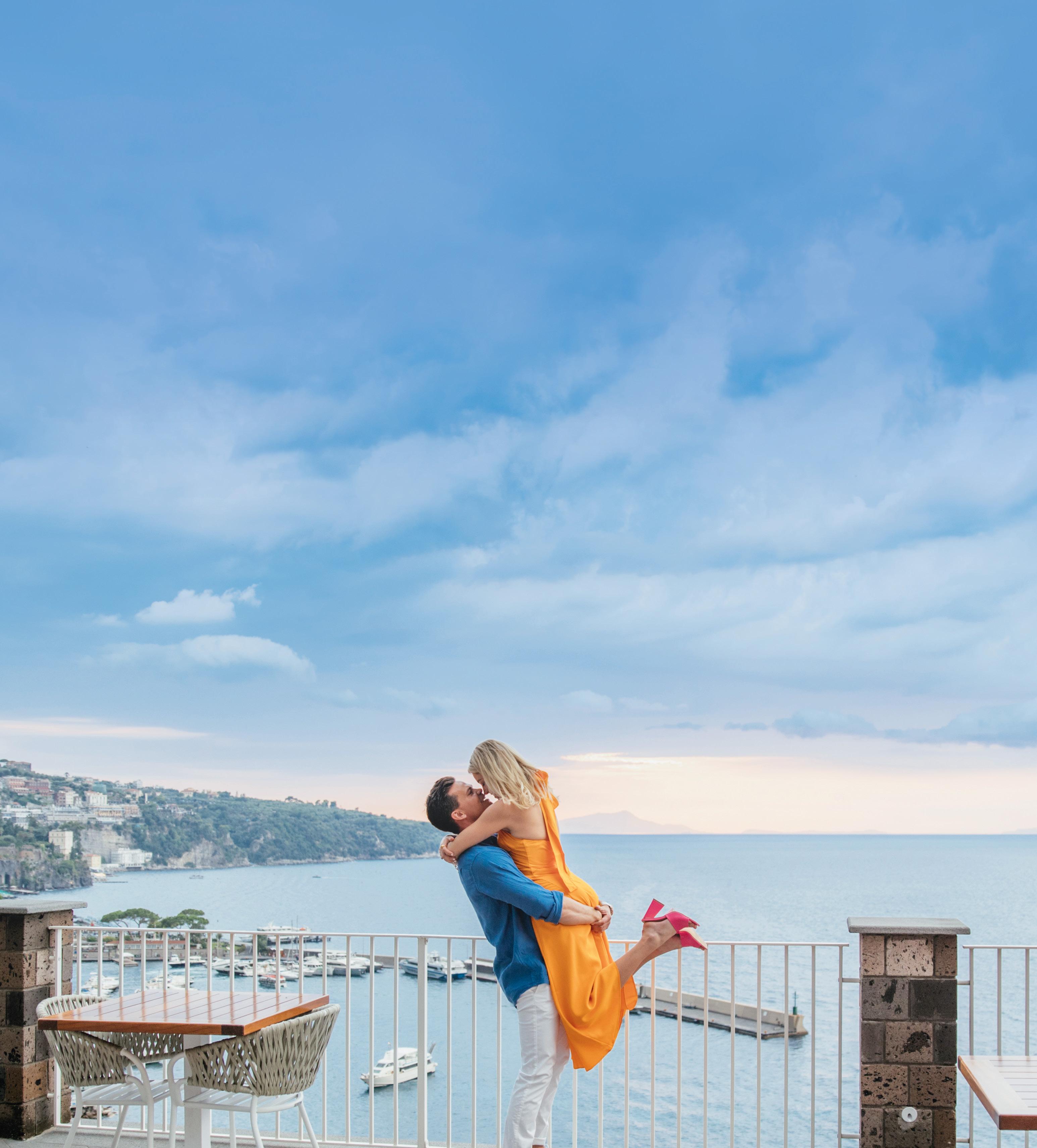
BLISS: Insulated drink bottle, ESO: Crystal from ailand

Bliss: “This island beauty is from Punta Cana in the Caribbean, the most picturesque place on earth: white sands, turquoise water all day. In Punta Cana they have an allinclusive resort, however the bars only have tiny little cups for drinks. I got a big bad boy insulated bottle to walk straight up to that bar and get it filled it up with the most delicious cocktails. It now stays with me through all my touring and travels.”
Eso: “This crystal is a very, very special crystal to me. I go on trips to Thailand to explore all the islands, and when I went to one island, called Koh Samui, I found myself this crystal lying on the beach. I brought it home and it has brought me good luck ever since, so that lucky crystal stays with me wherever I go.”
Bliss N Eso’s new album The Moon (The Light Side) featuring their island-themed single Vacation is out now; blissneso.com.






